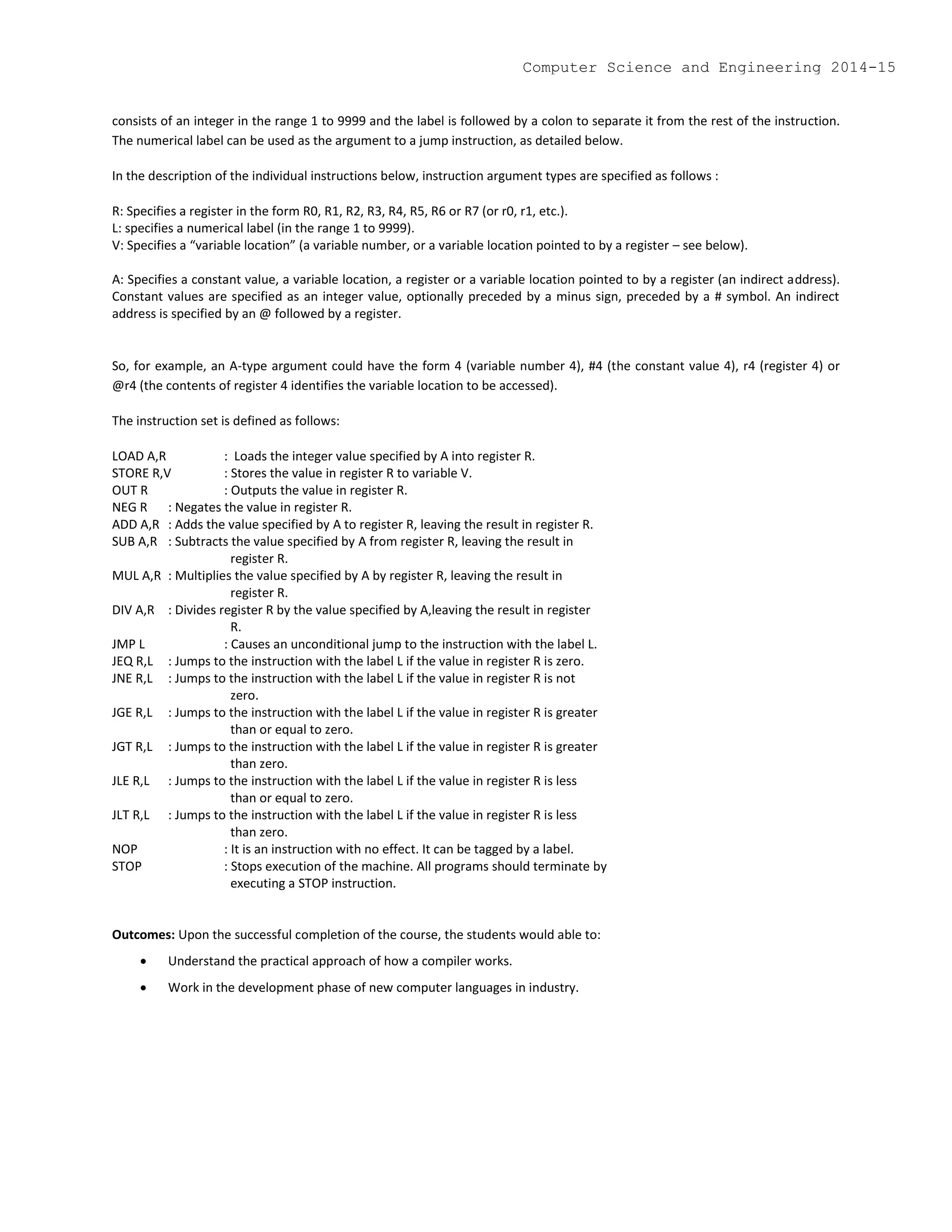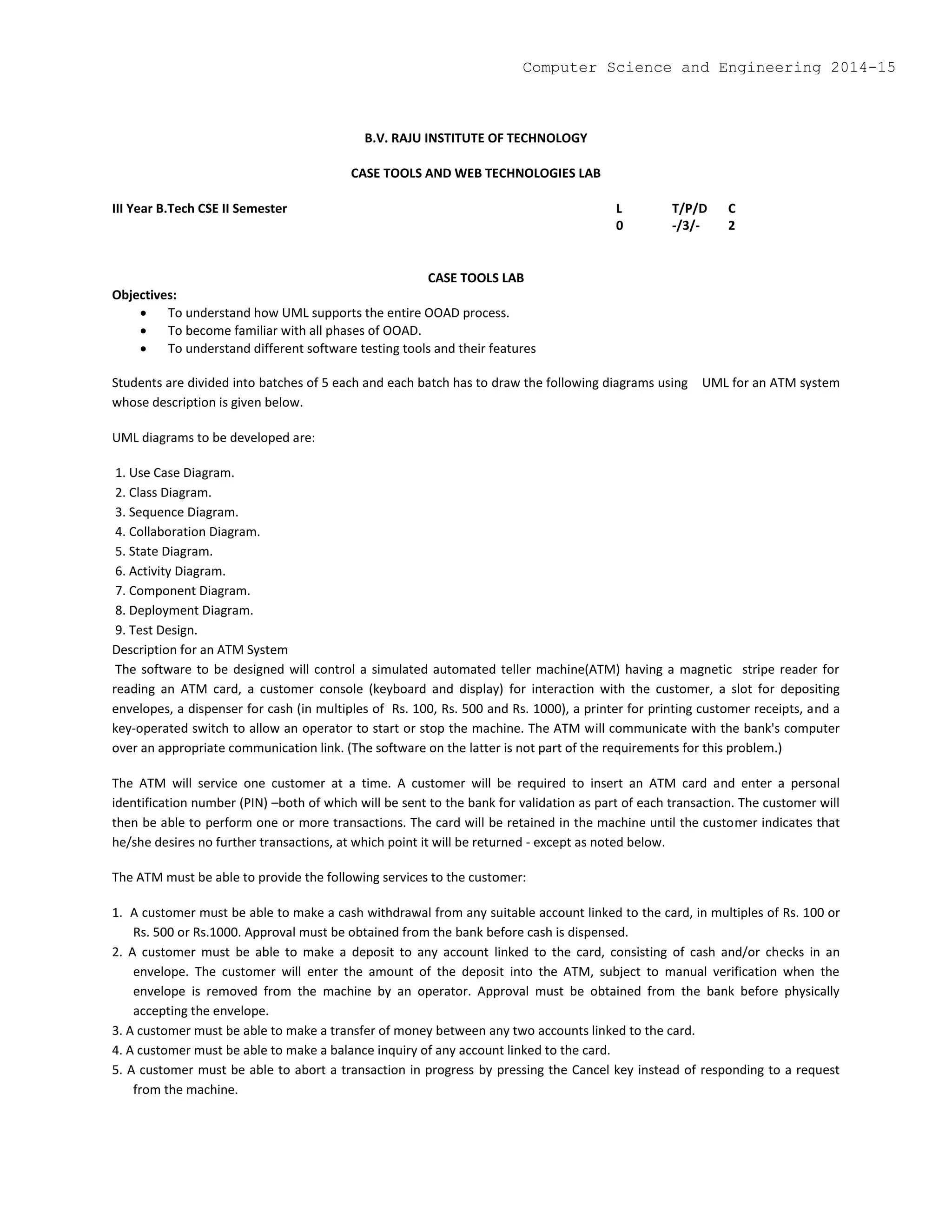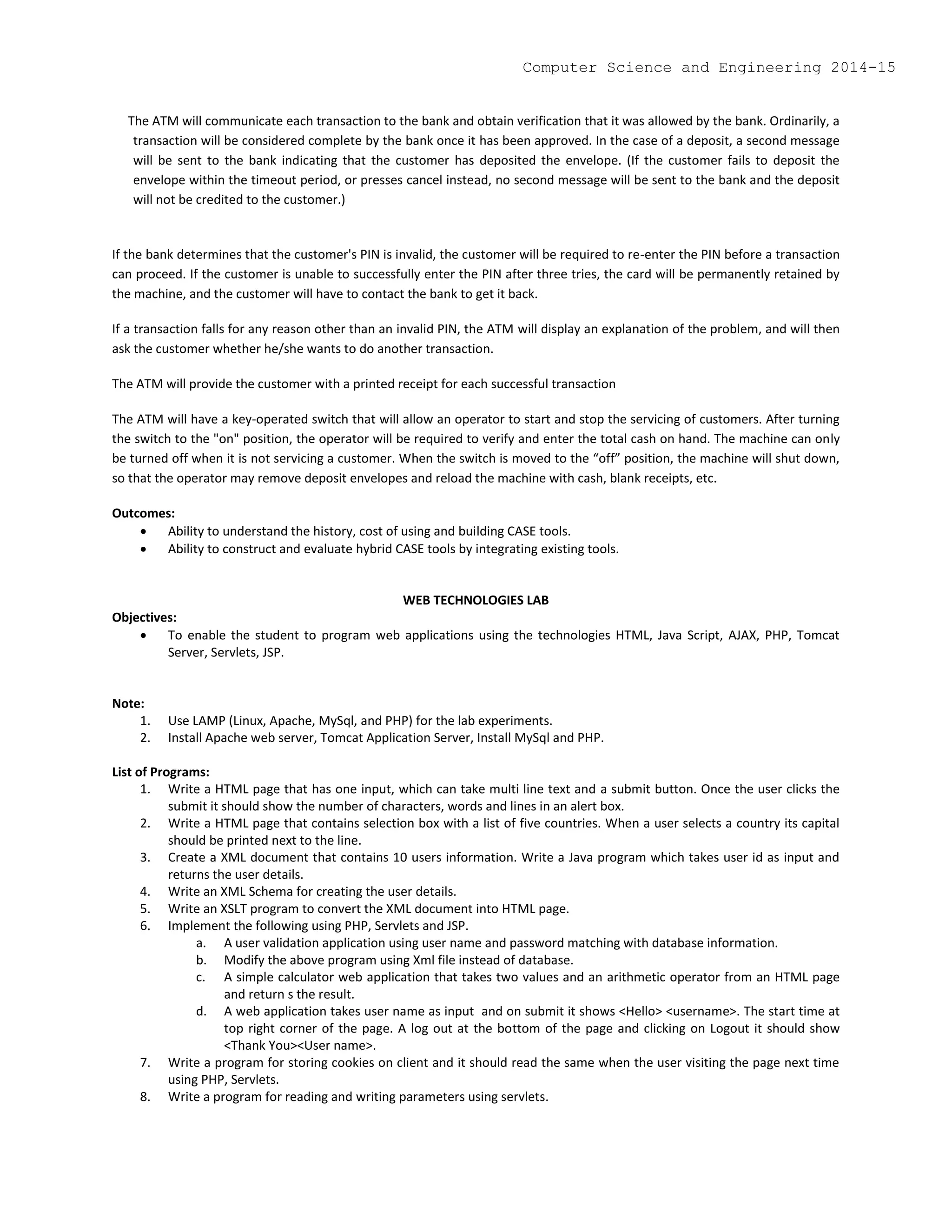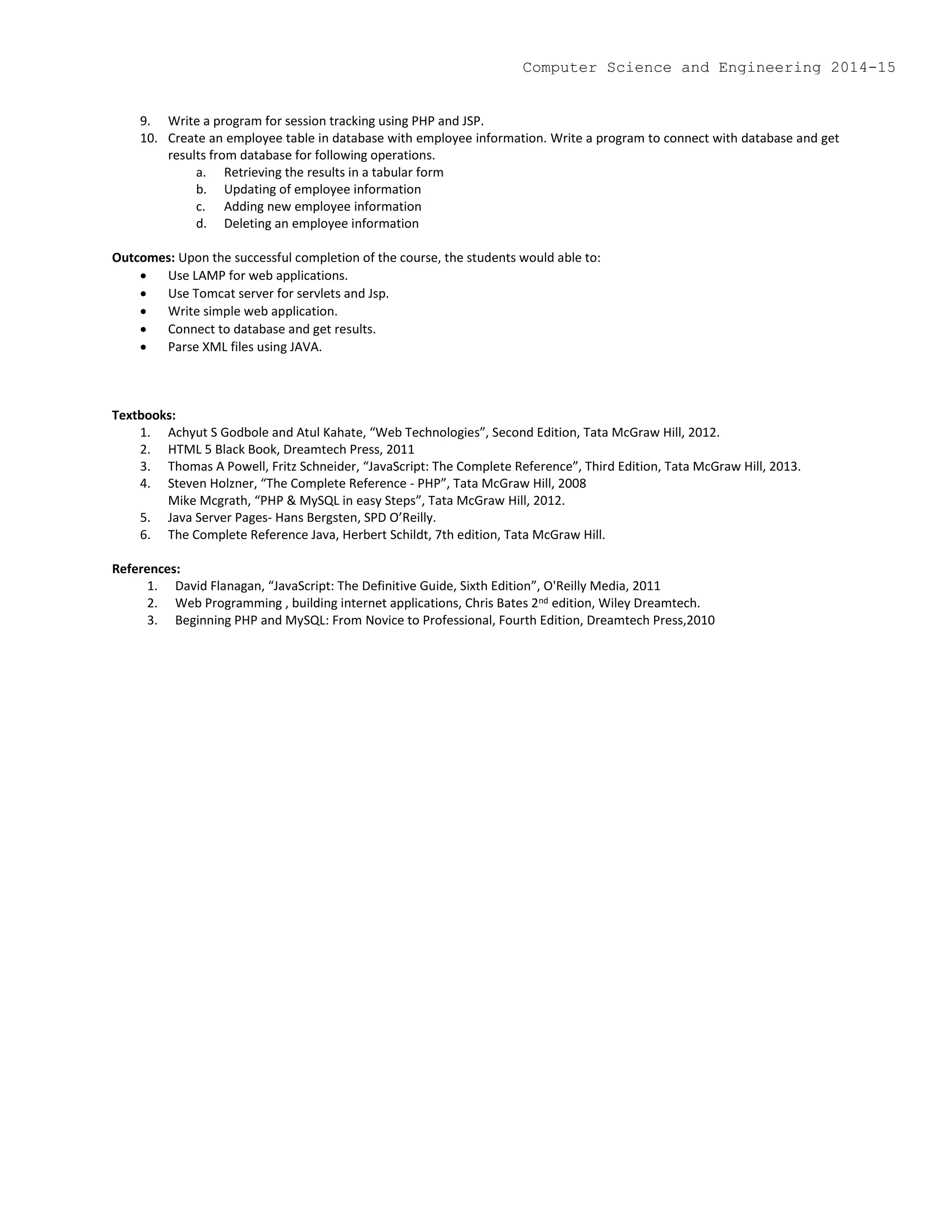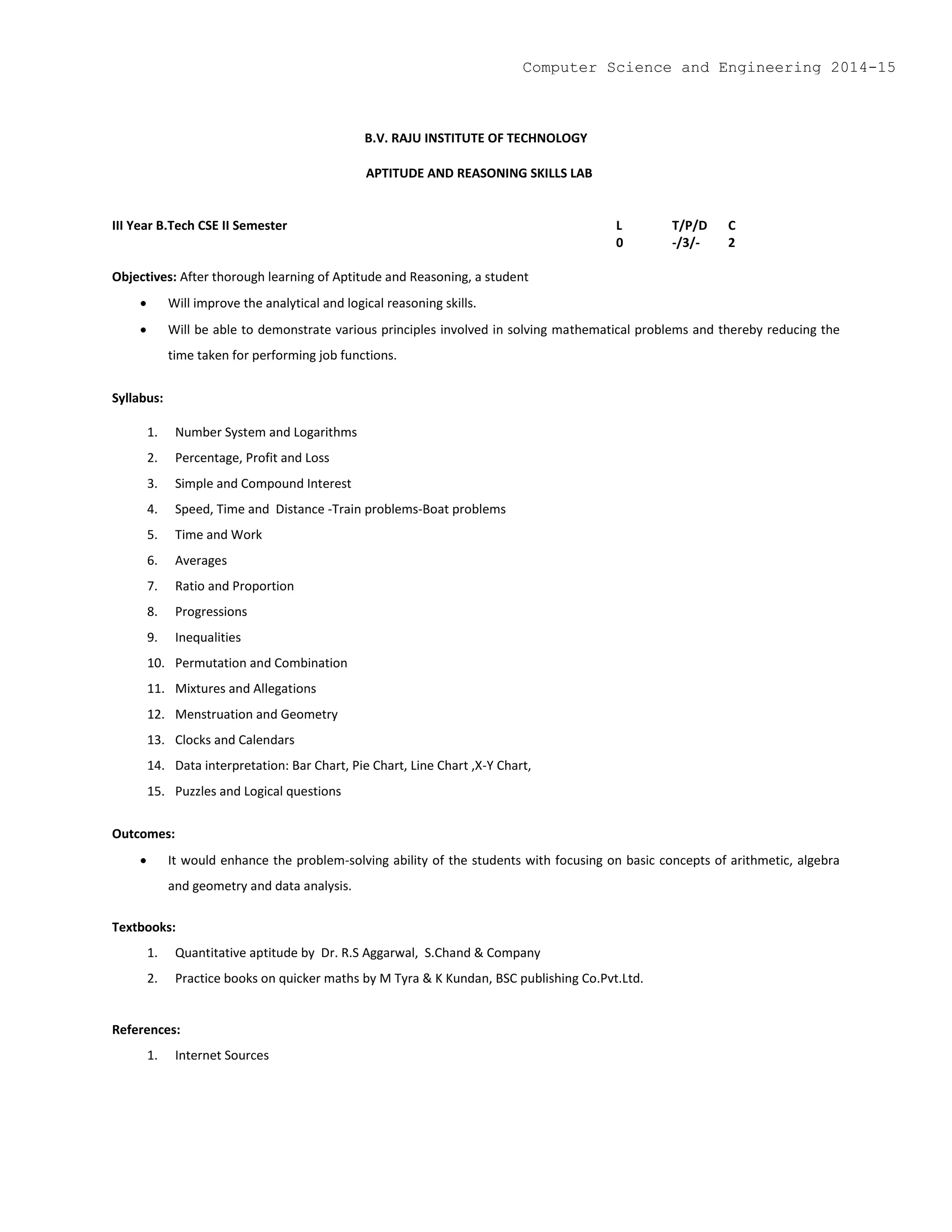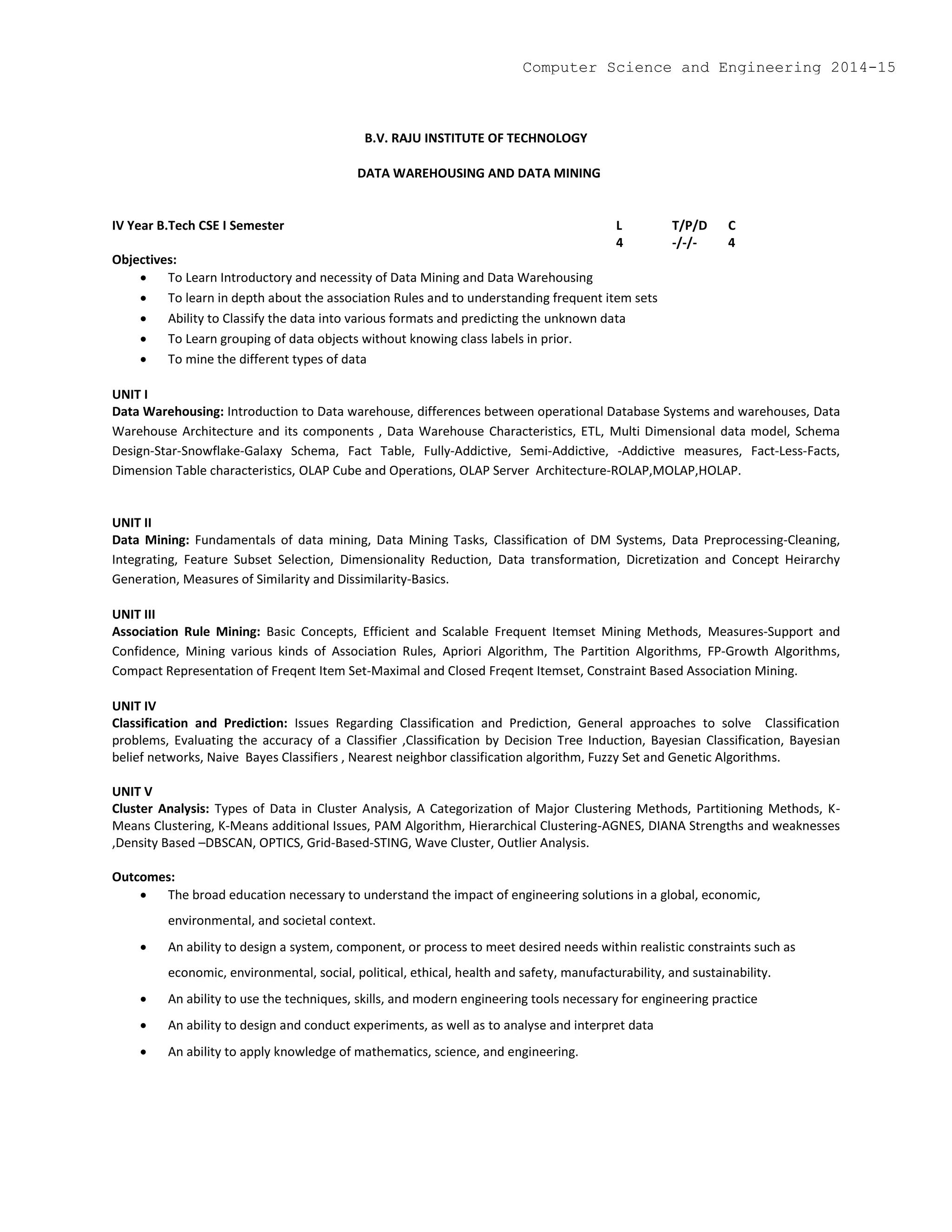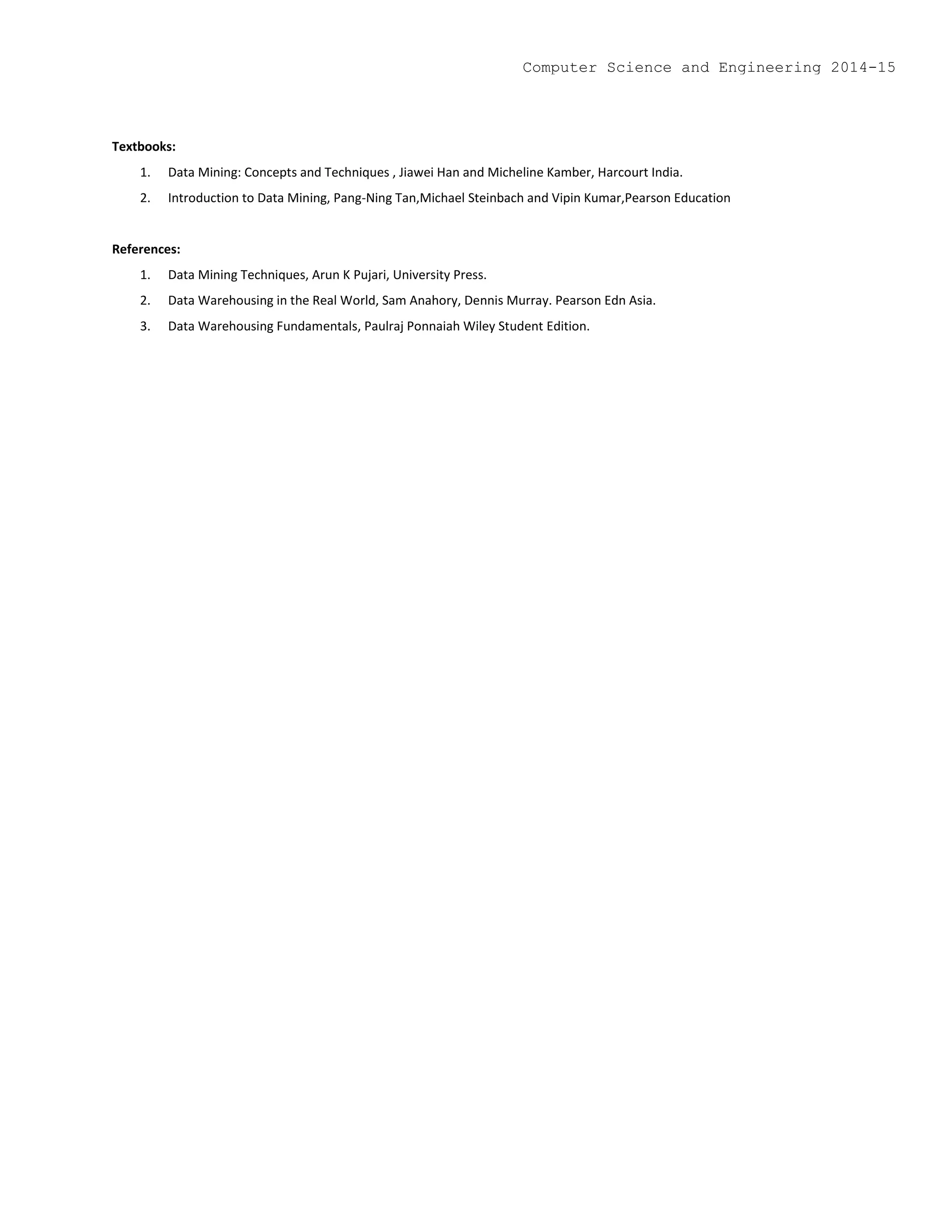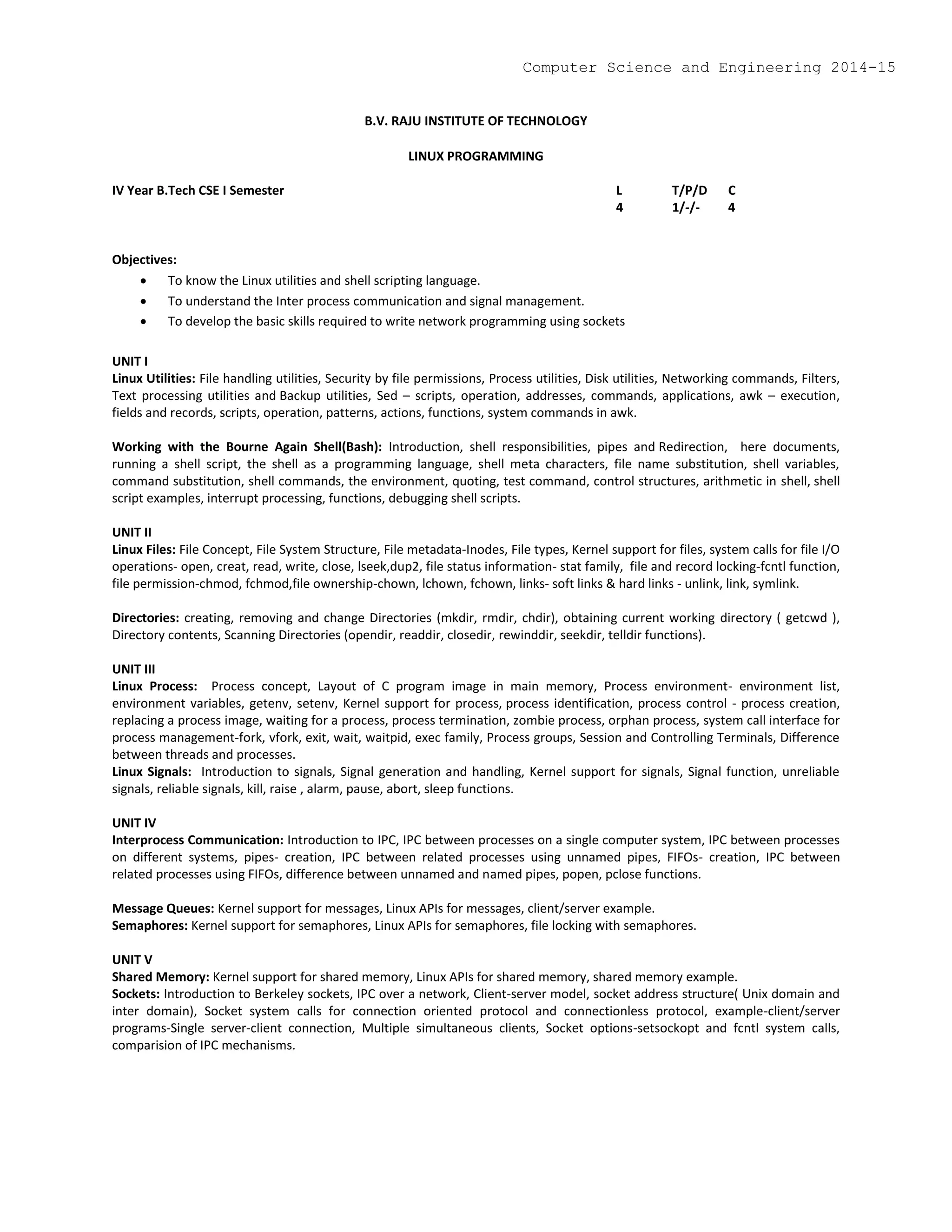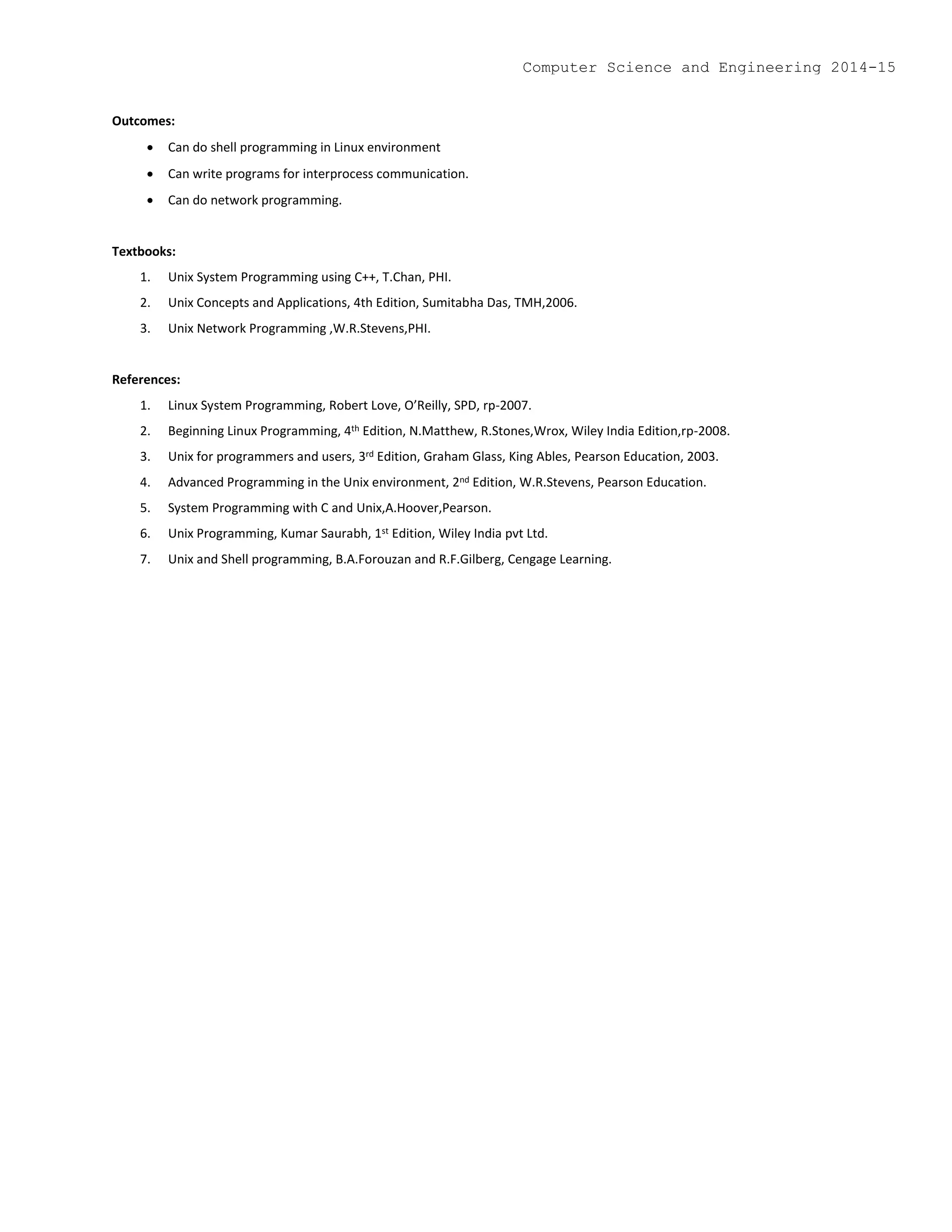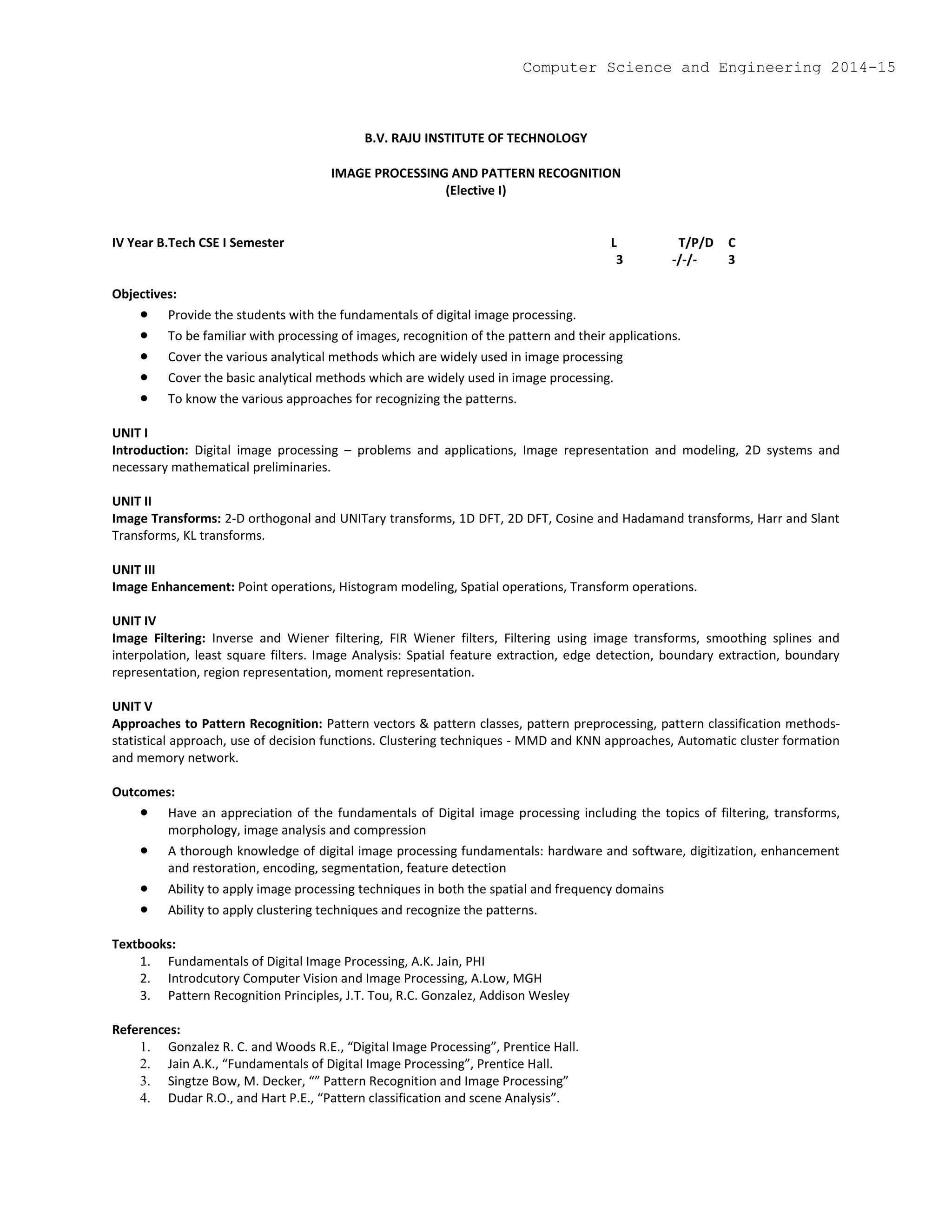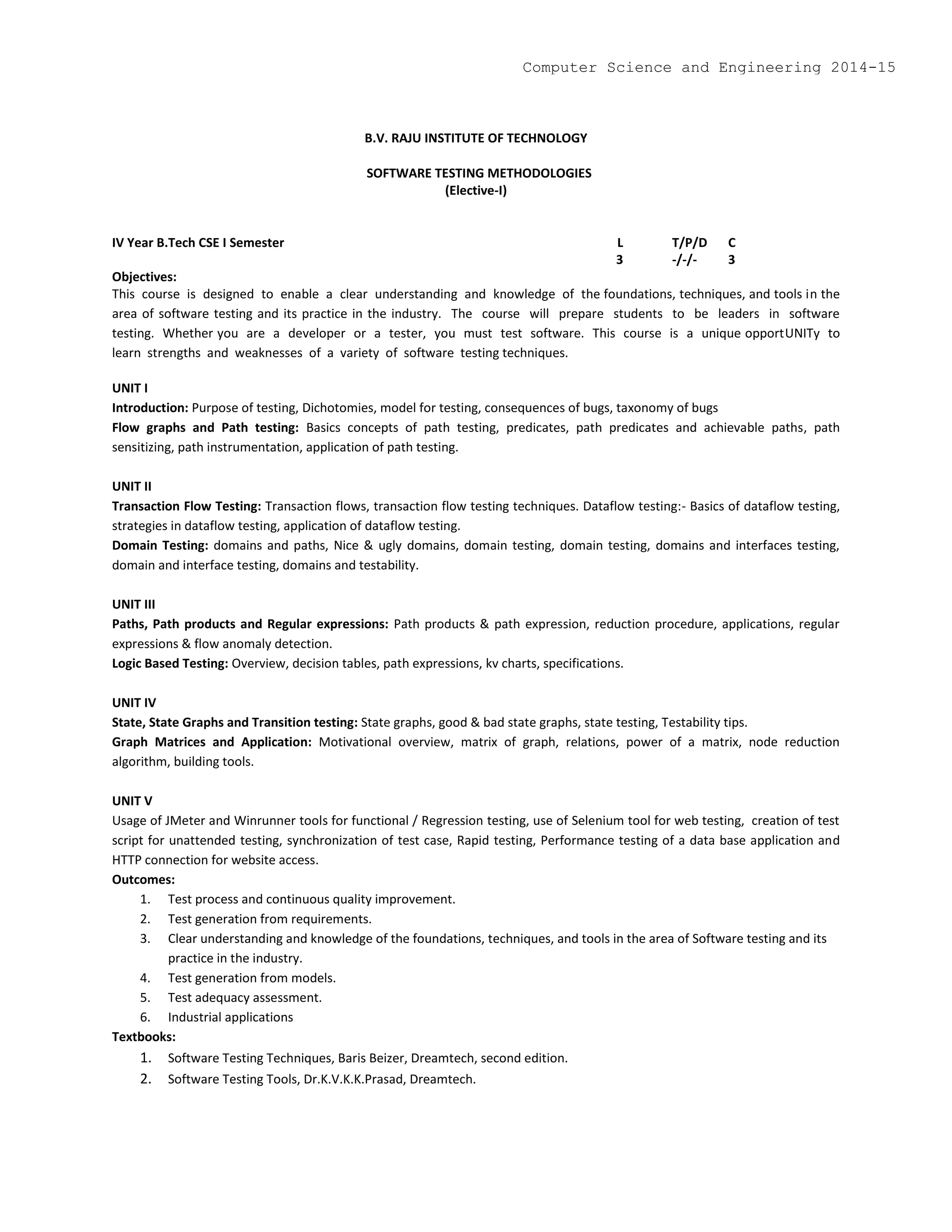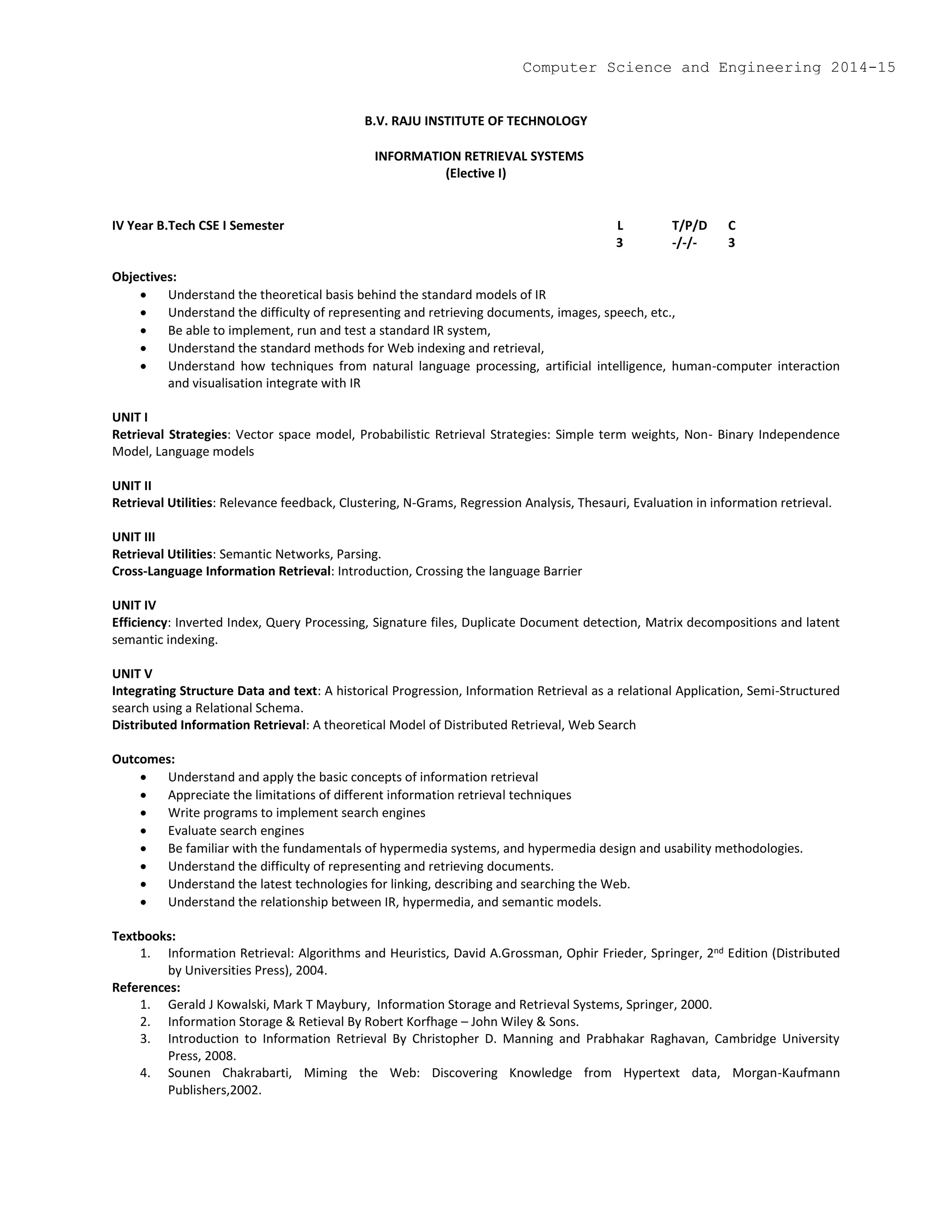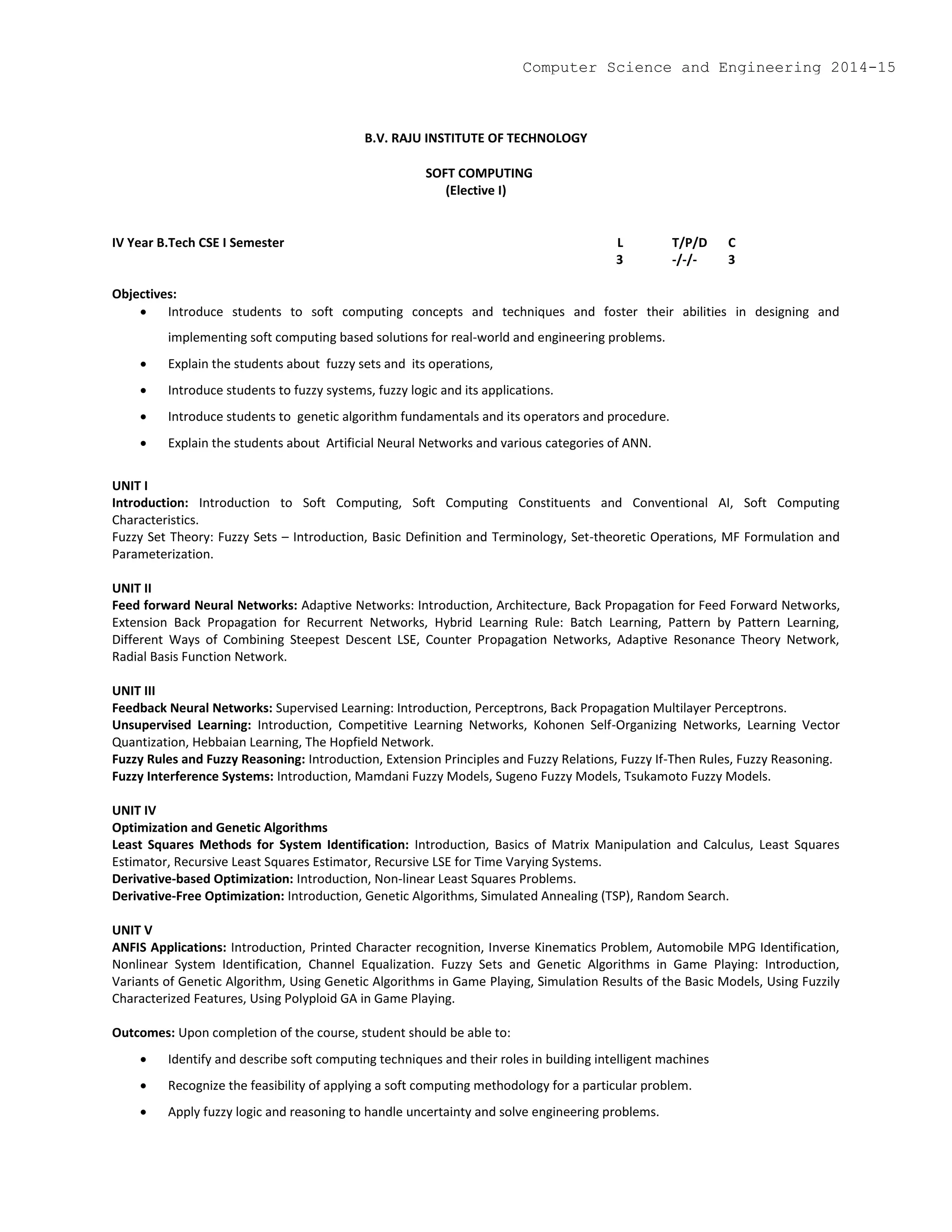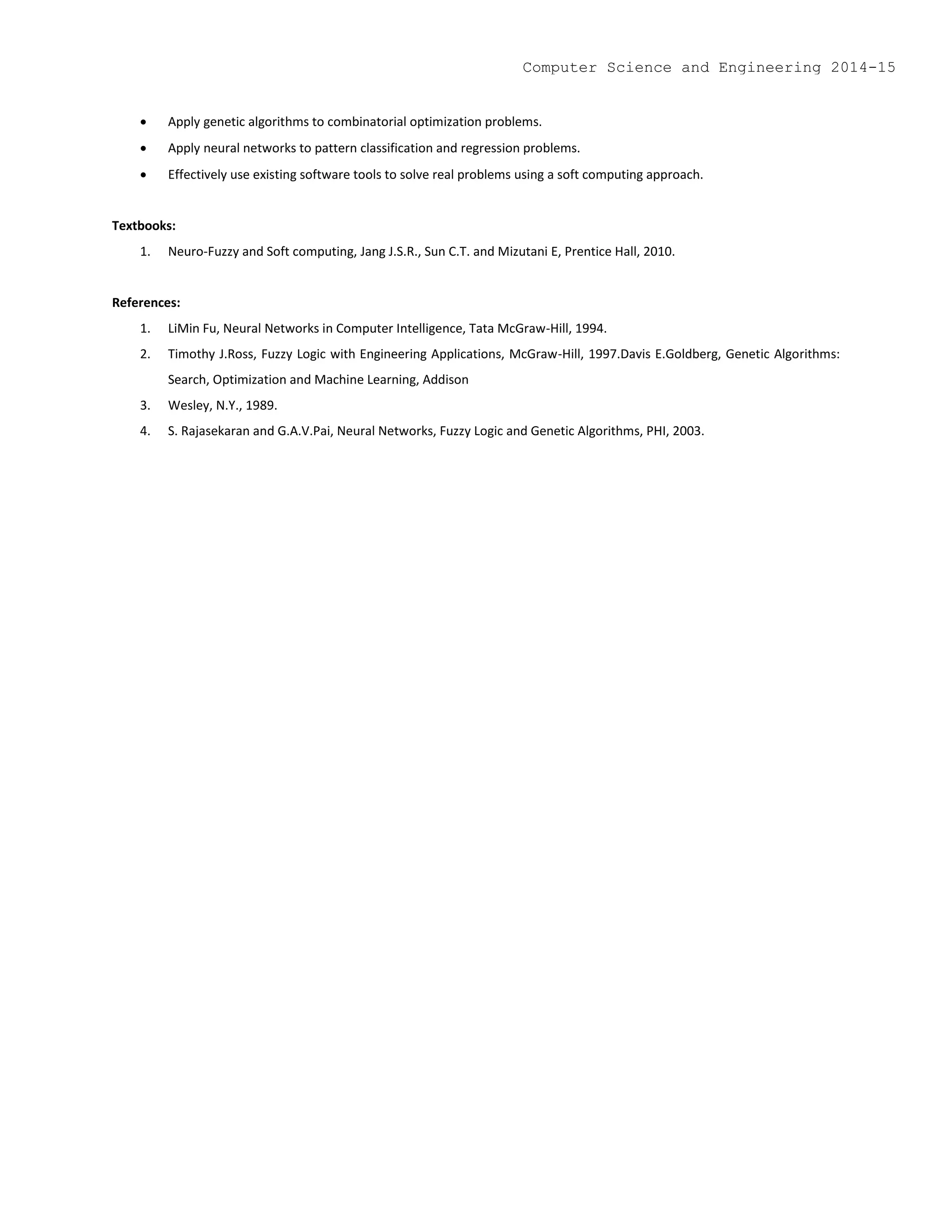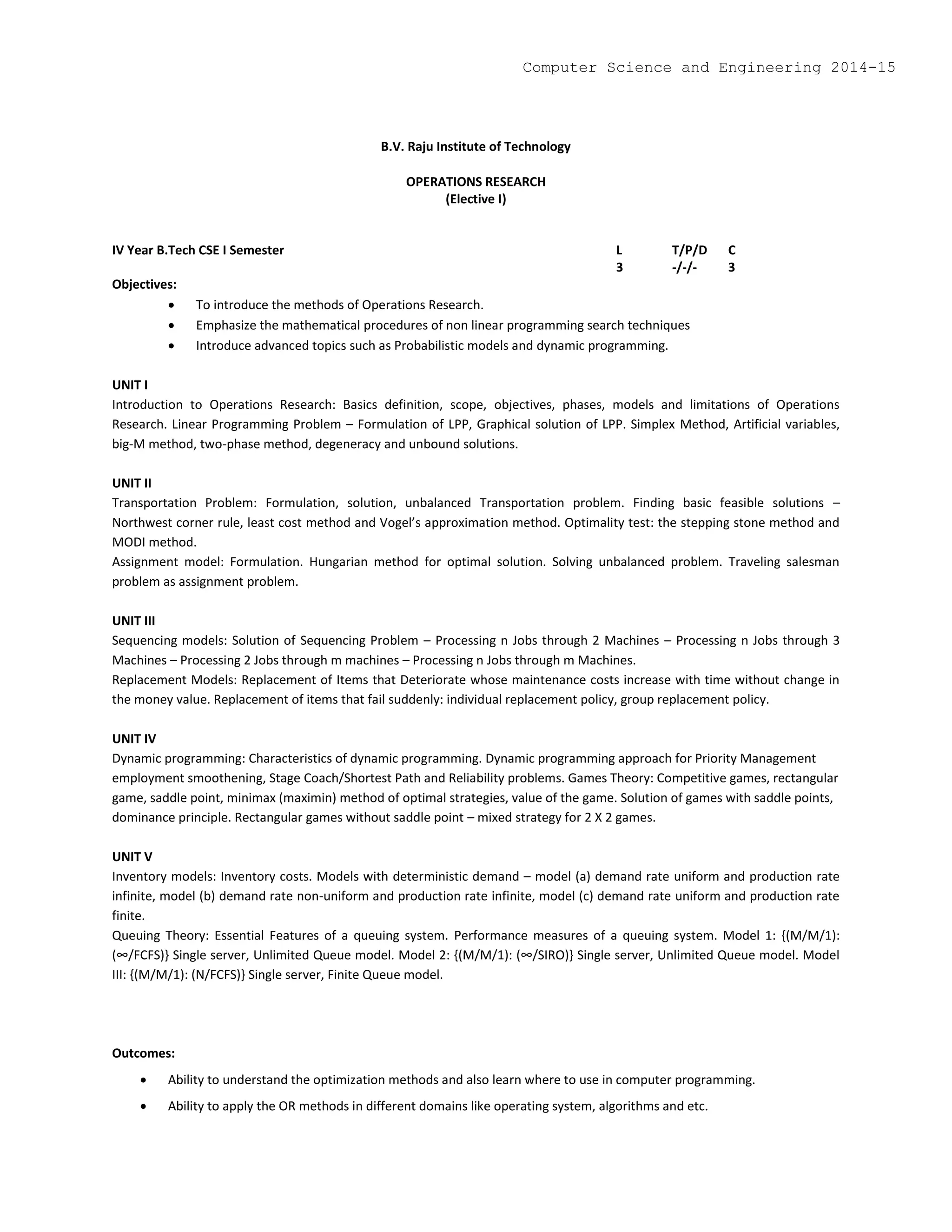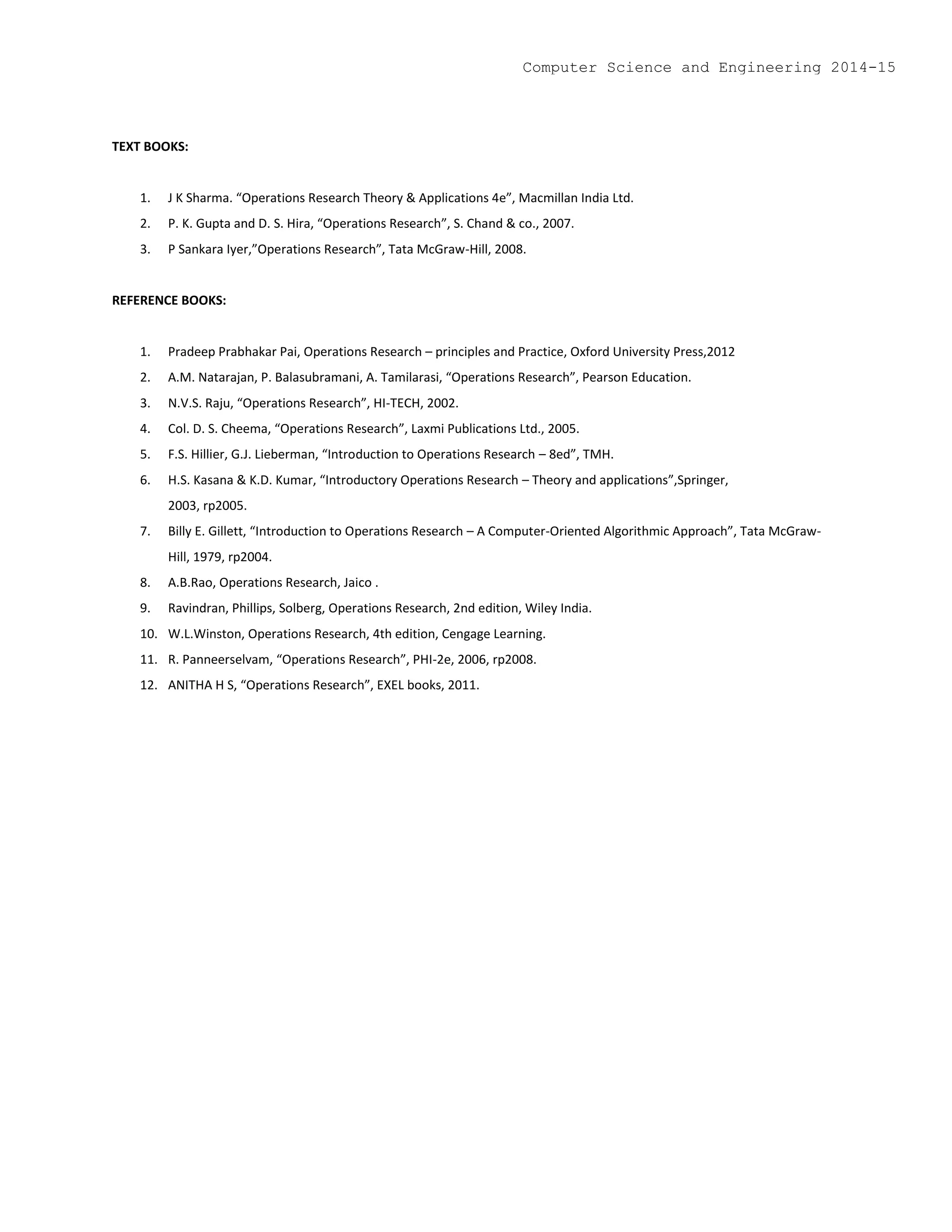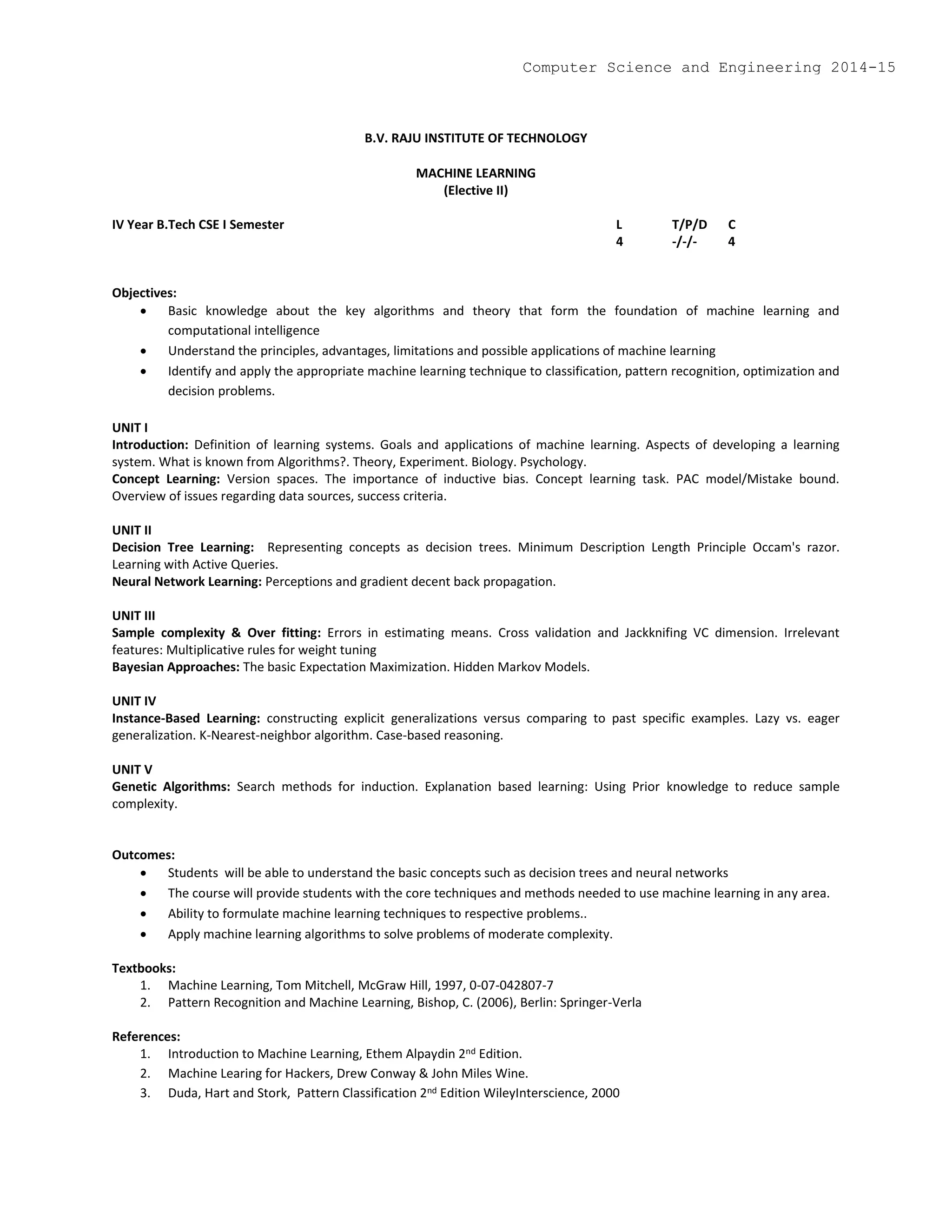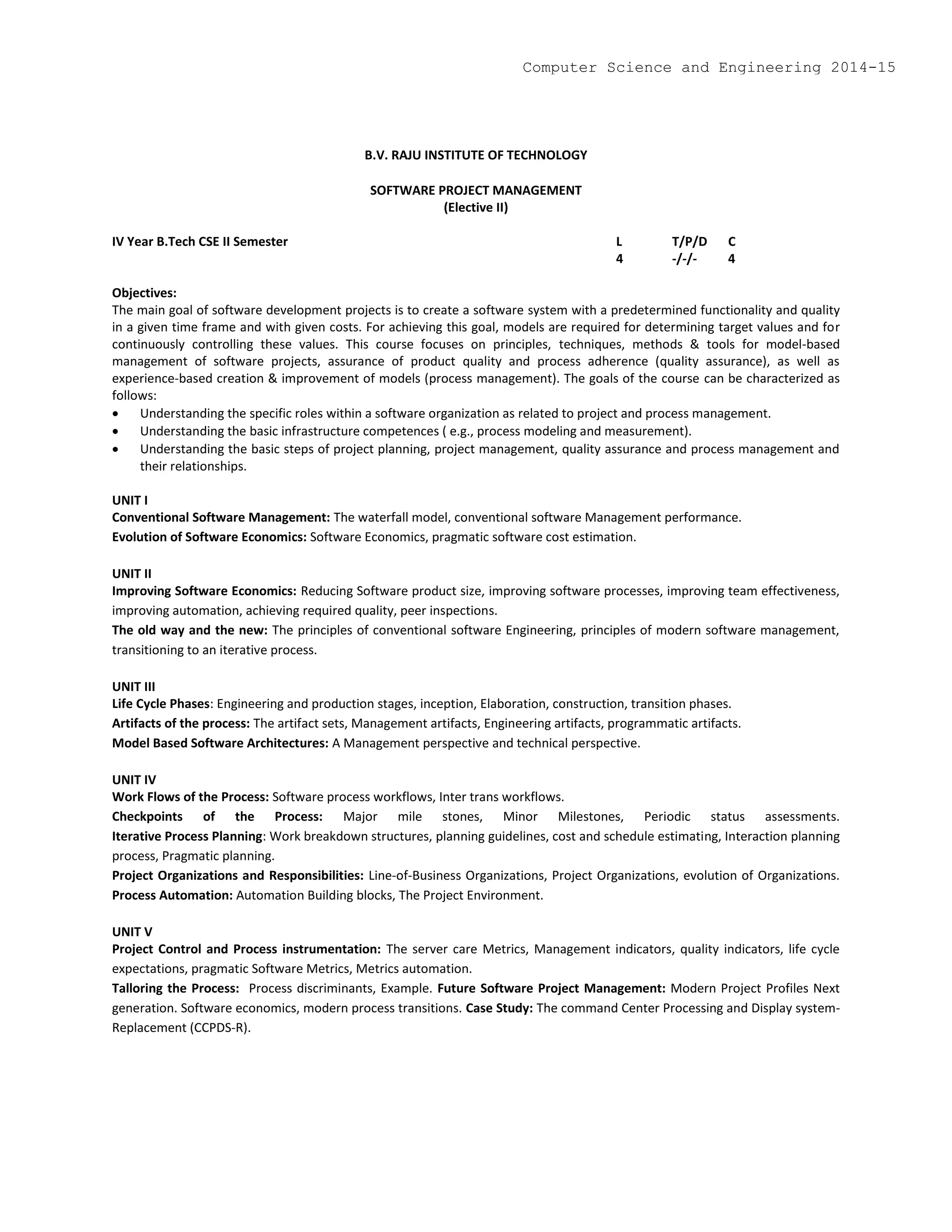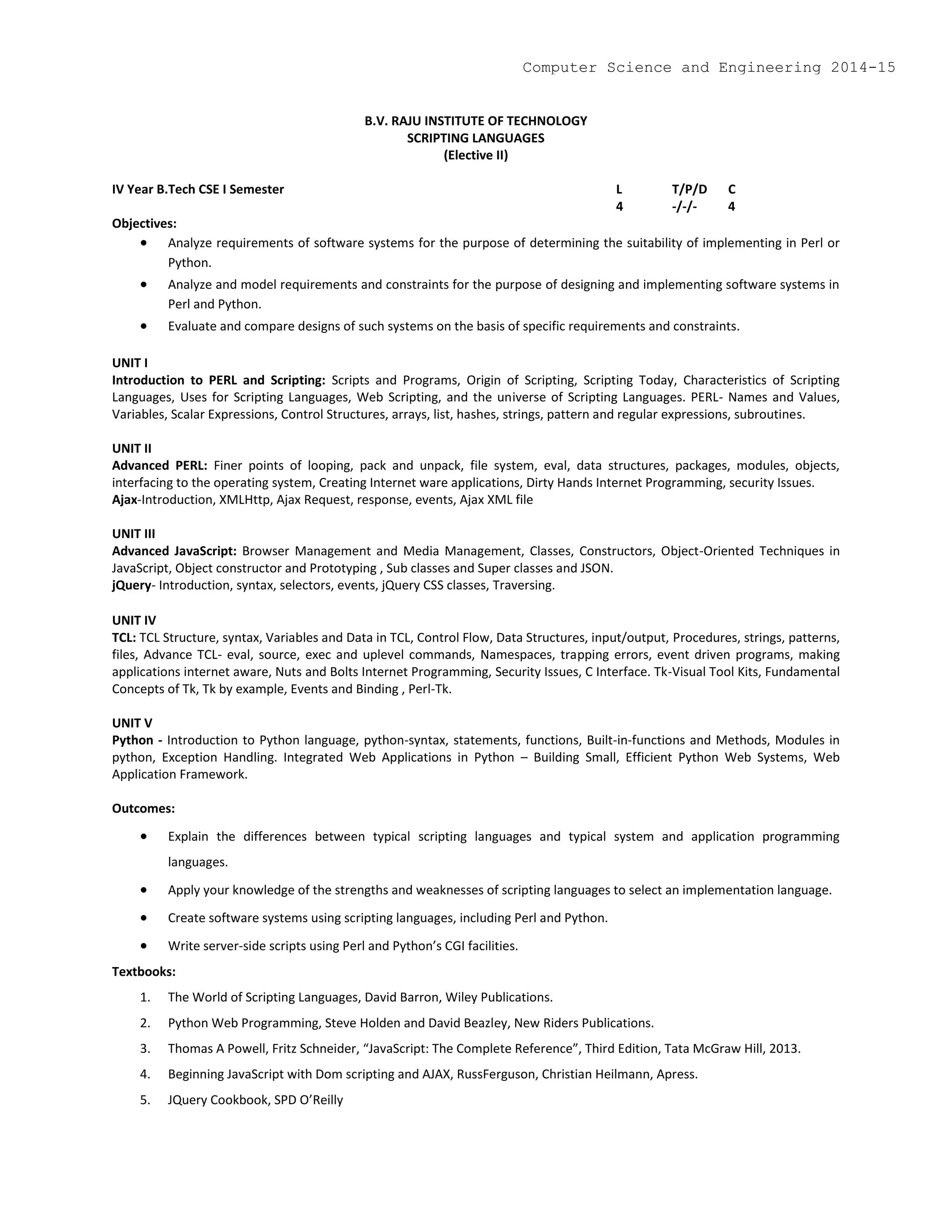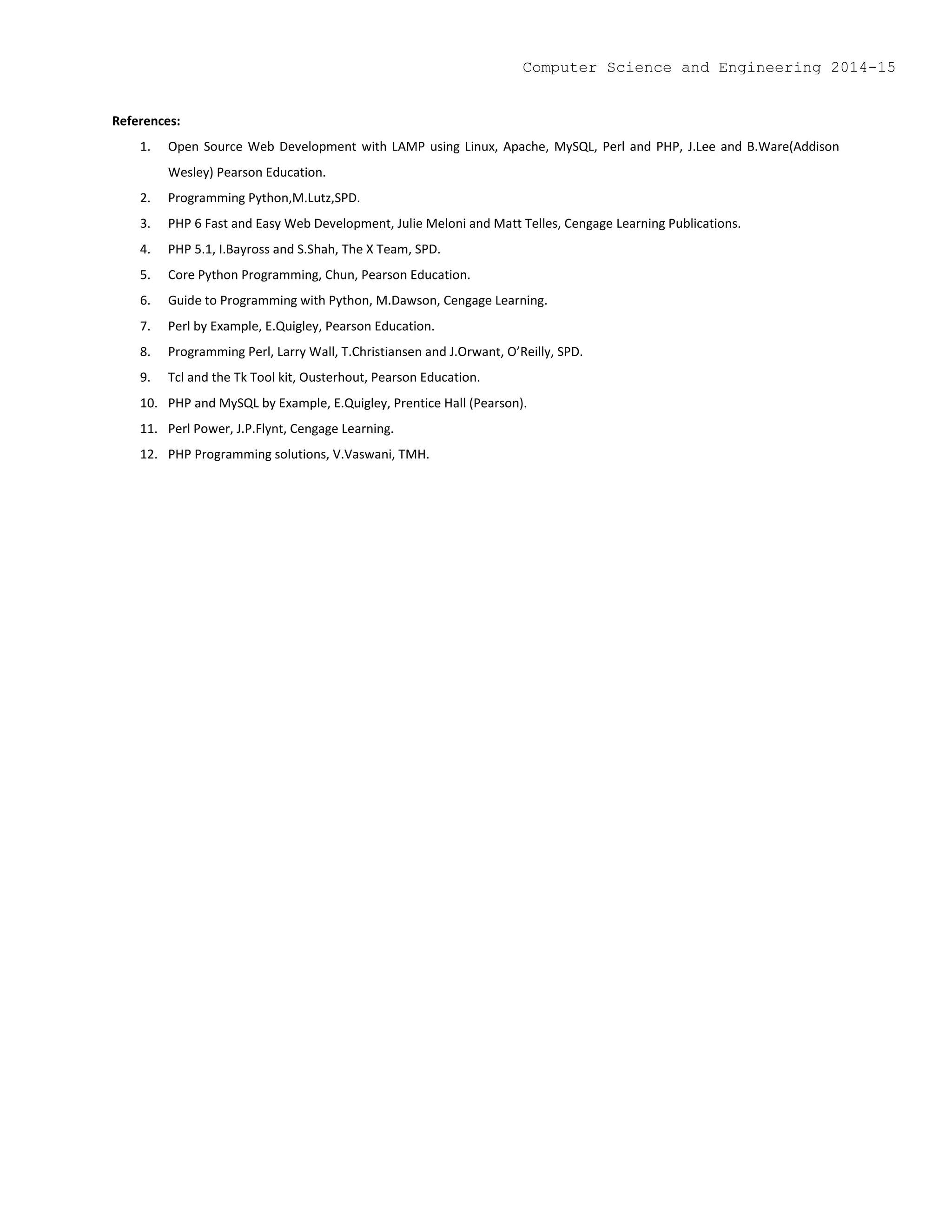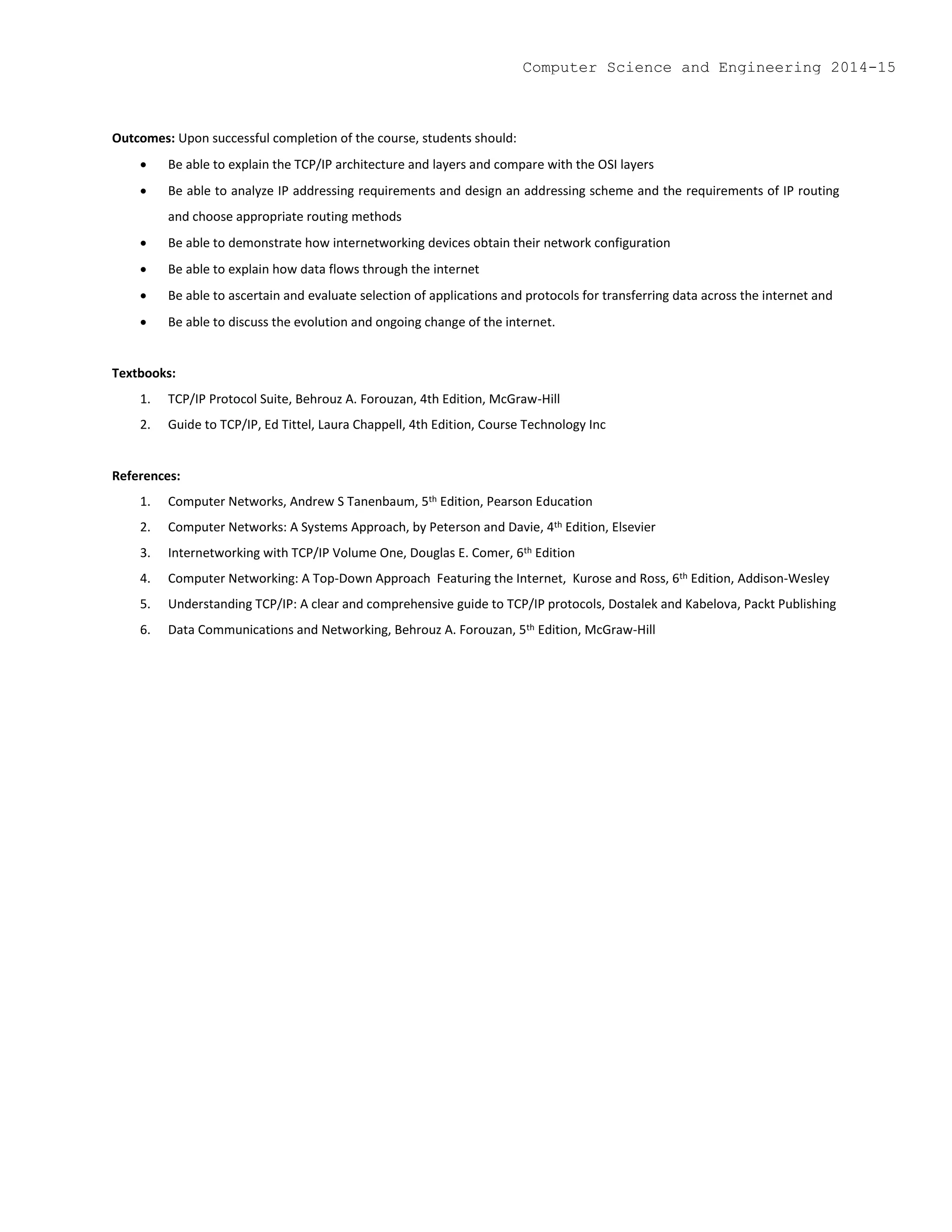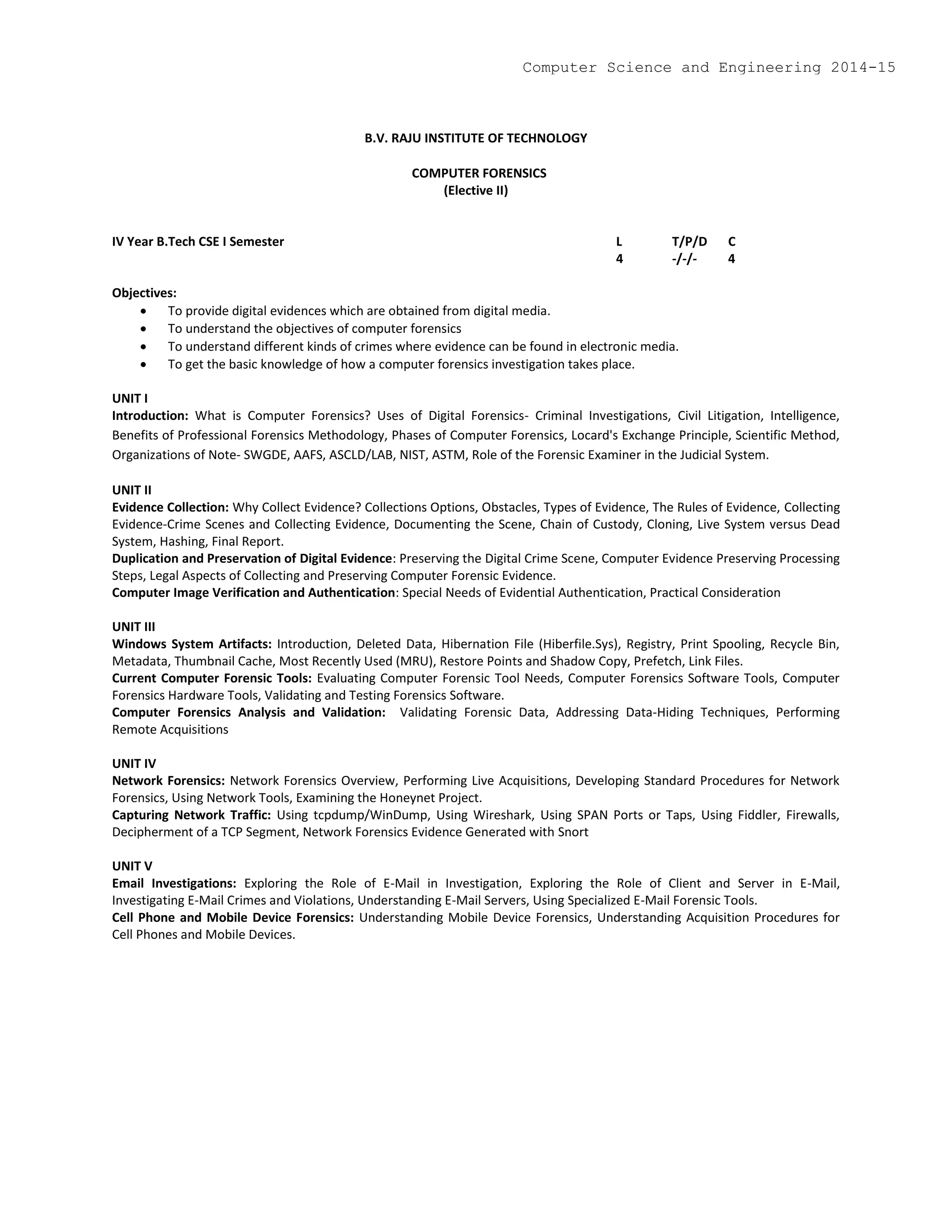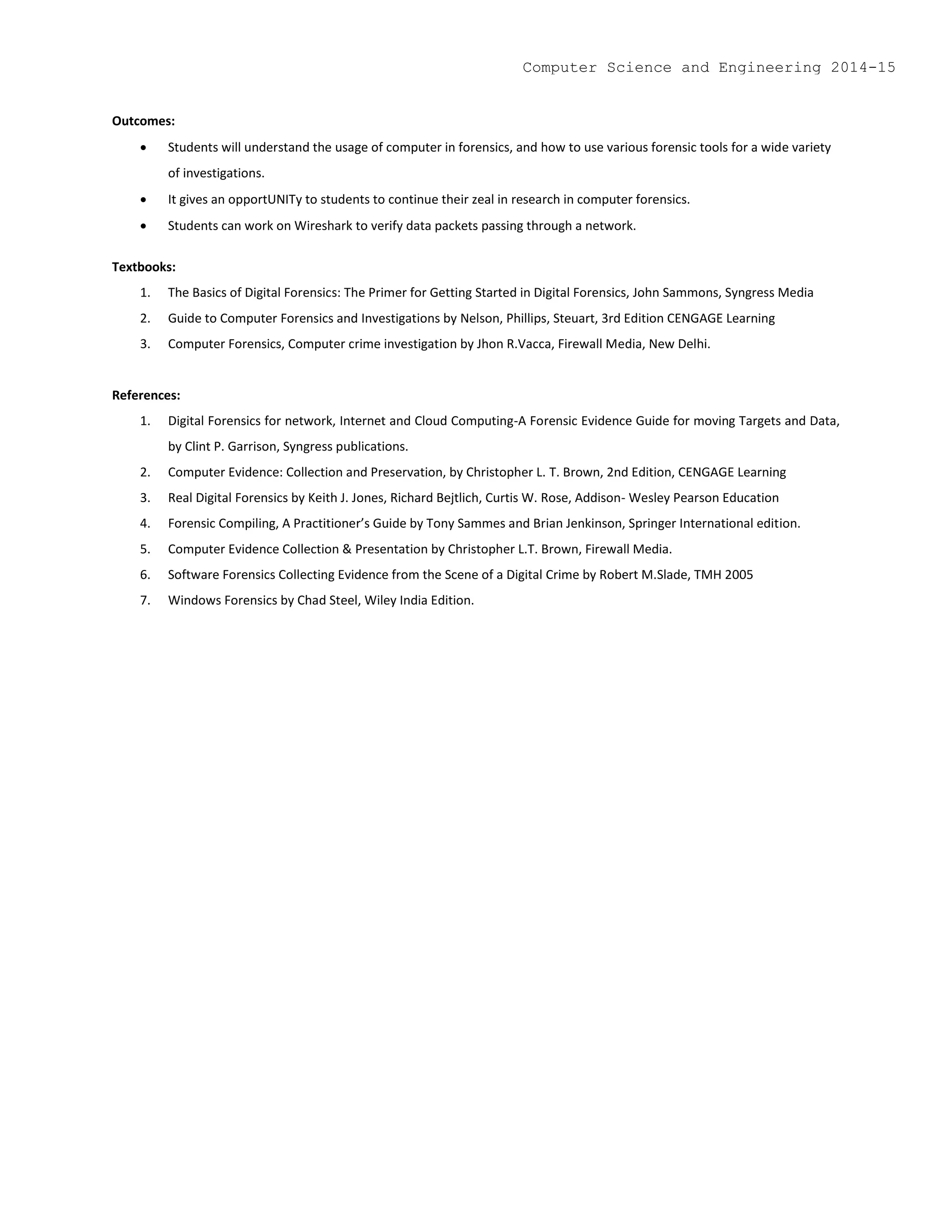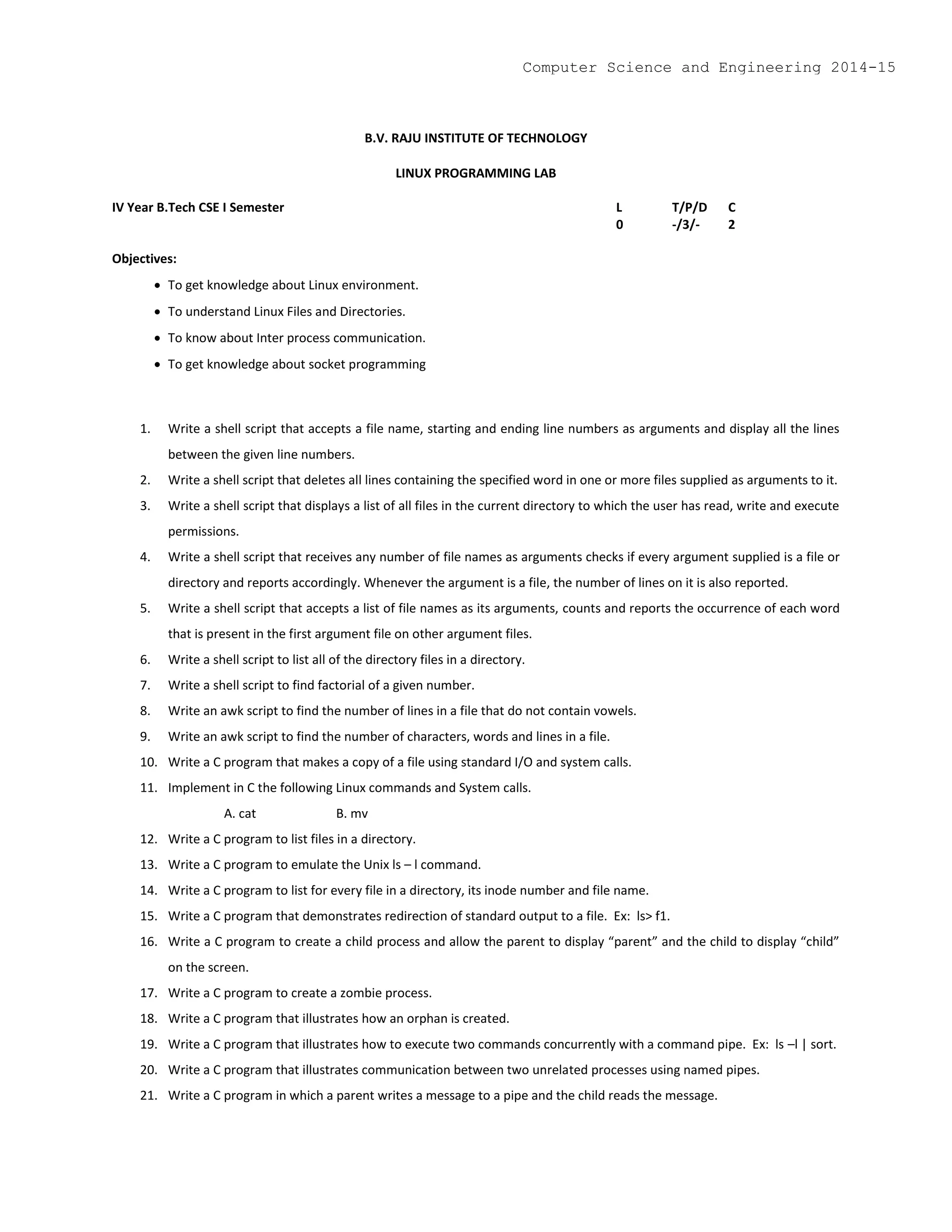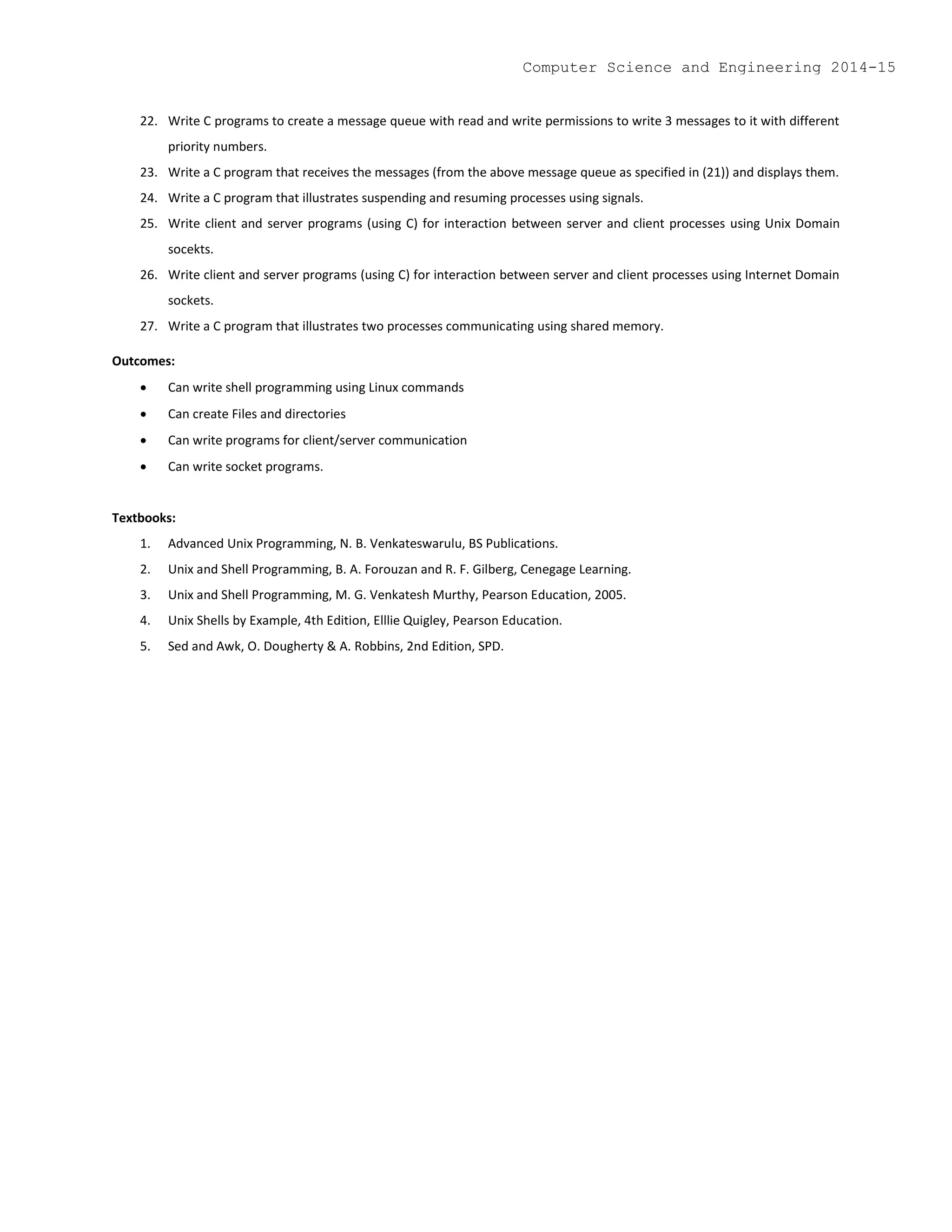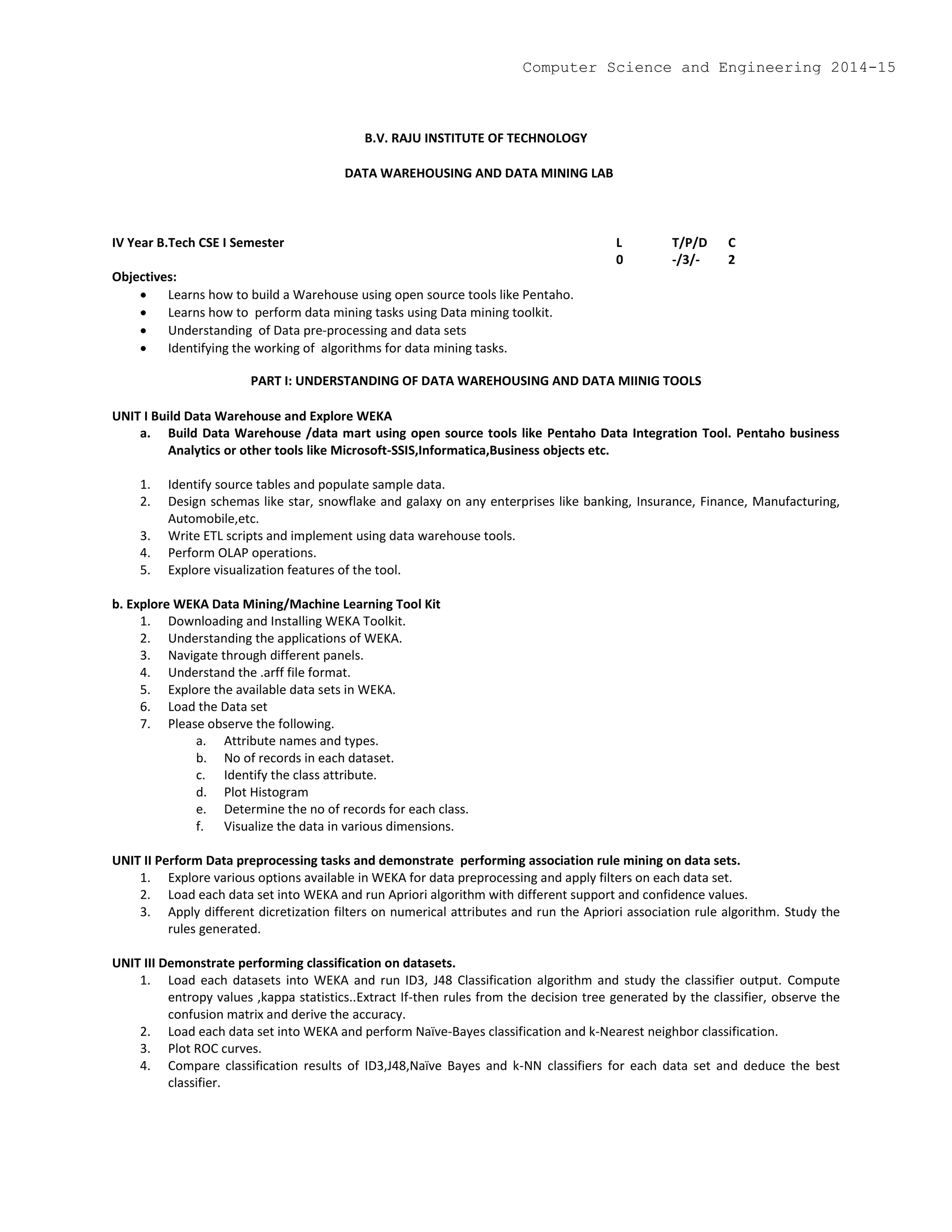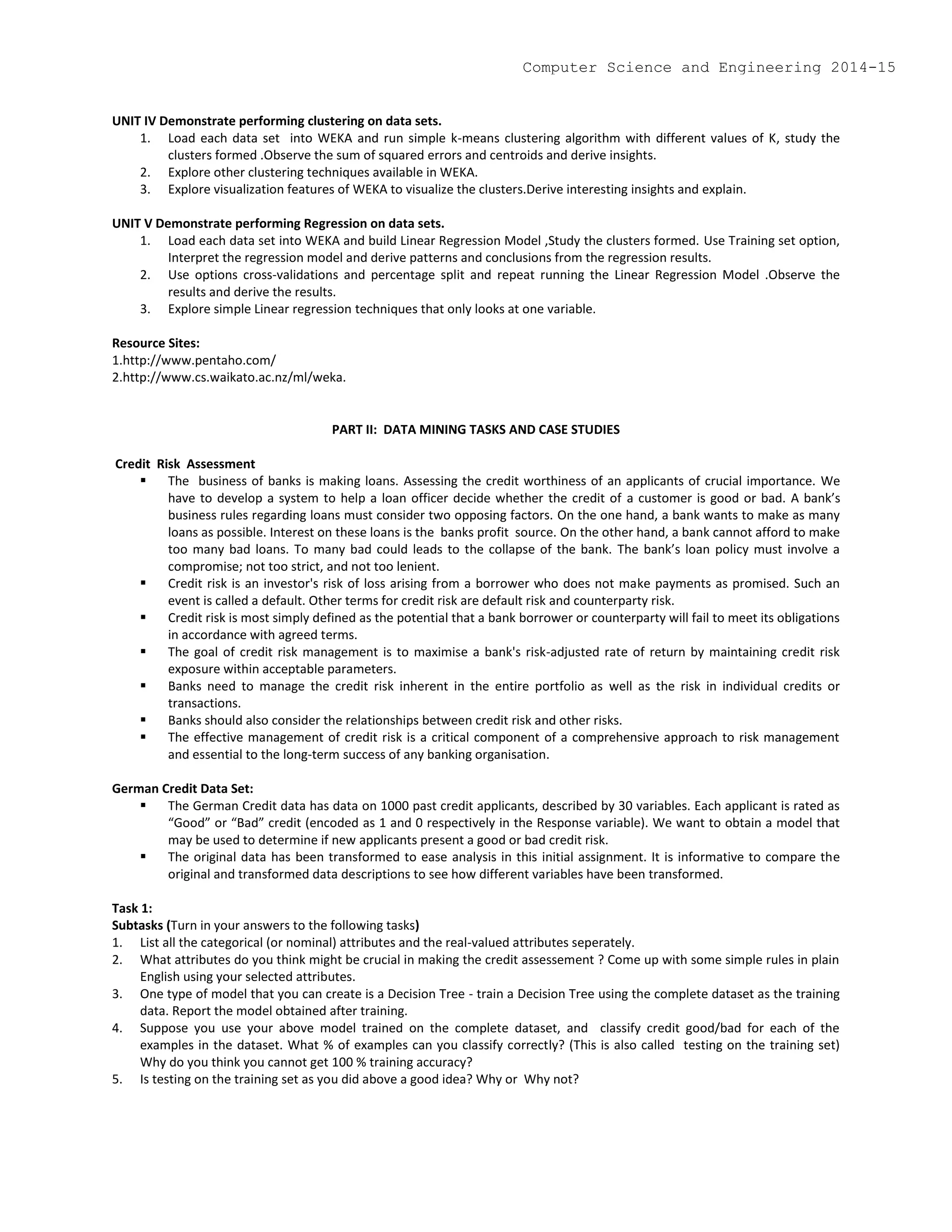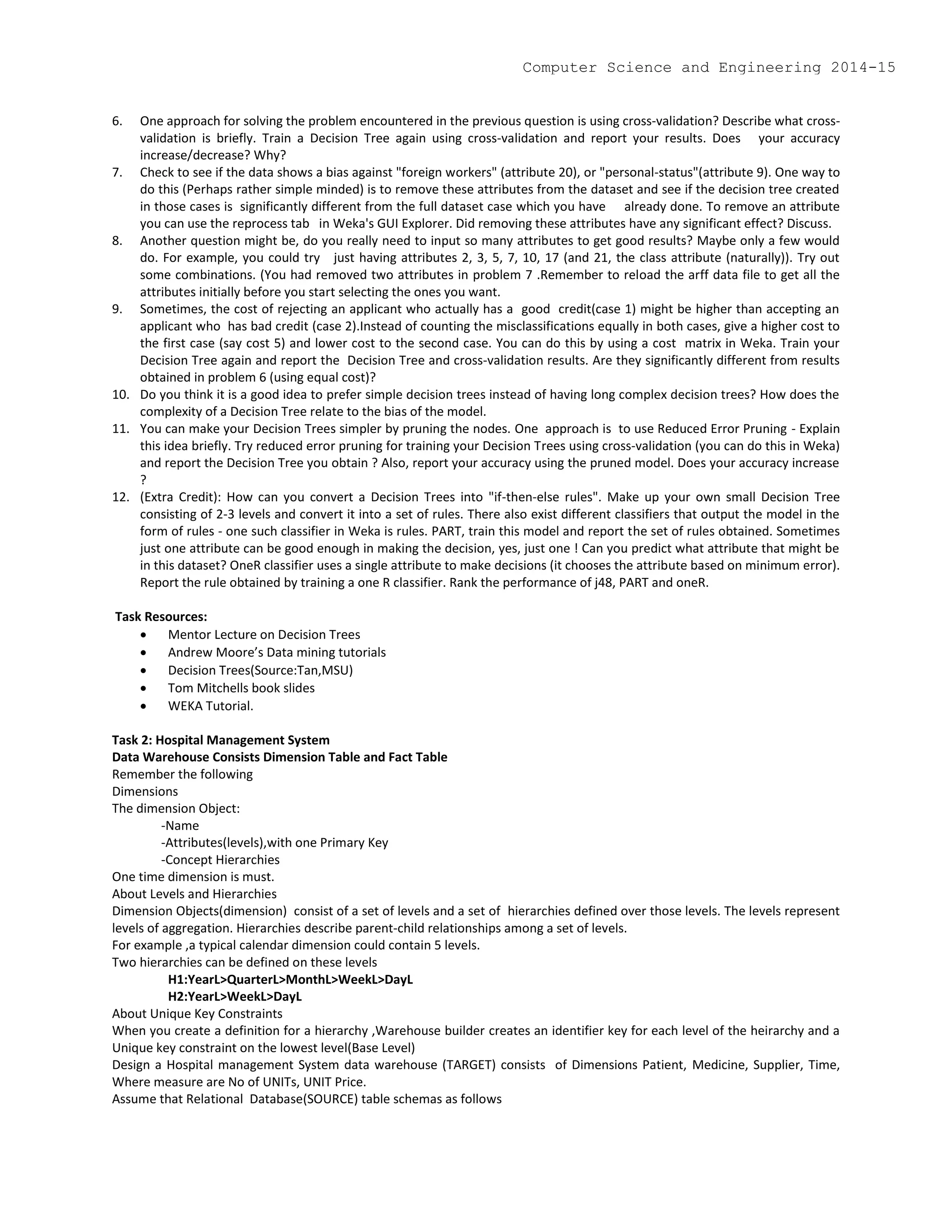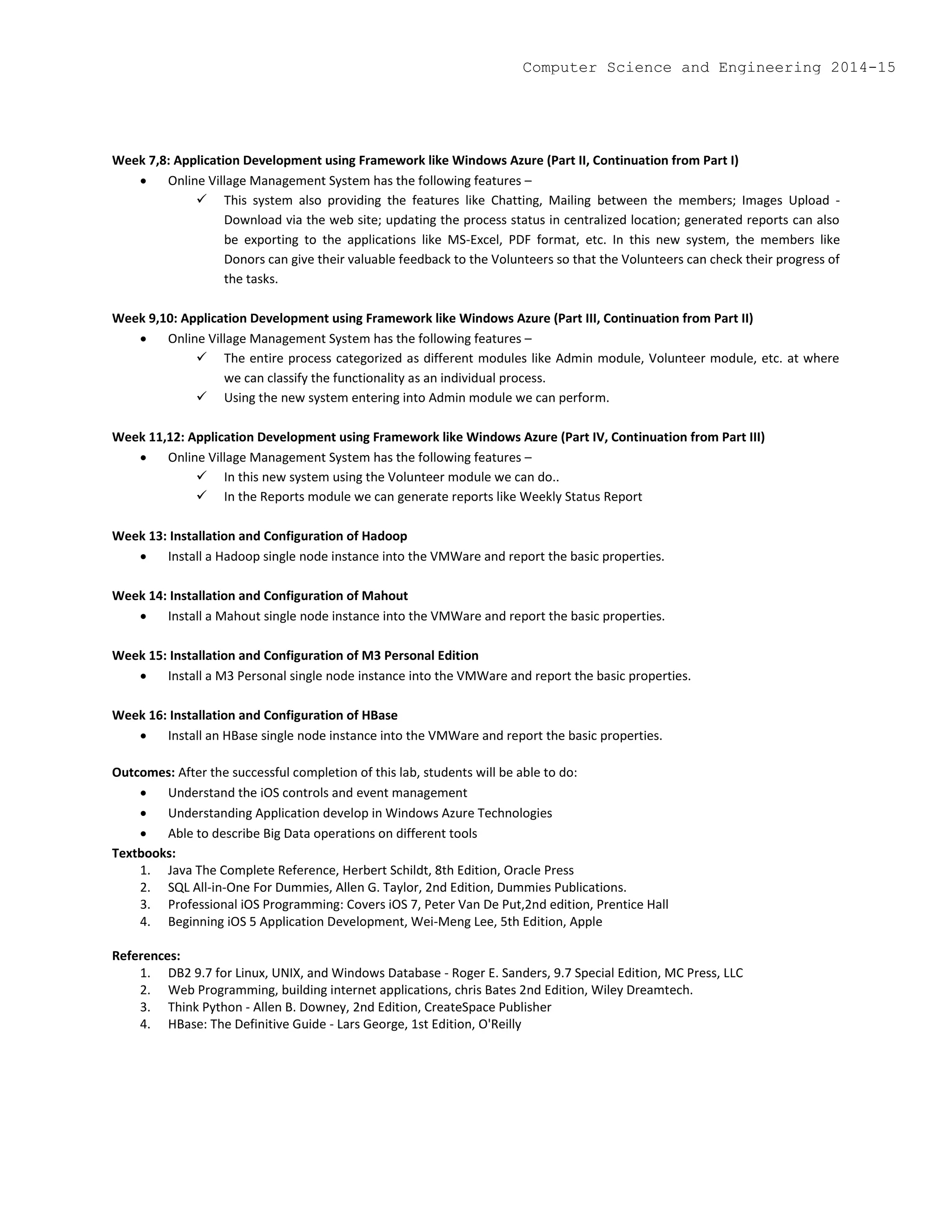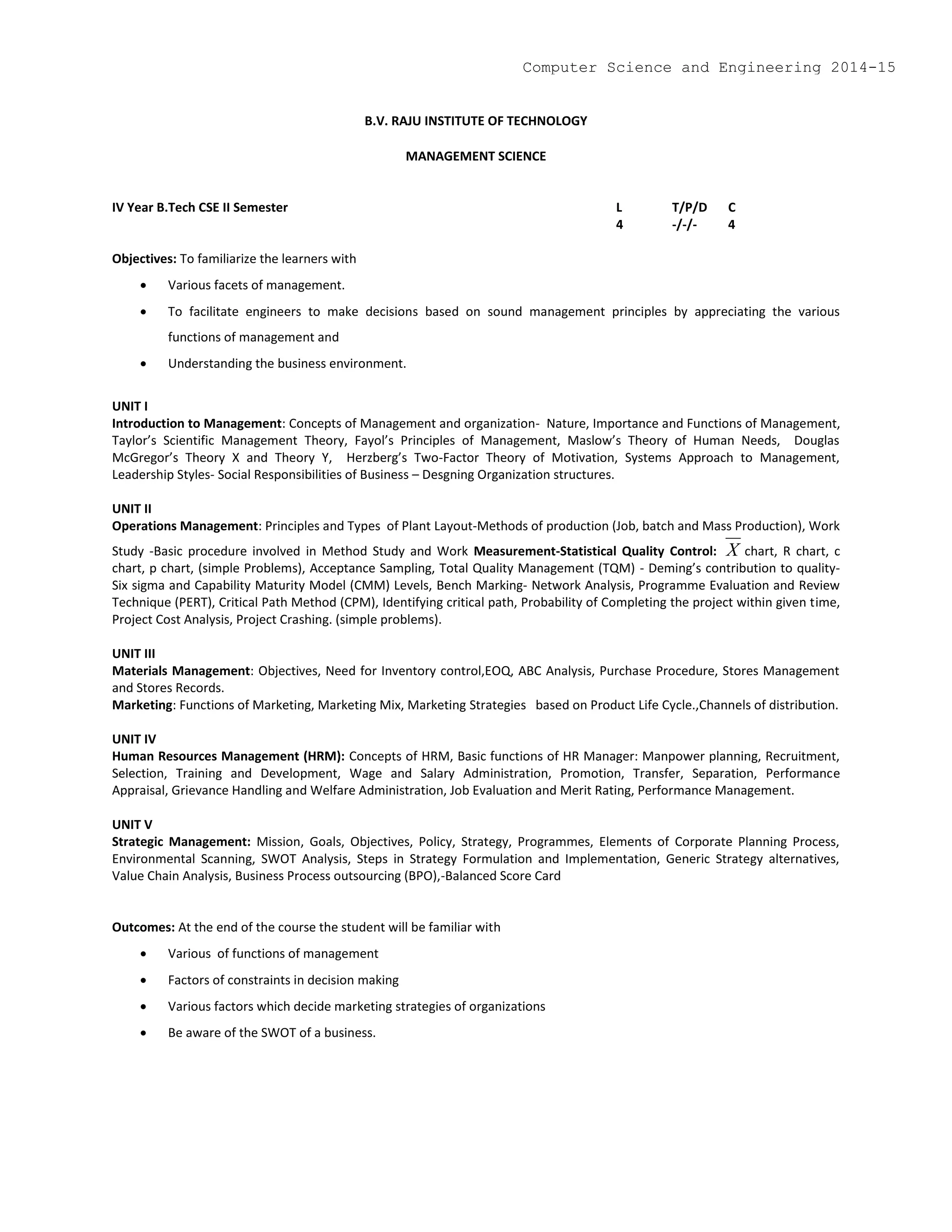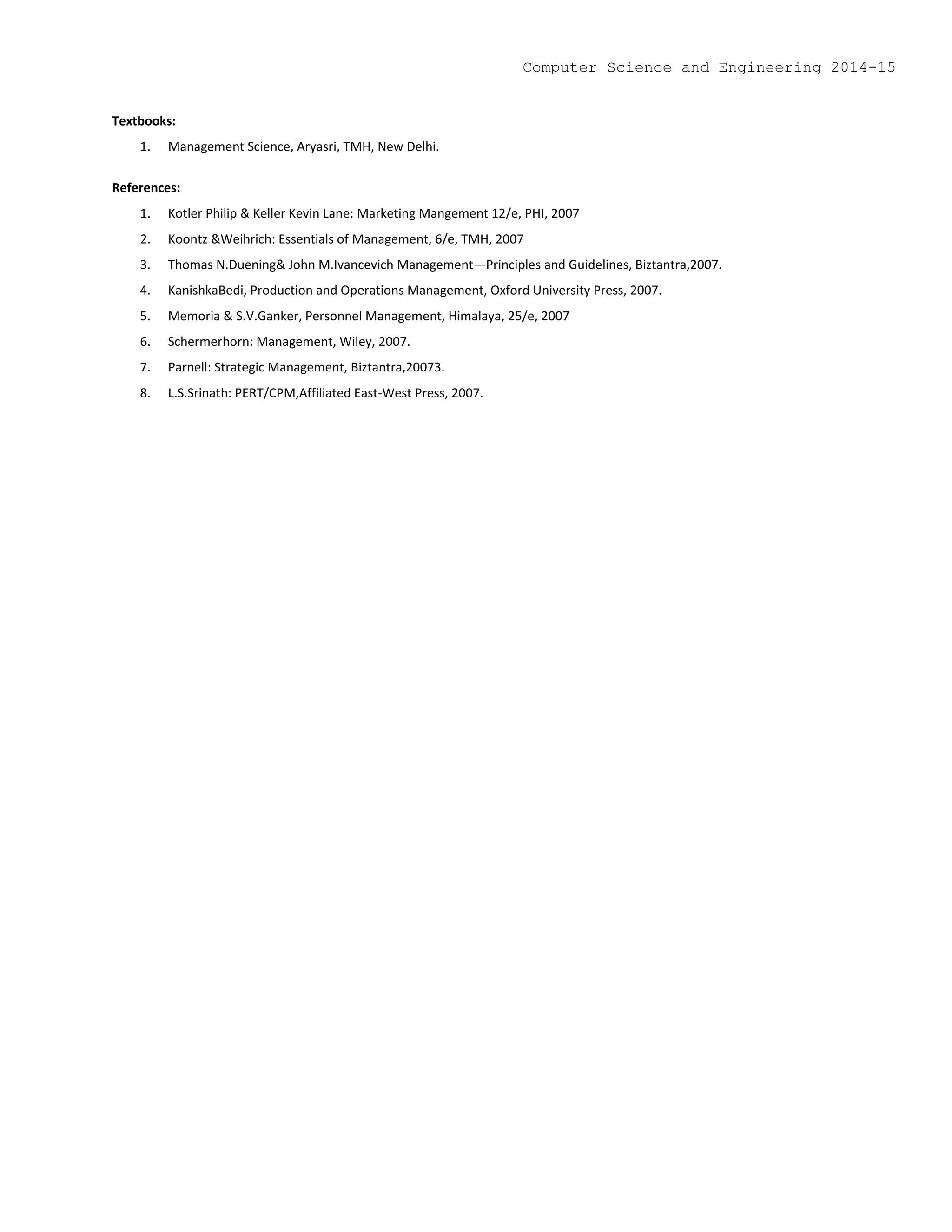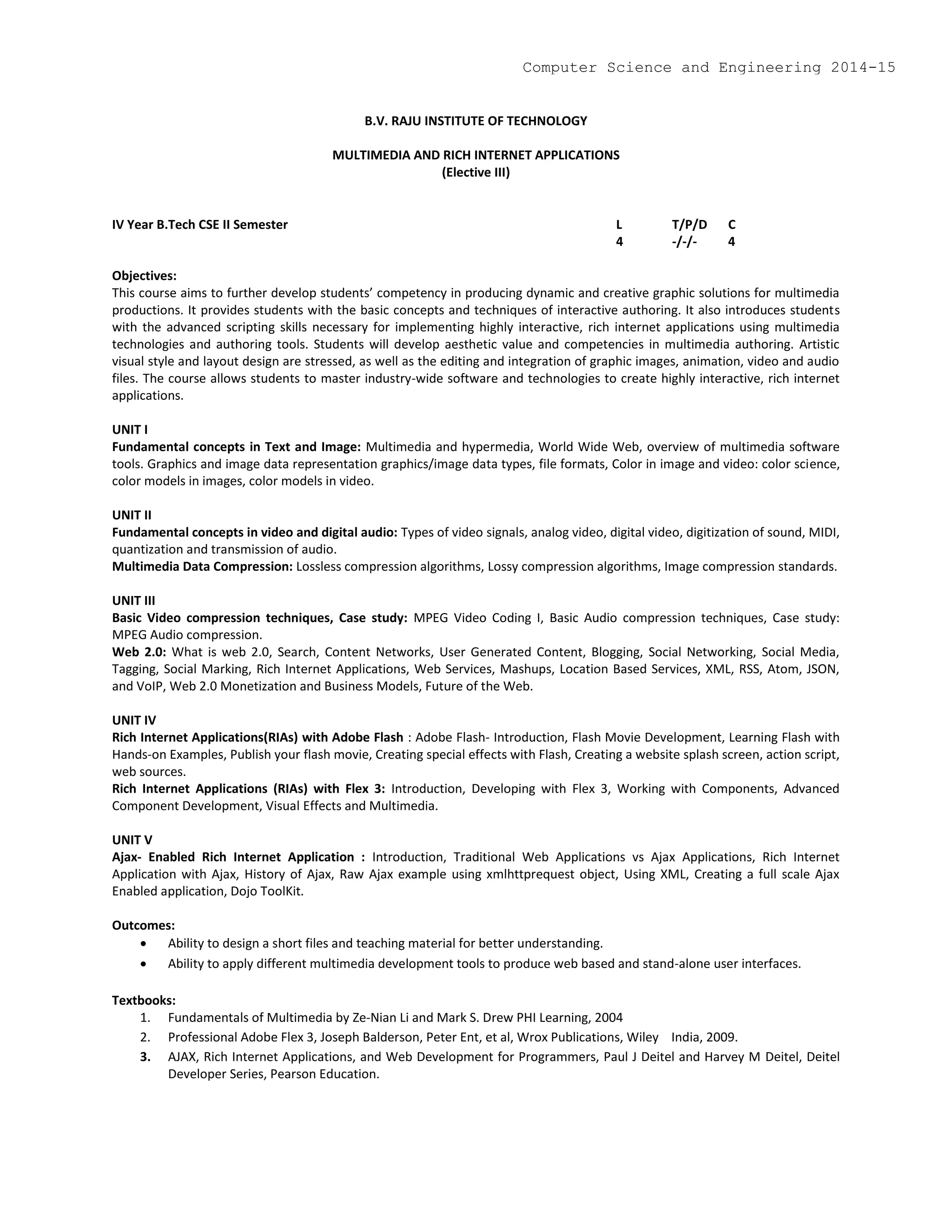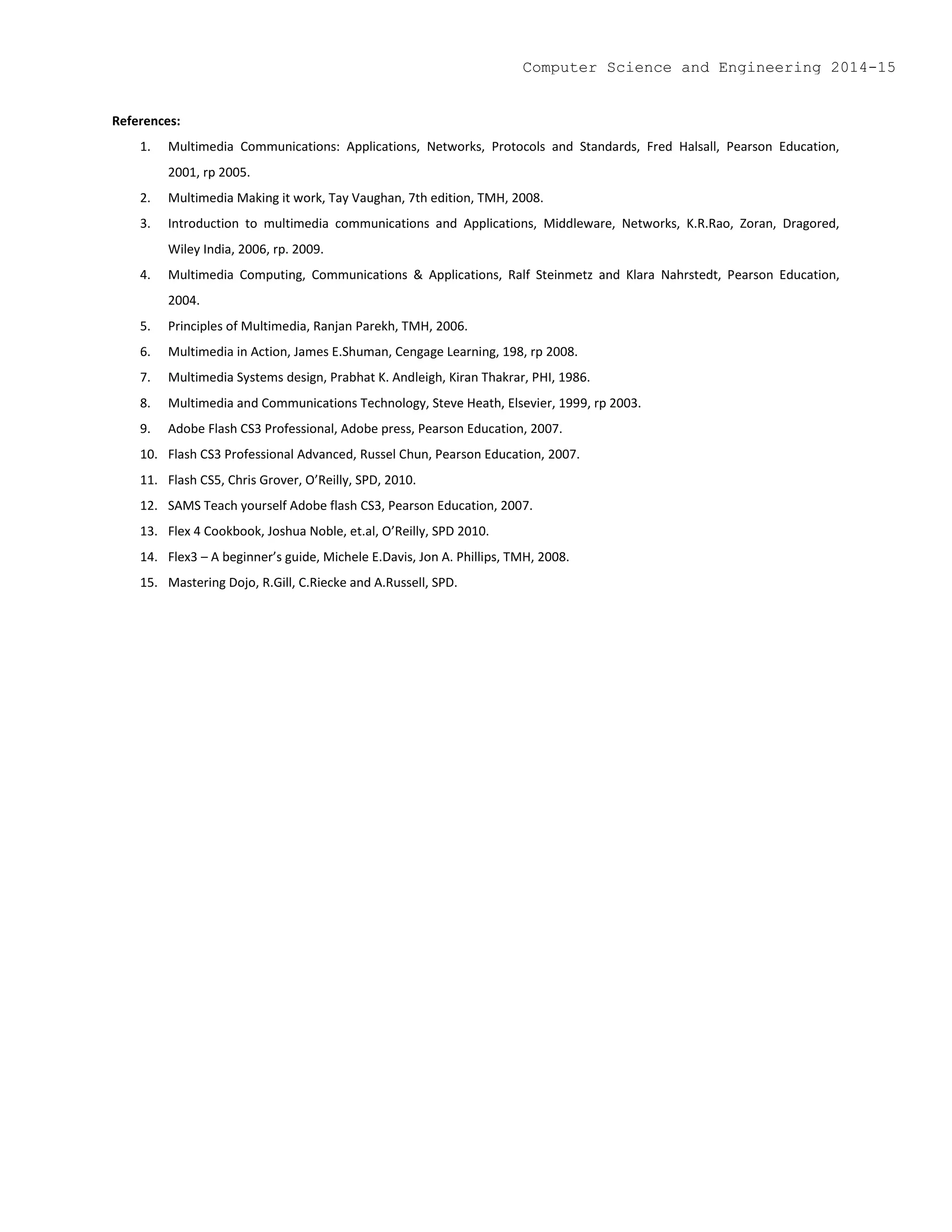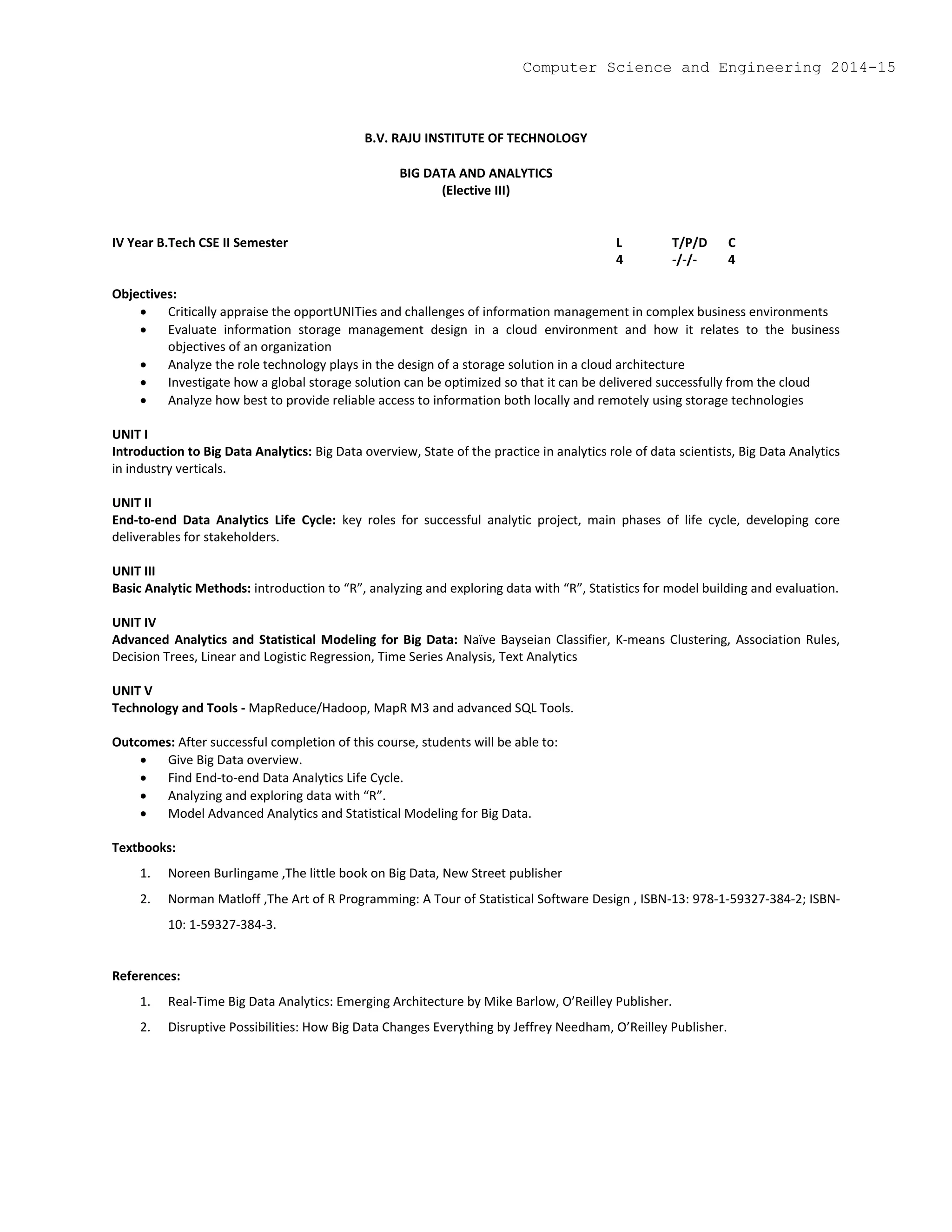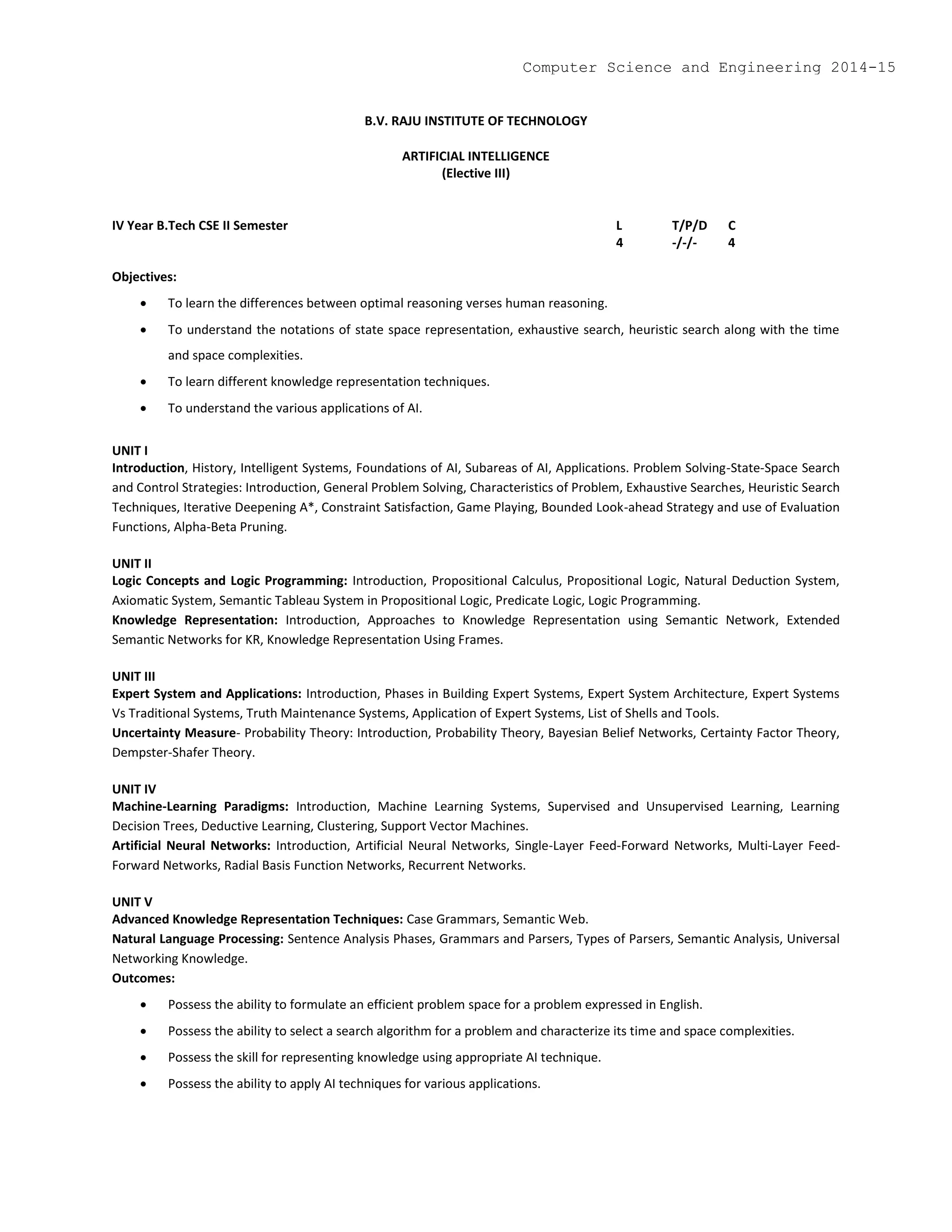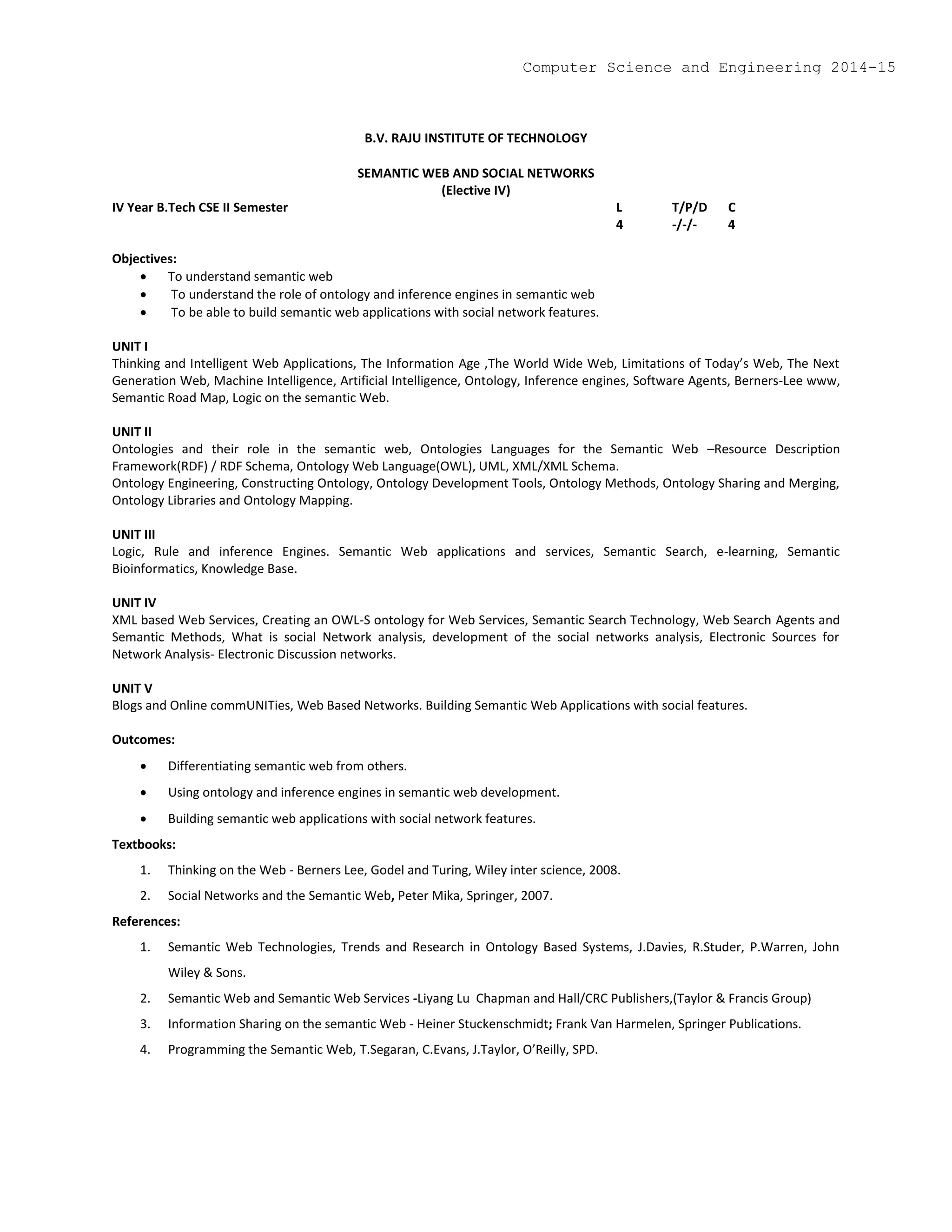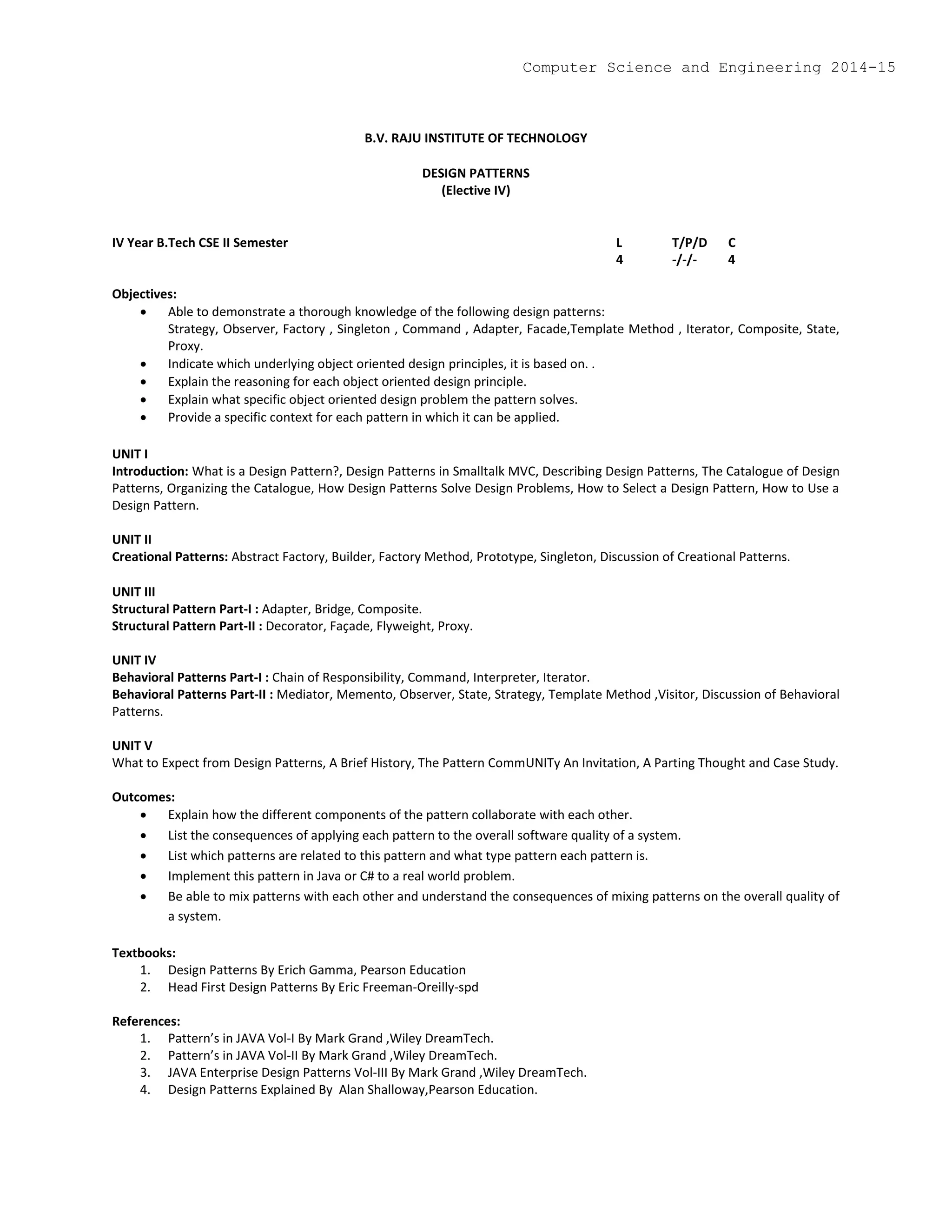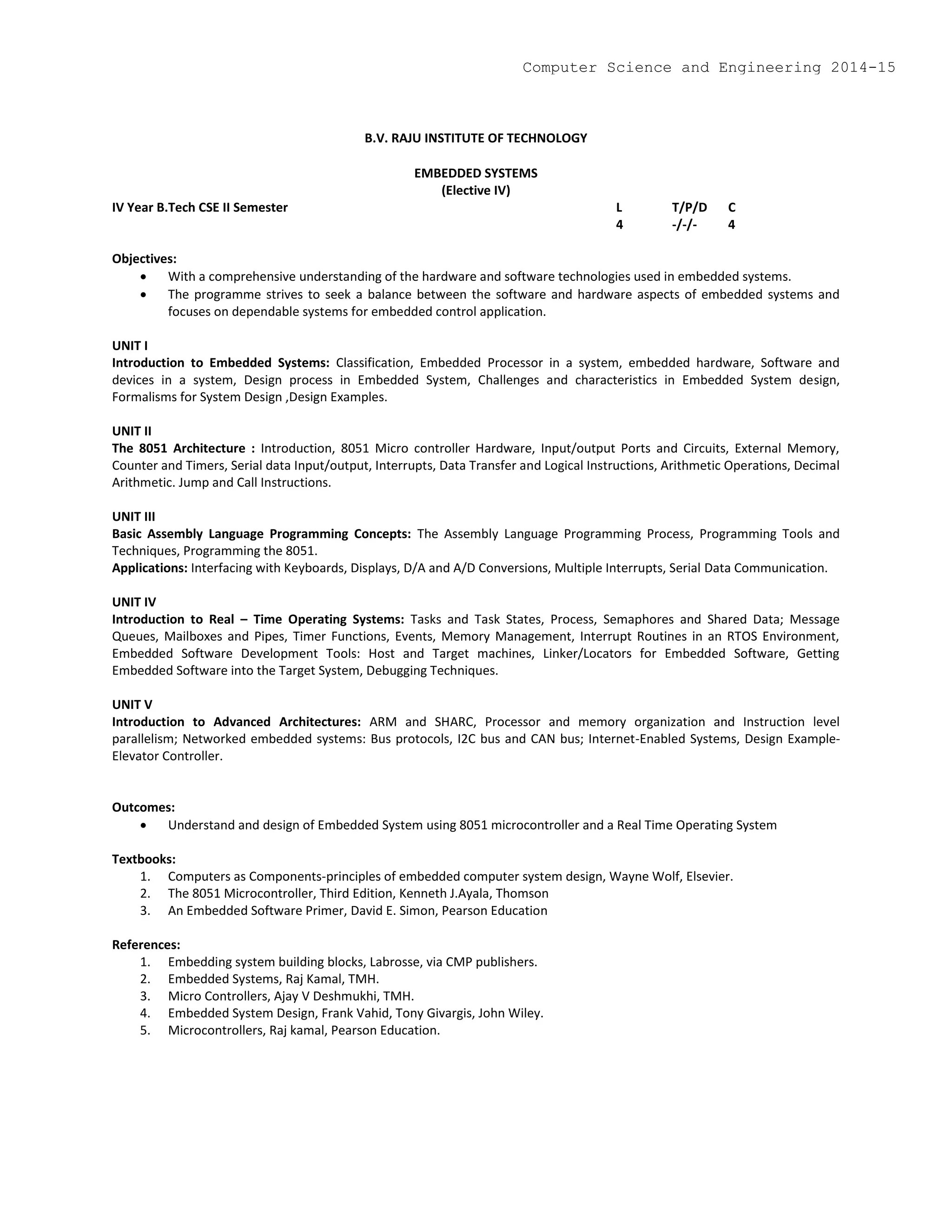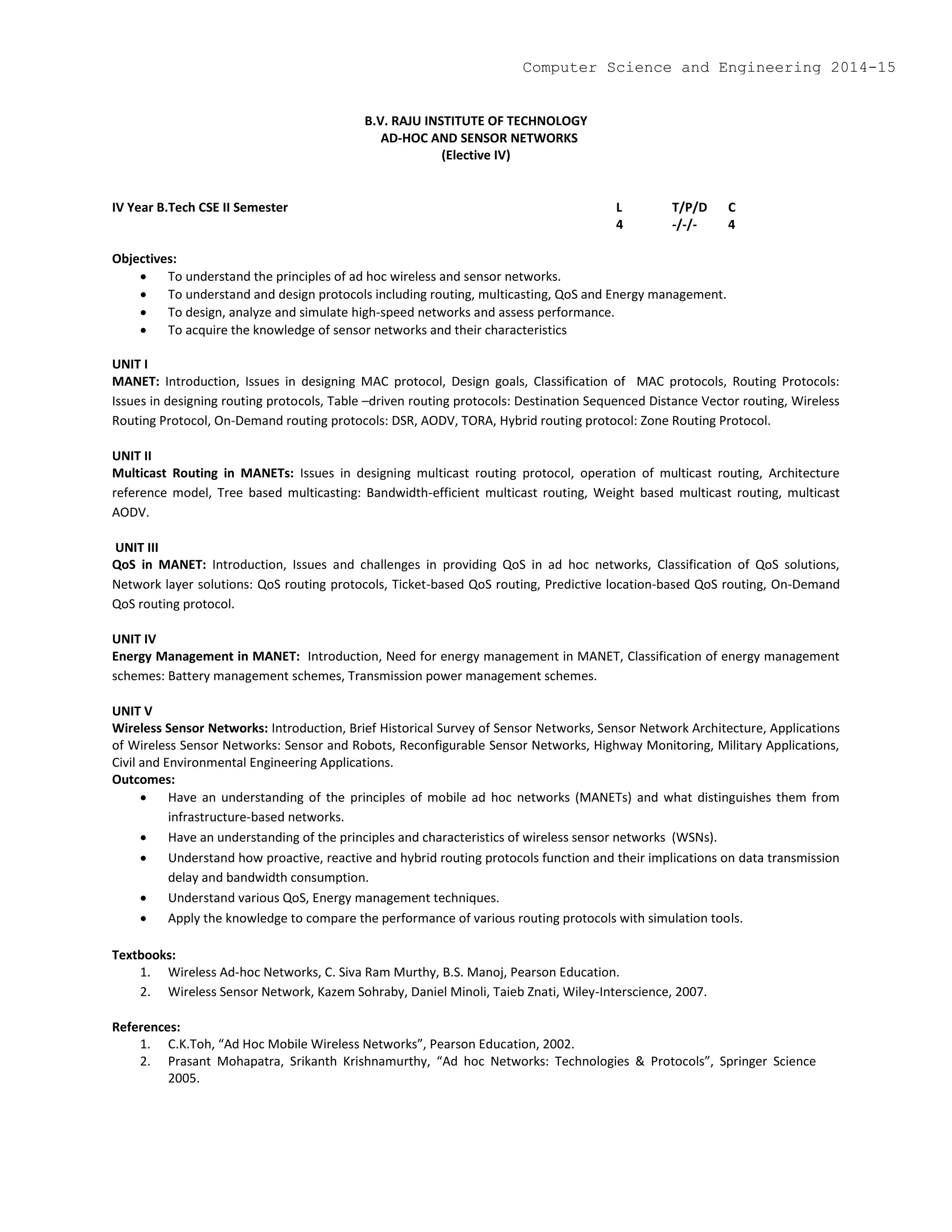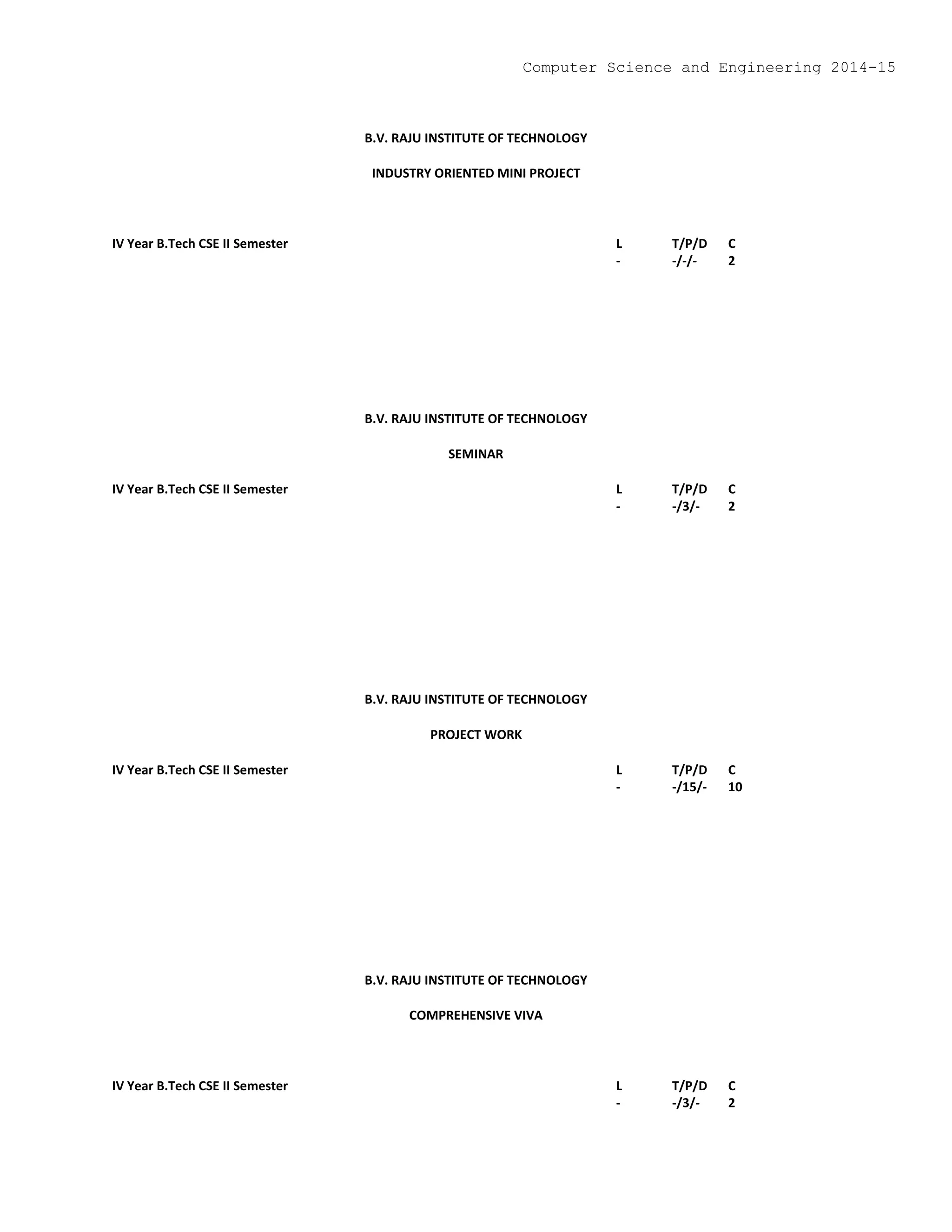This document provides information about the B V Raju Institute of Technology, including its vision, mission, program educational objectives, and program outcomes for the Computer Science and Engineering program.
The vision is to create competent engineers and managers with a sound background in ethics and social responsibilities. The mission is to provide a positive learning environment where students are inspired to strive for excellence and become leaders in a global society.
The program educational objectives are to 1) provide sufficient technical knowledge for students to make significant contributions to Computer Science and Engineering, 2) prepare graduates for professional careers in multidisciplinary environments, and 3) pursue lifelong learning.
The program outcomes include the ability to apply knowledge of math, science and engineering; design
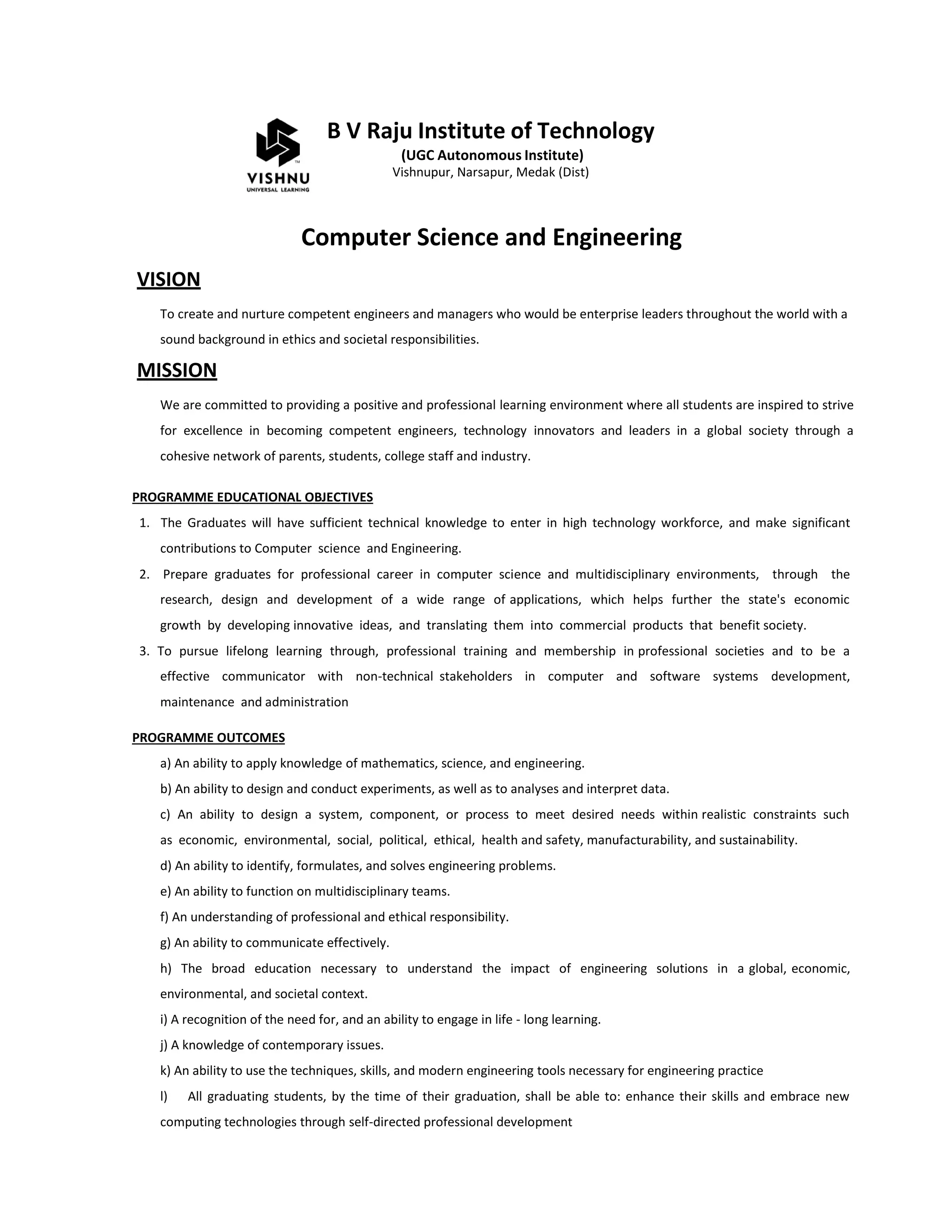

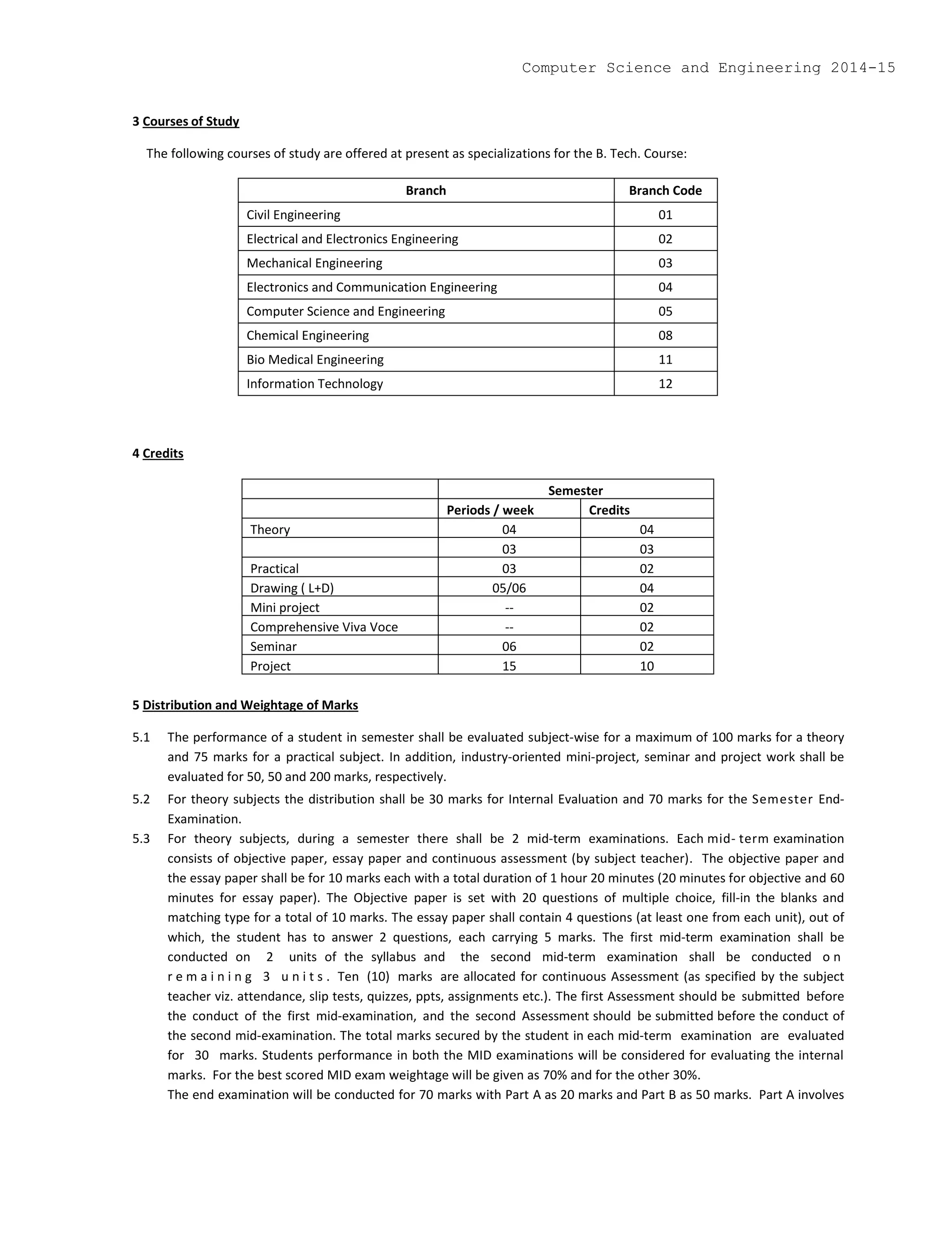
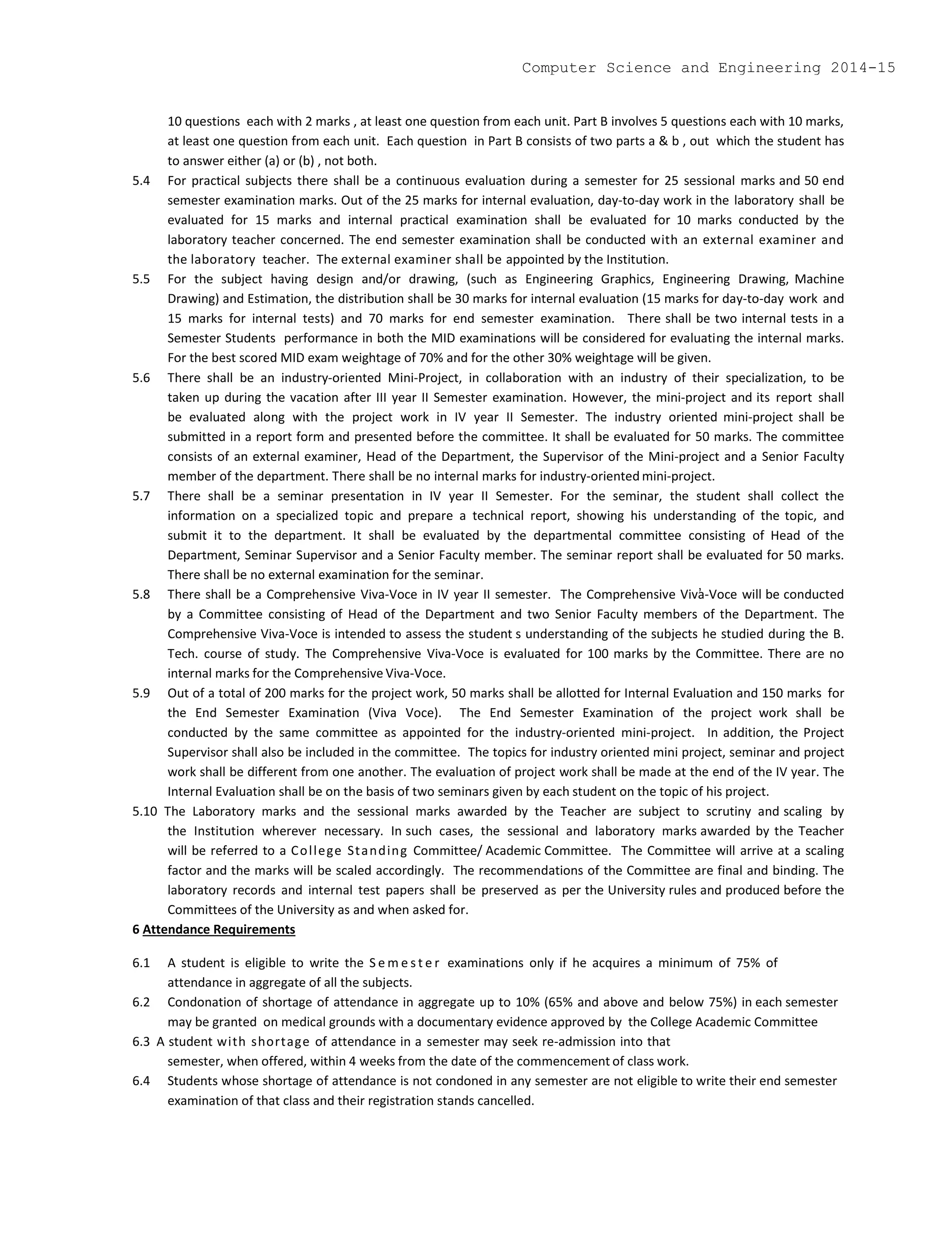
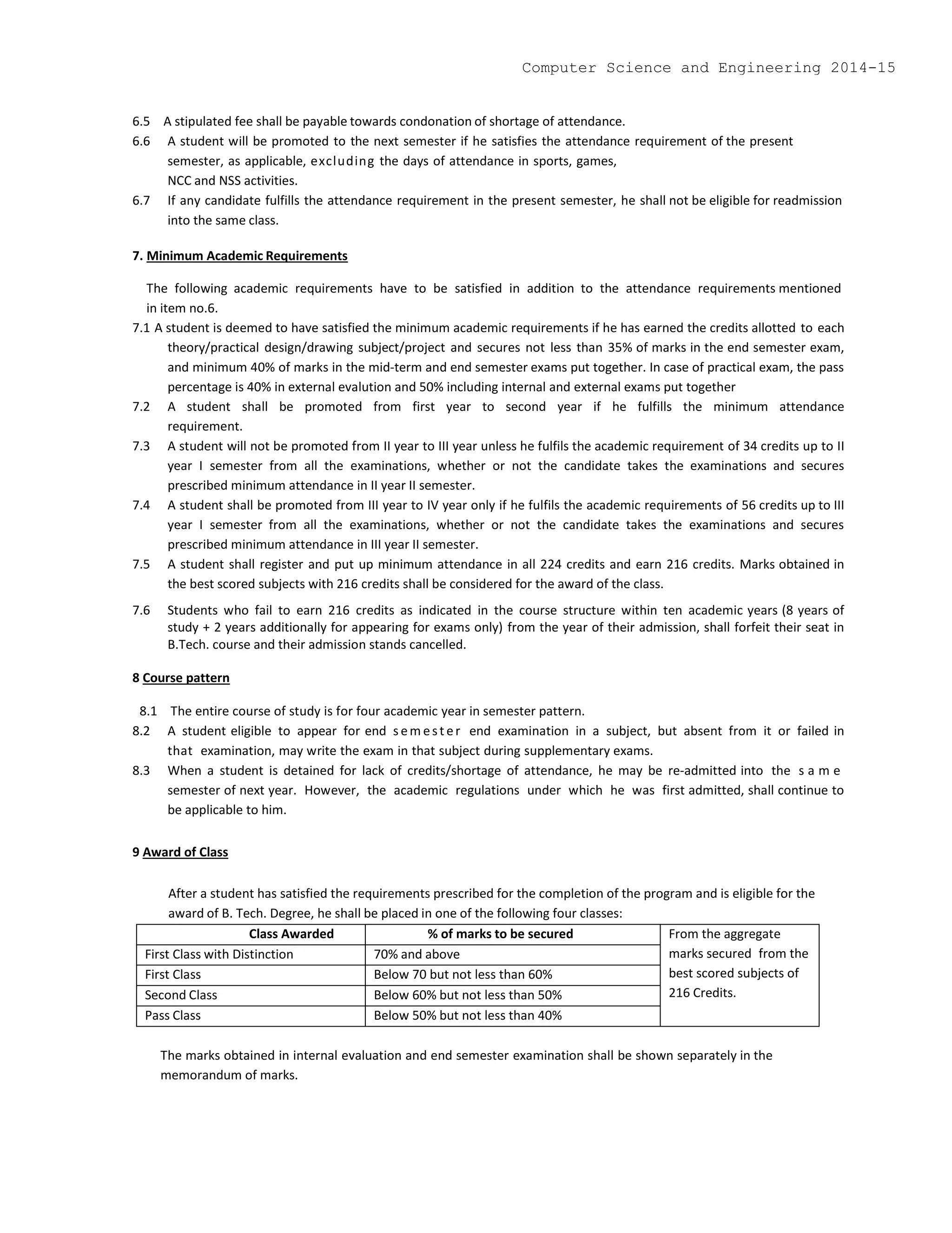
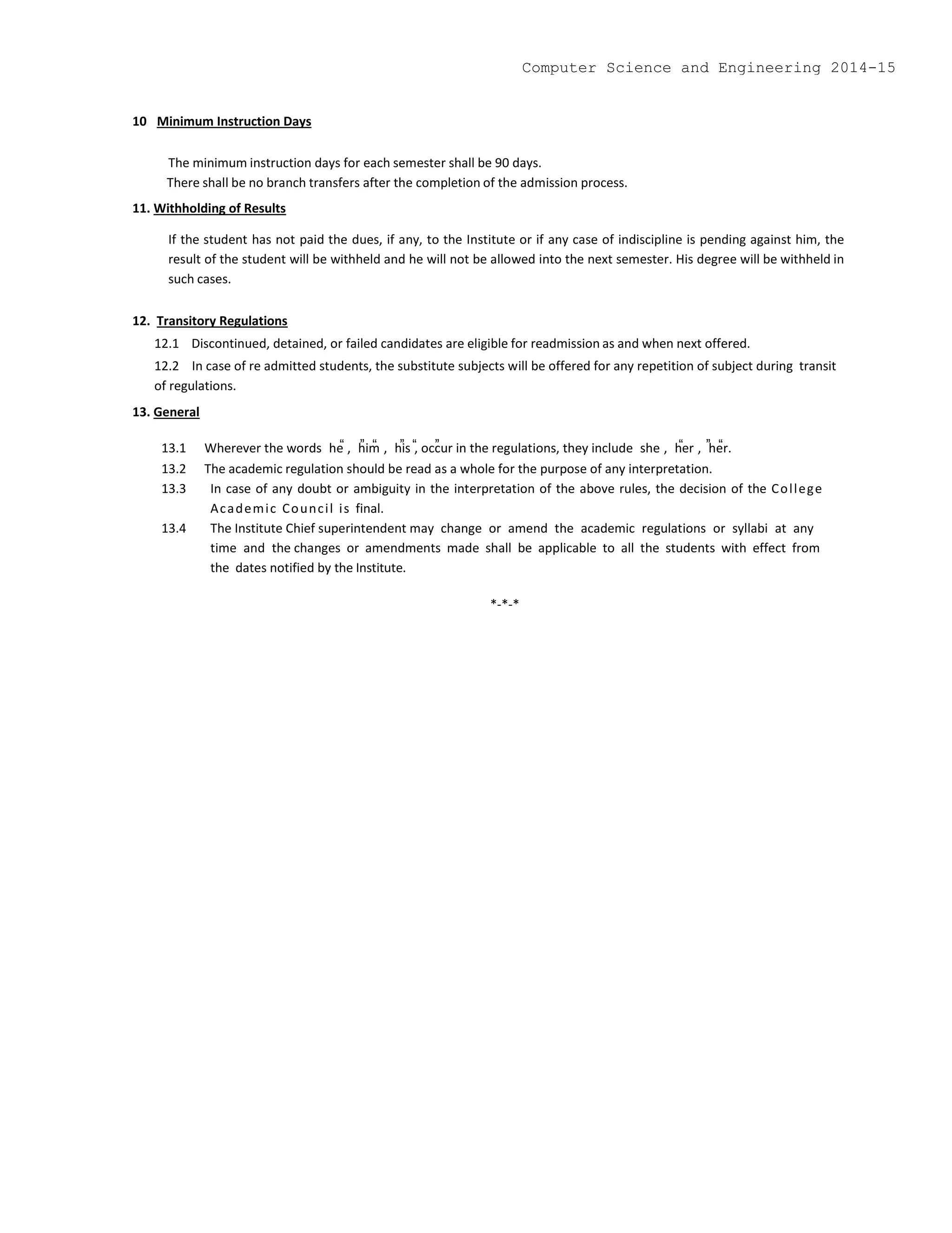
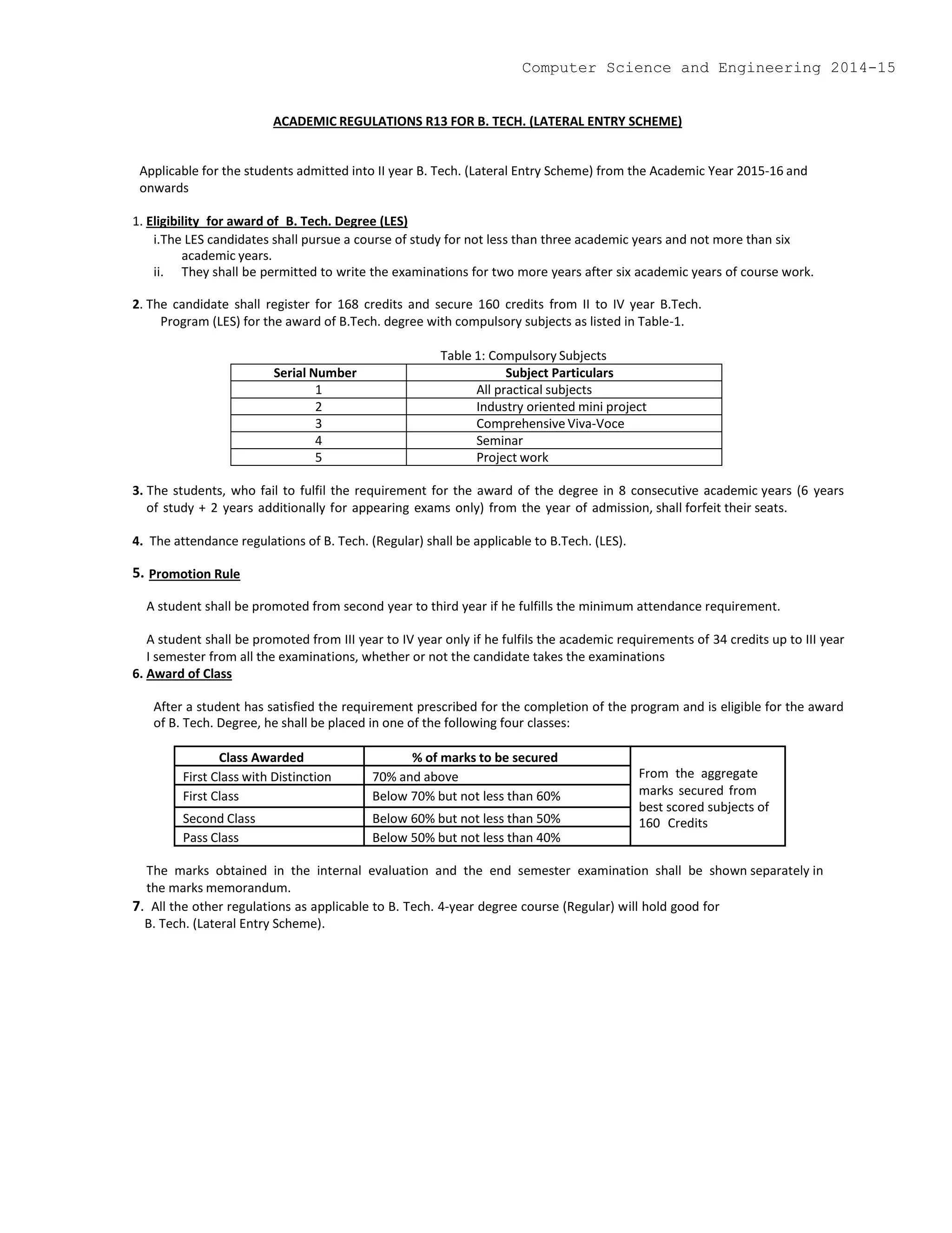

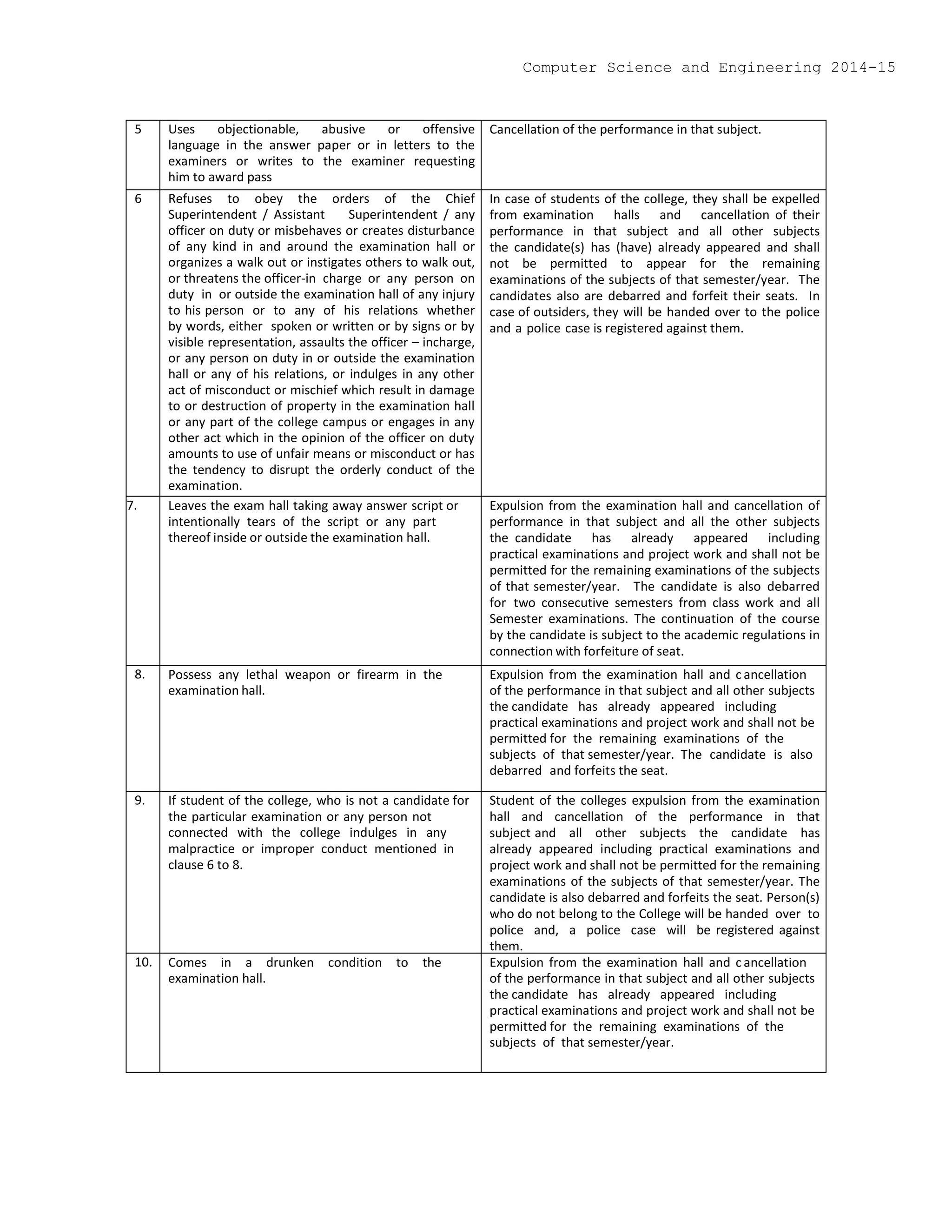
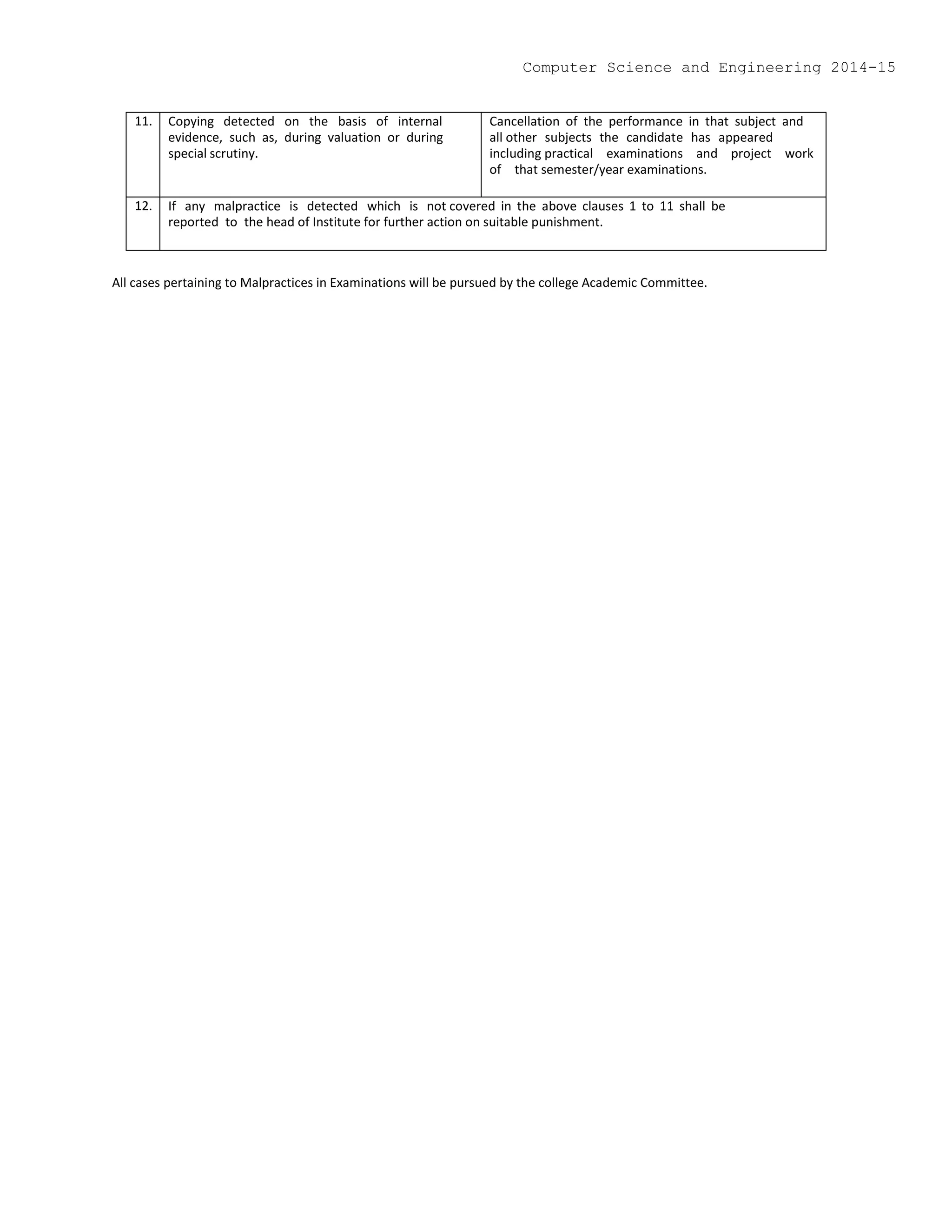
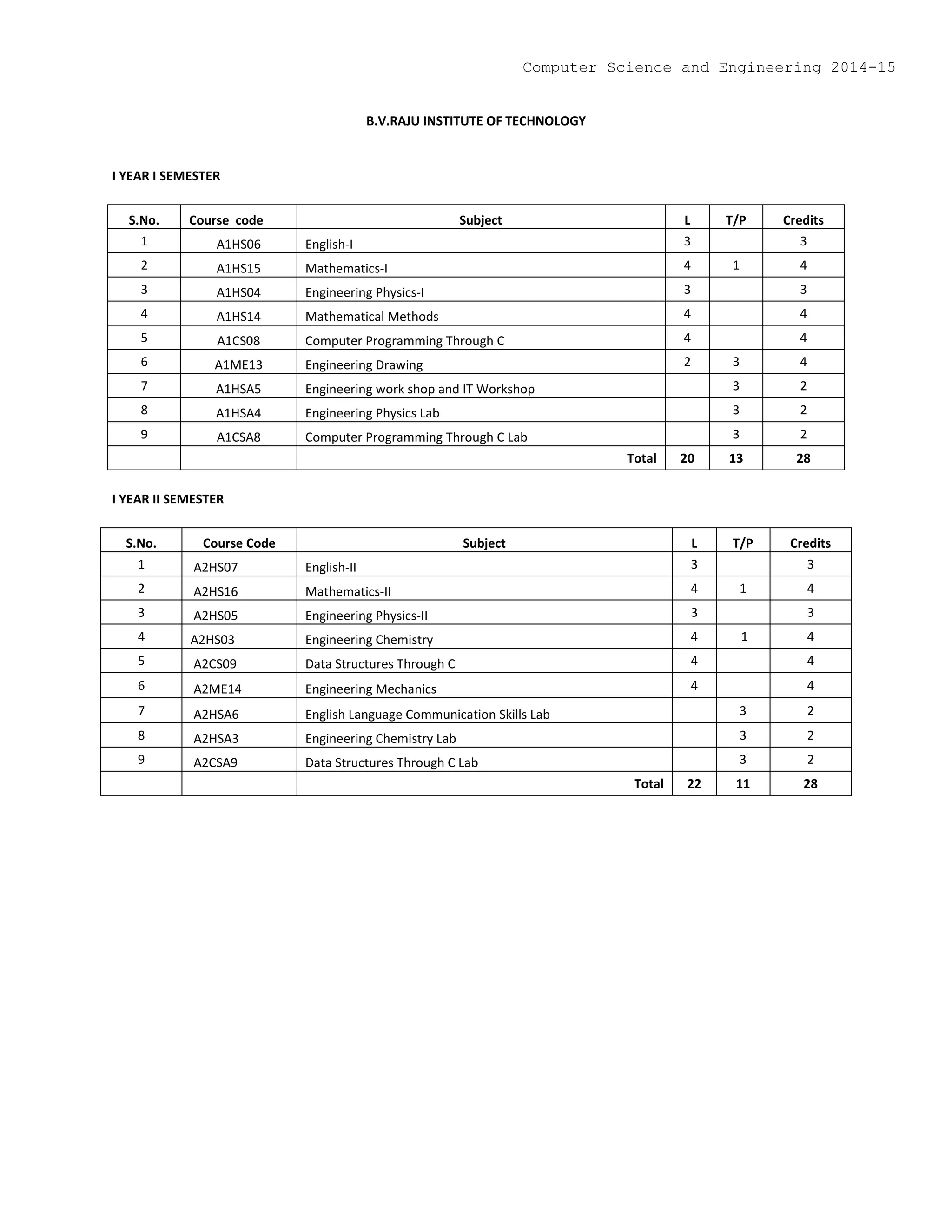
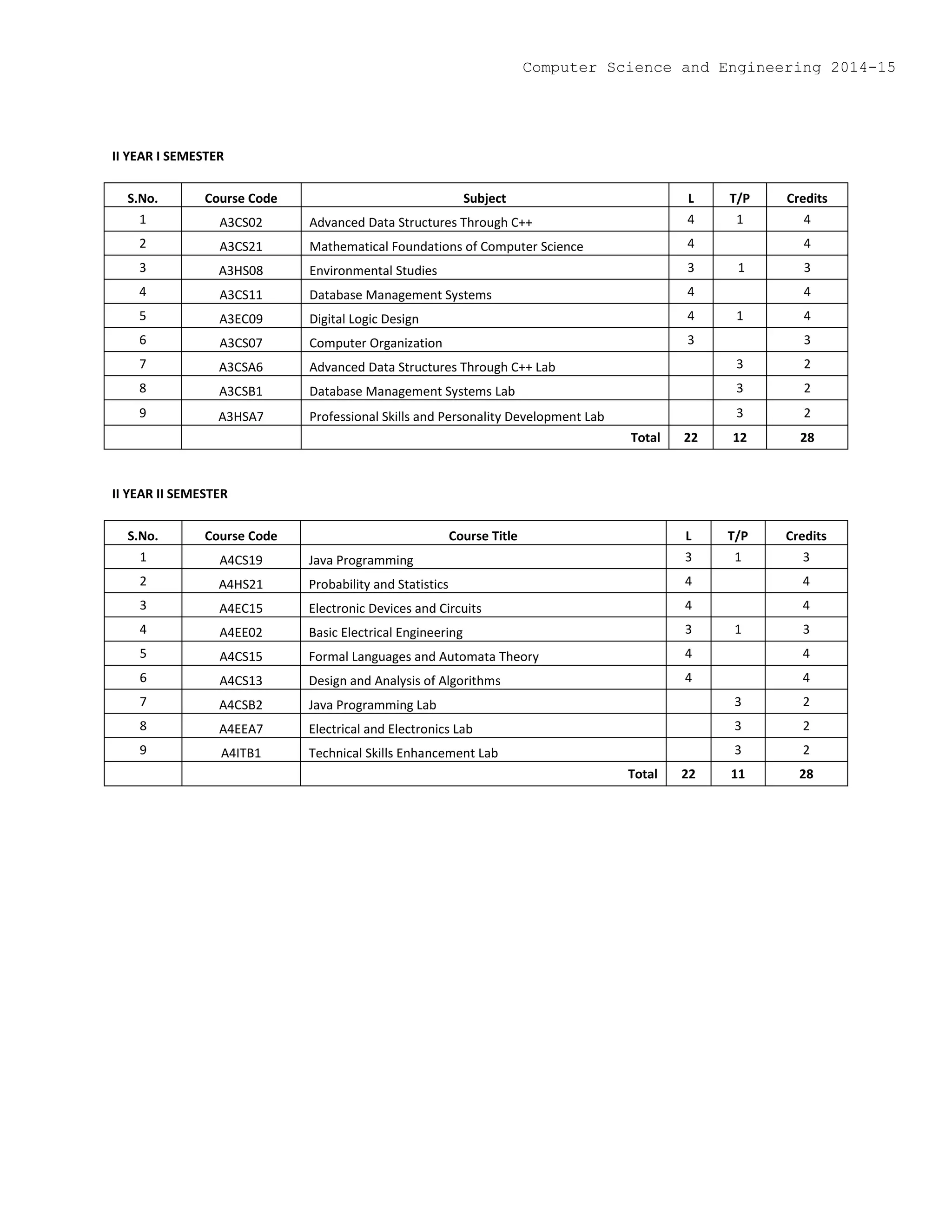
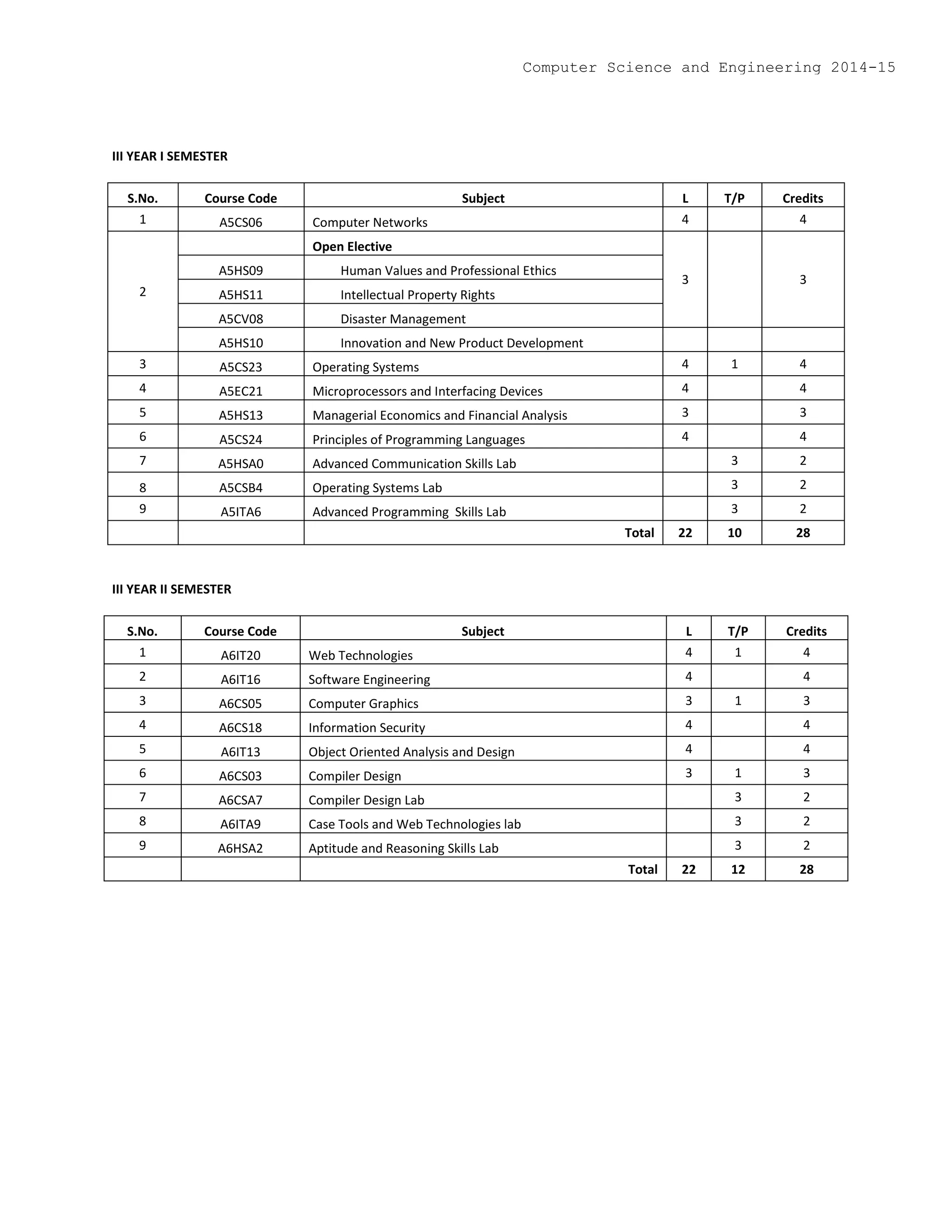
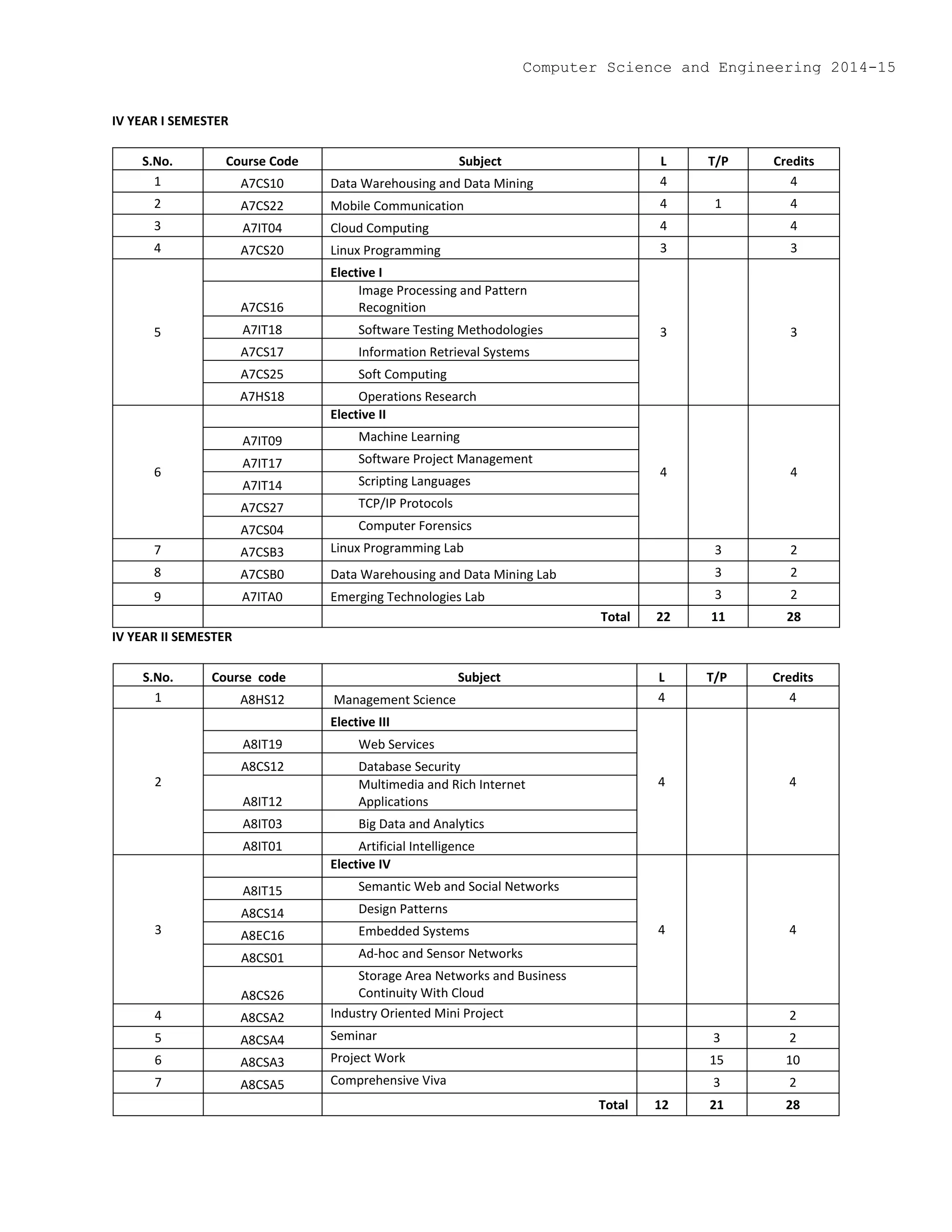
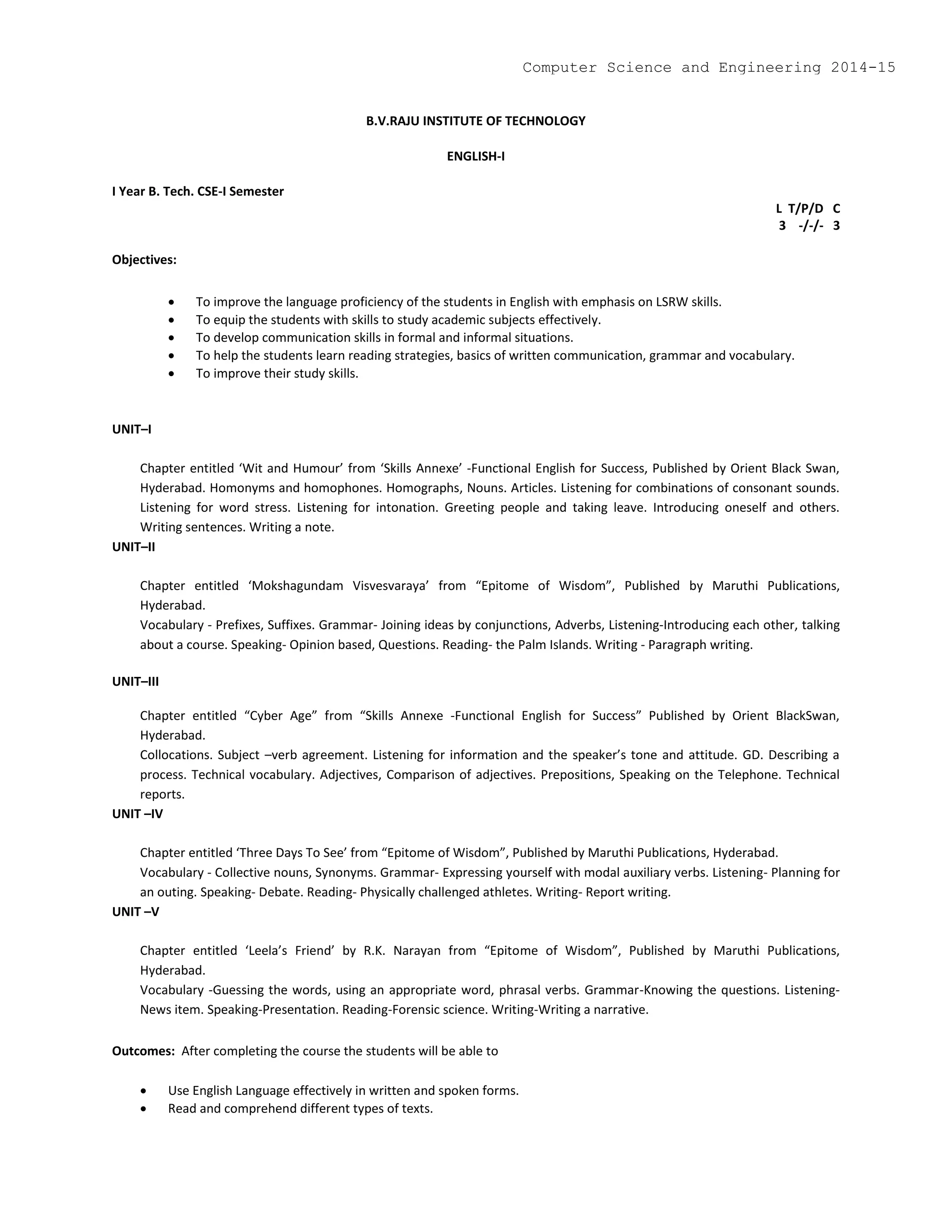

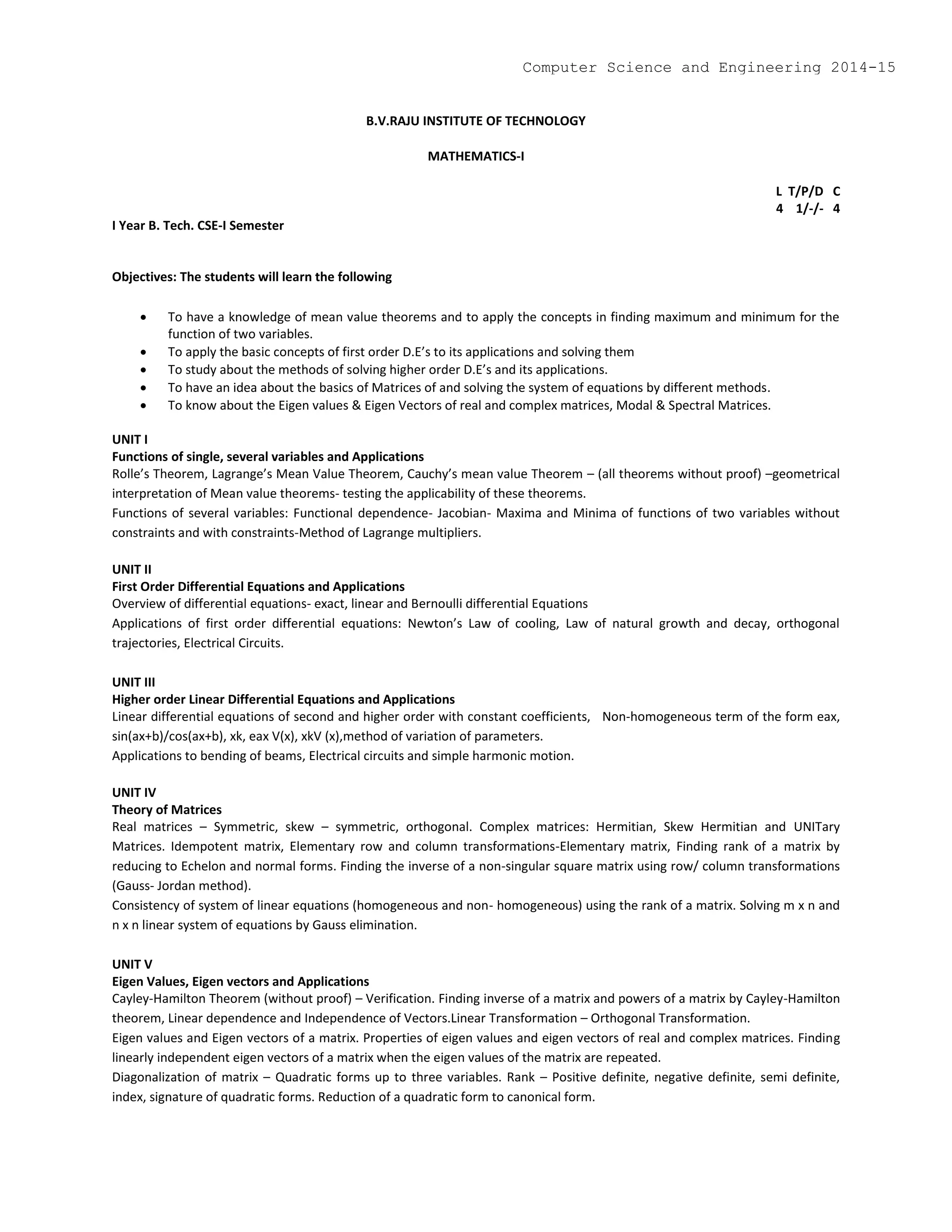
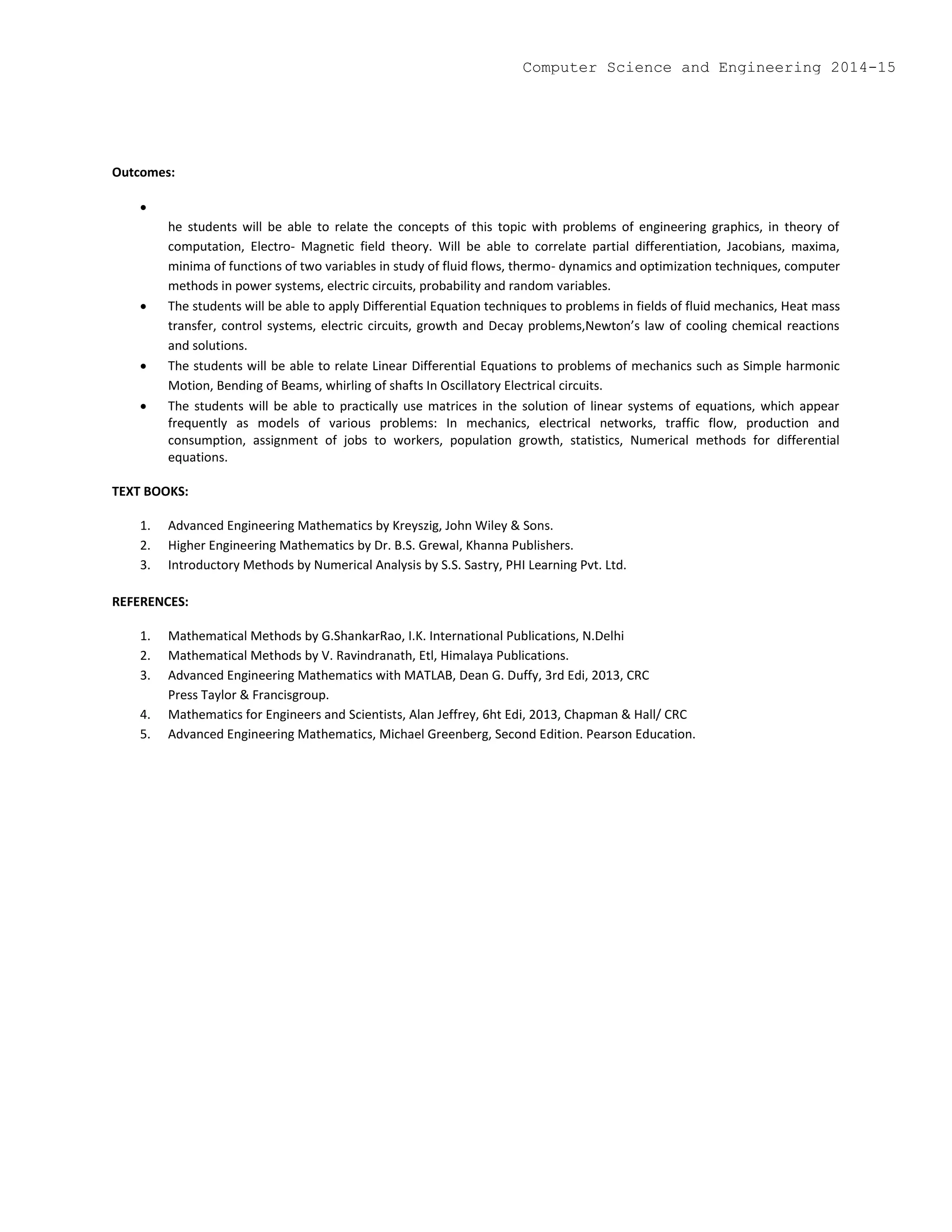
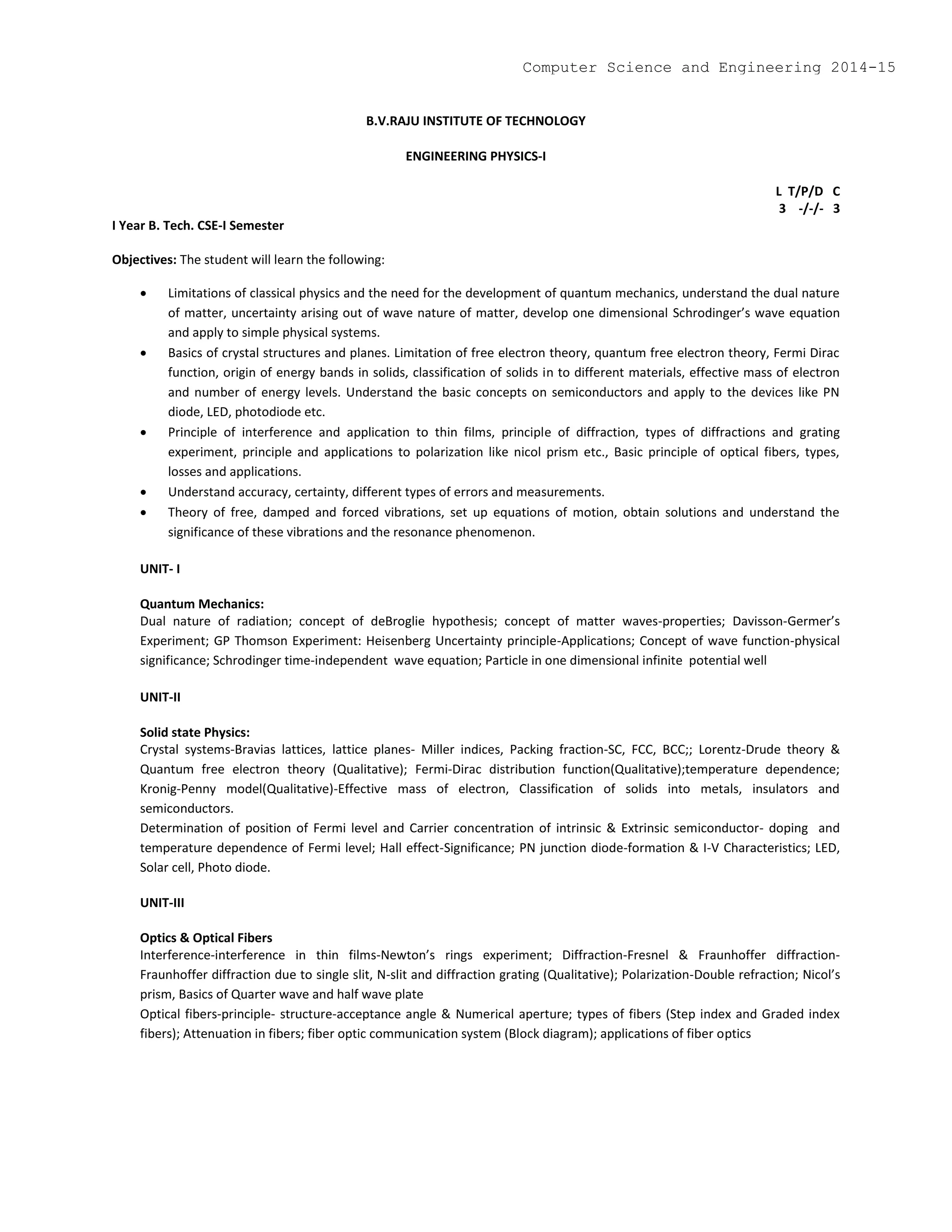
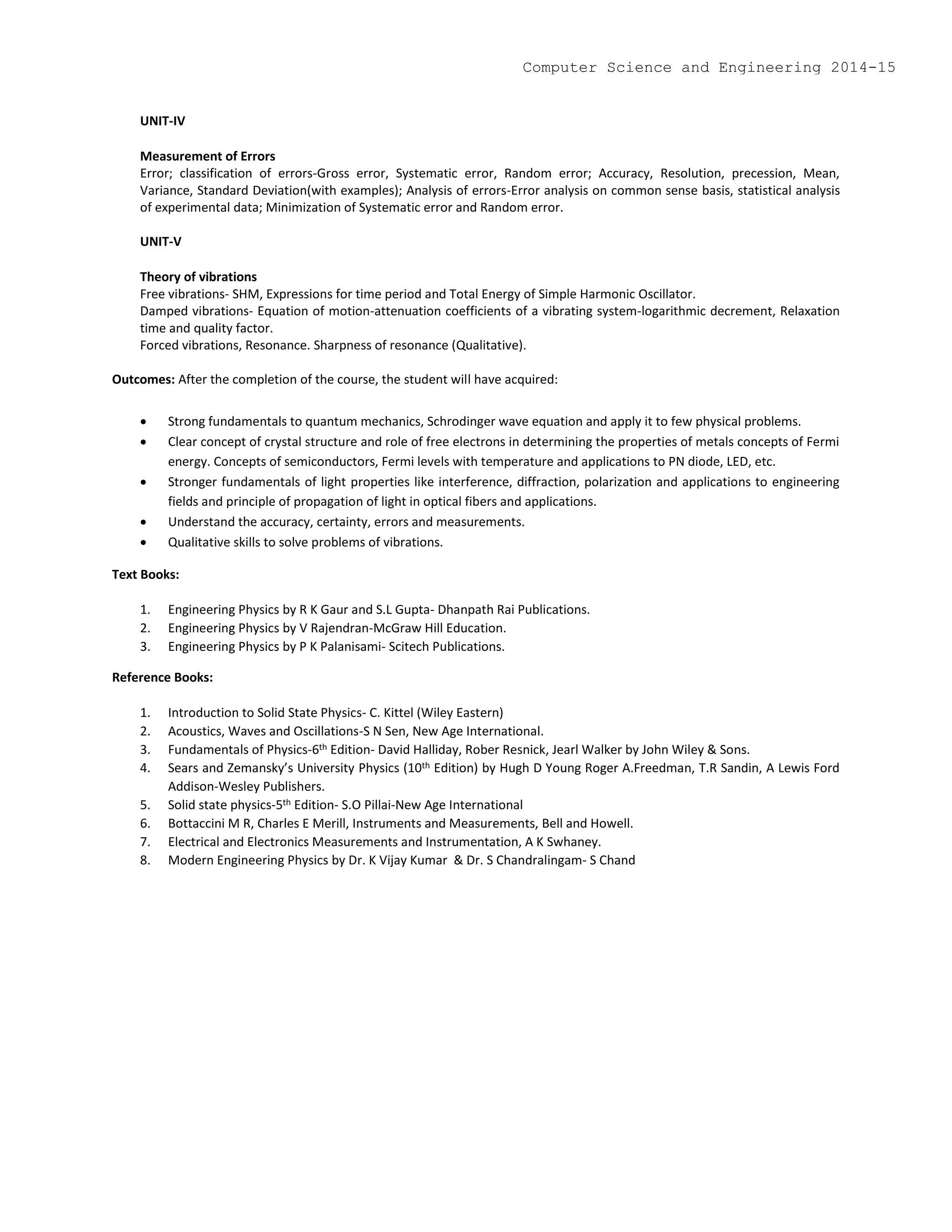
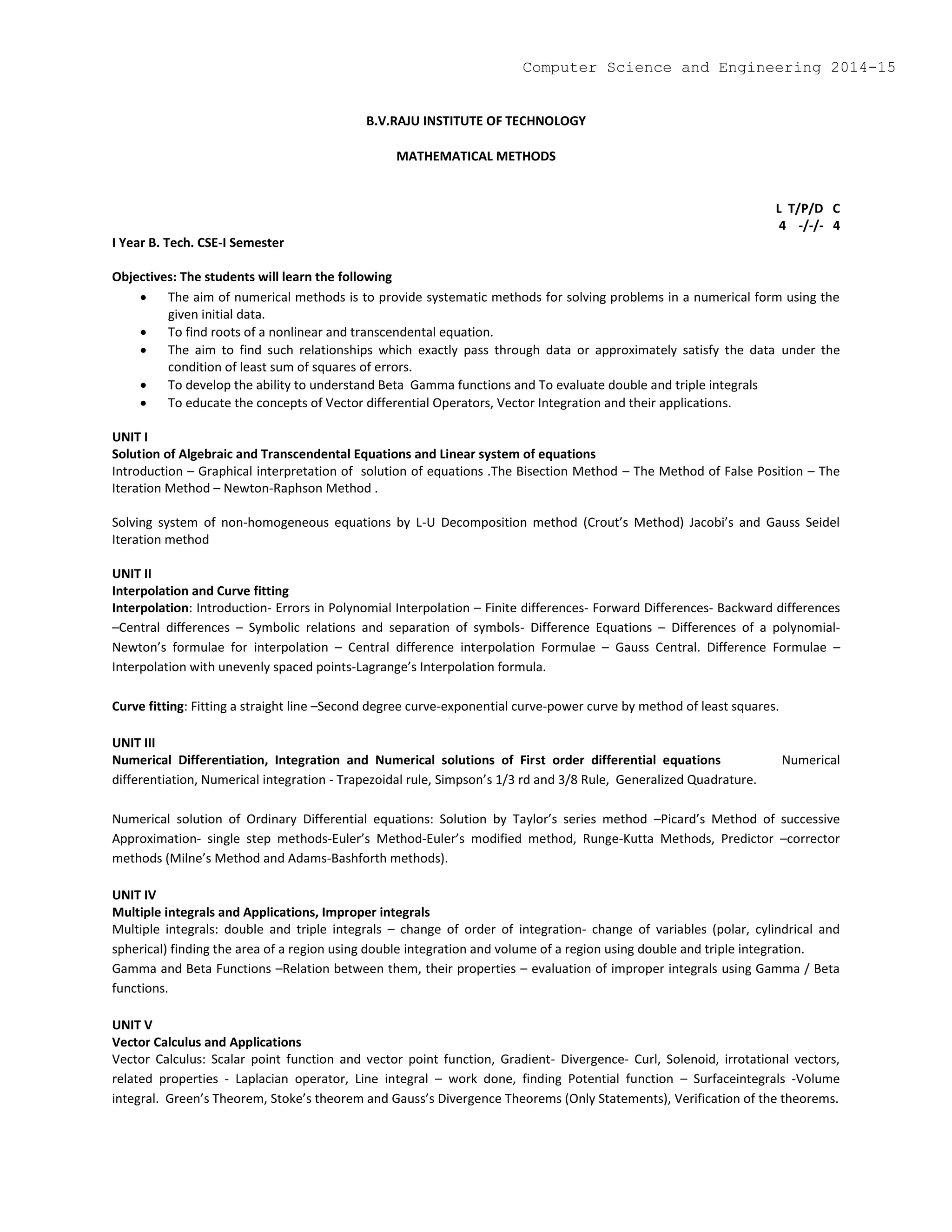
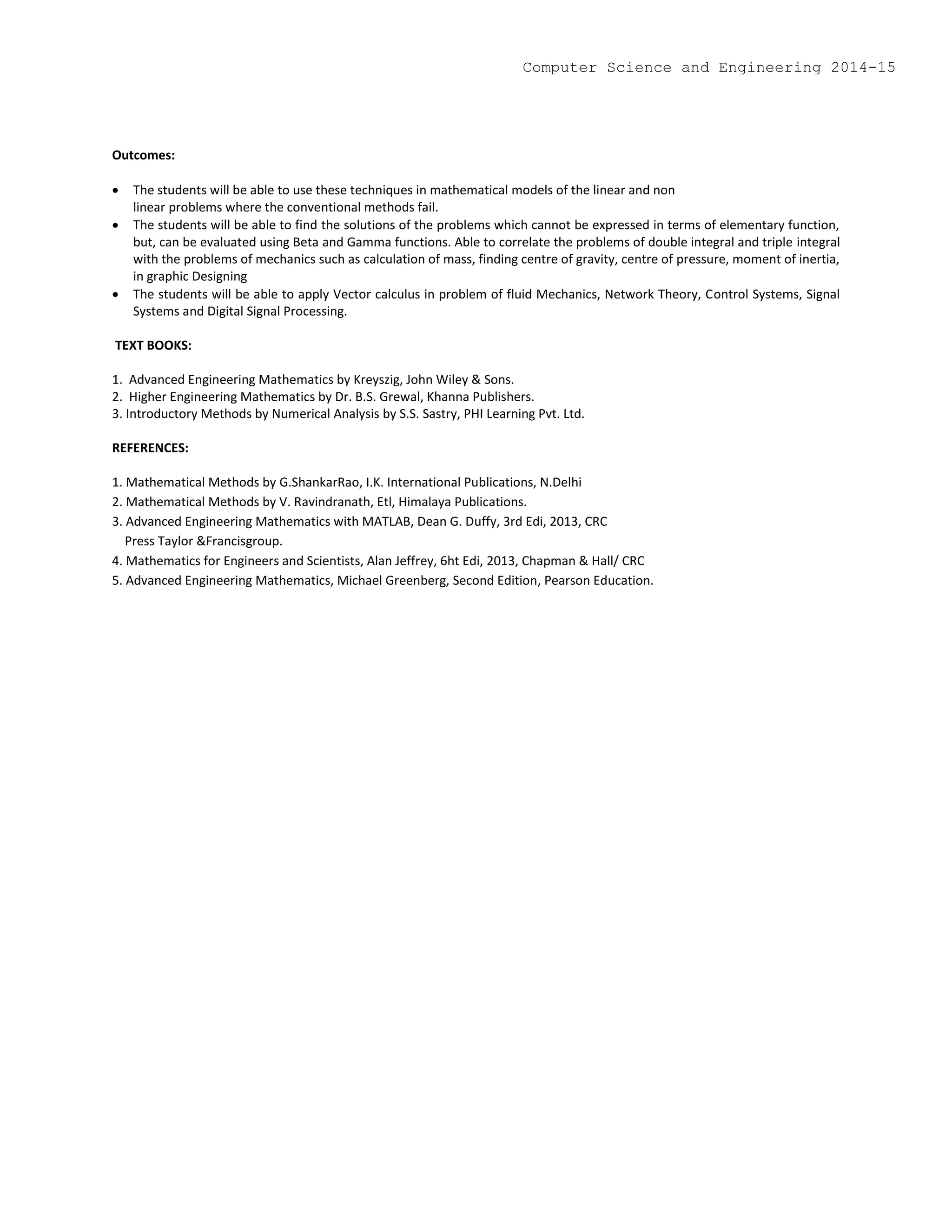
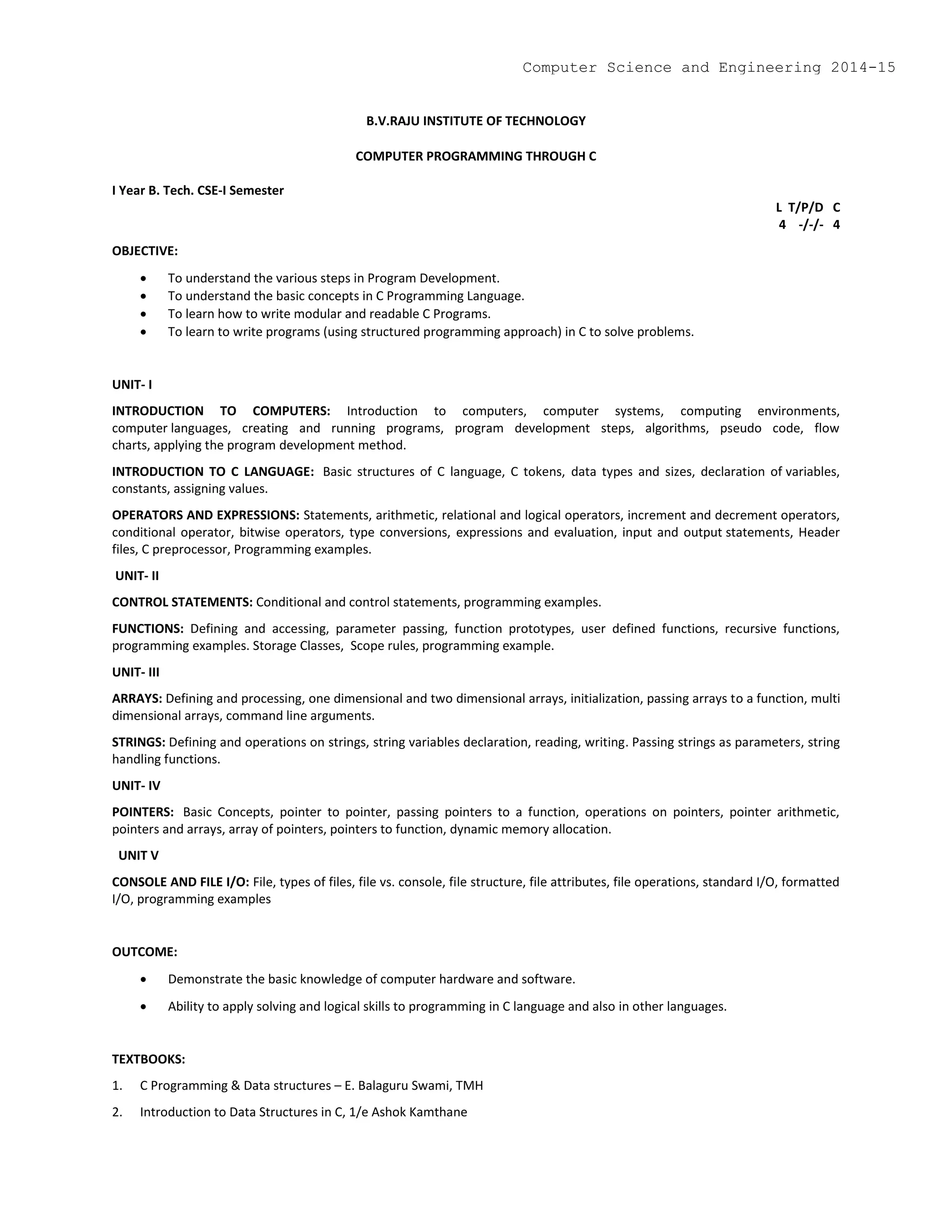
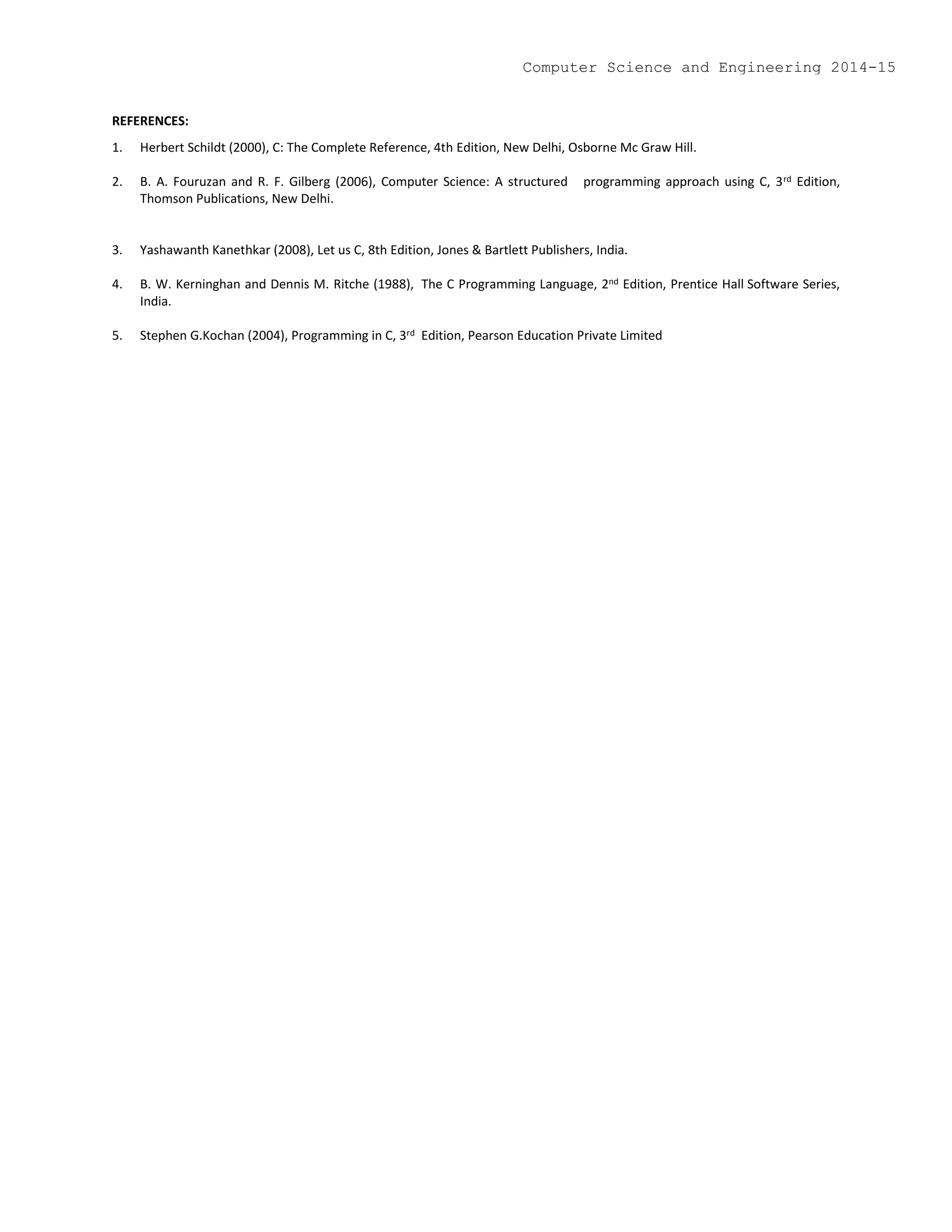
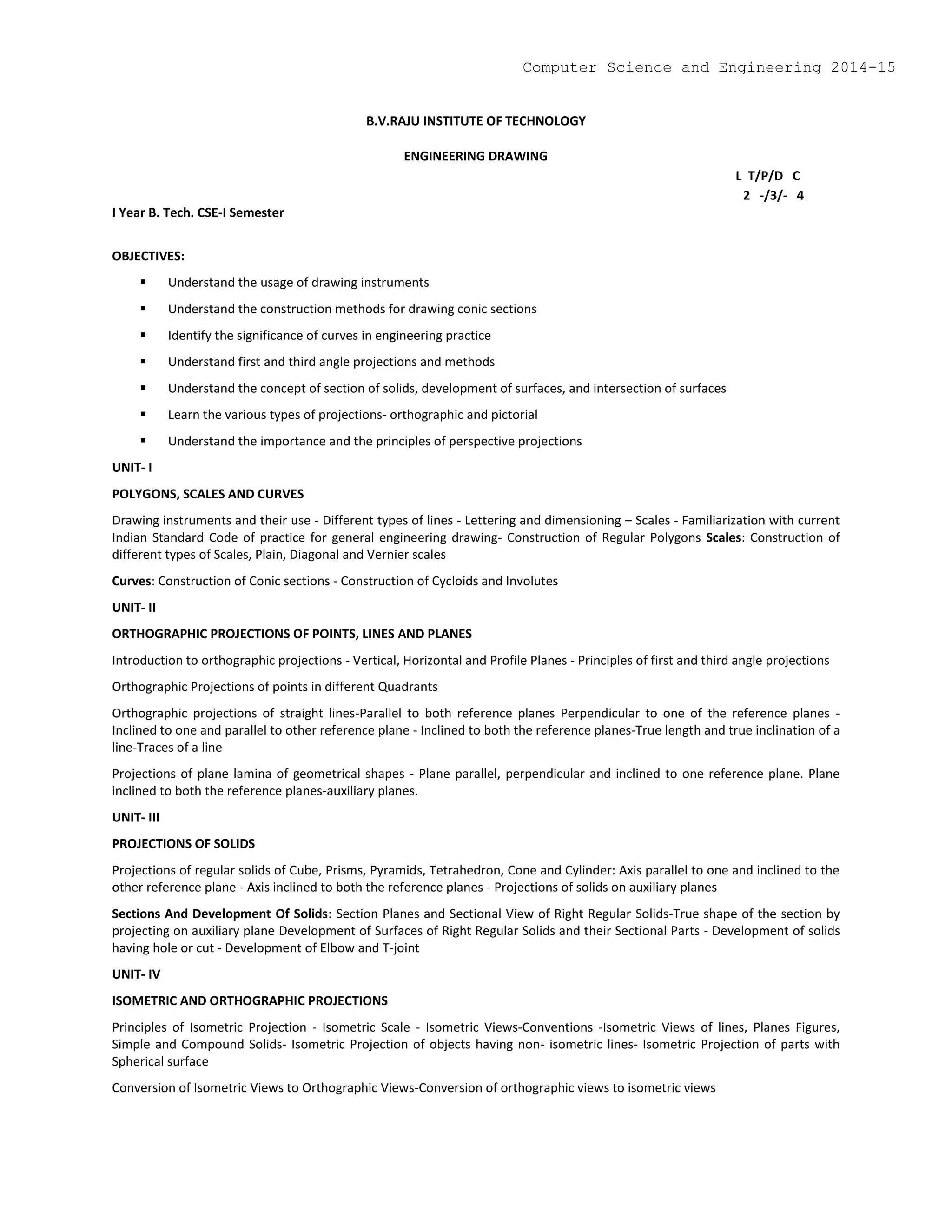
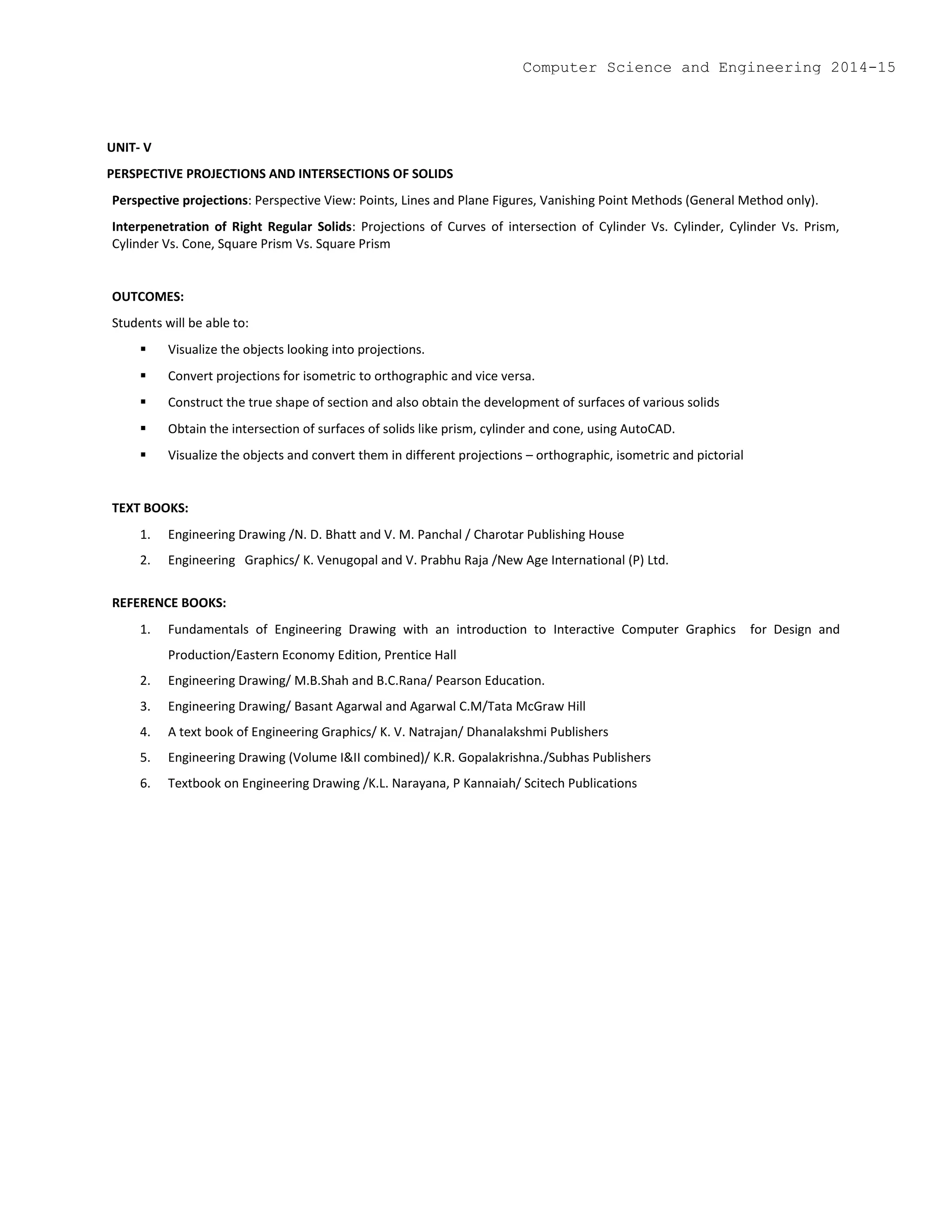

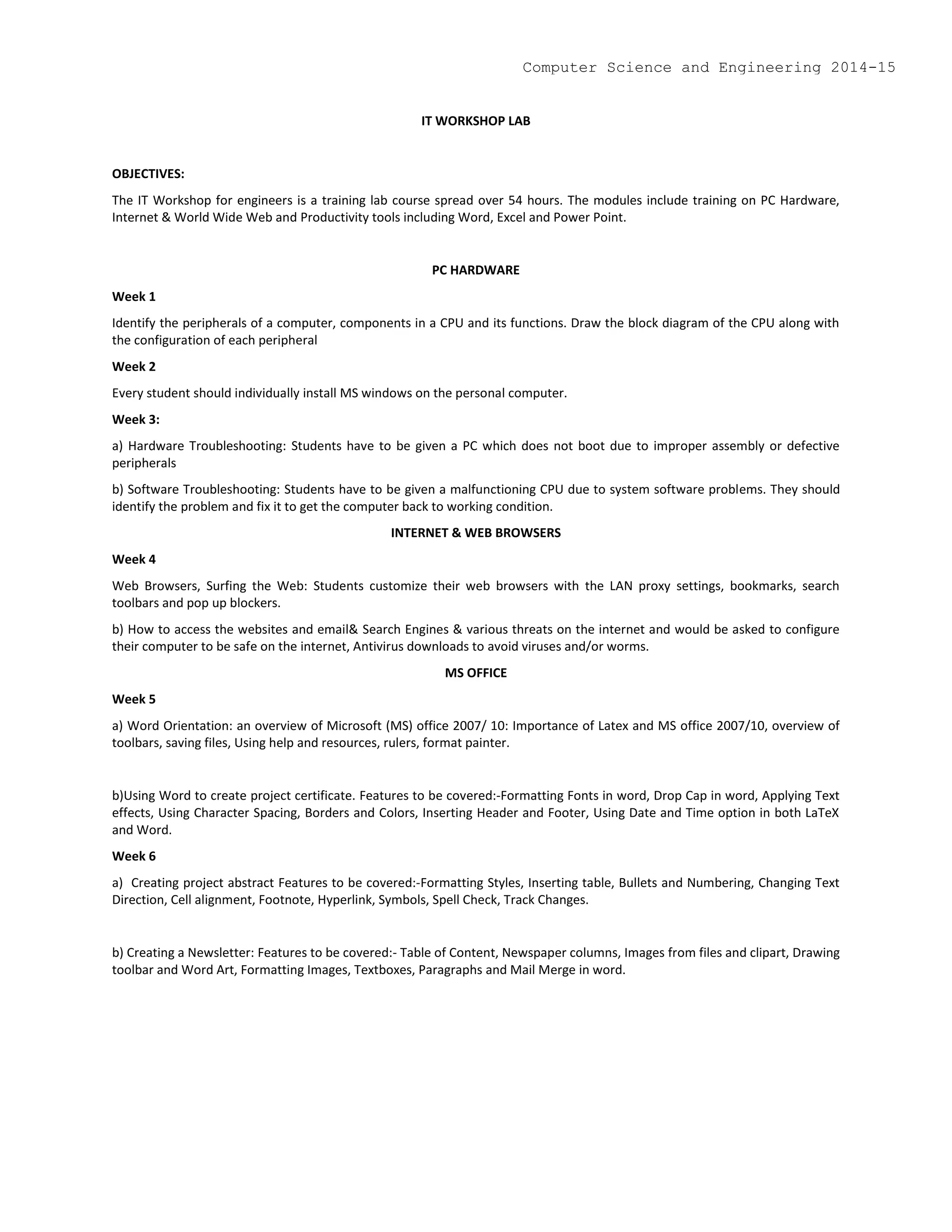
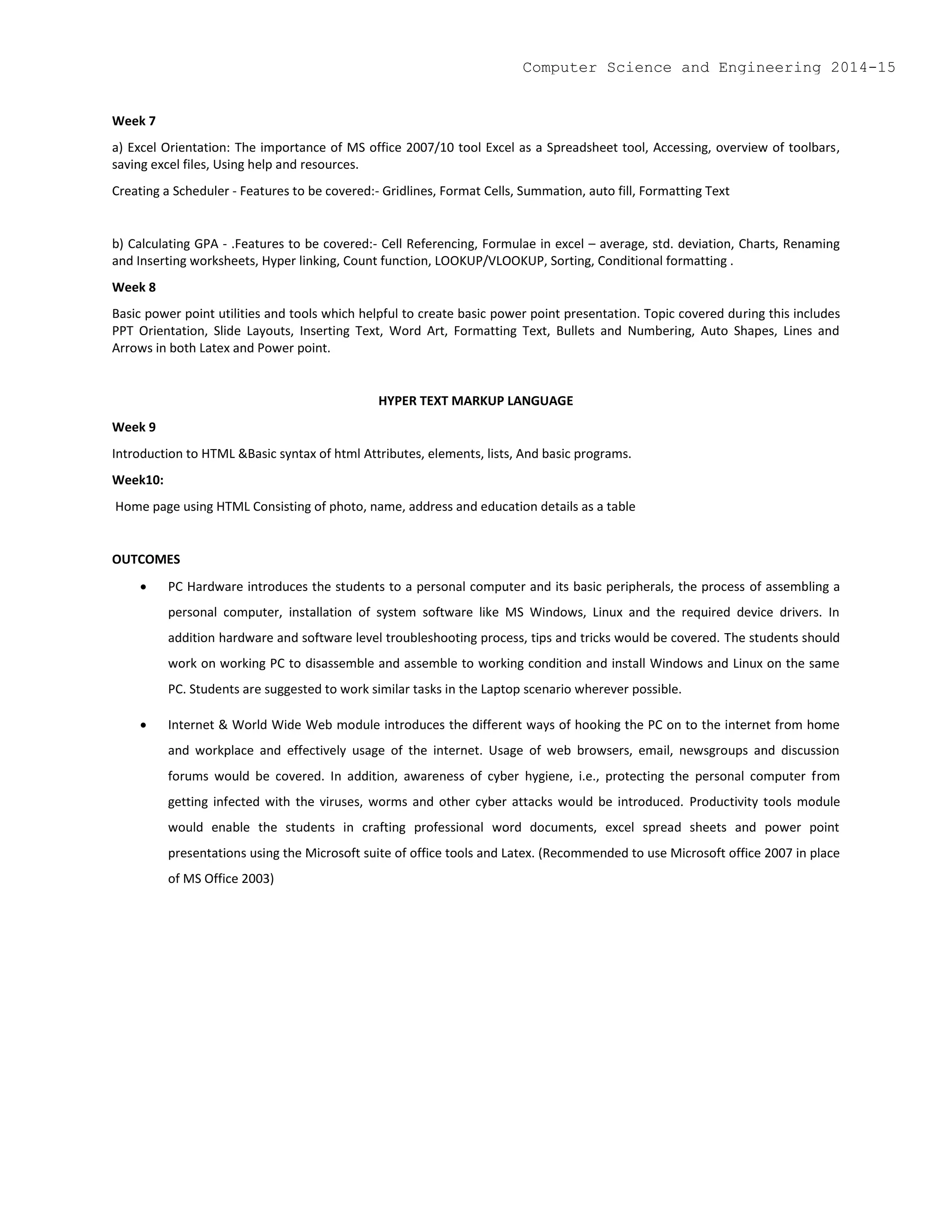
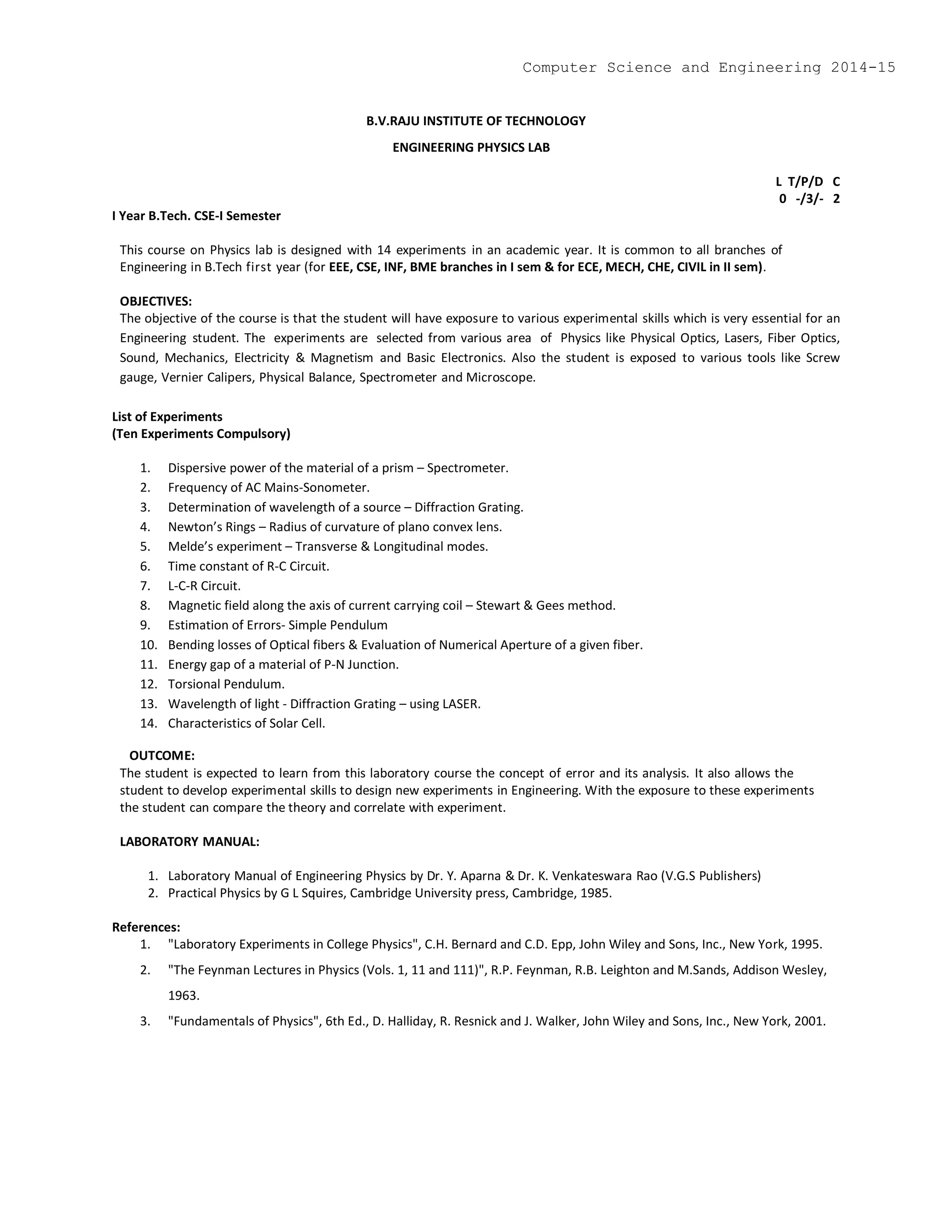
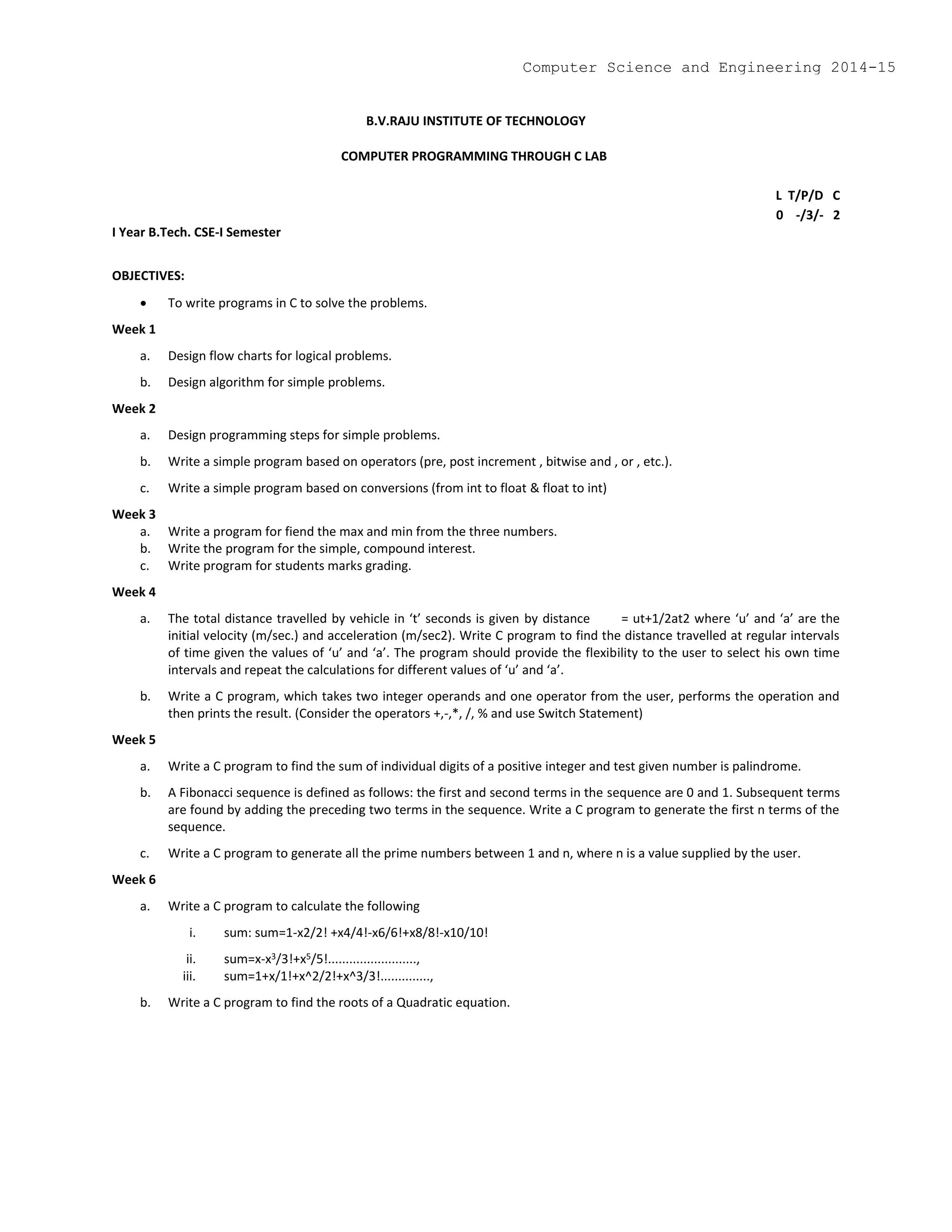

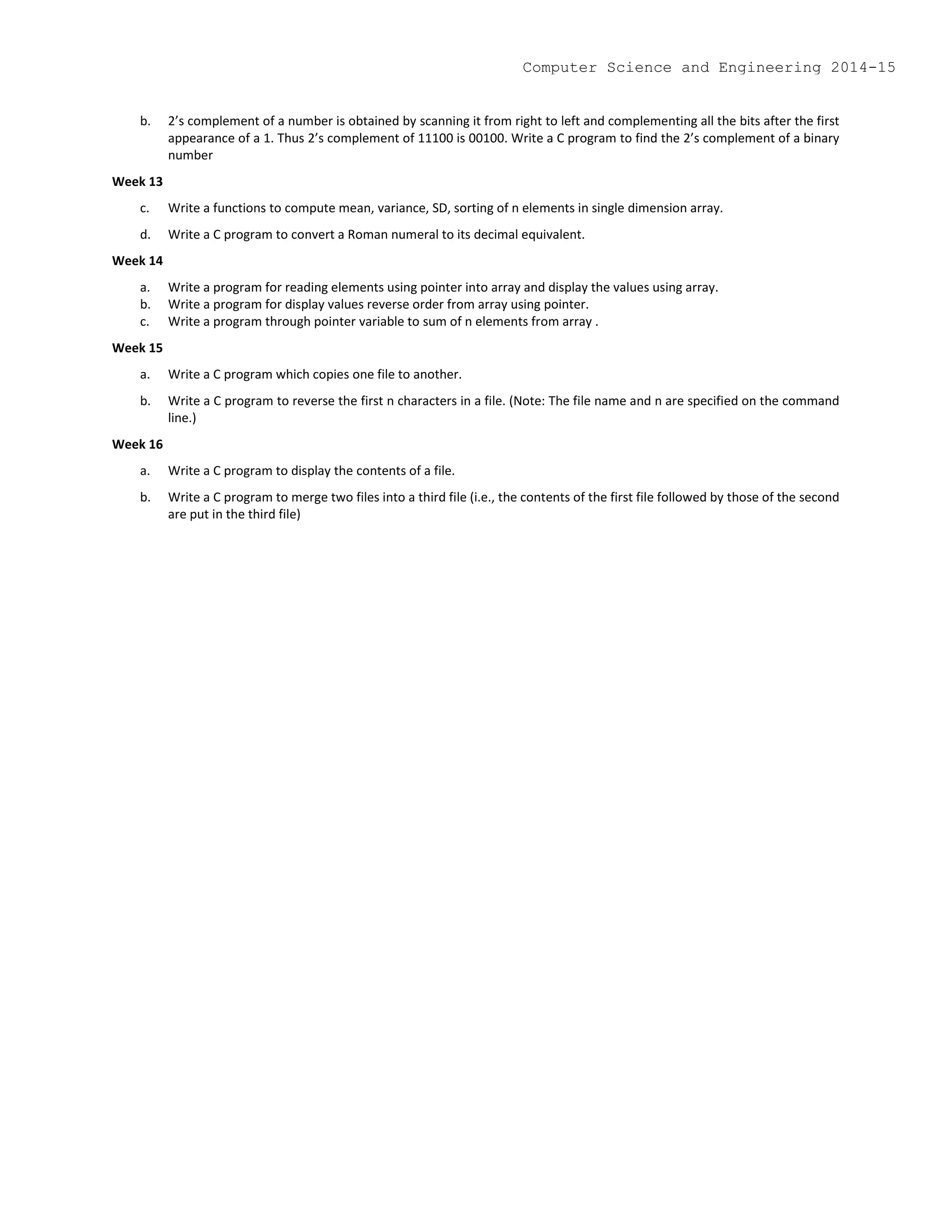
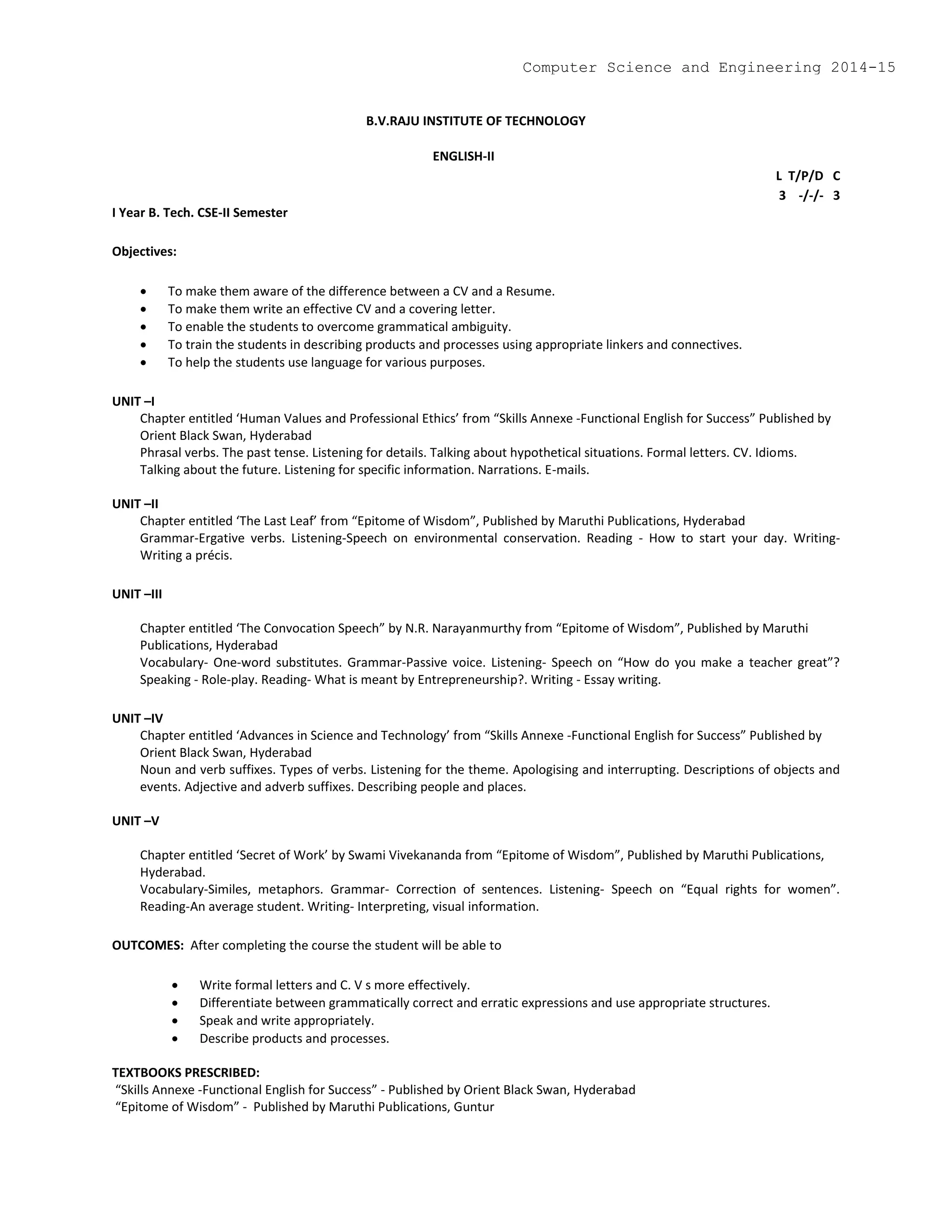
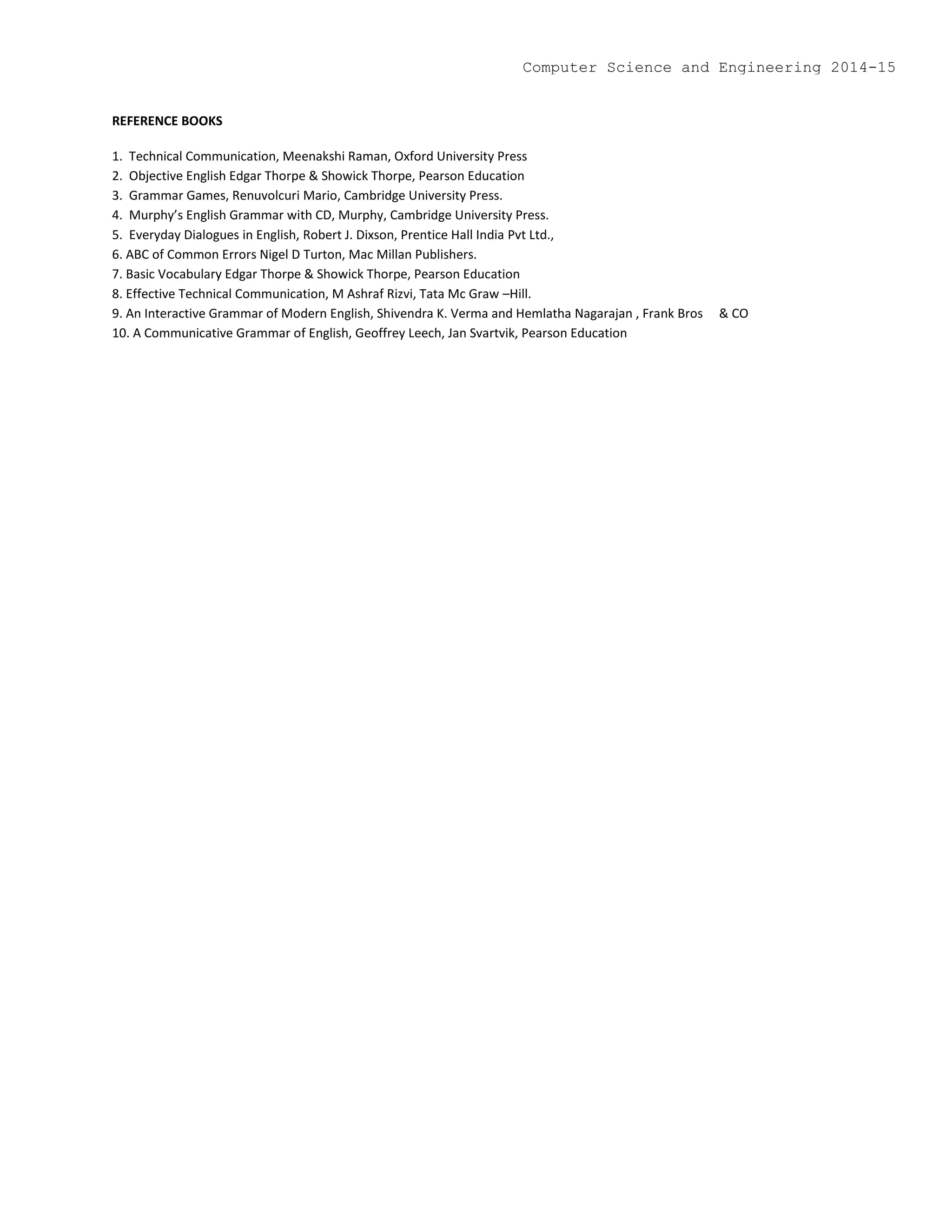
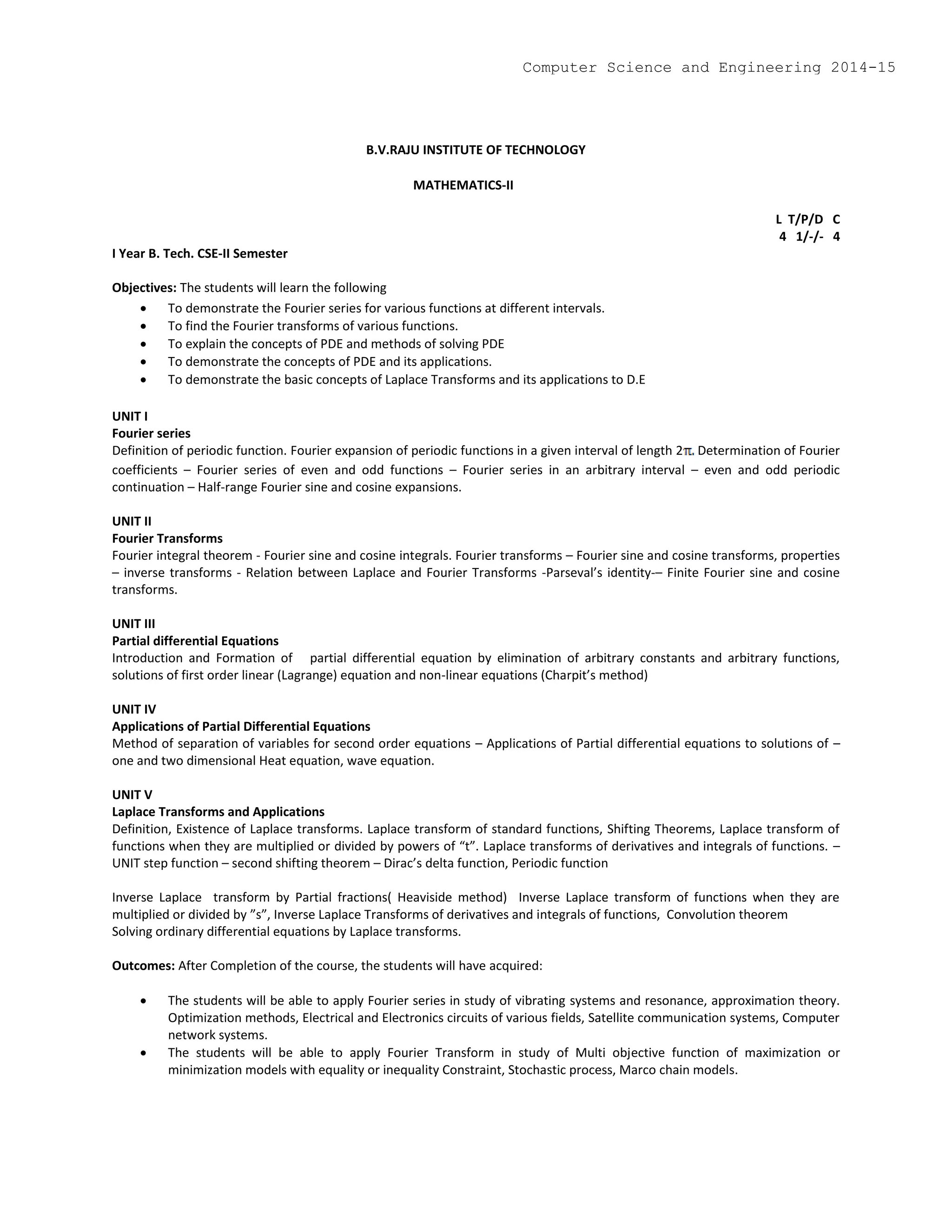
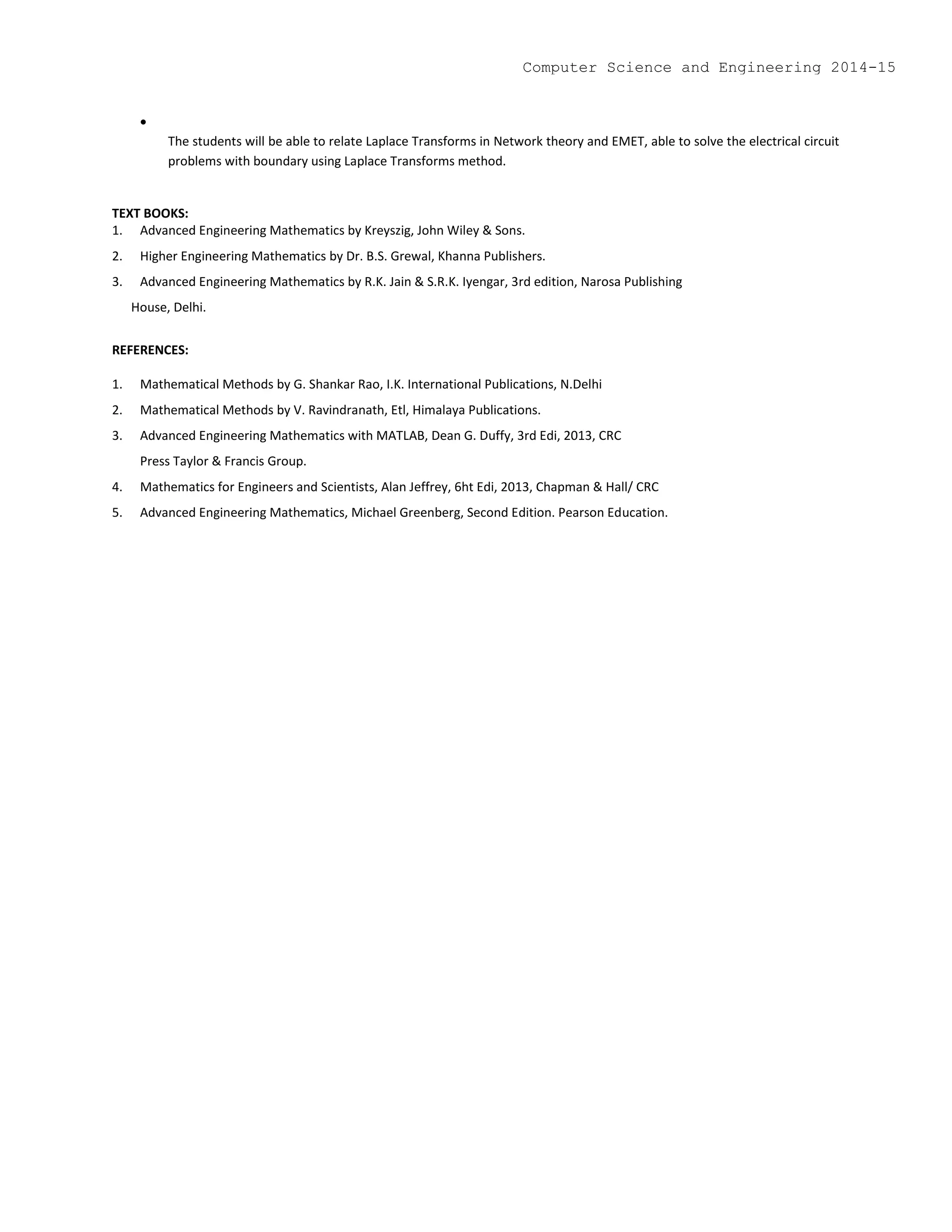

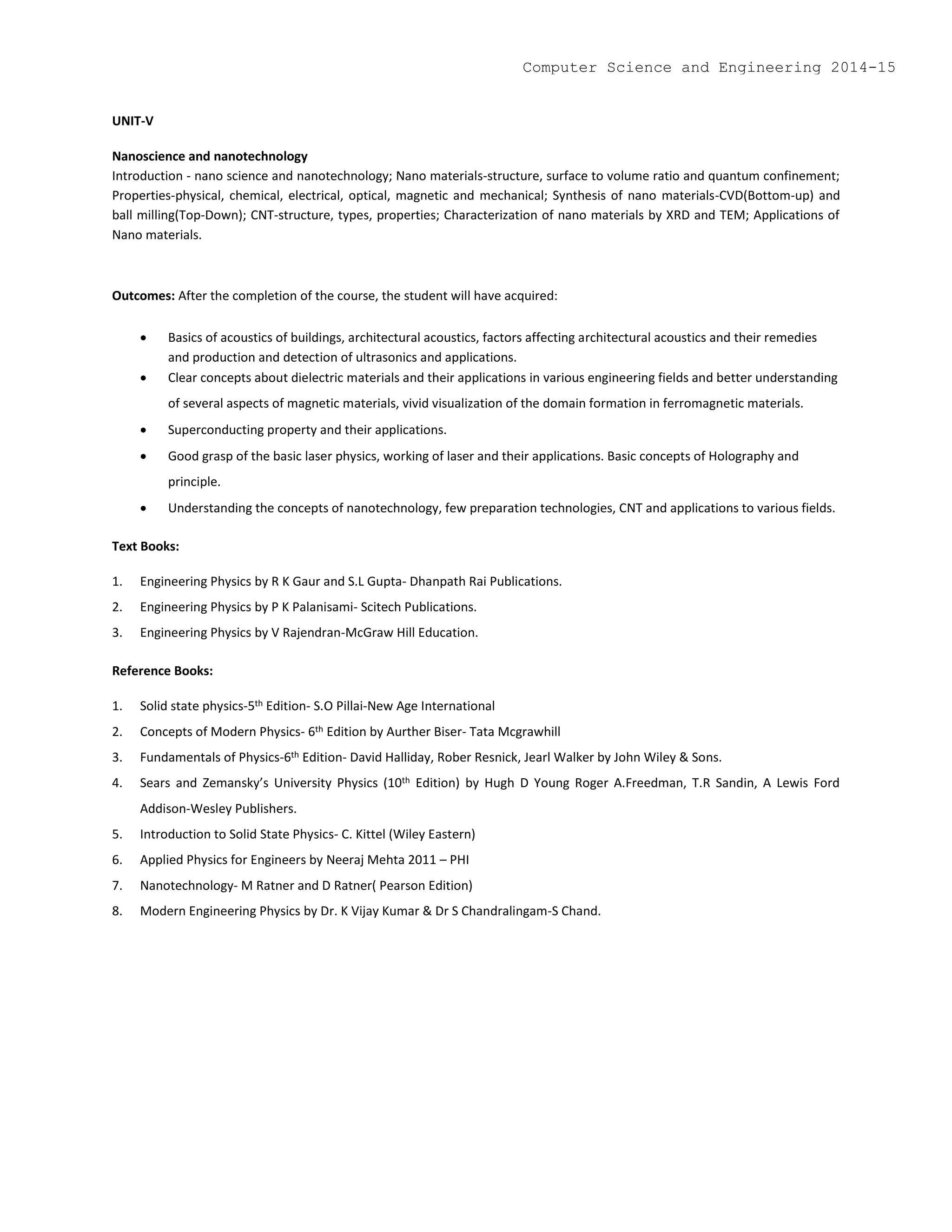

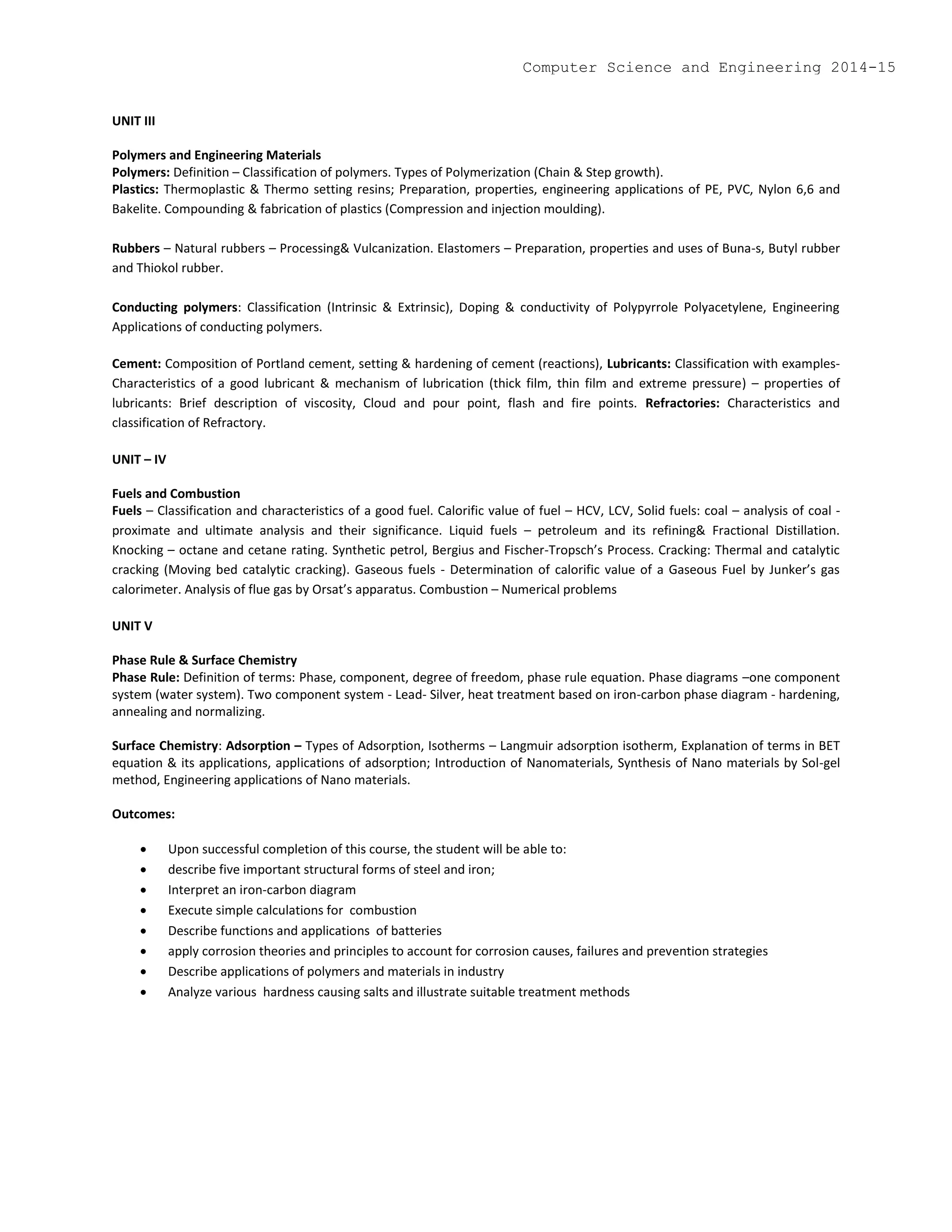

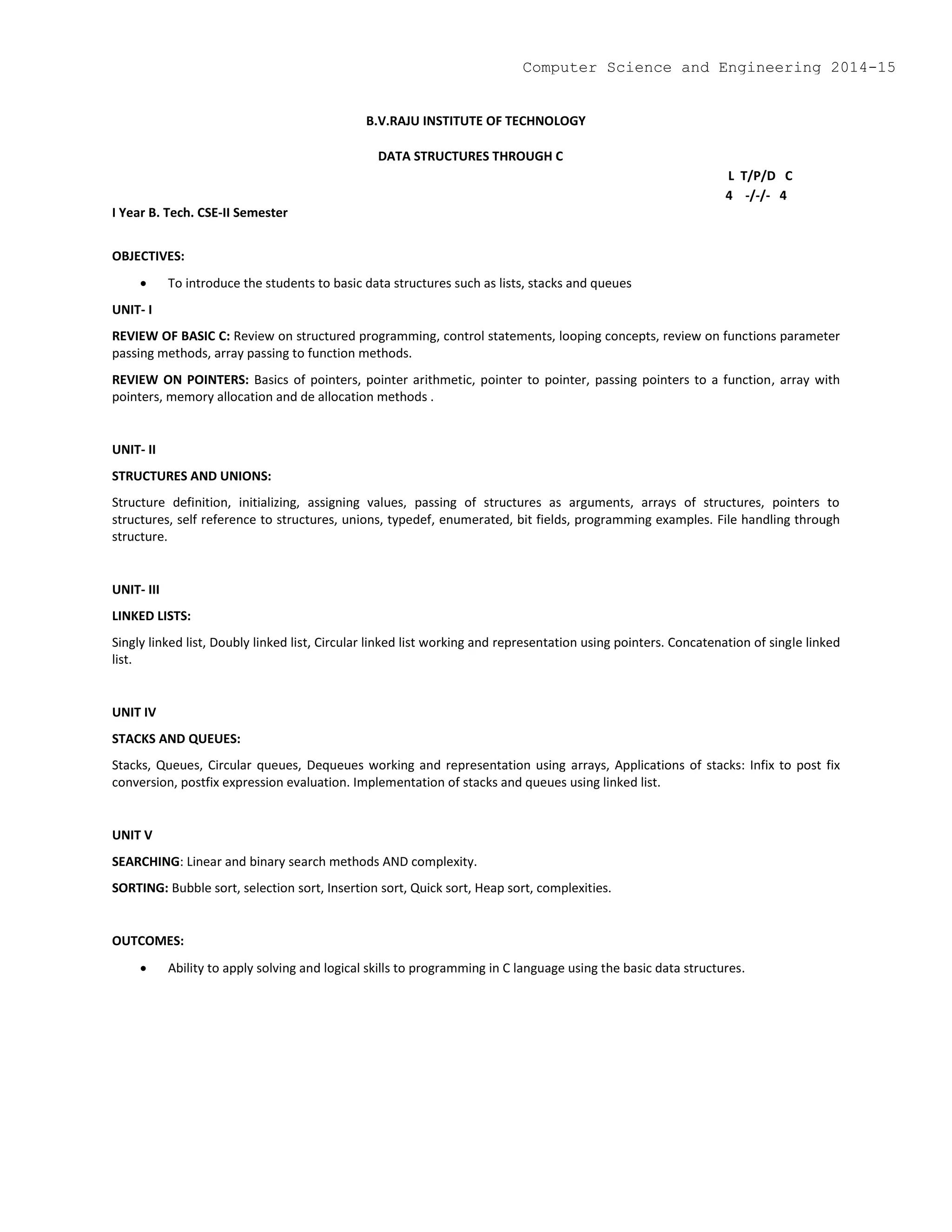
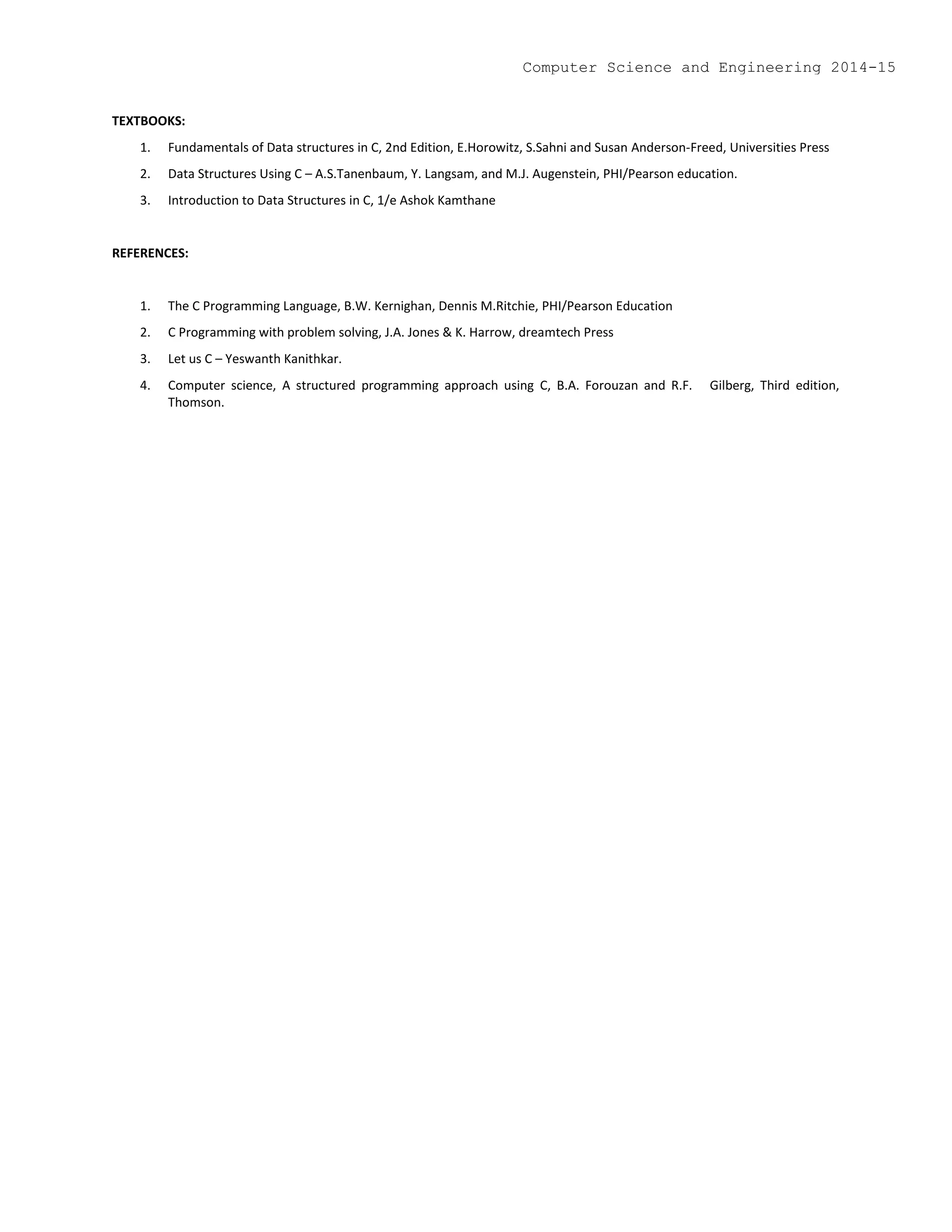
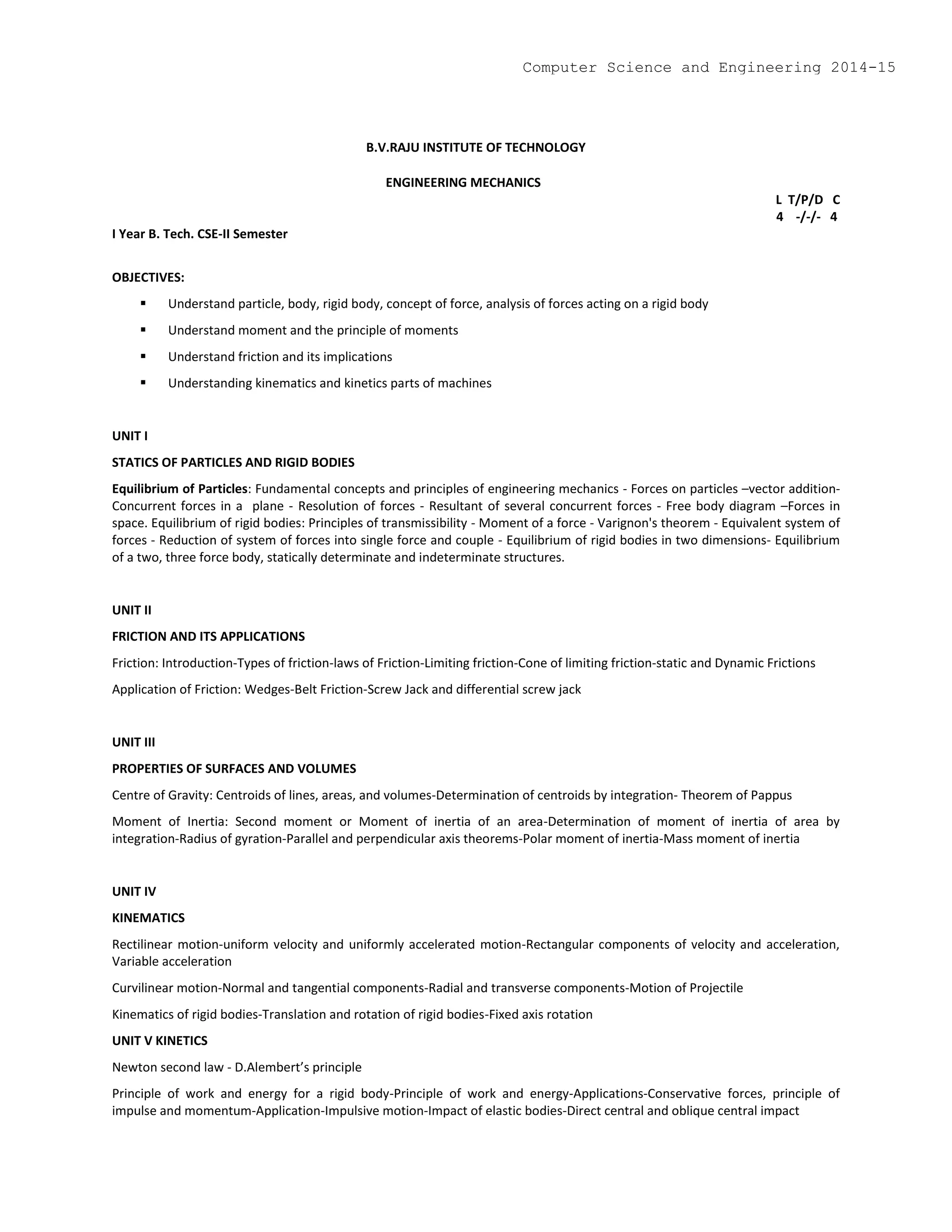
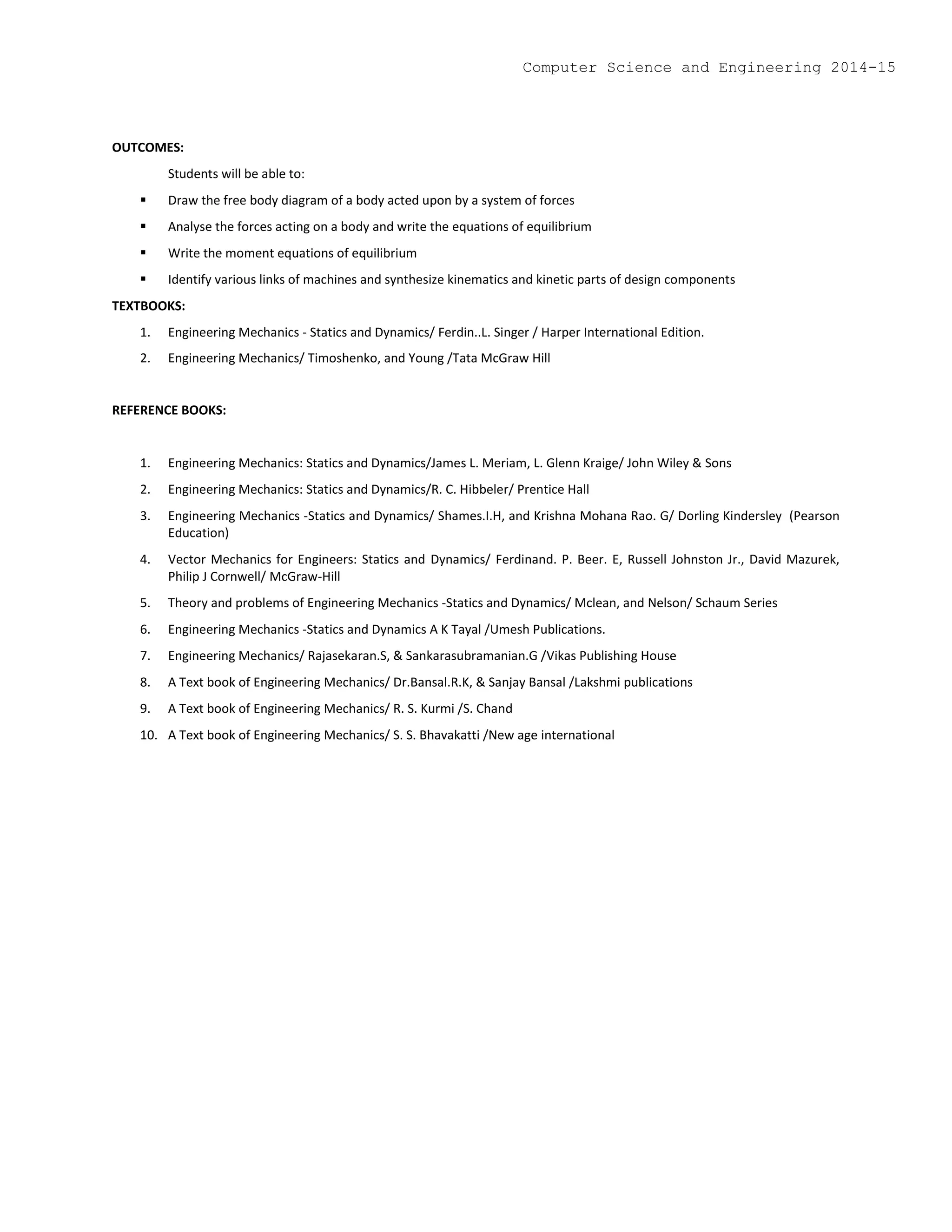
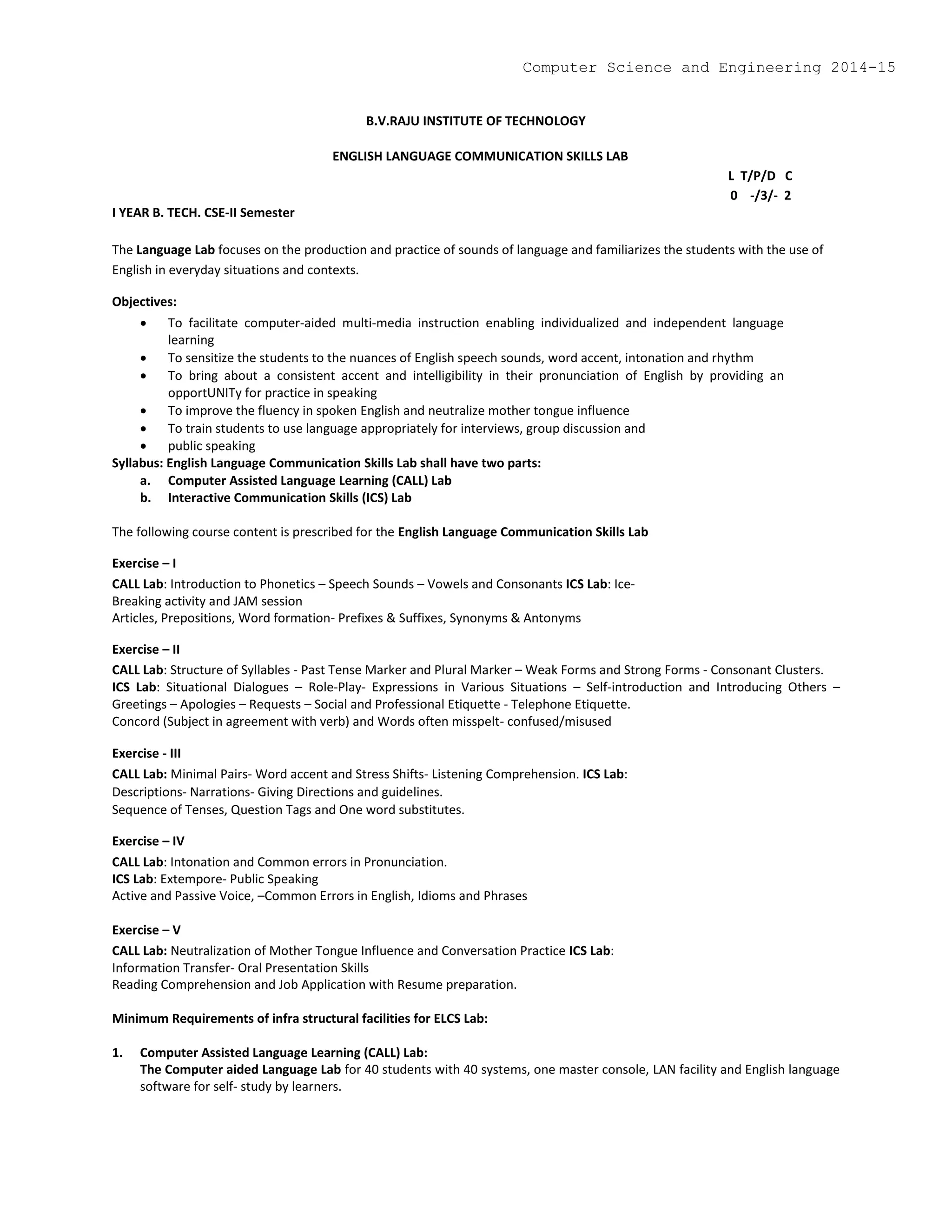
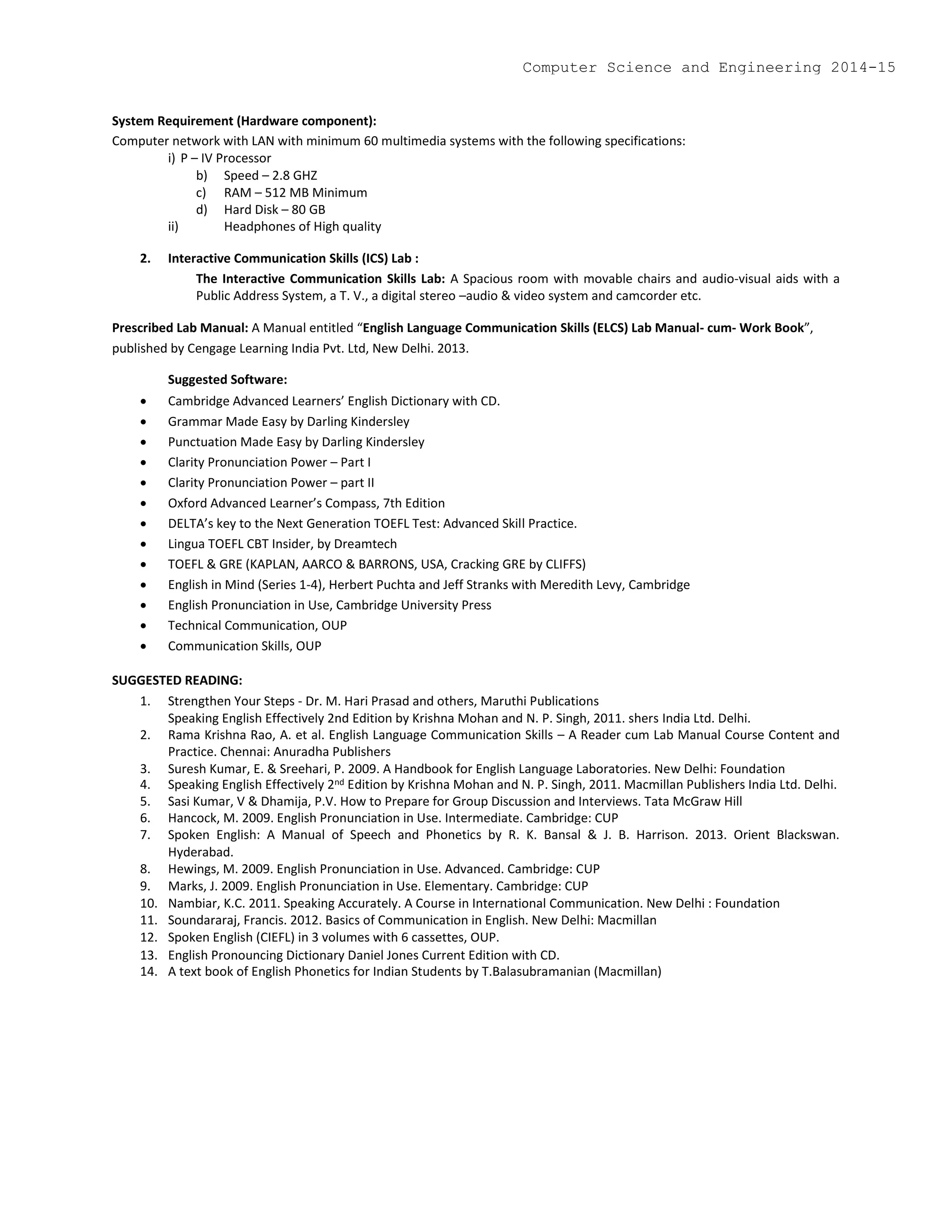
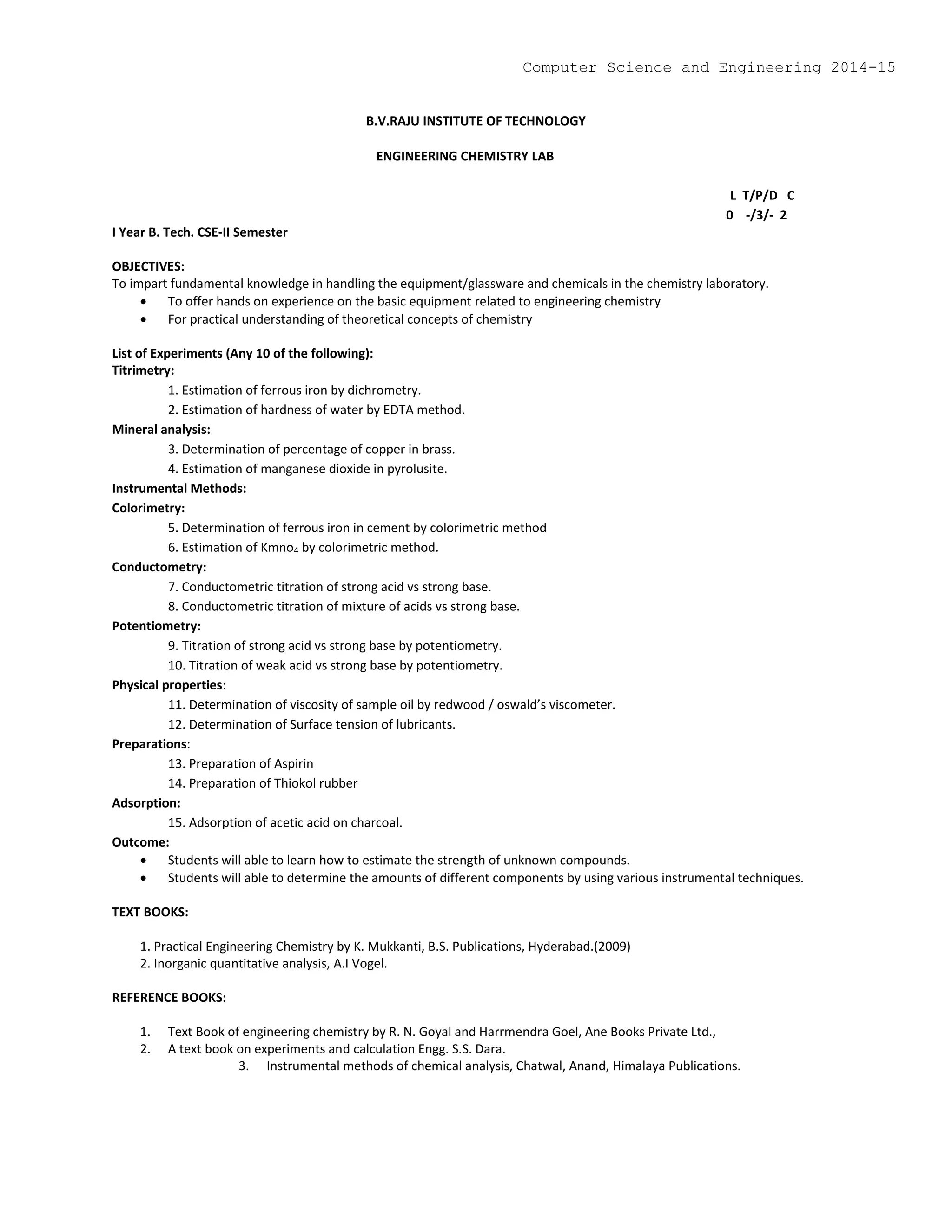
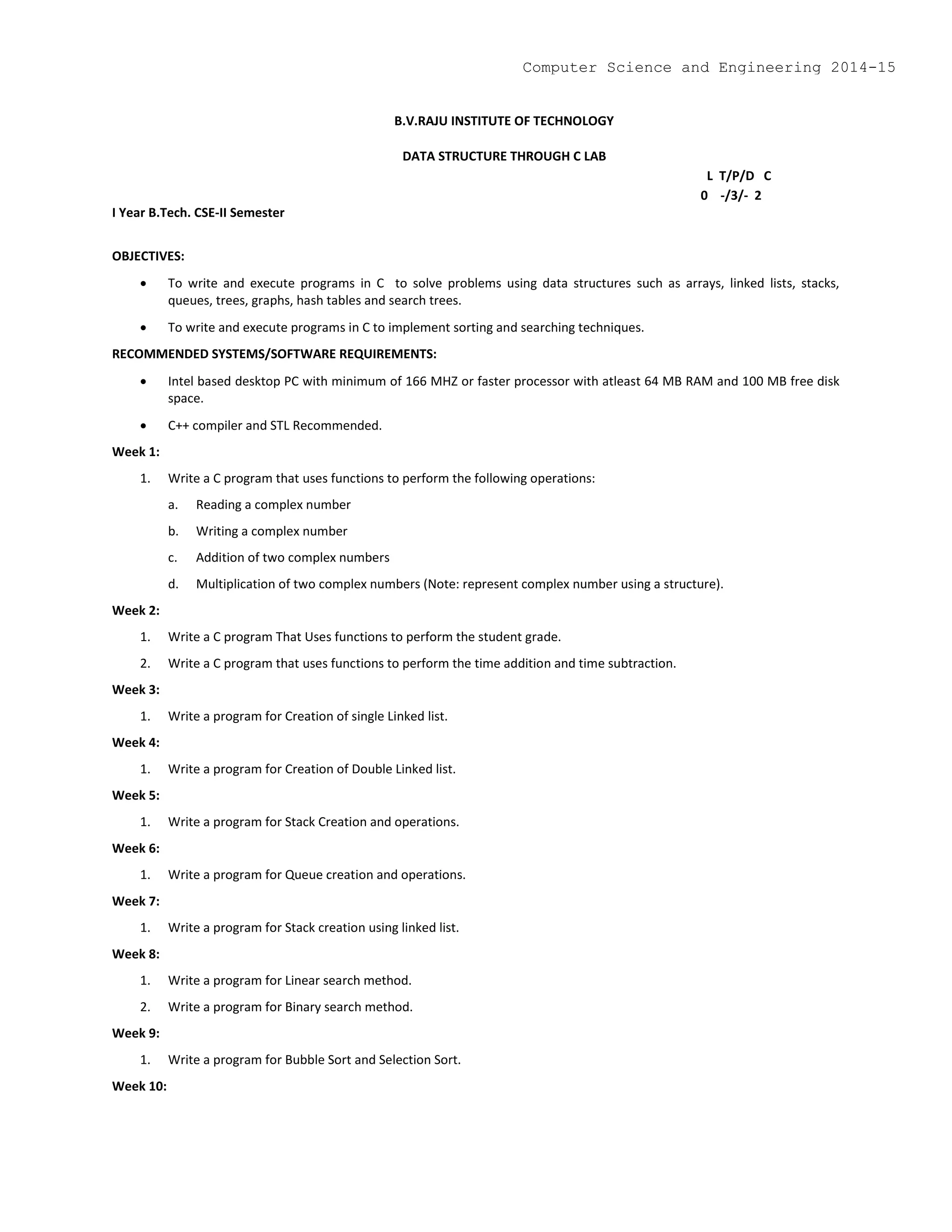
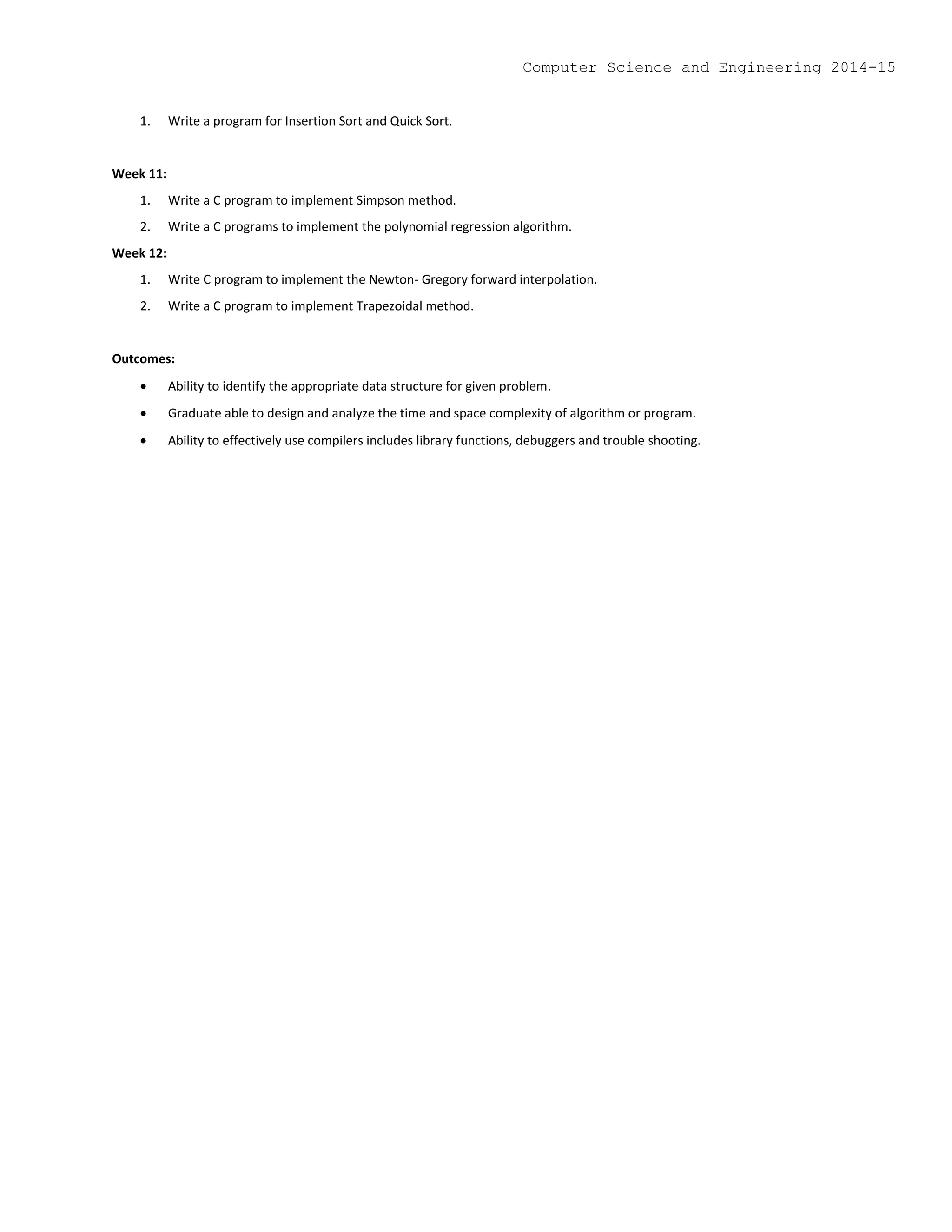
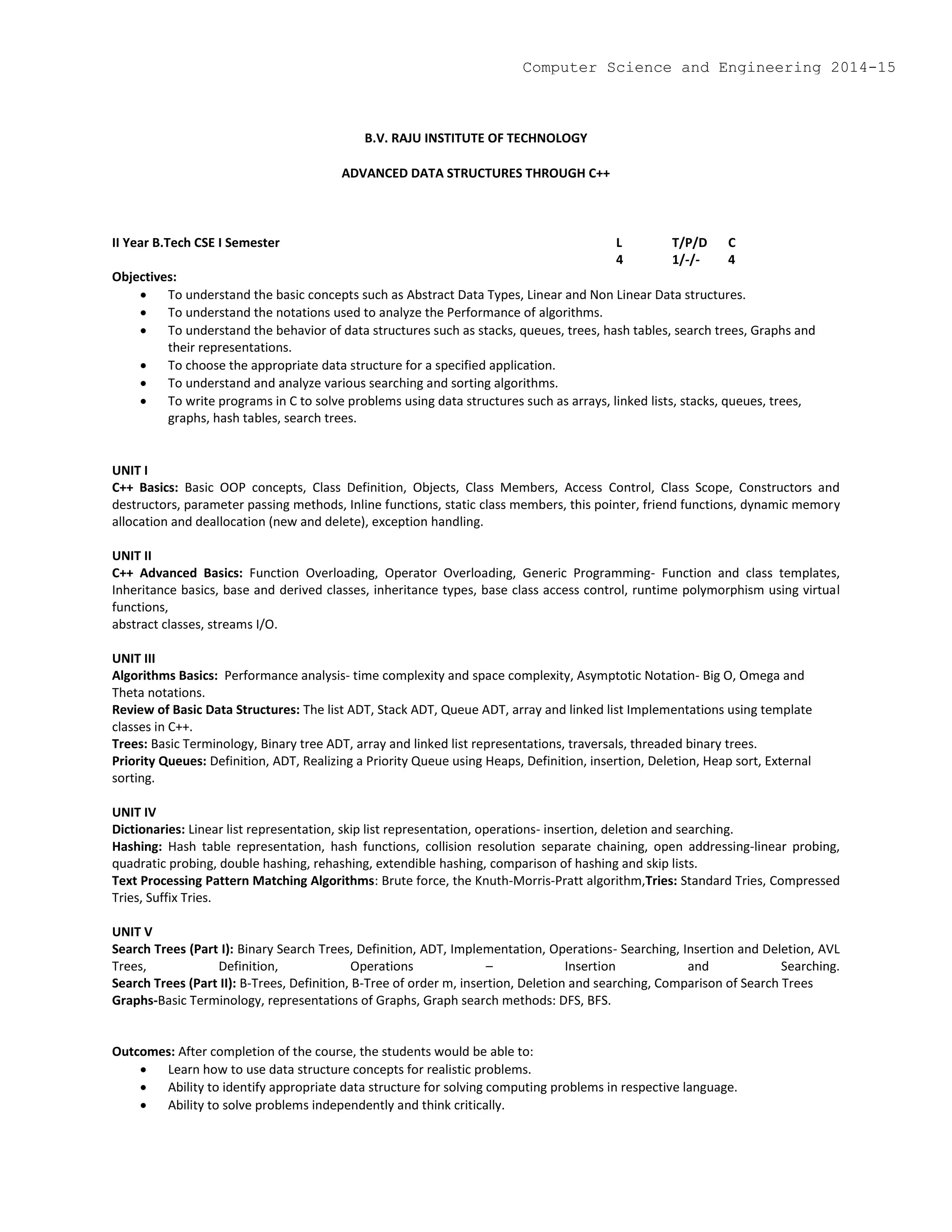
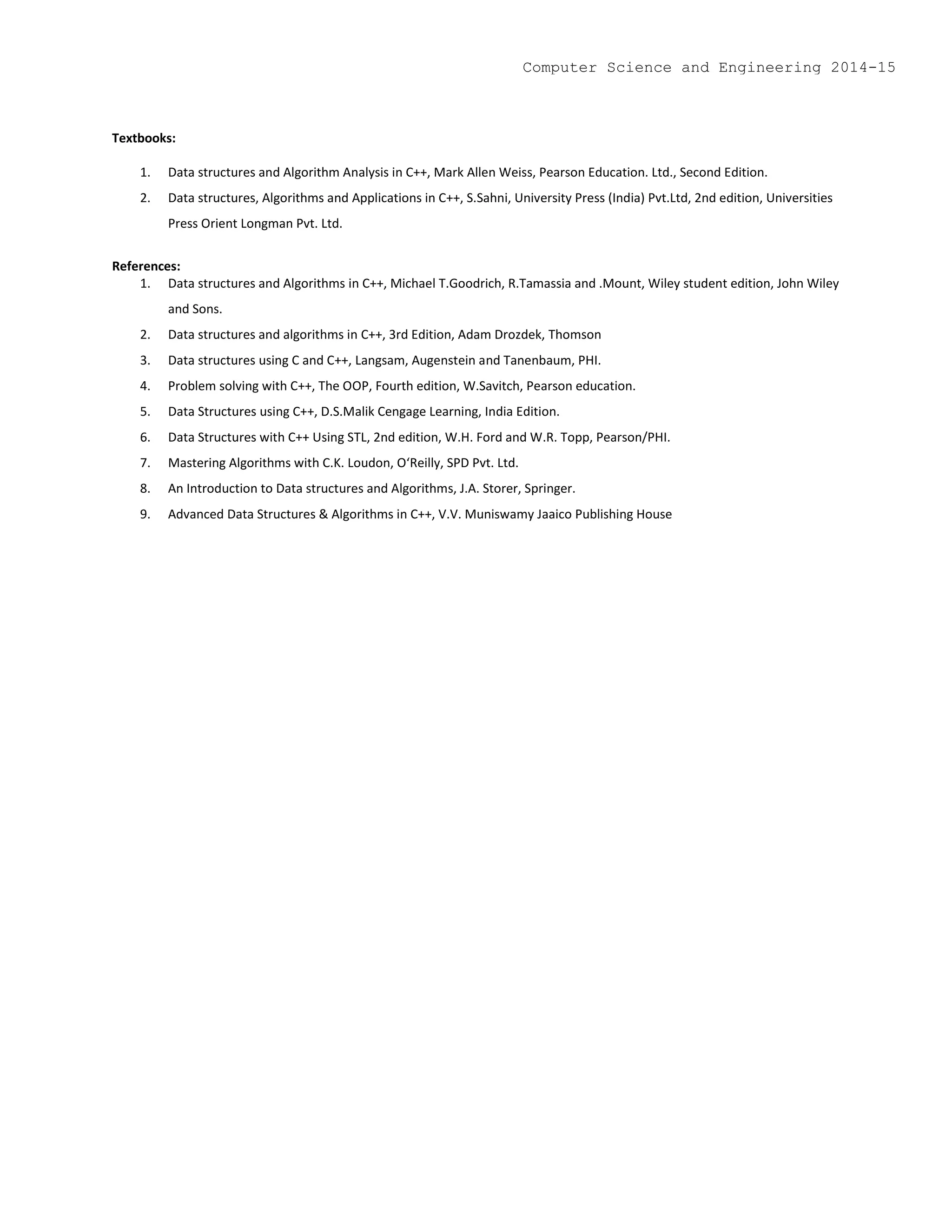
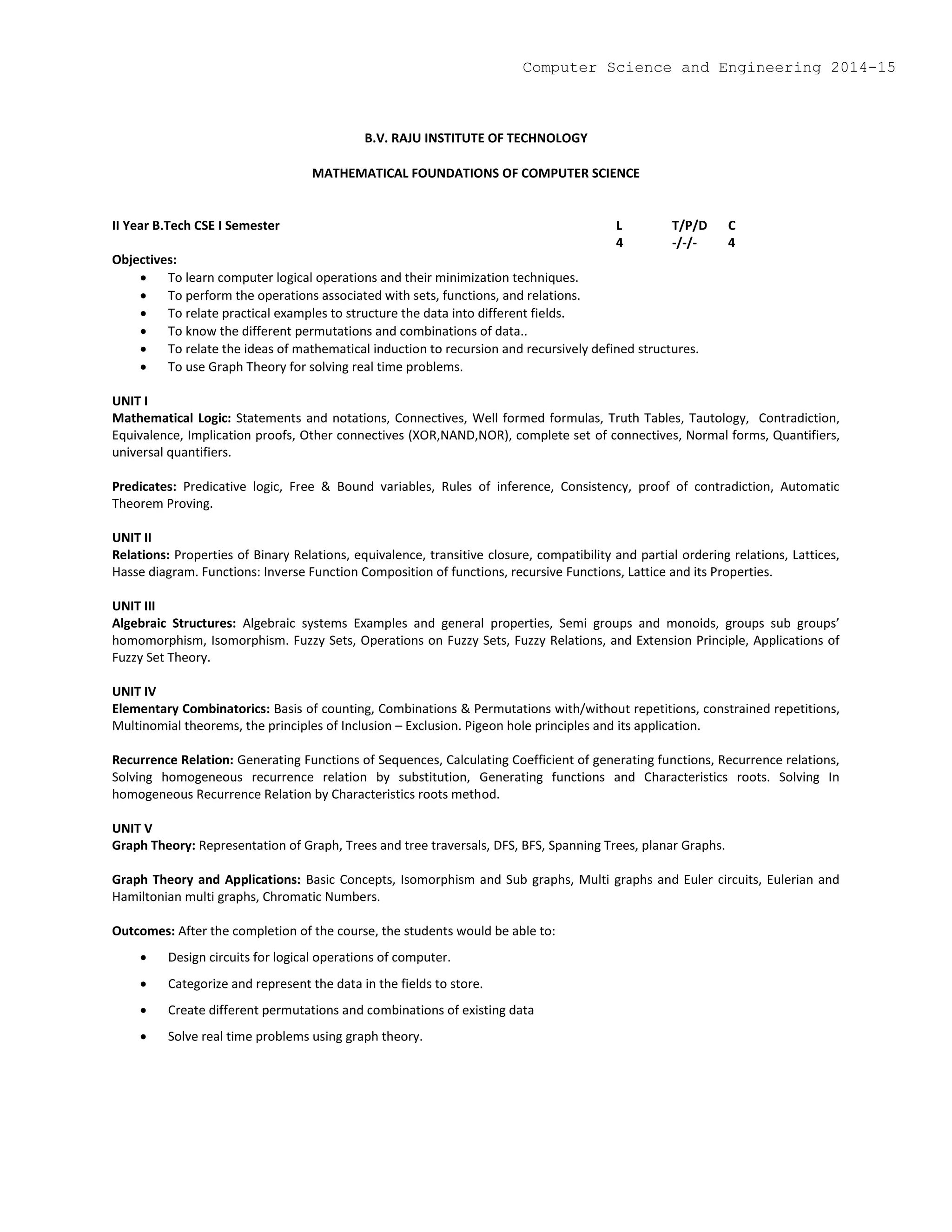
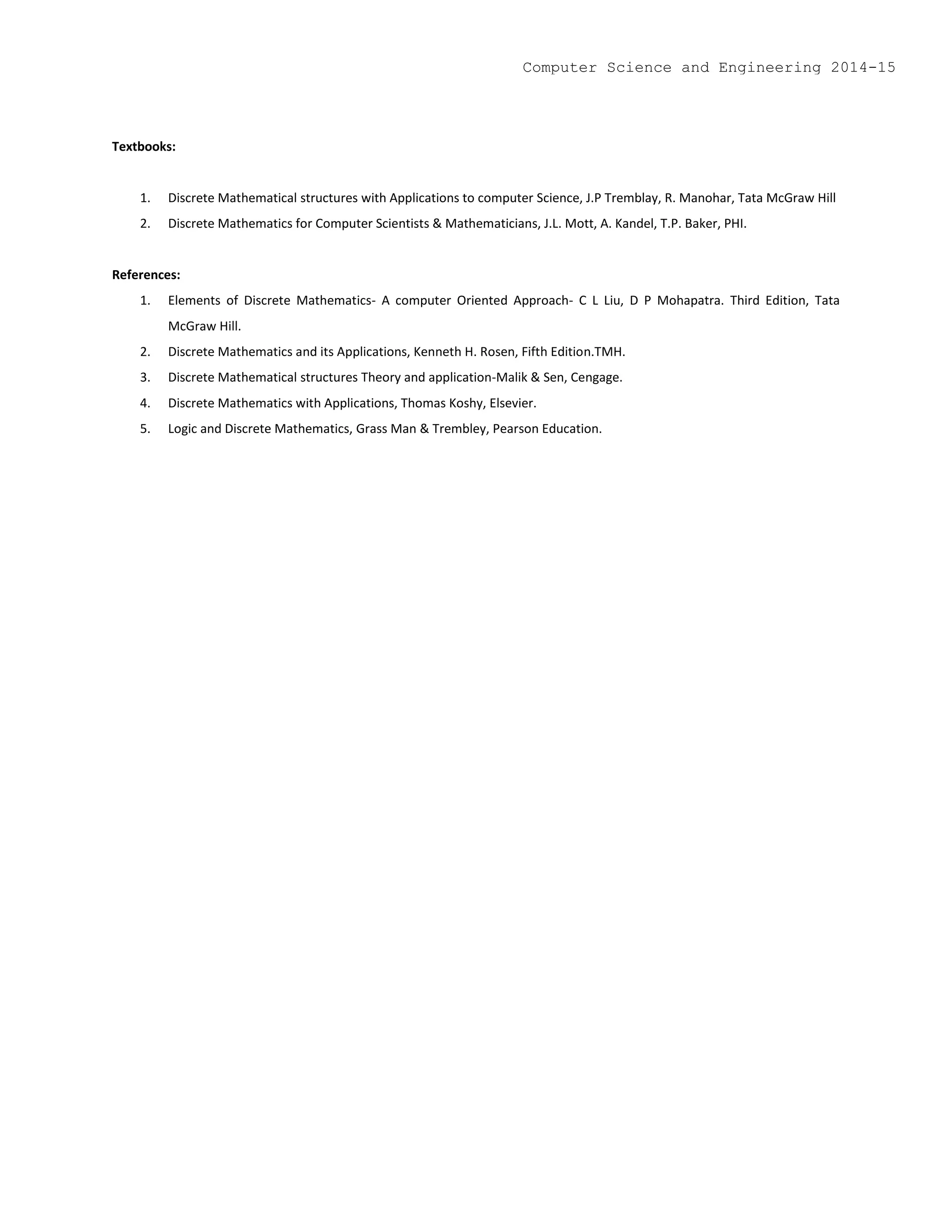
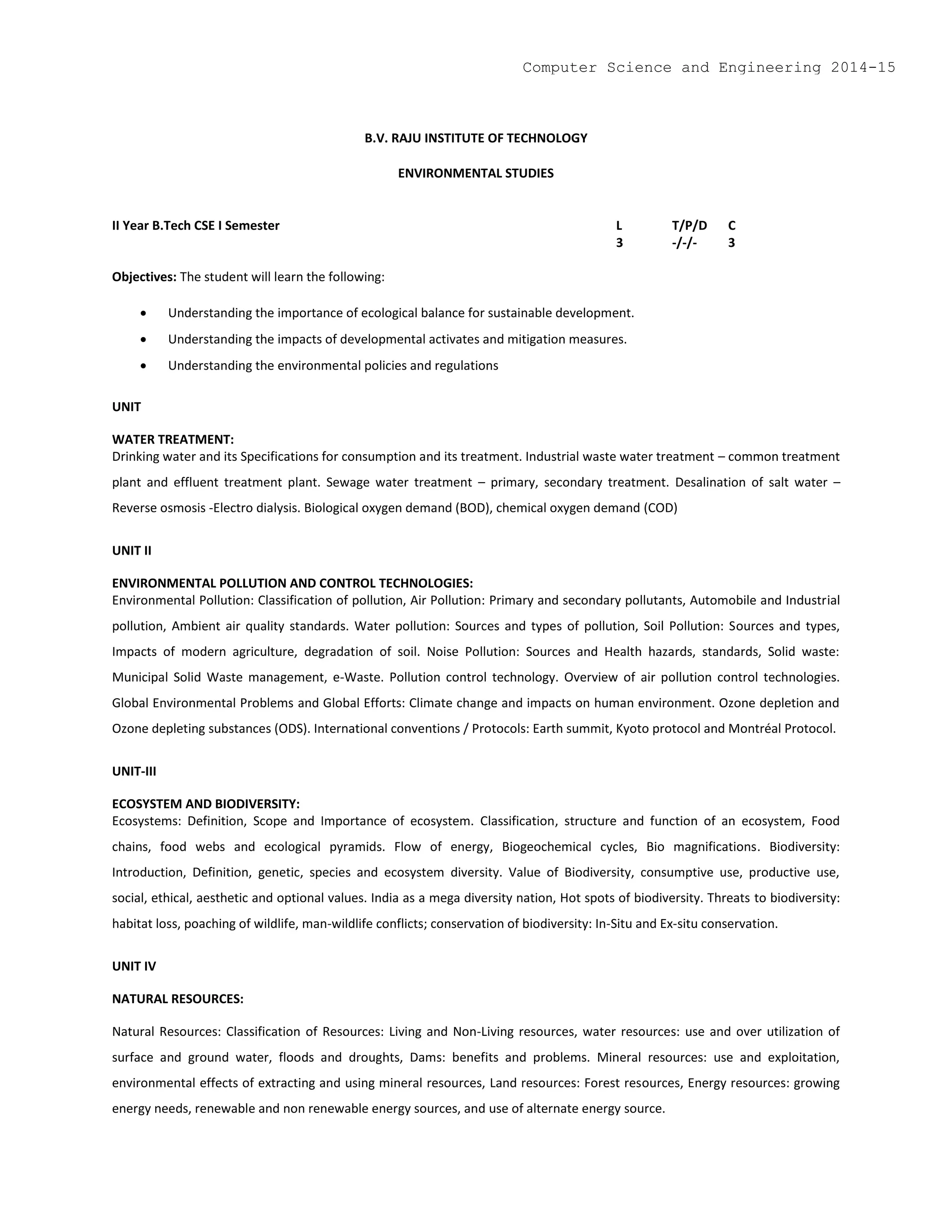
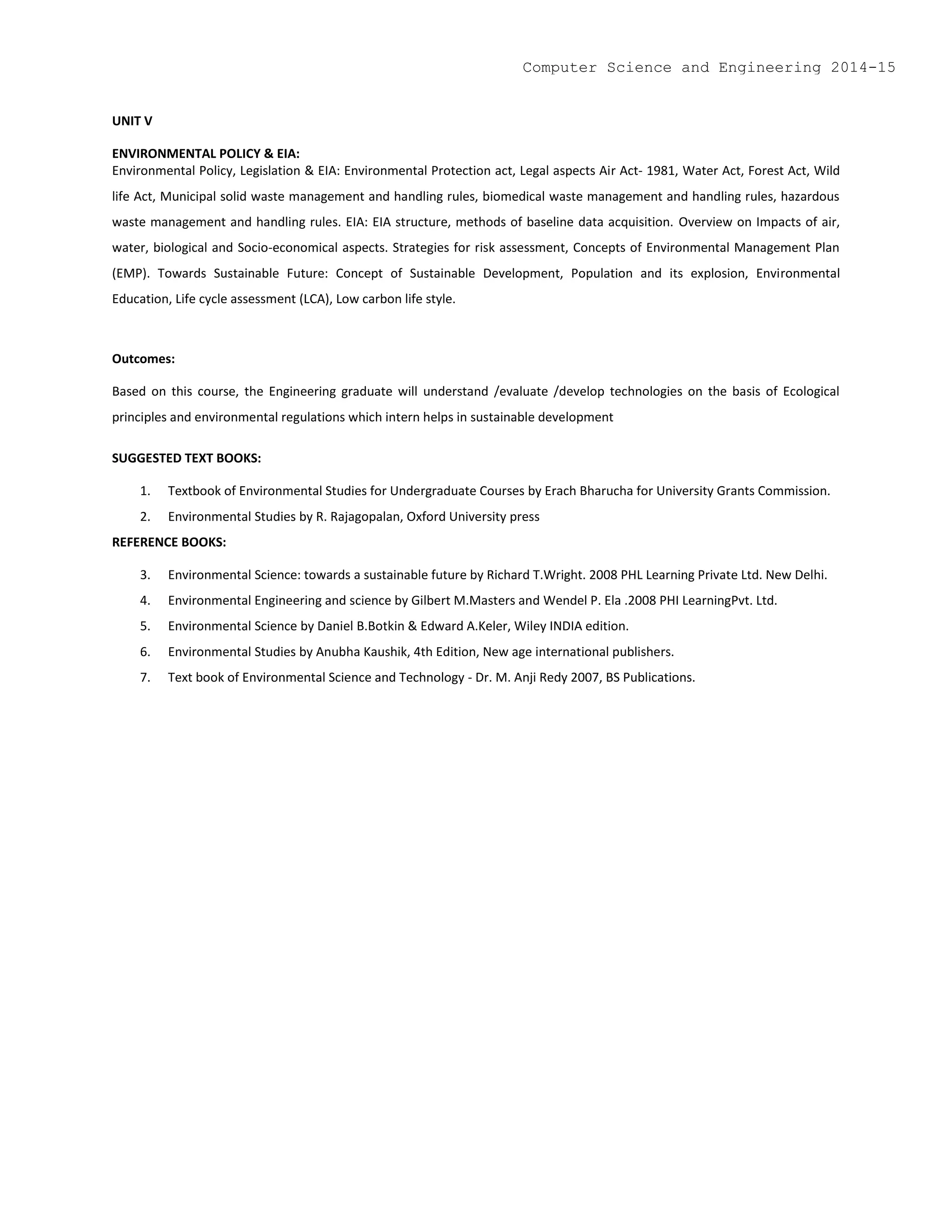
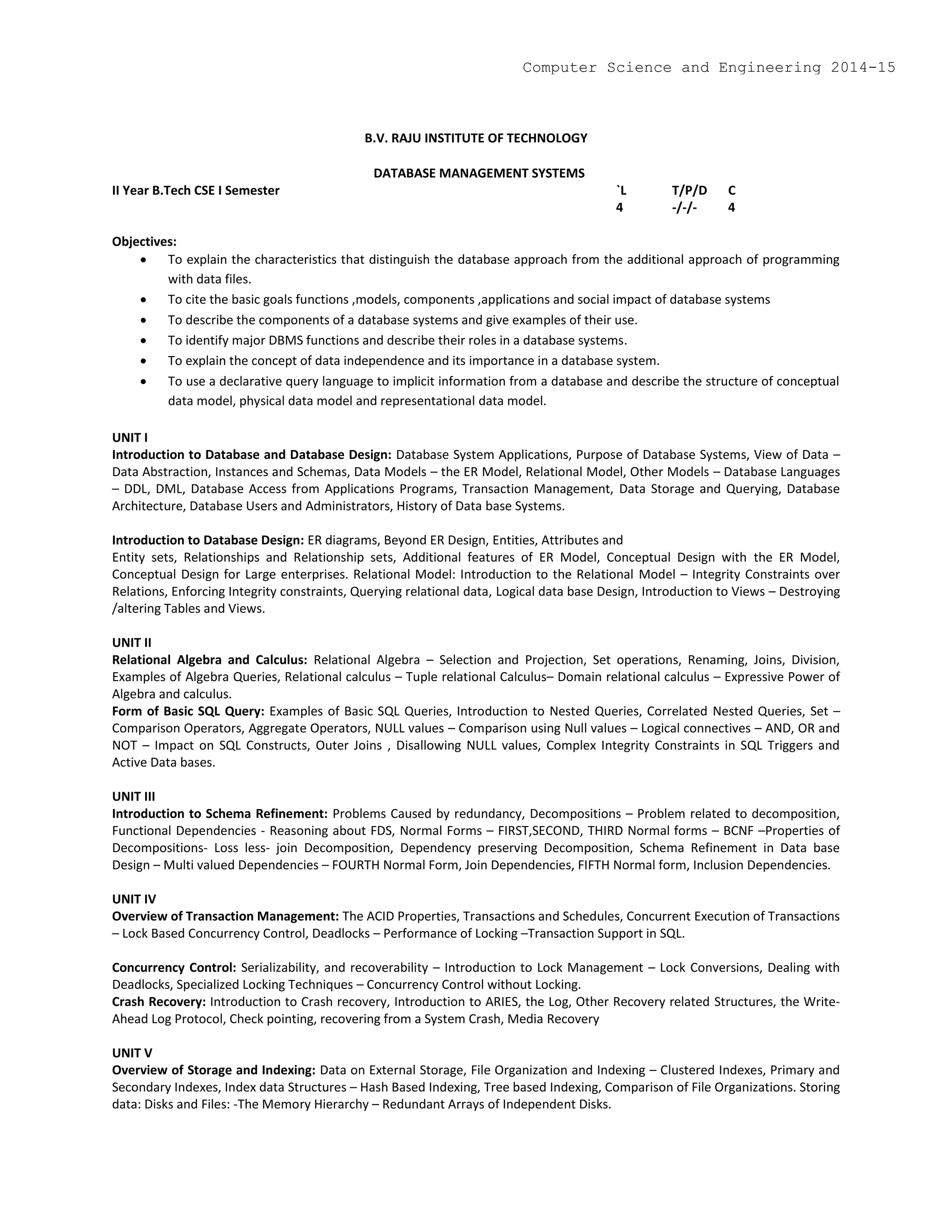

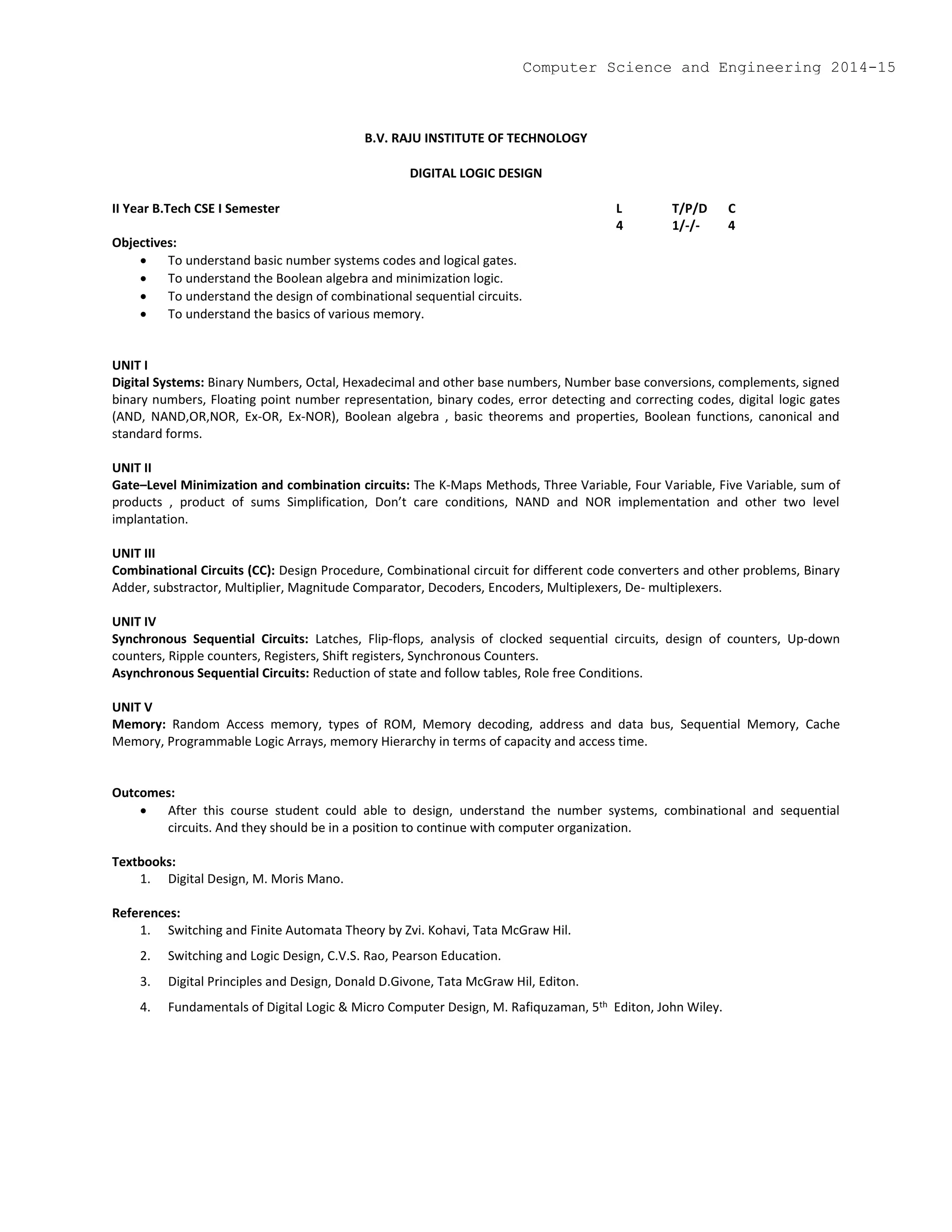

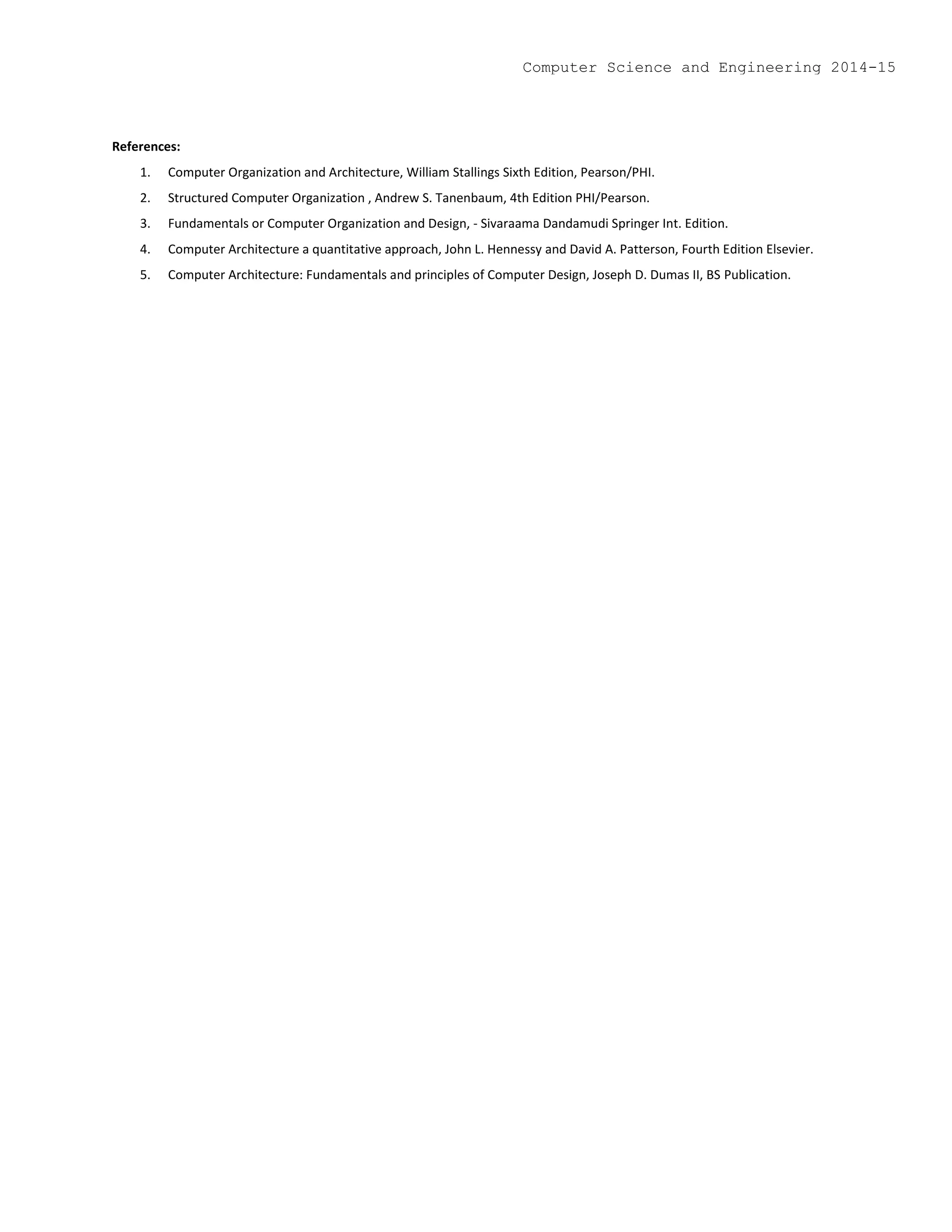
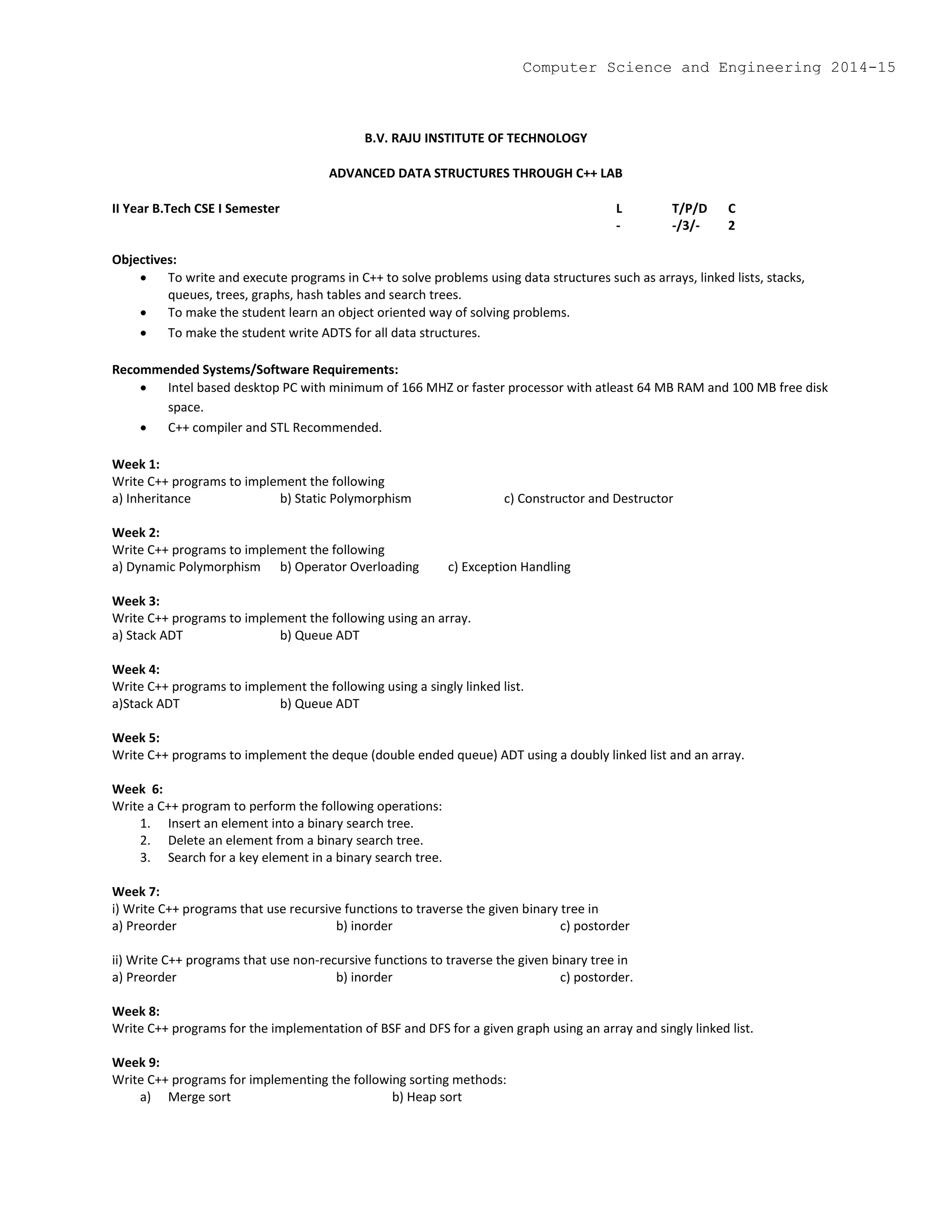

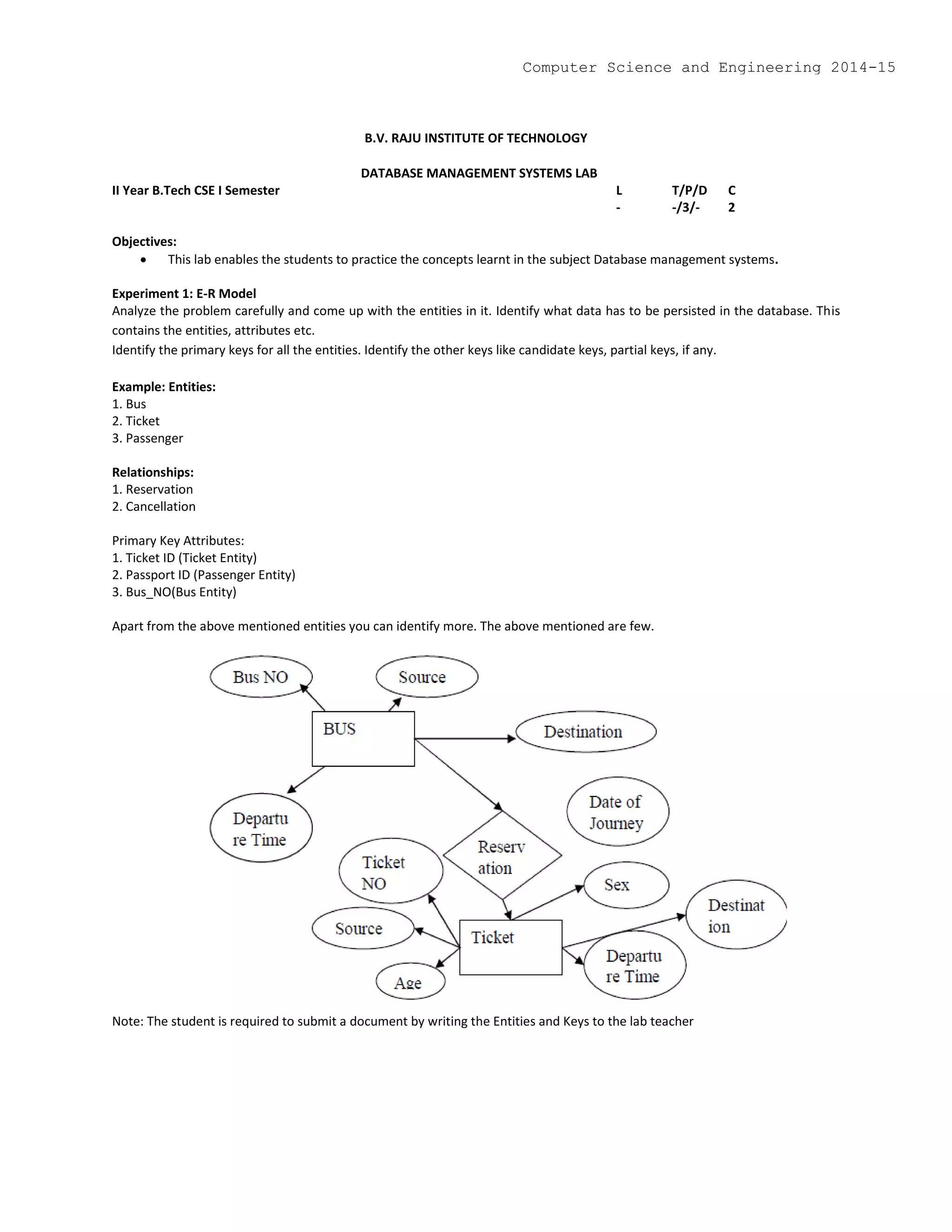
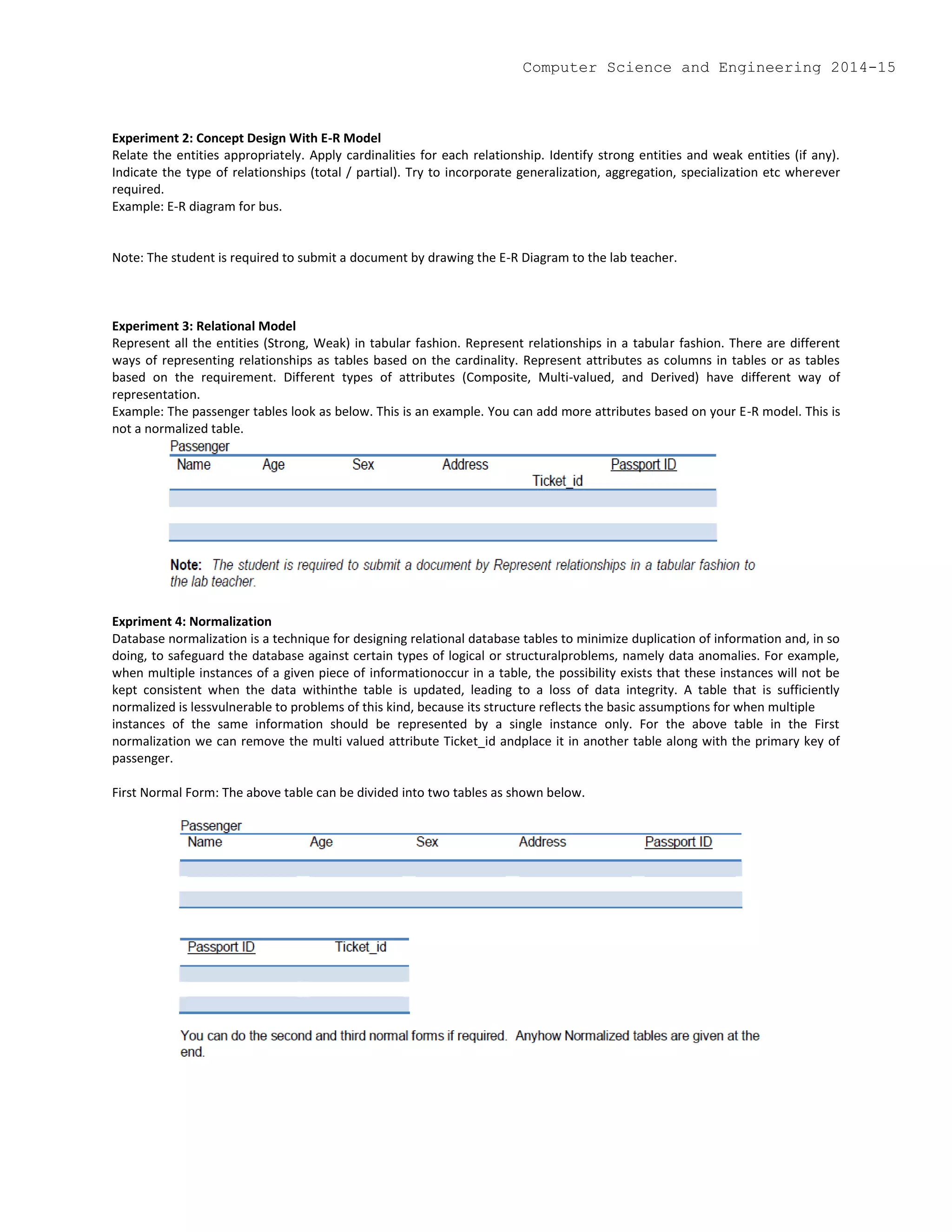
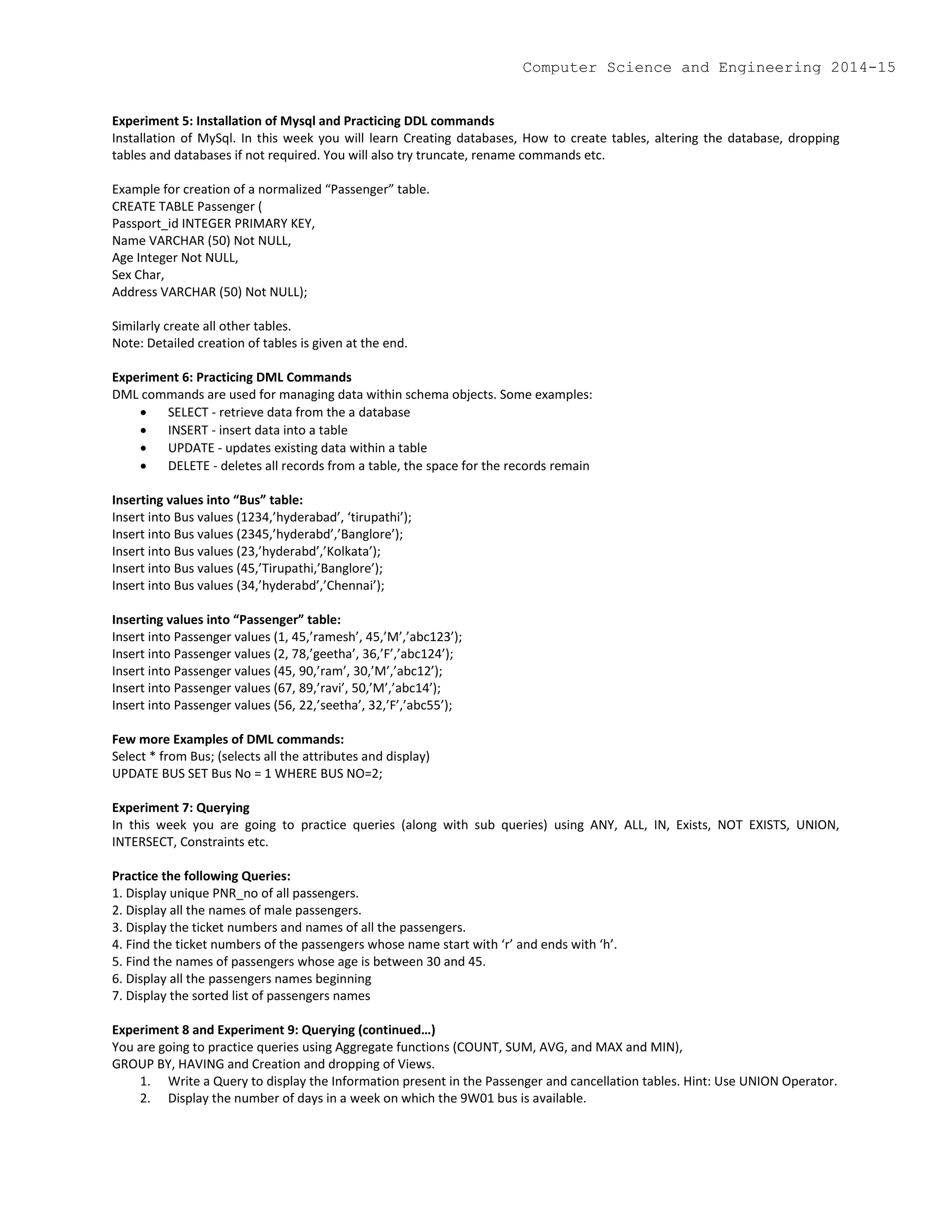
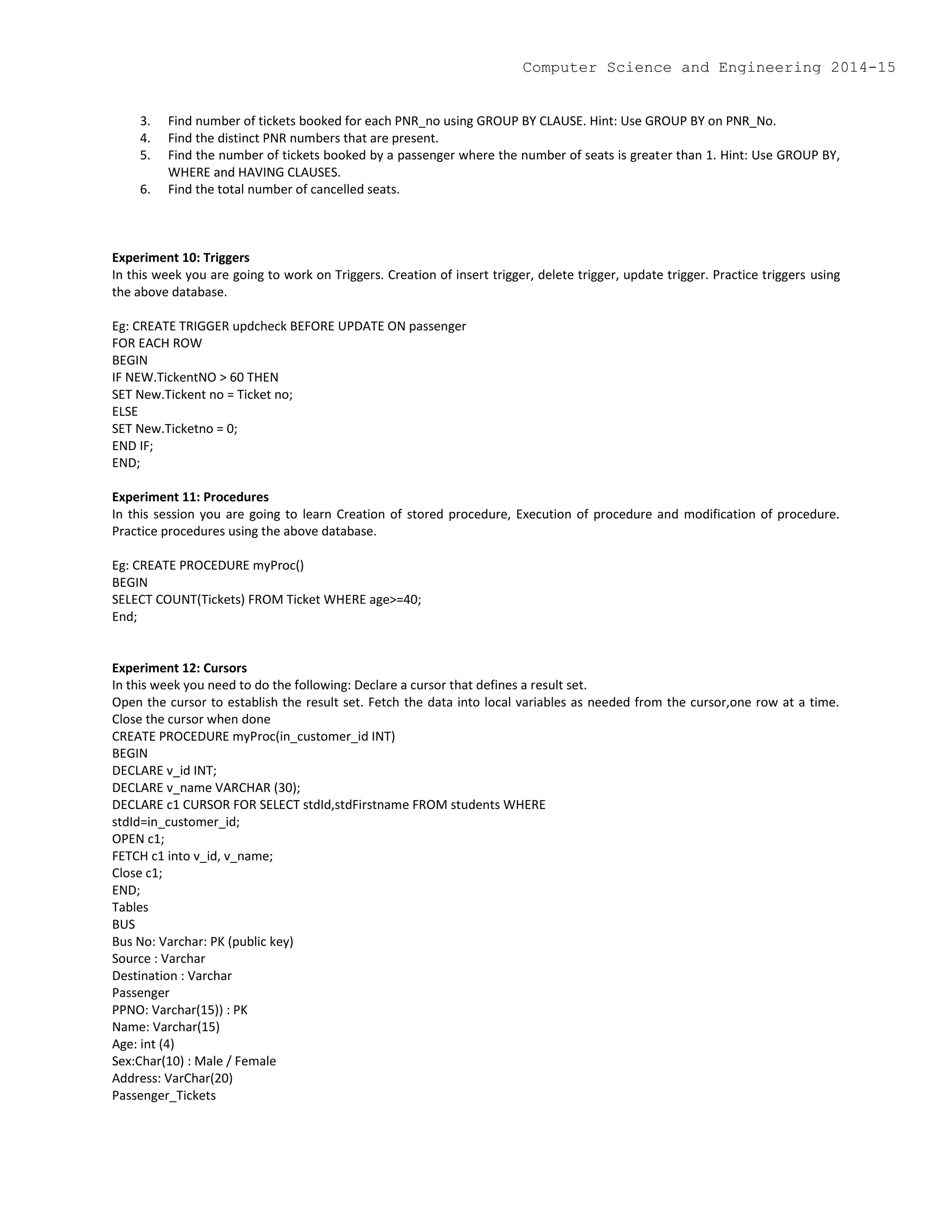
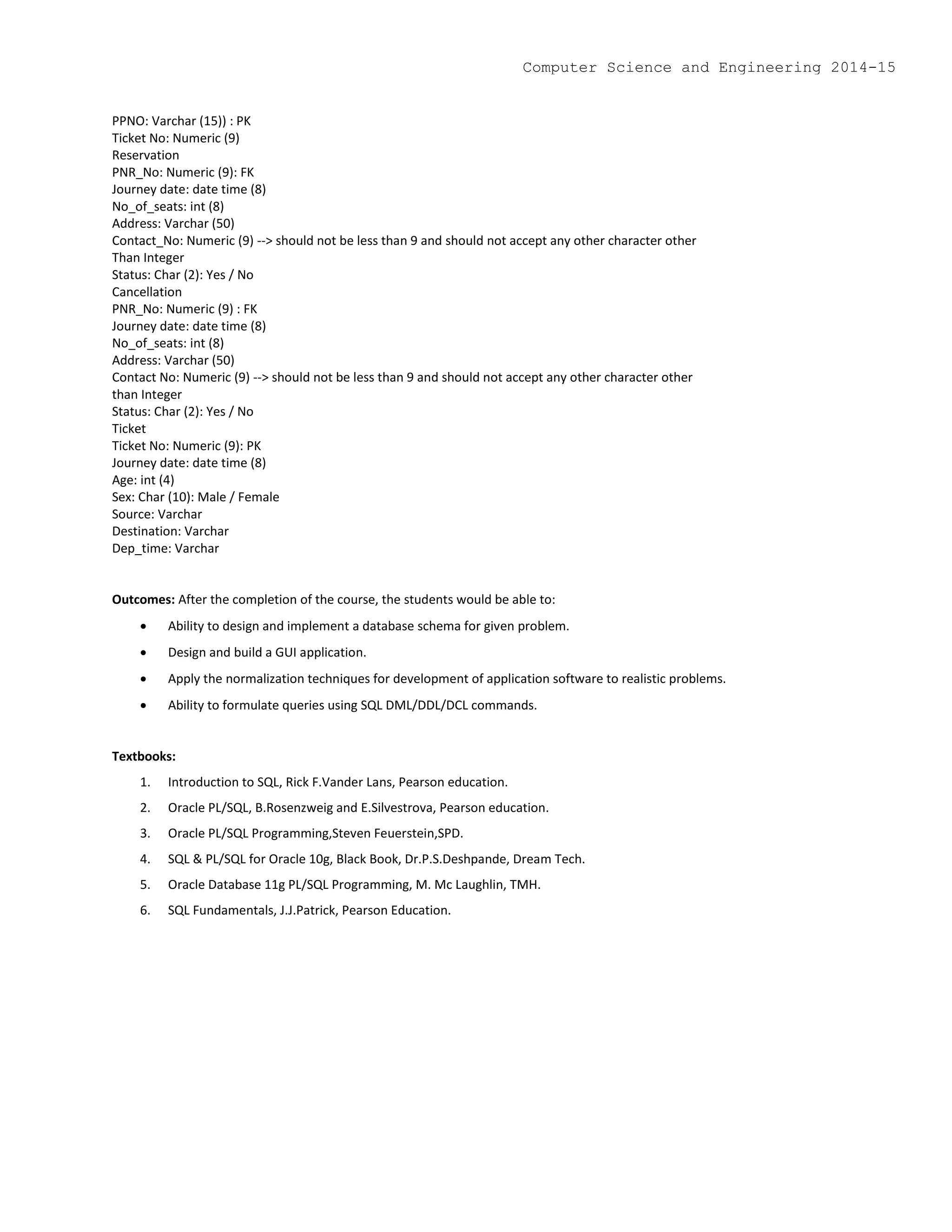
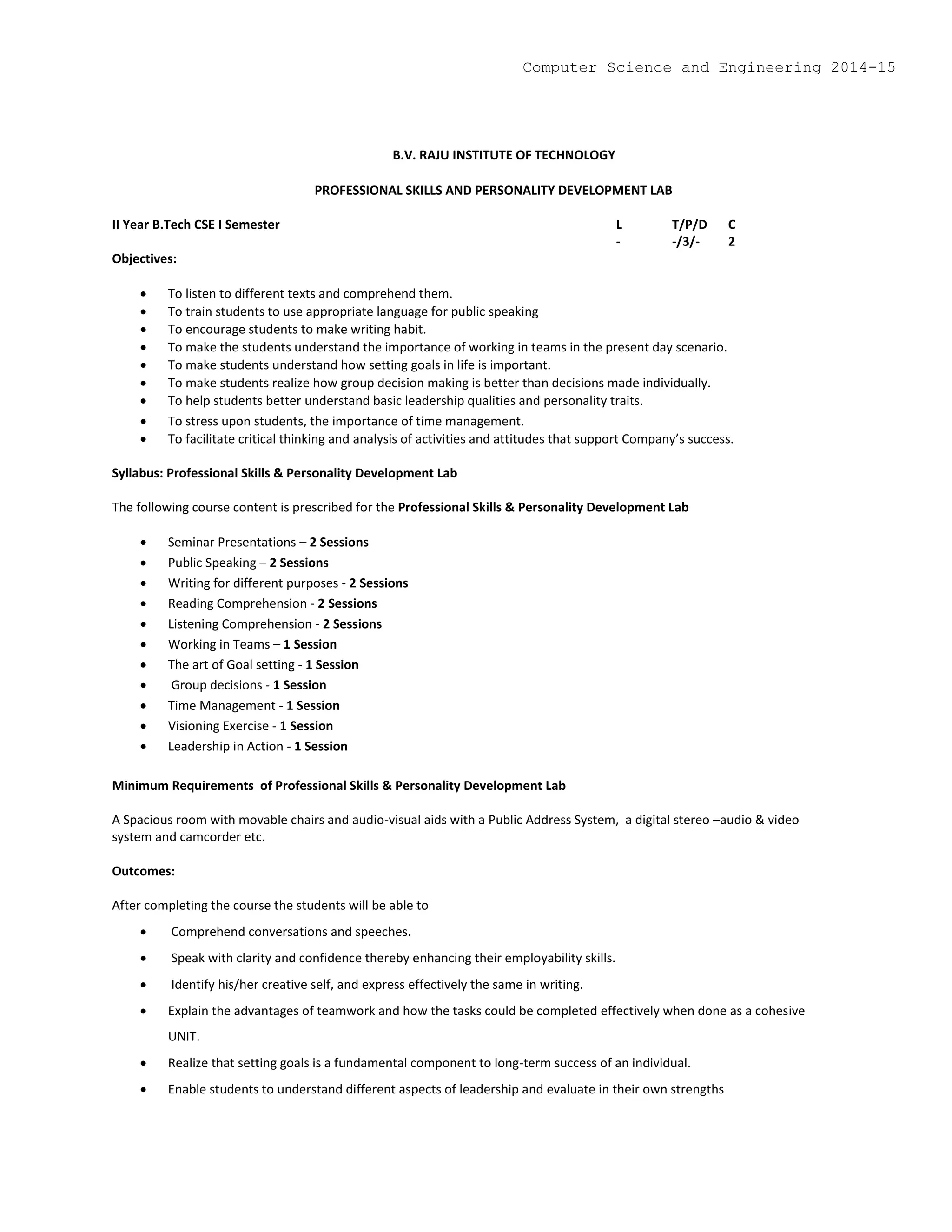
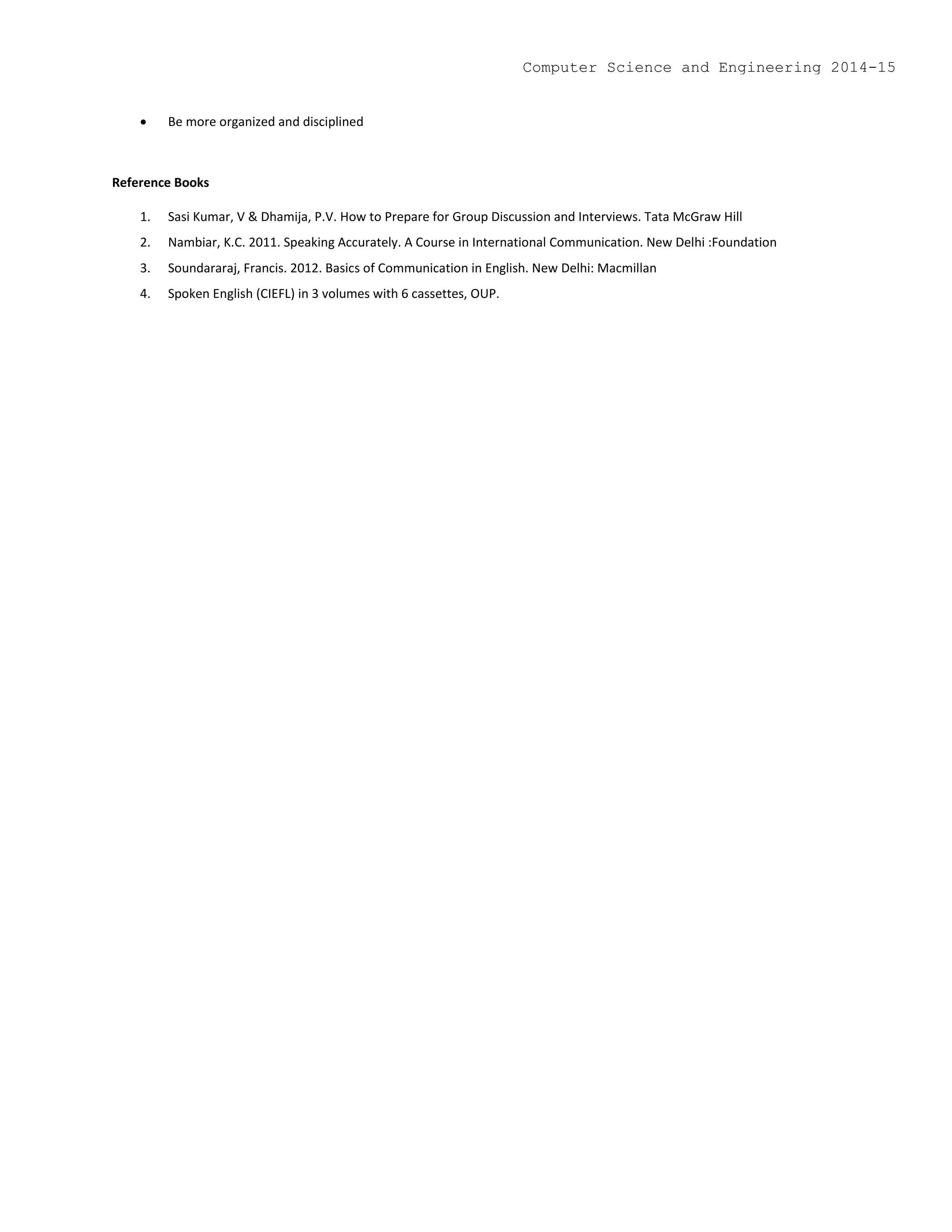
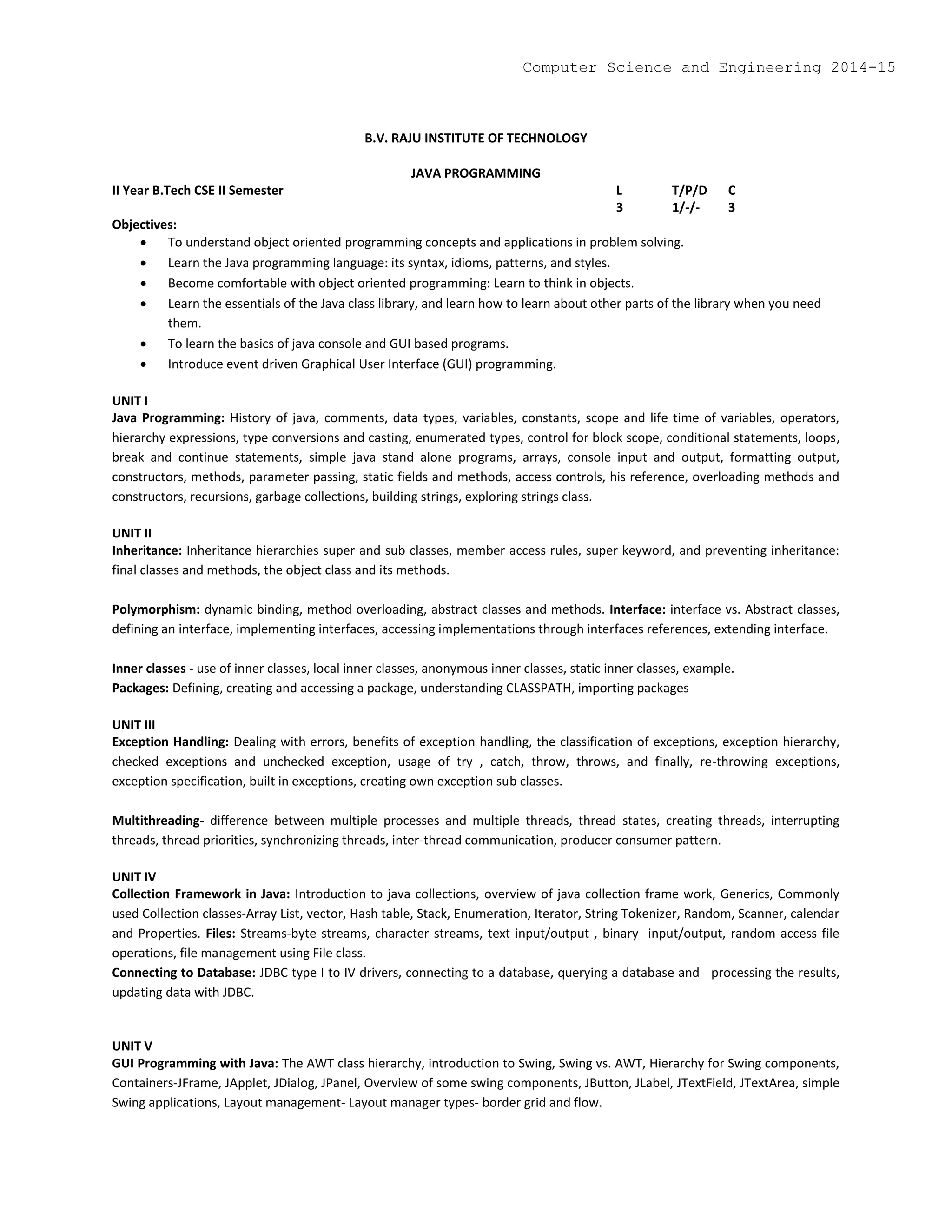

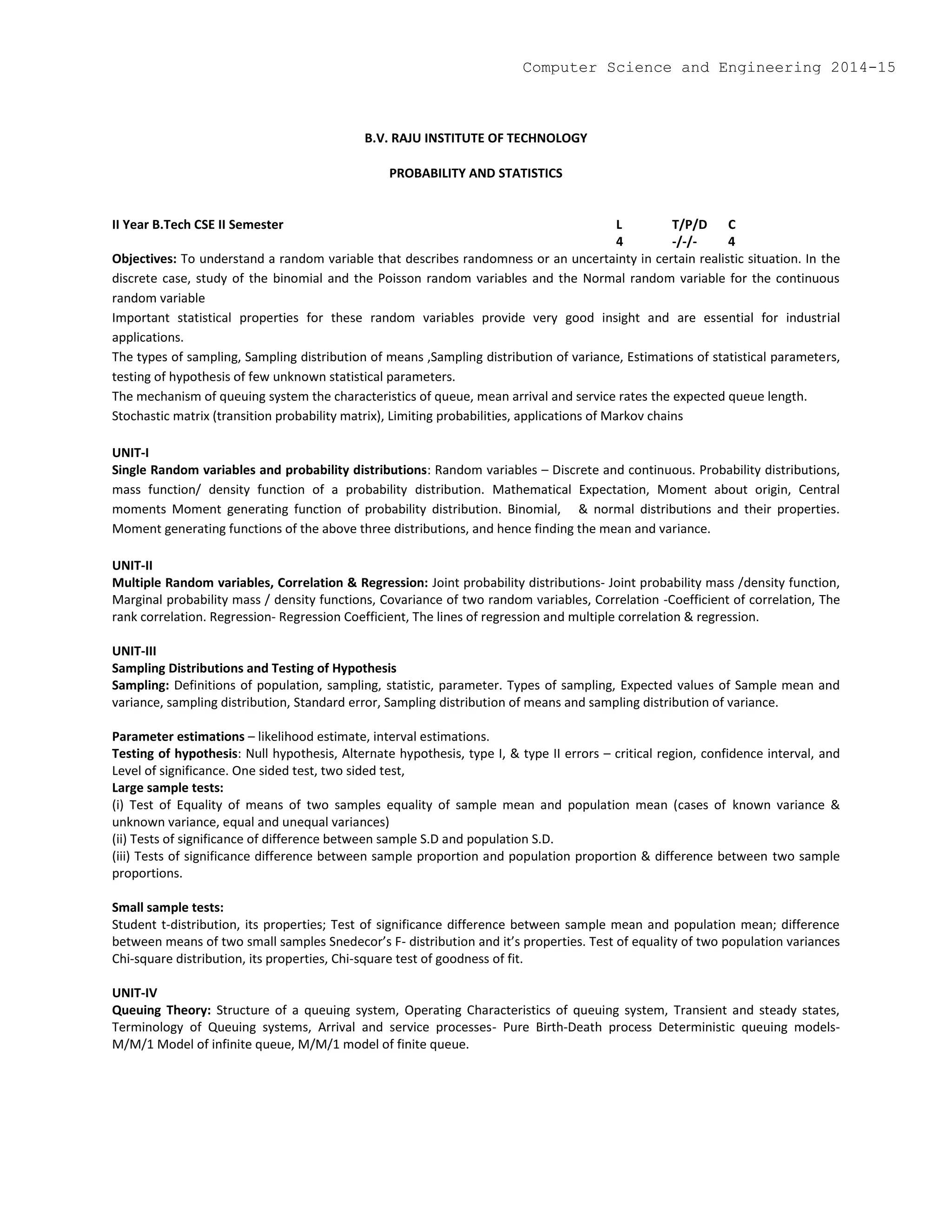
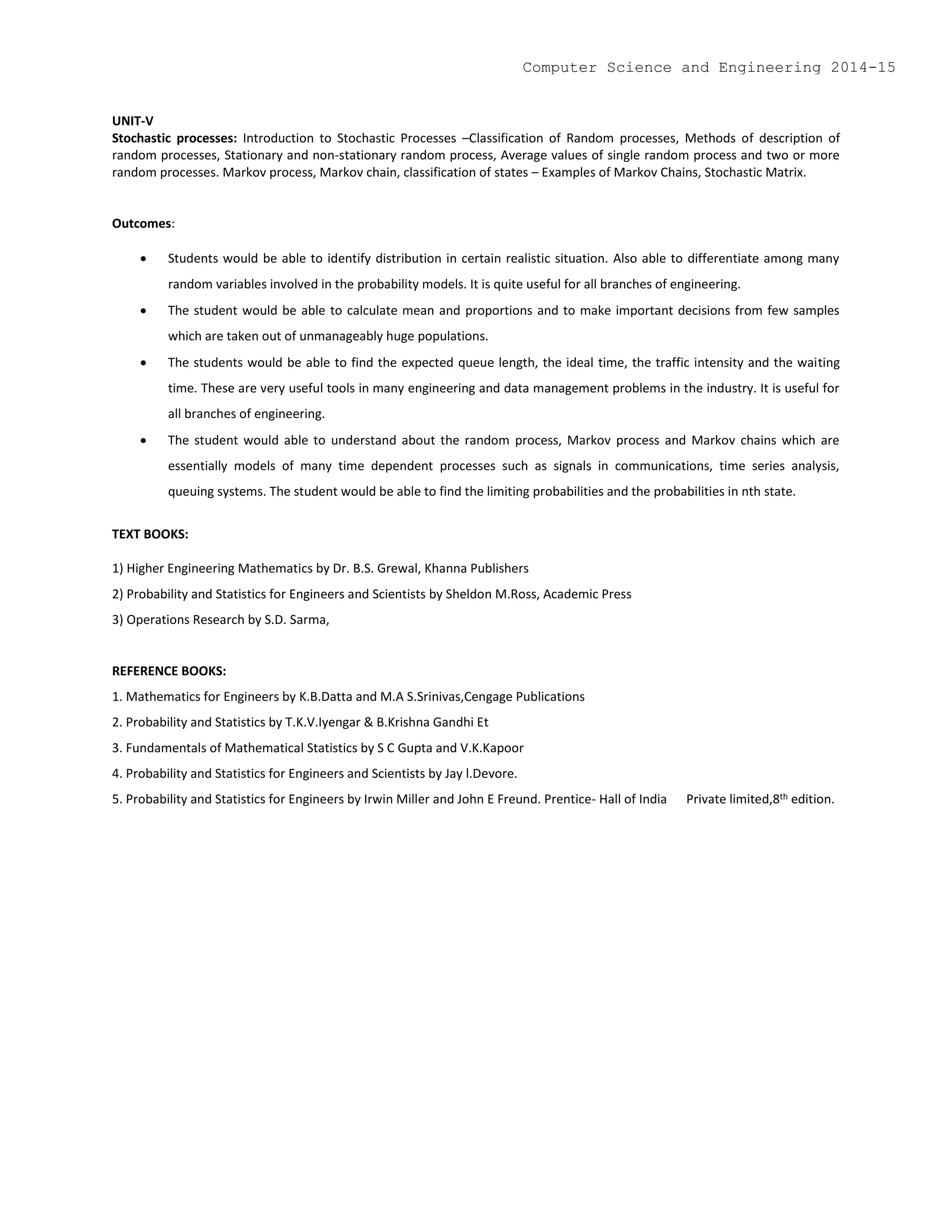
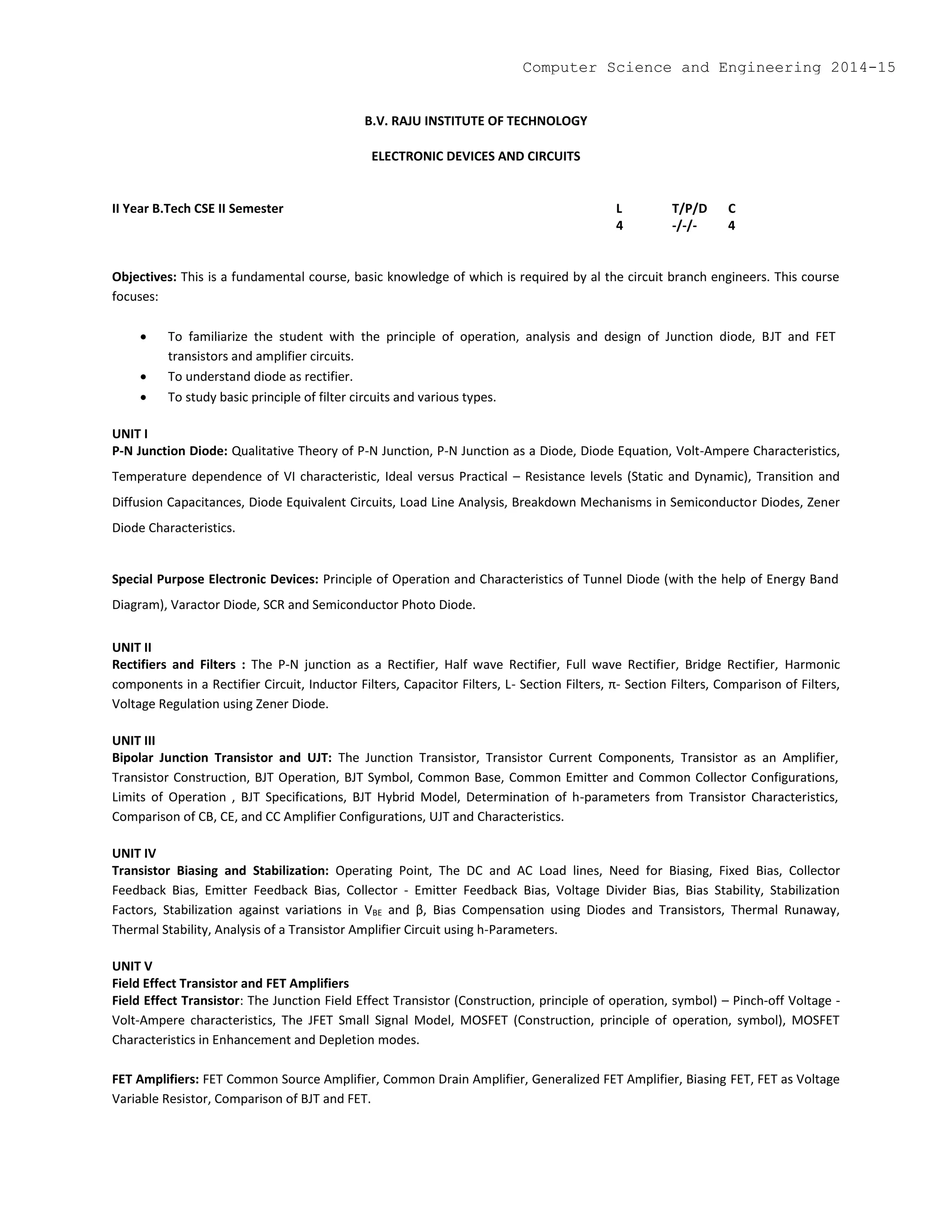
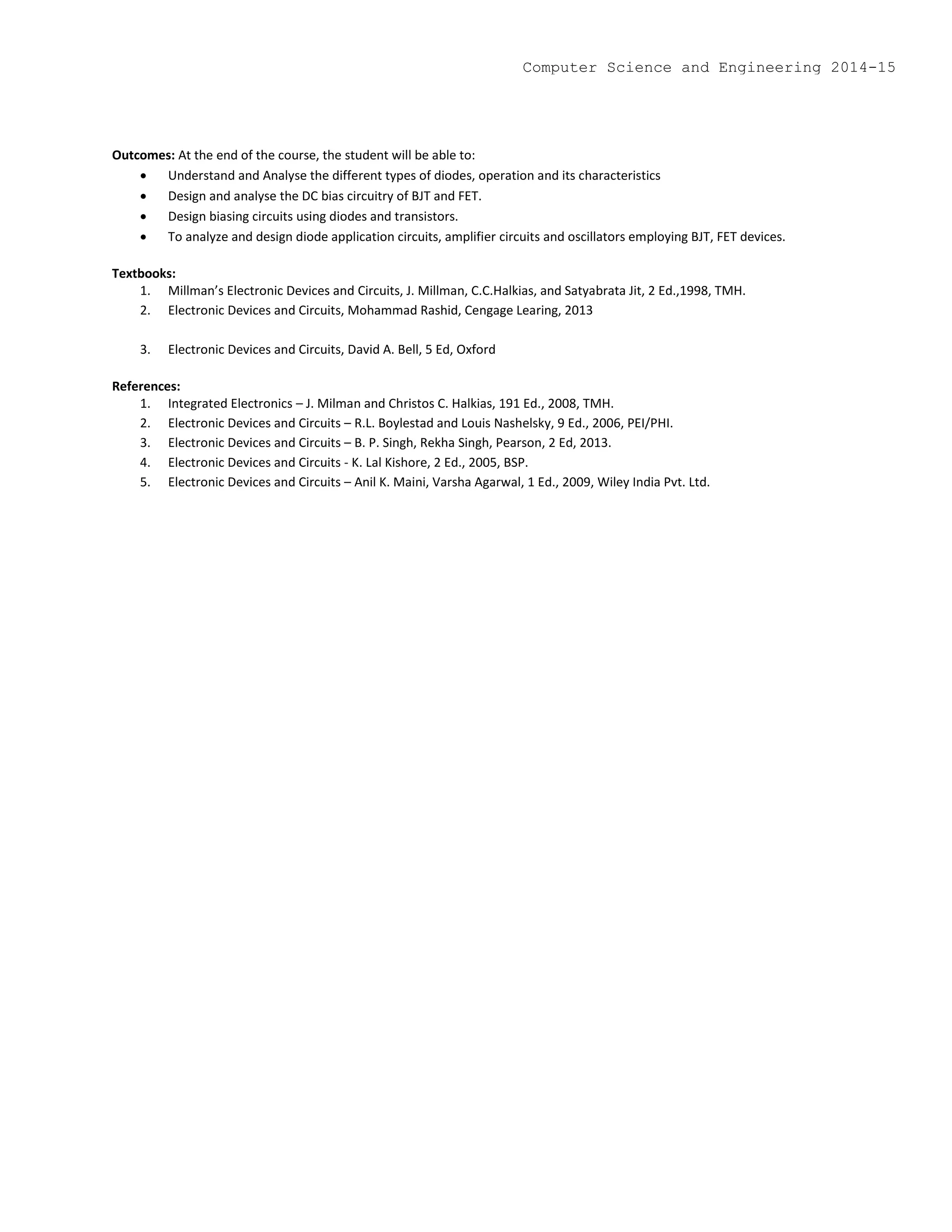
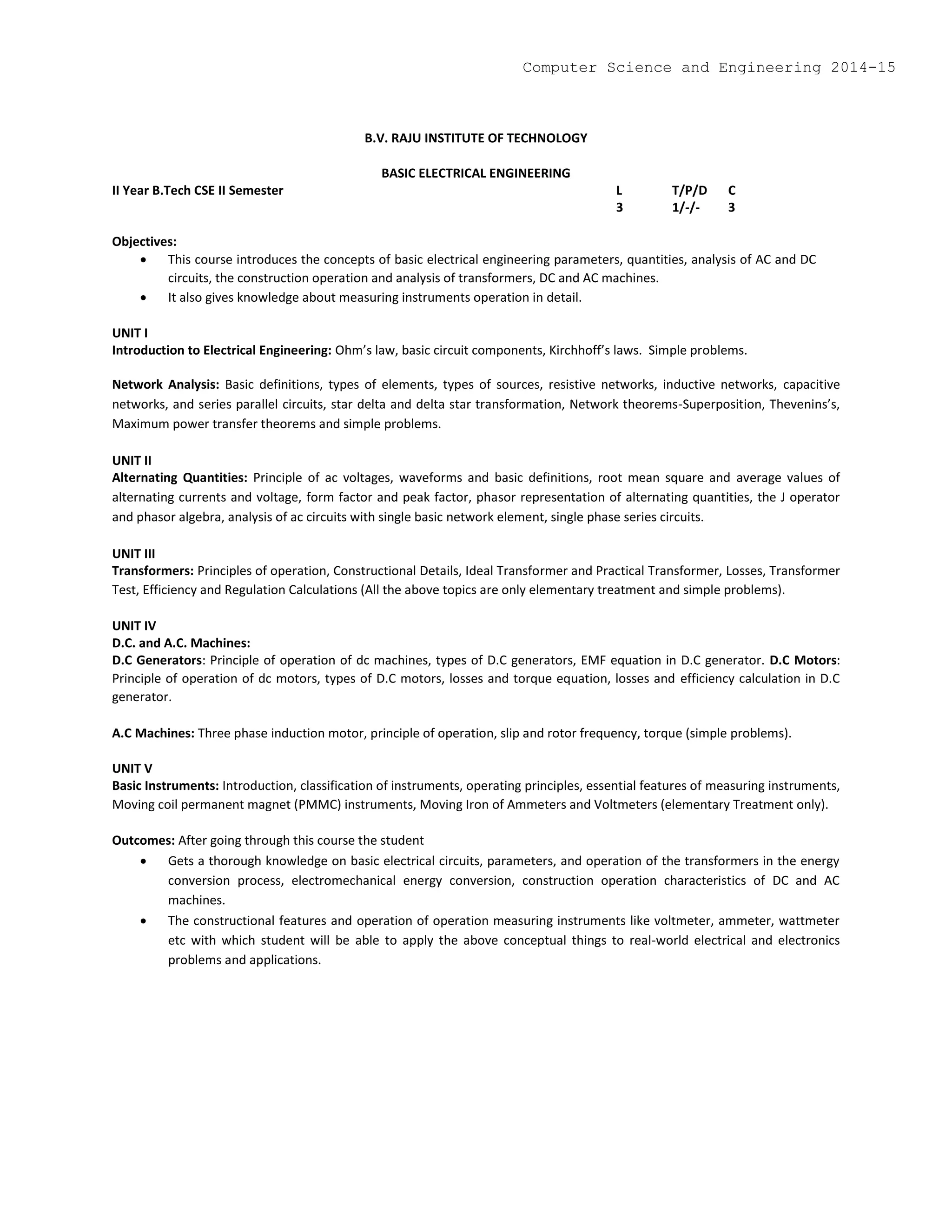


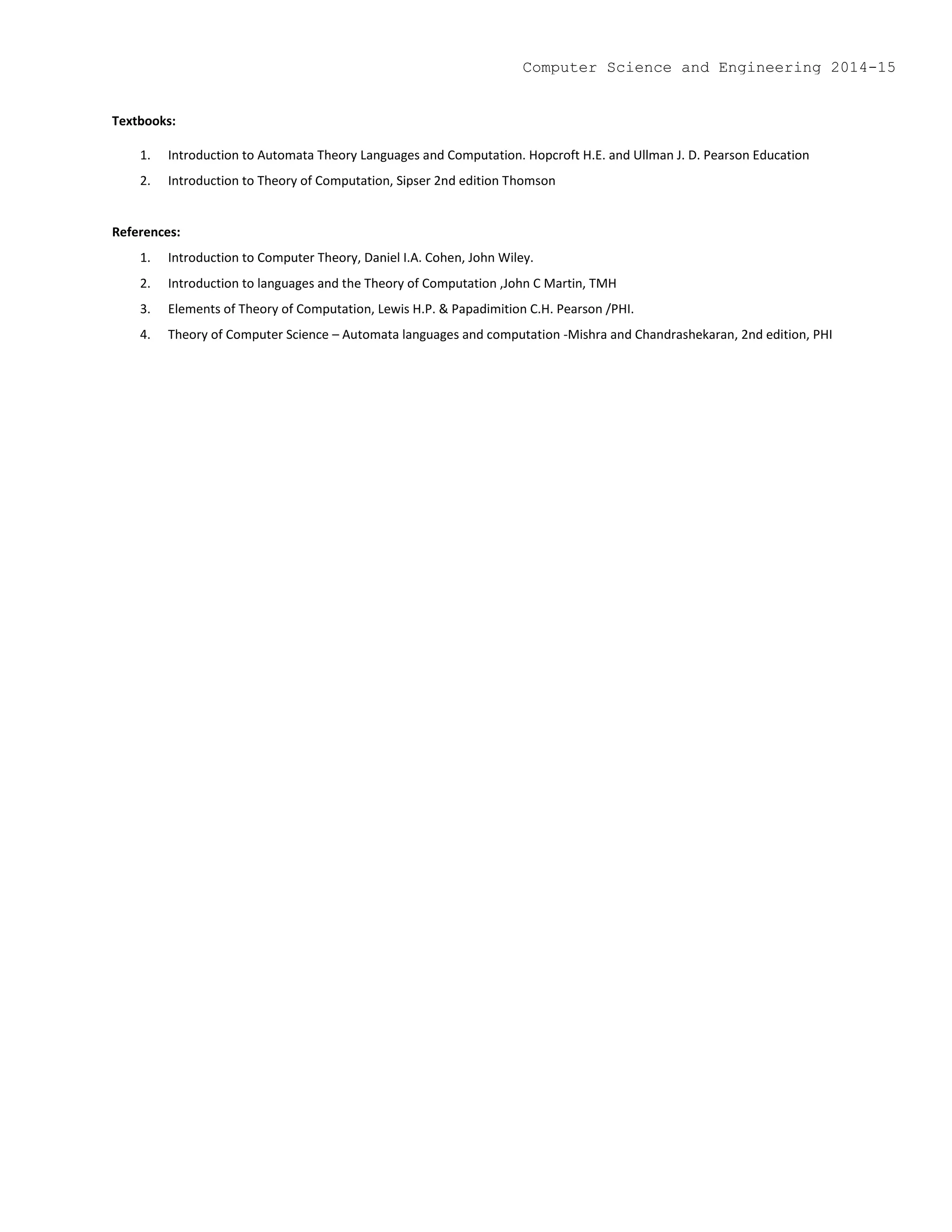

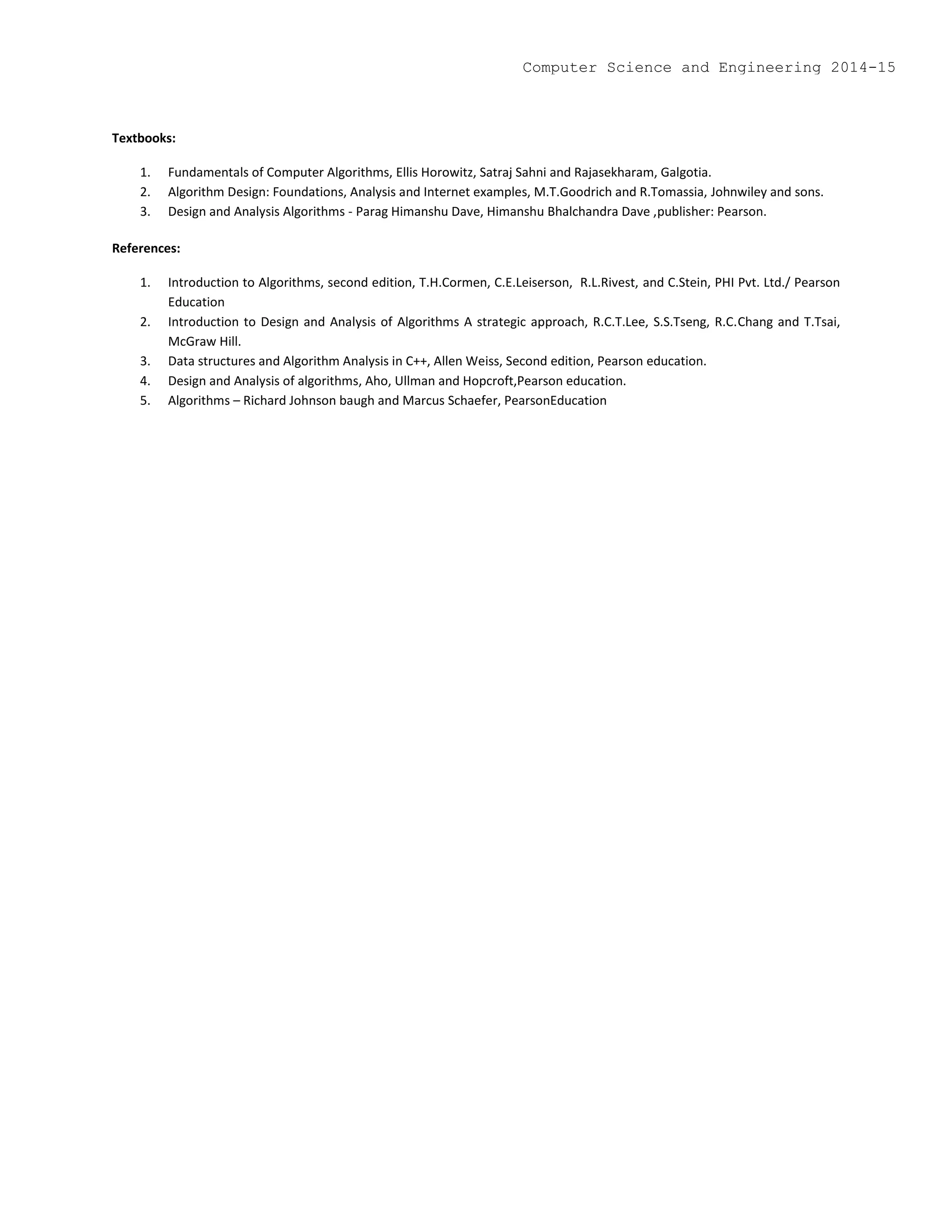
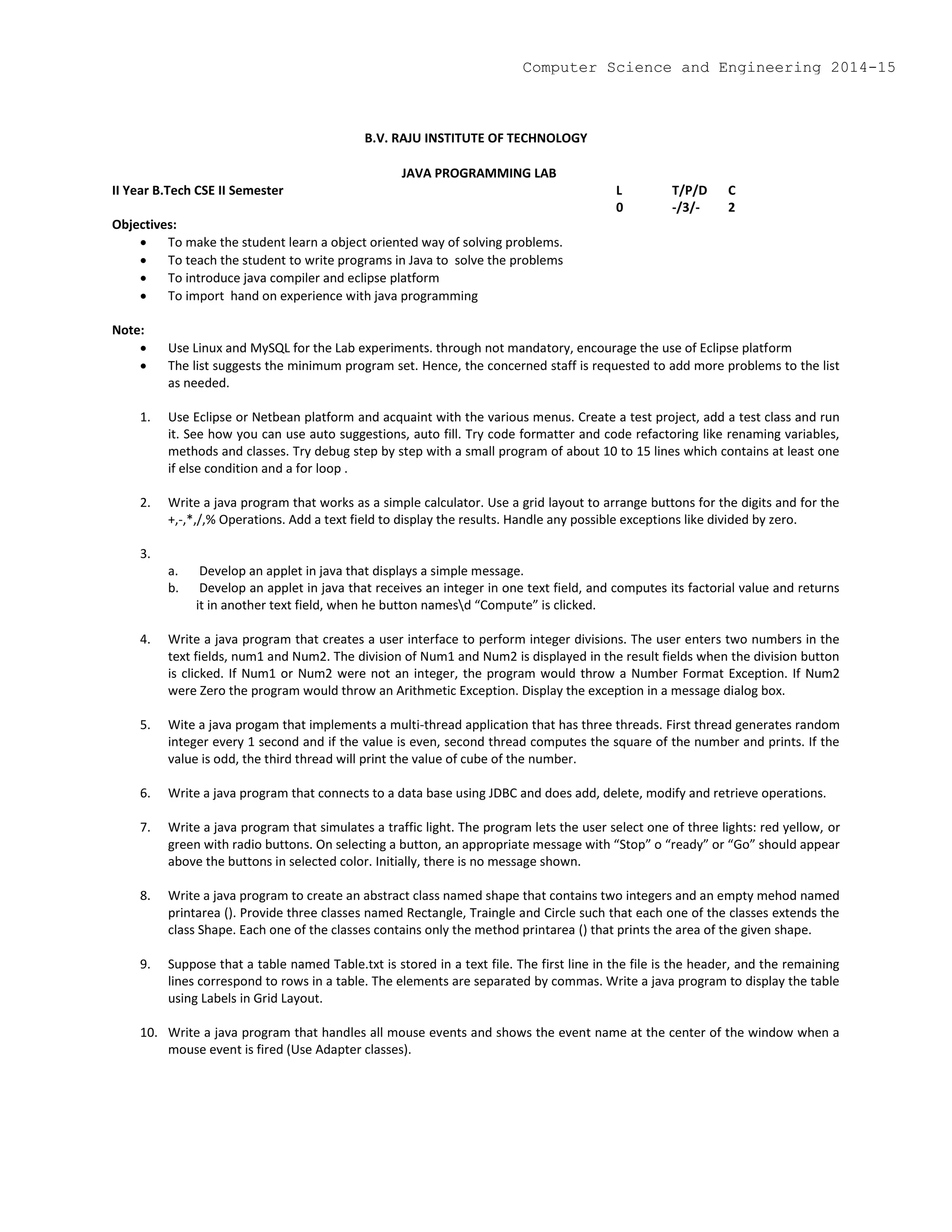
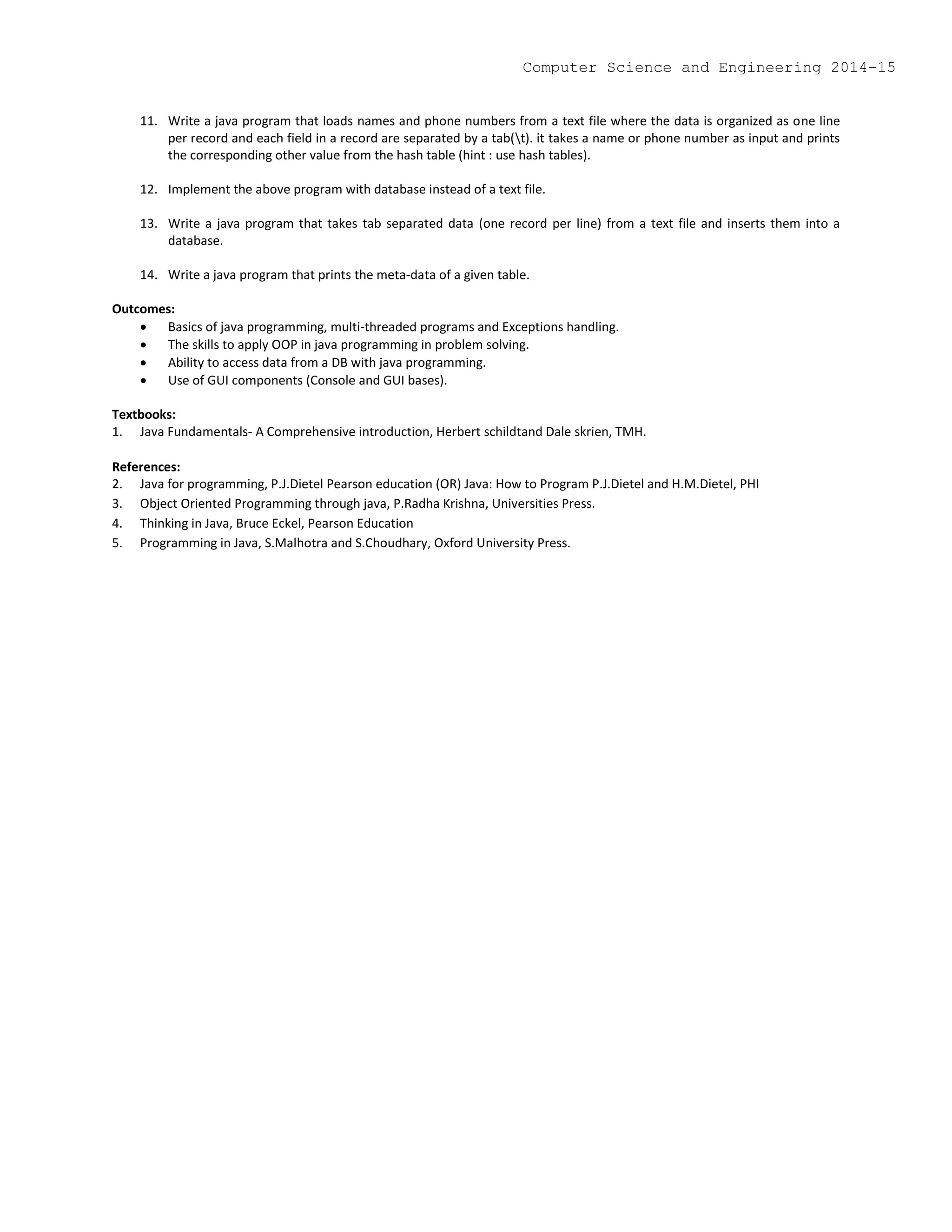
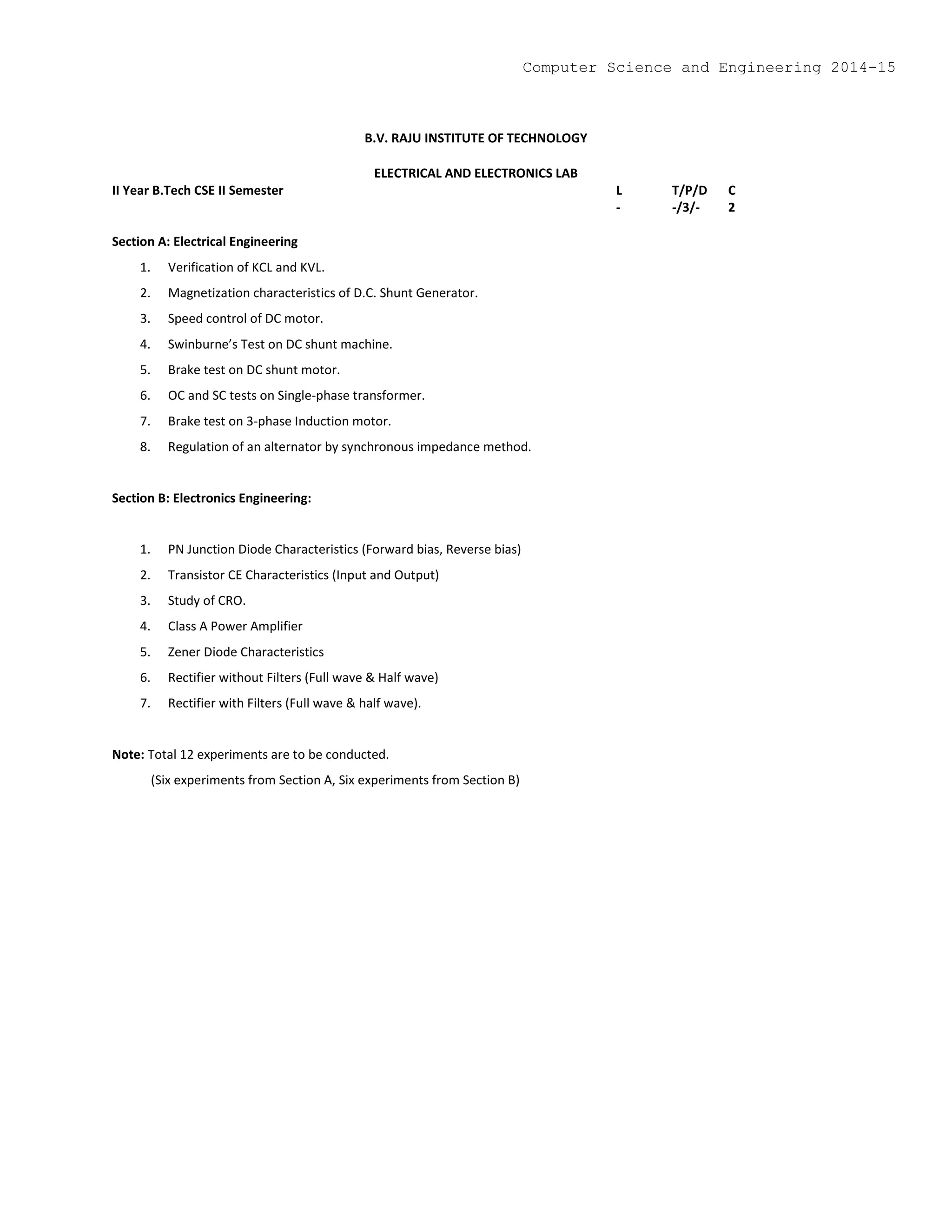
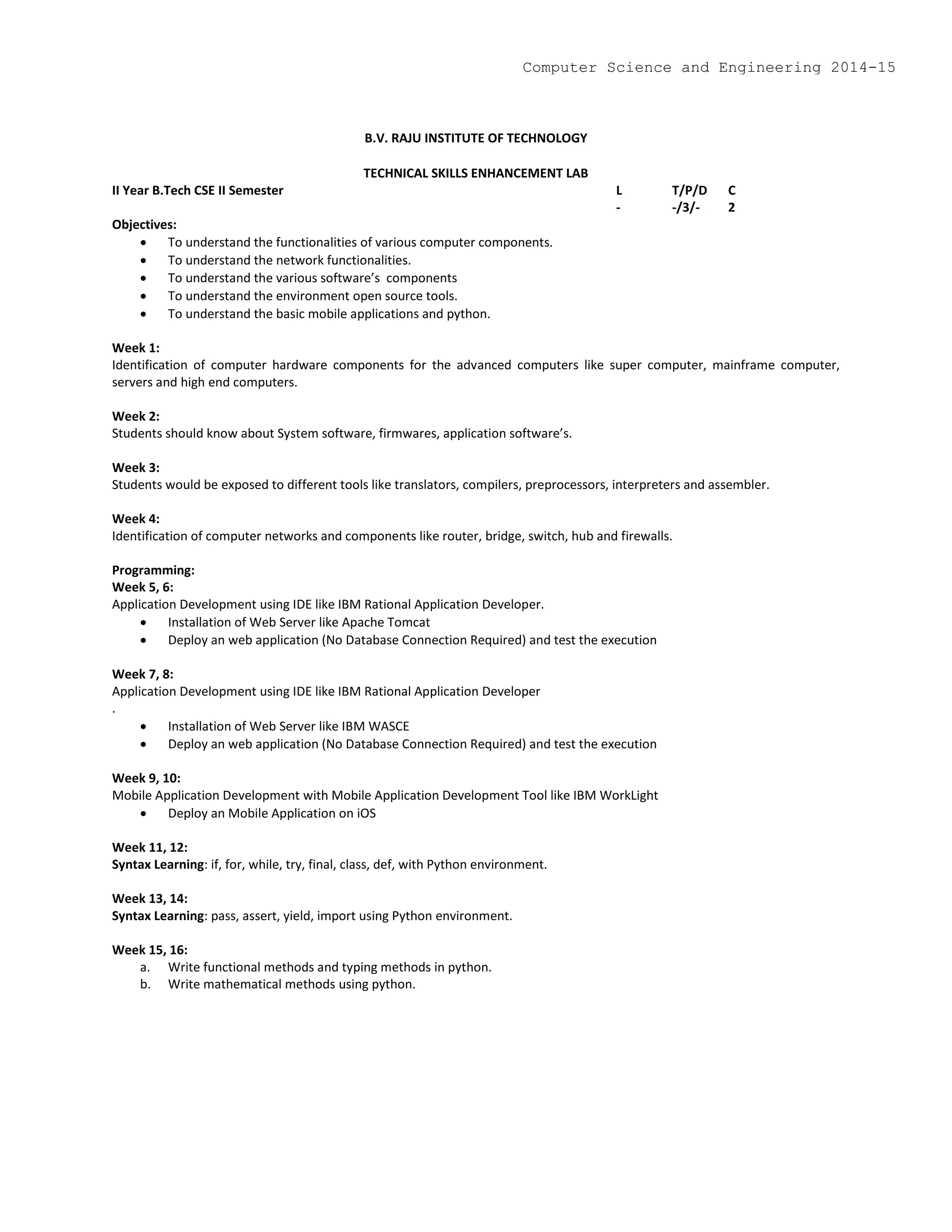
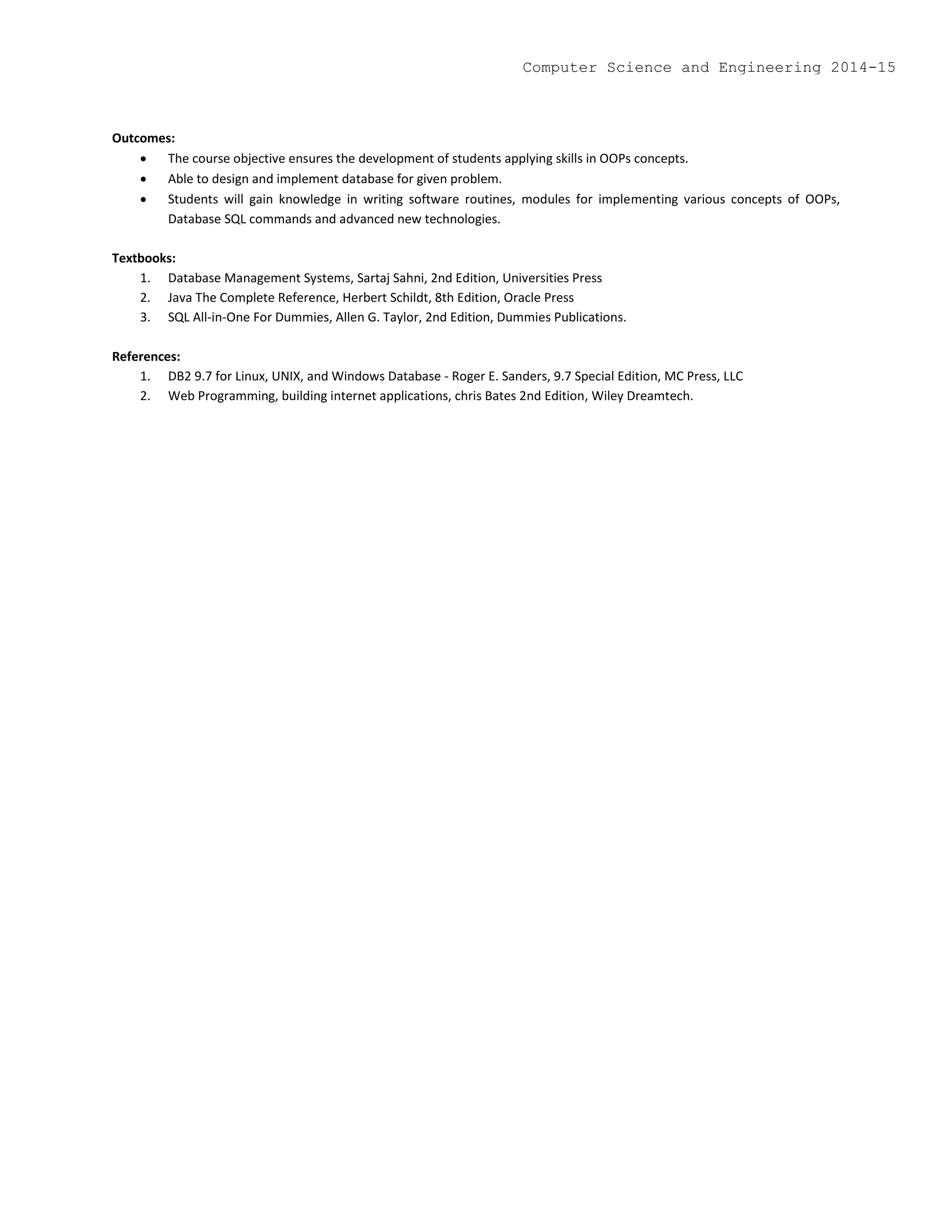
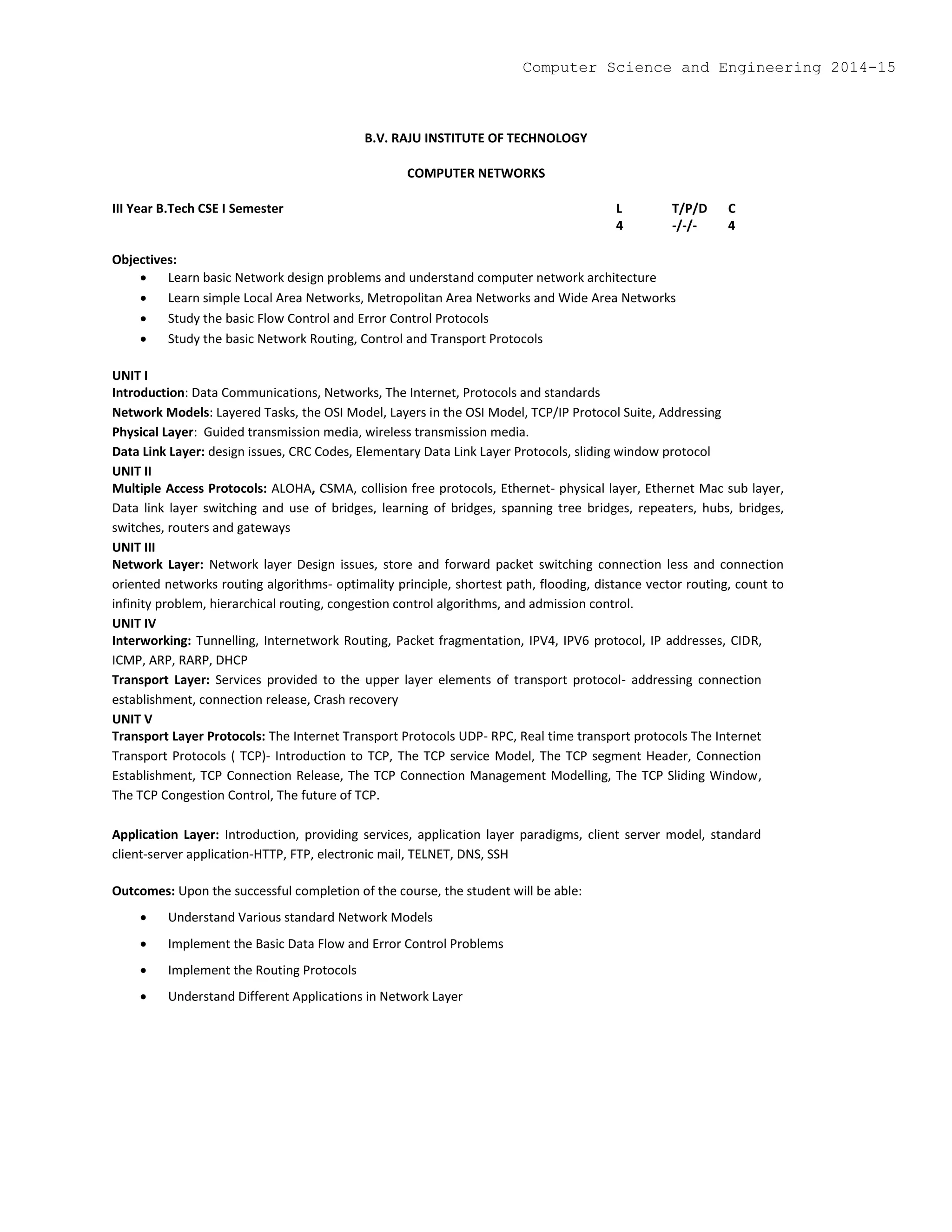
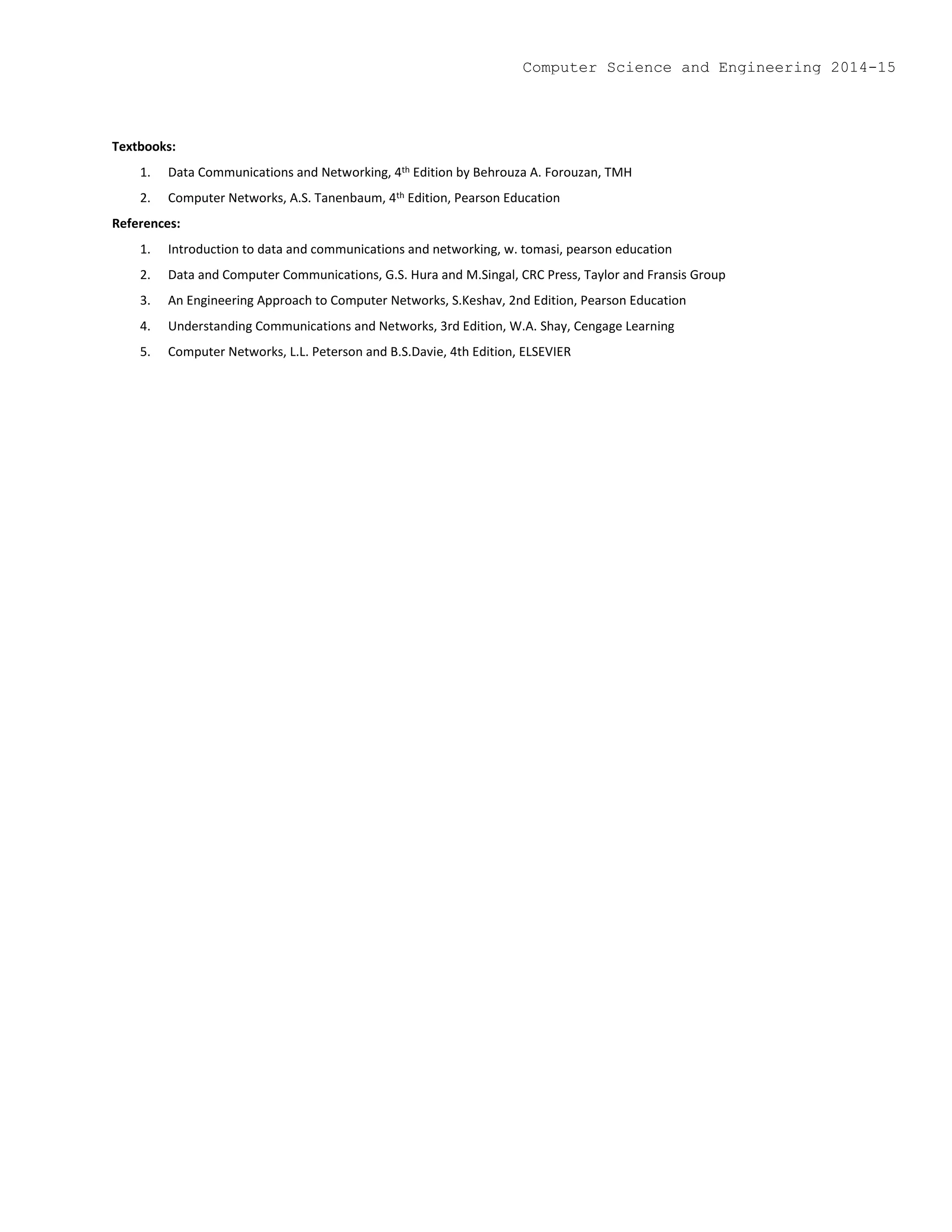
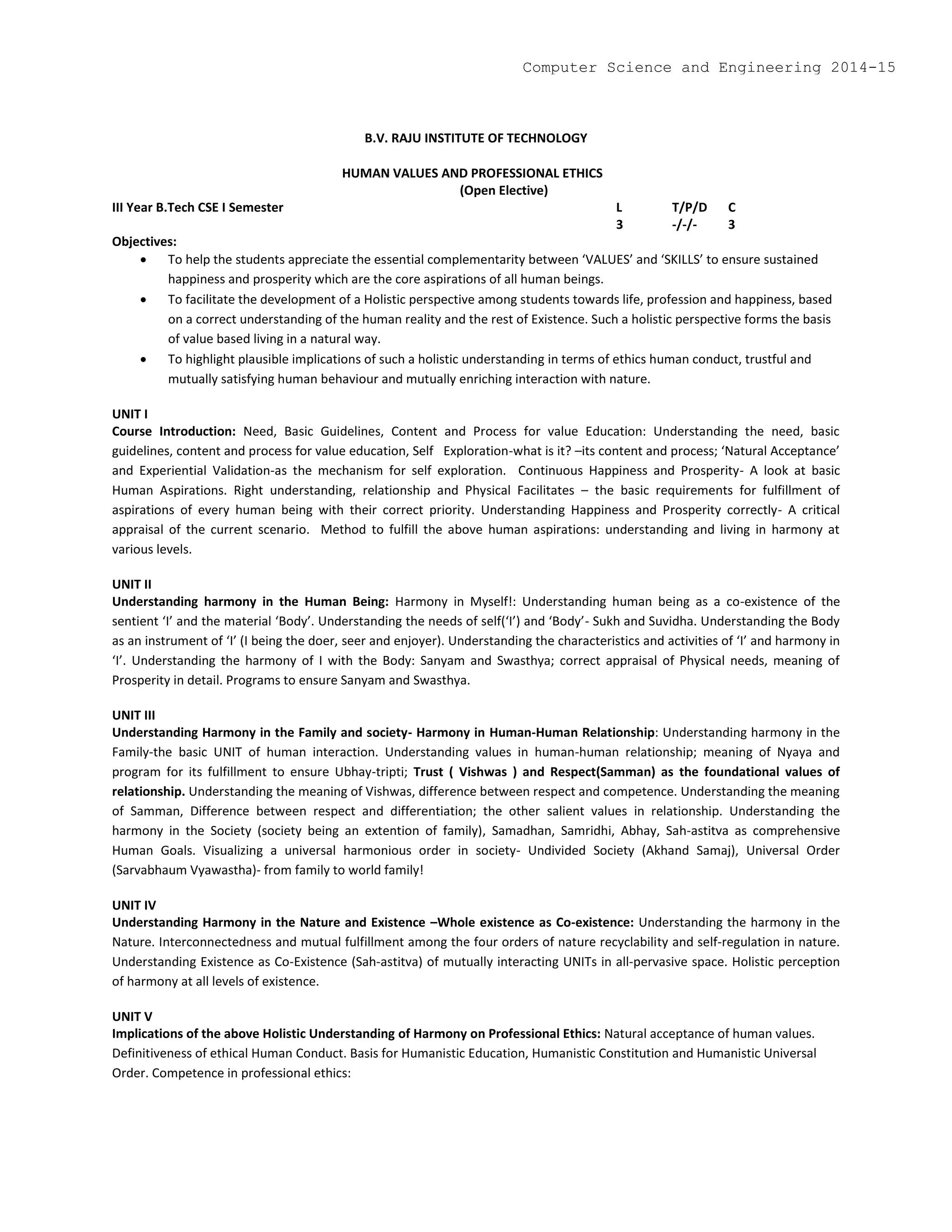
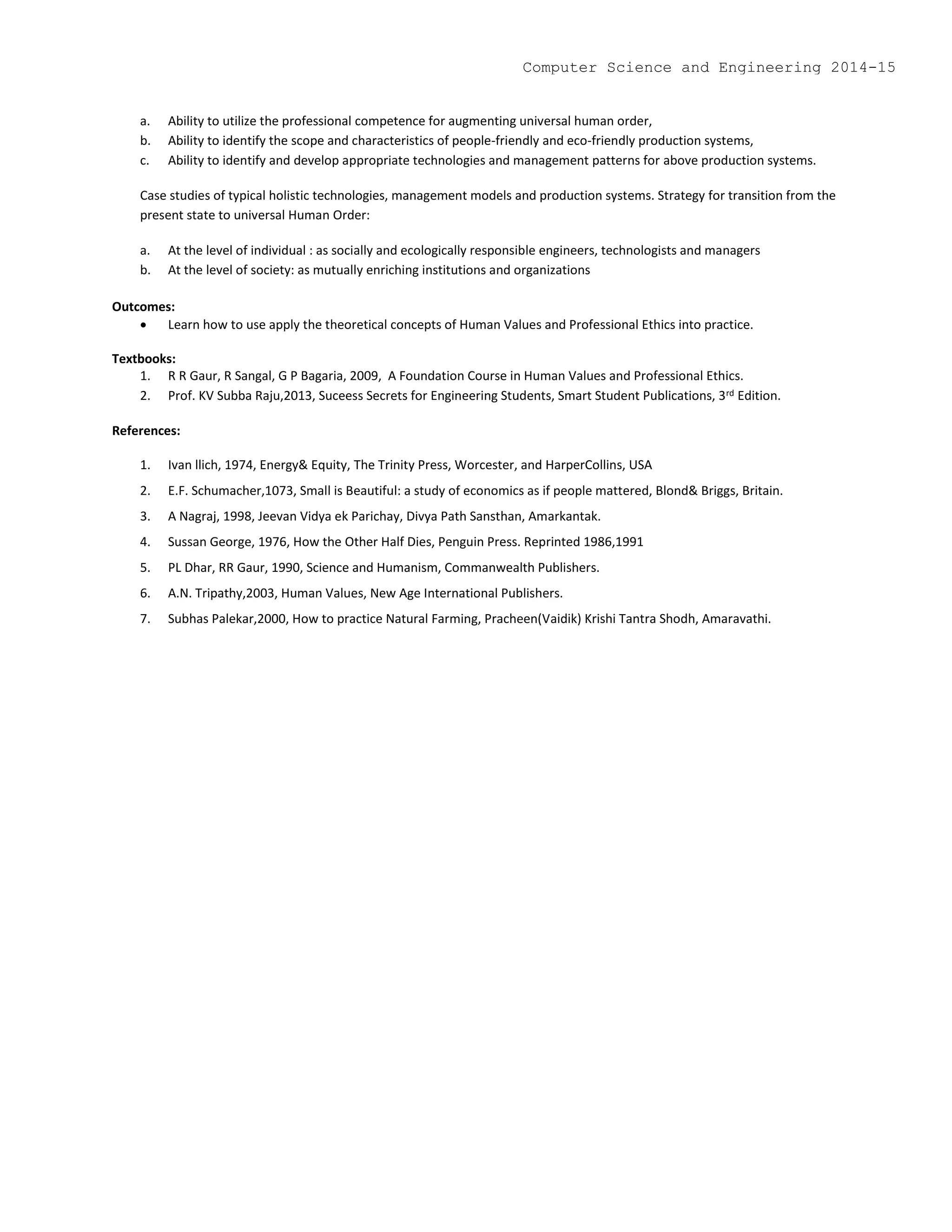

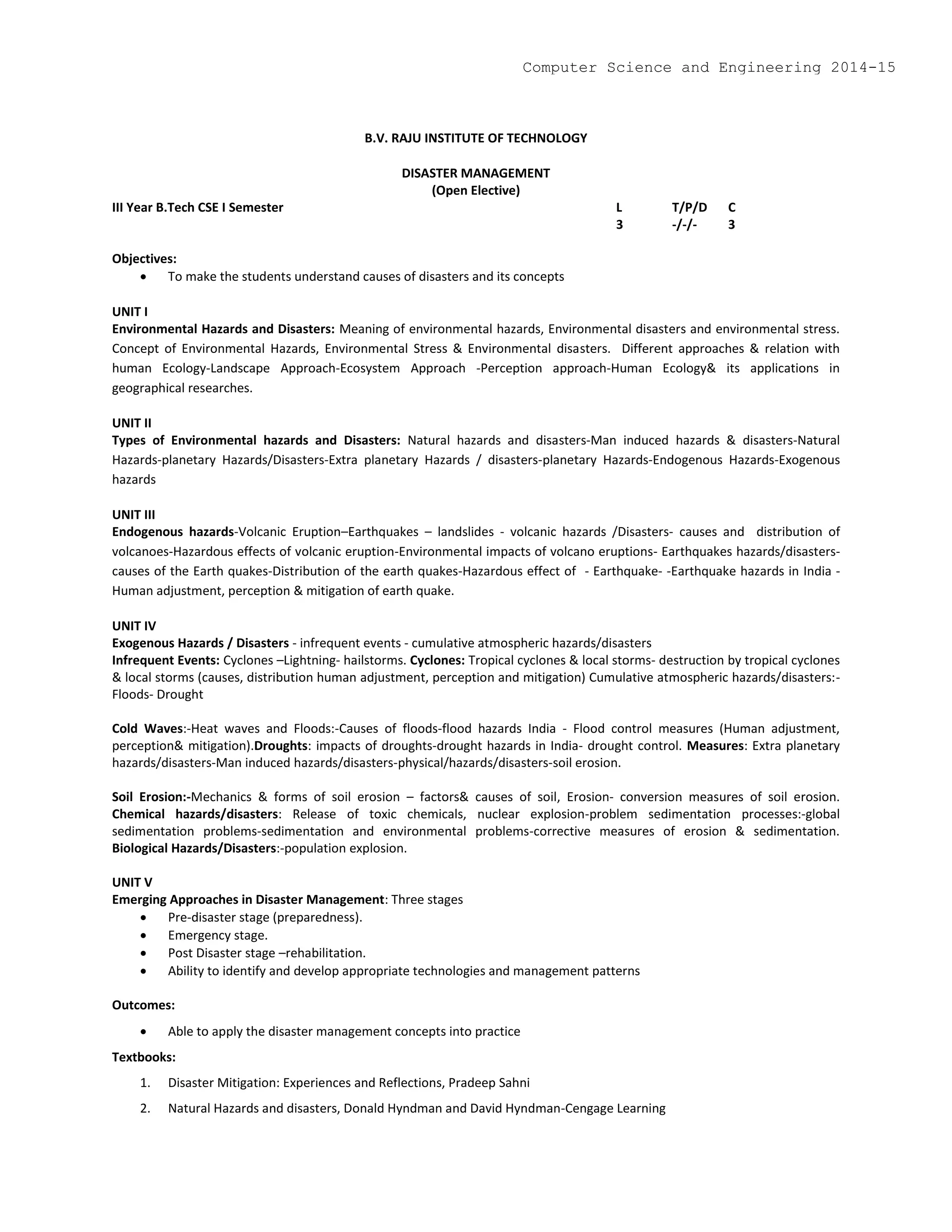
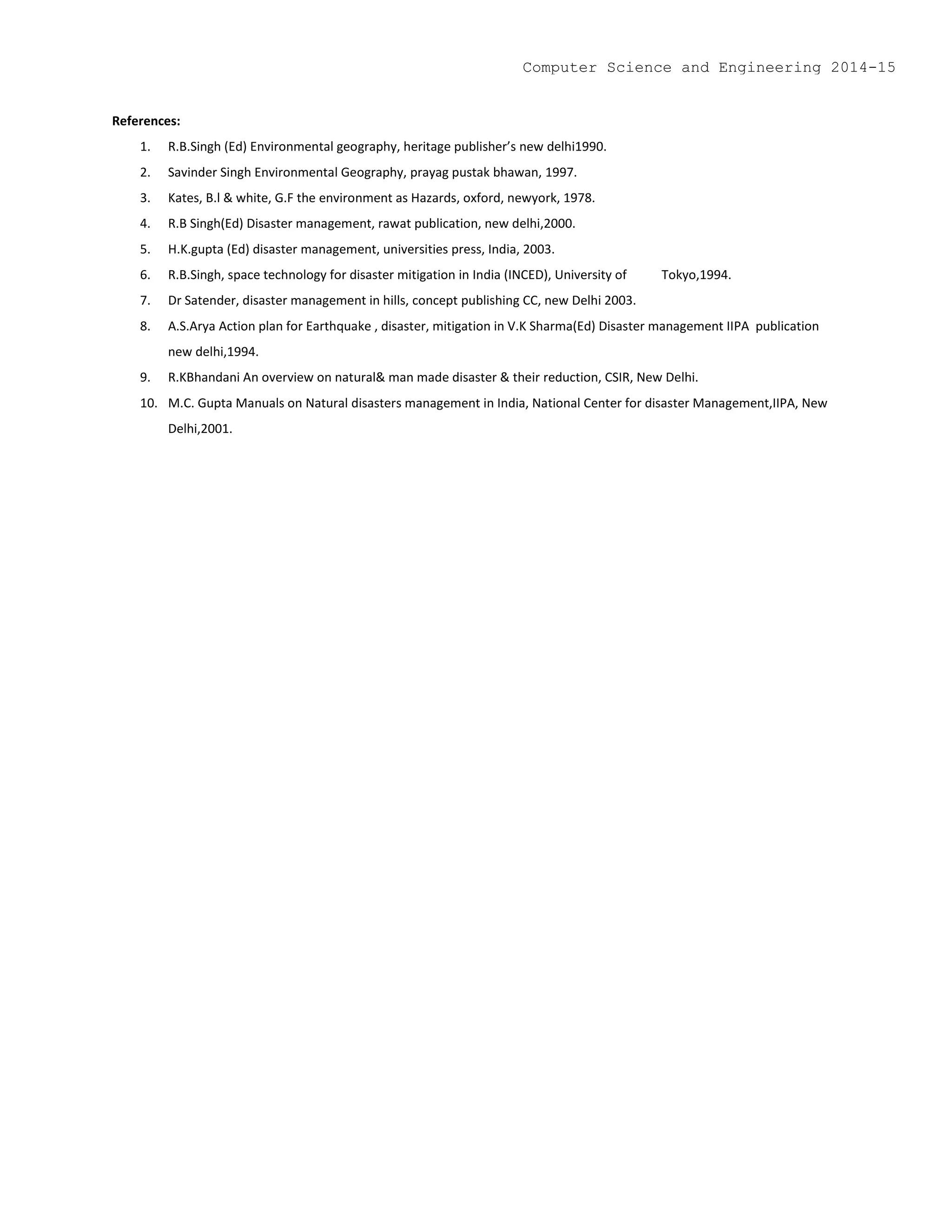
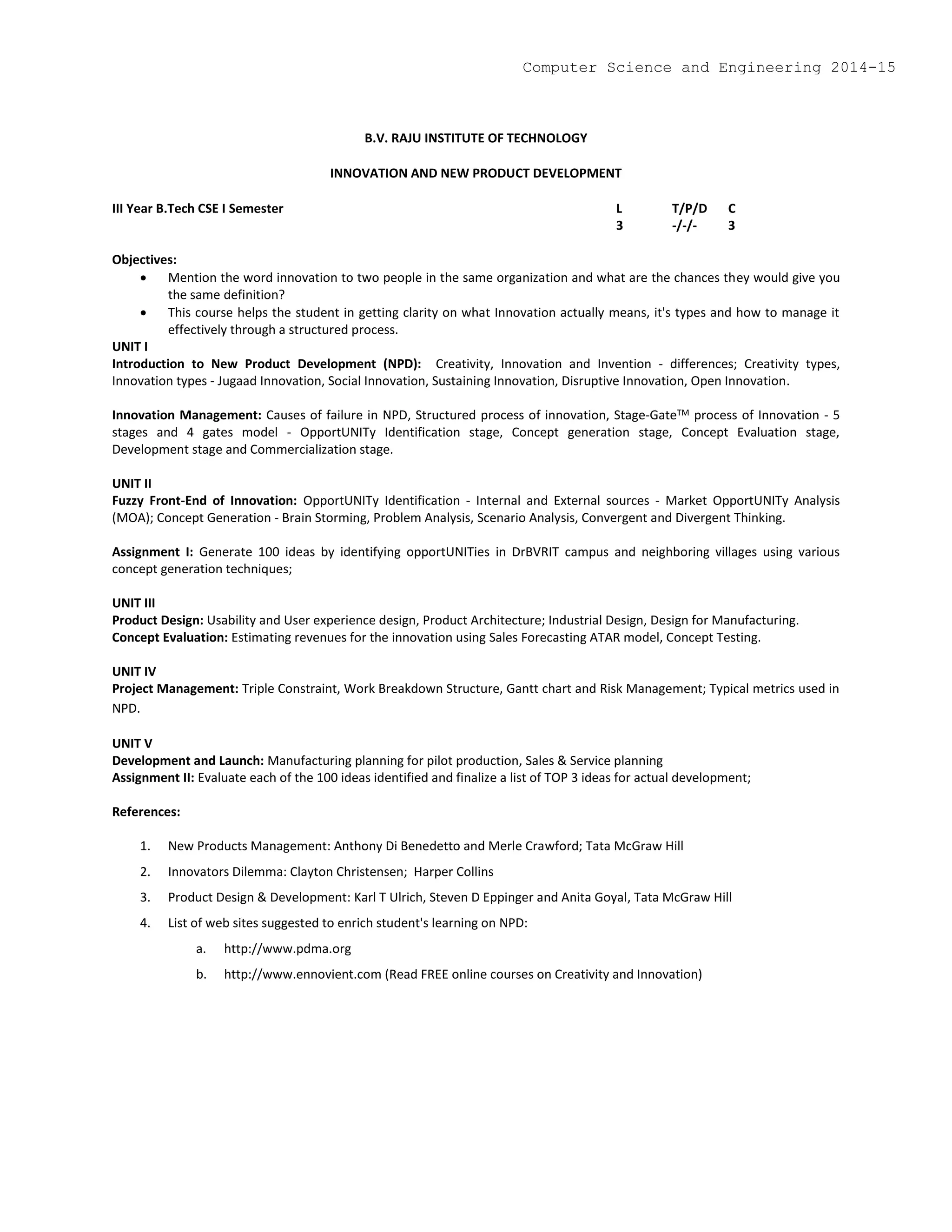
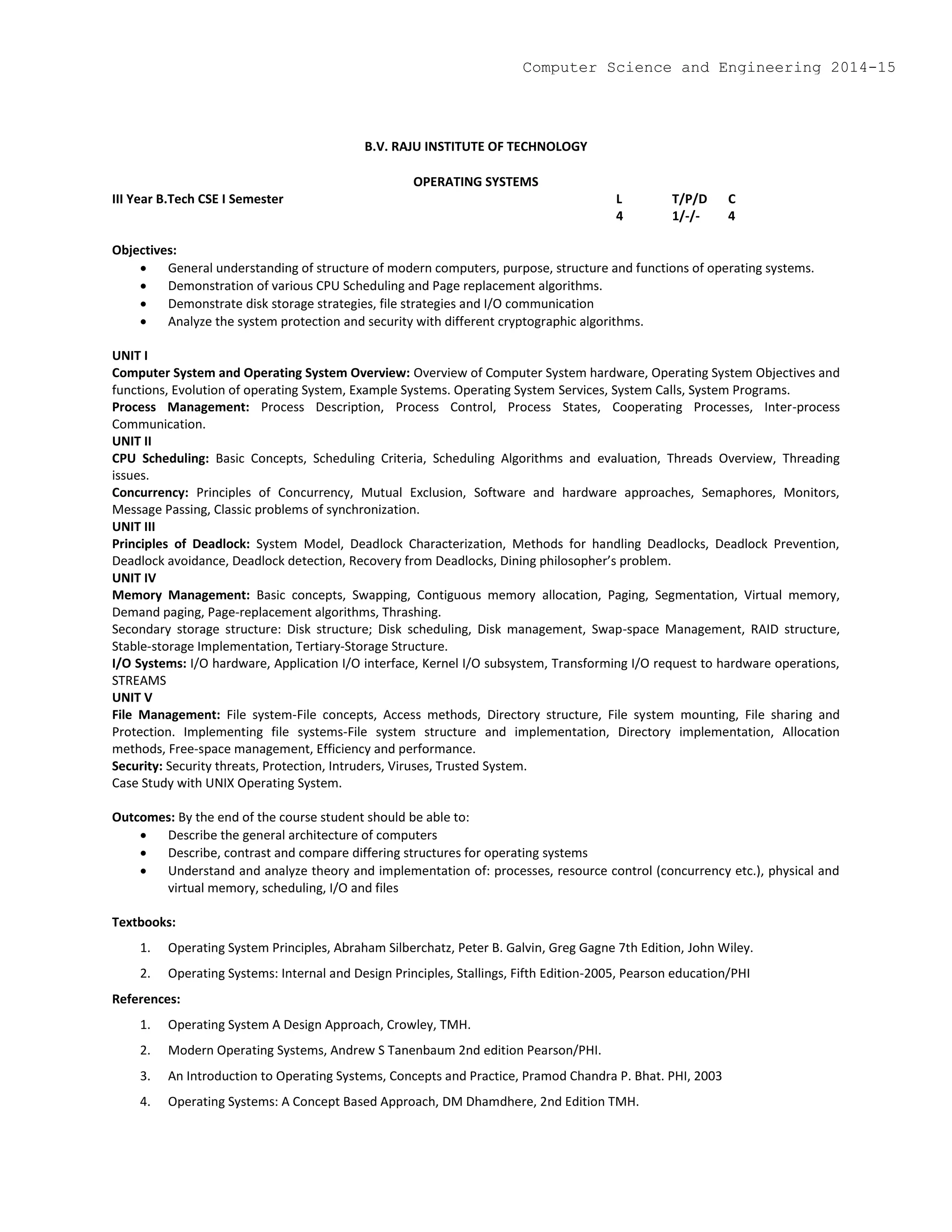
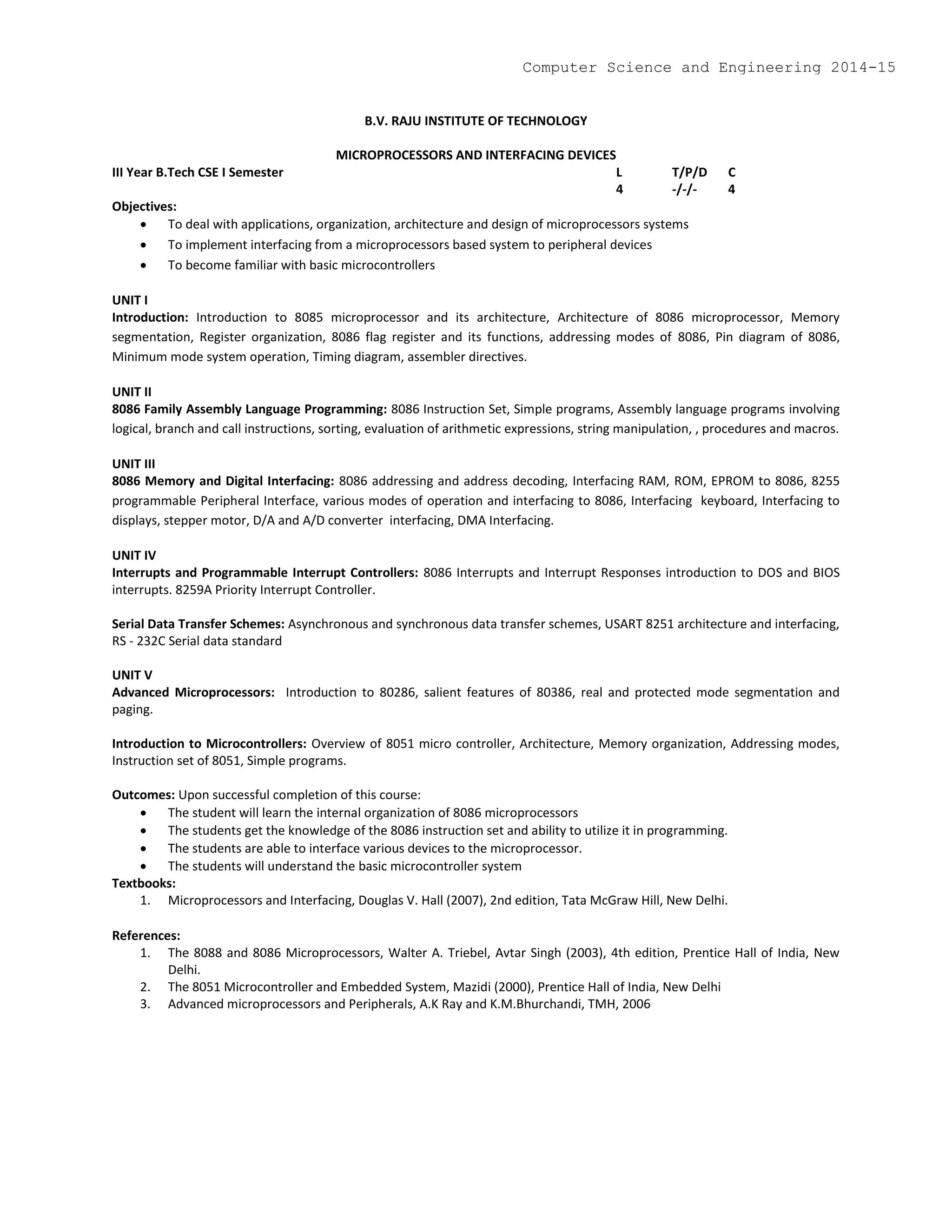
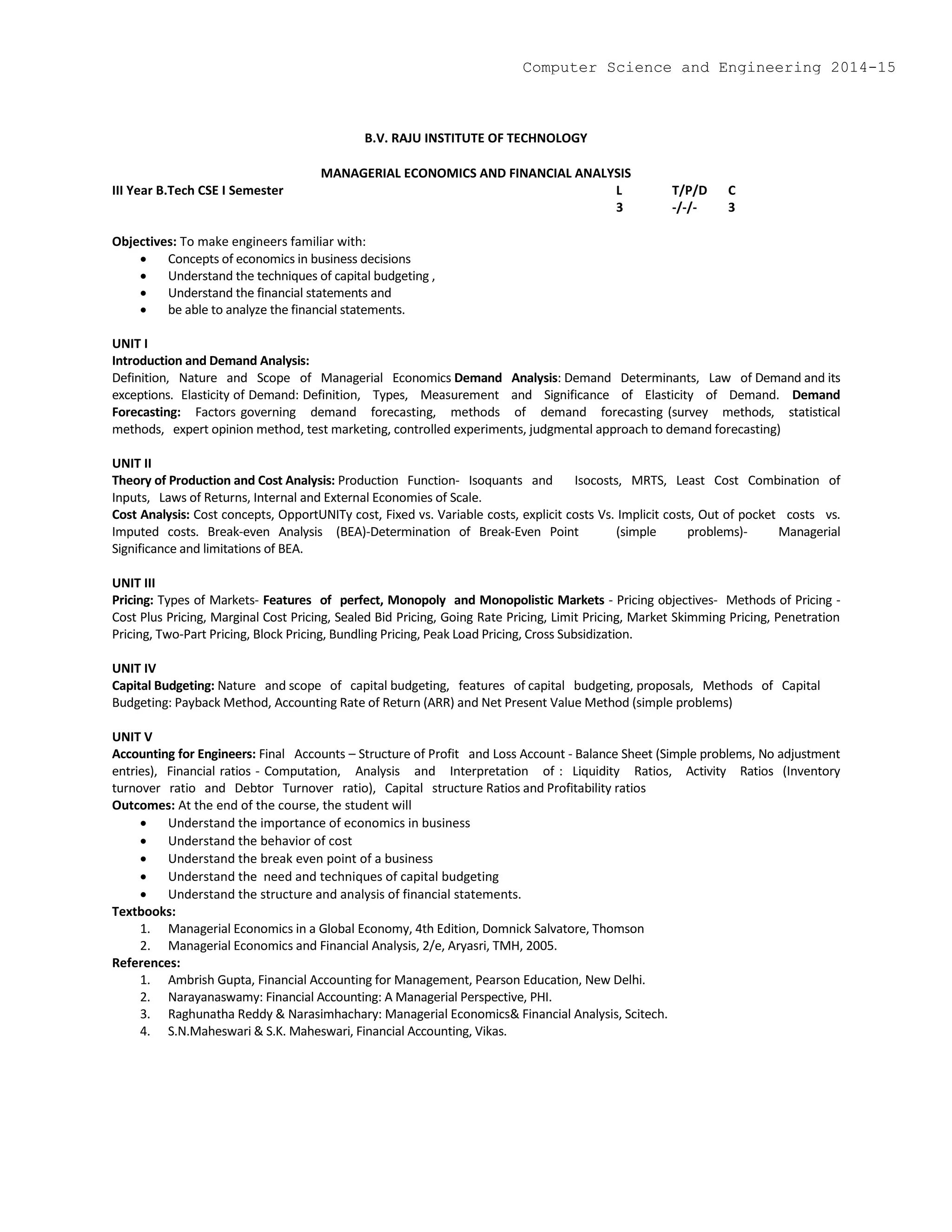
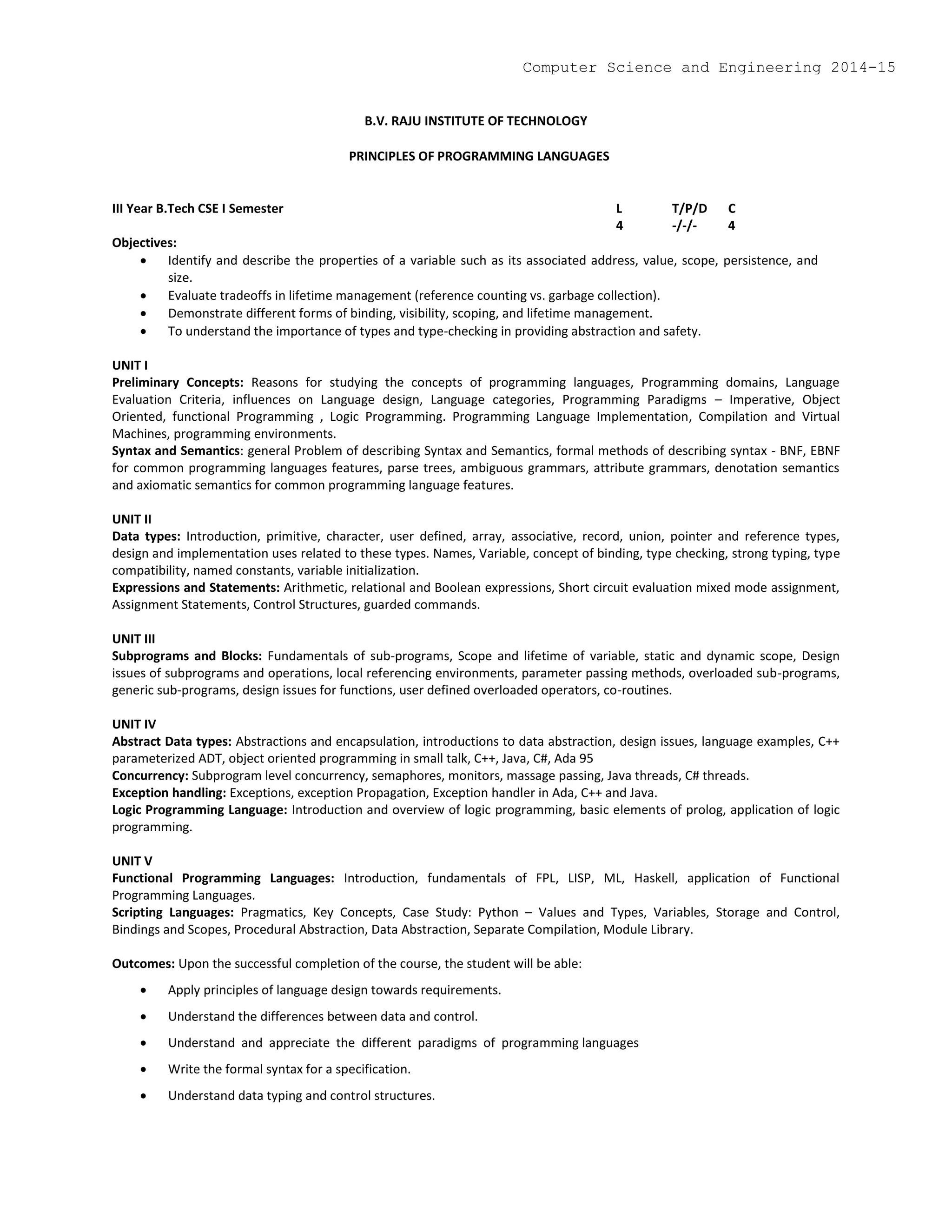
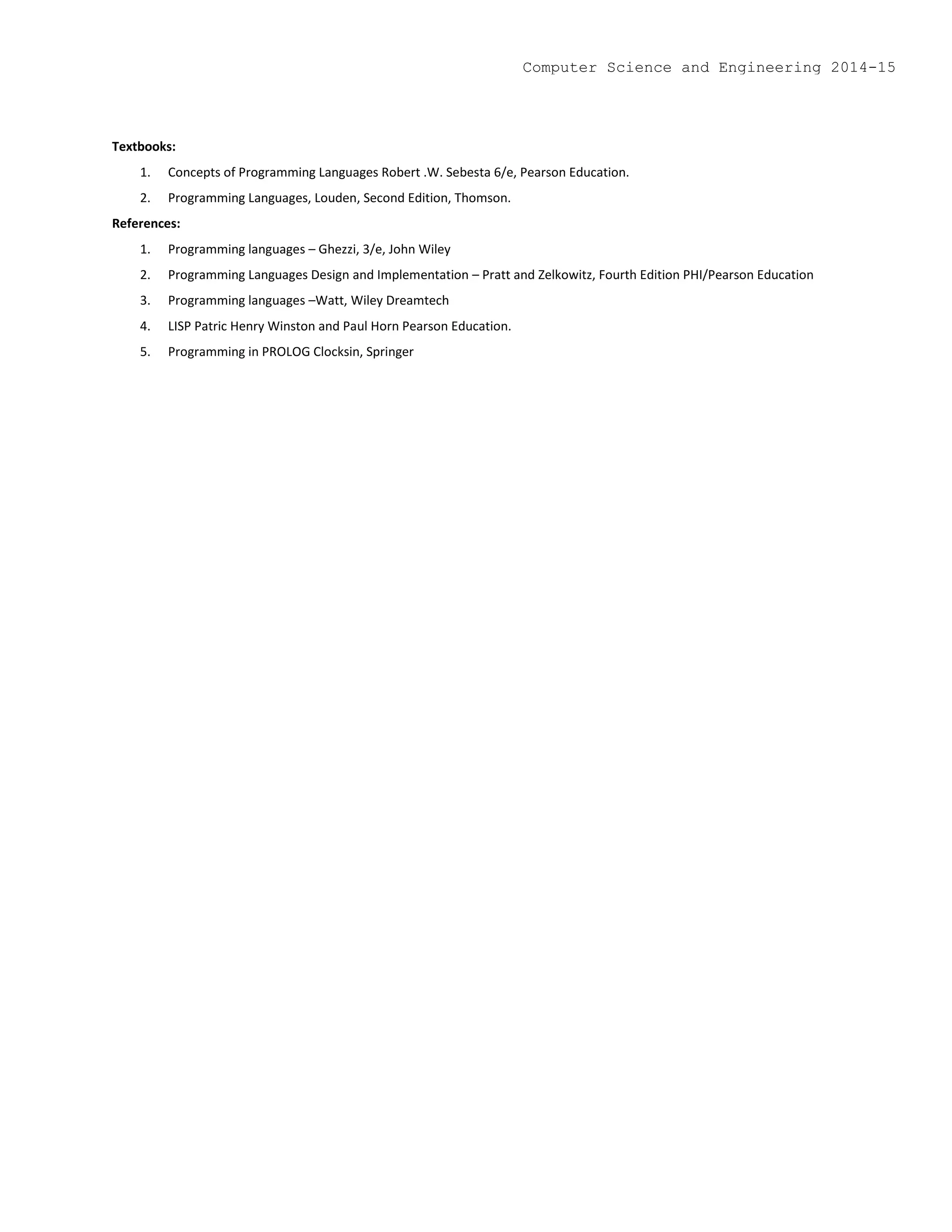
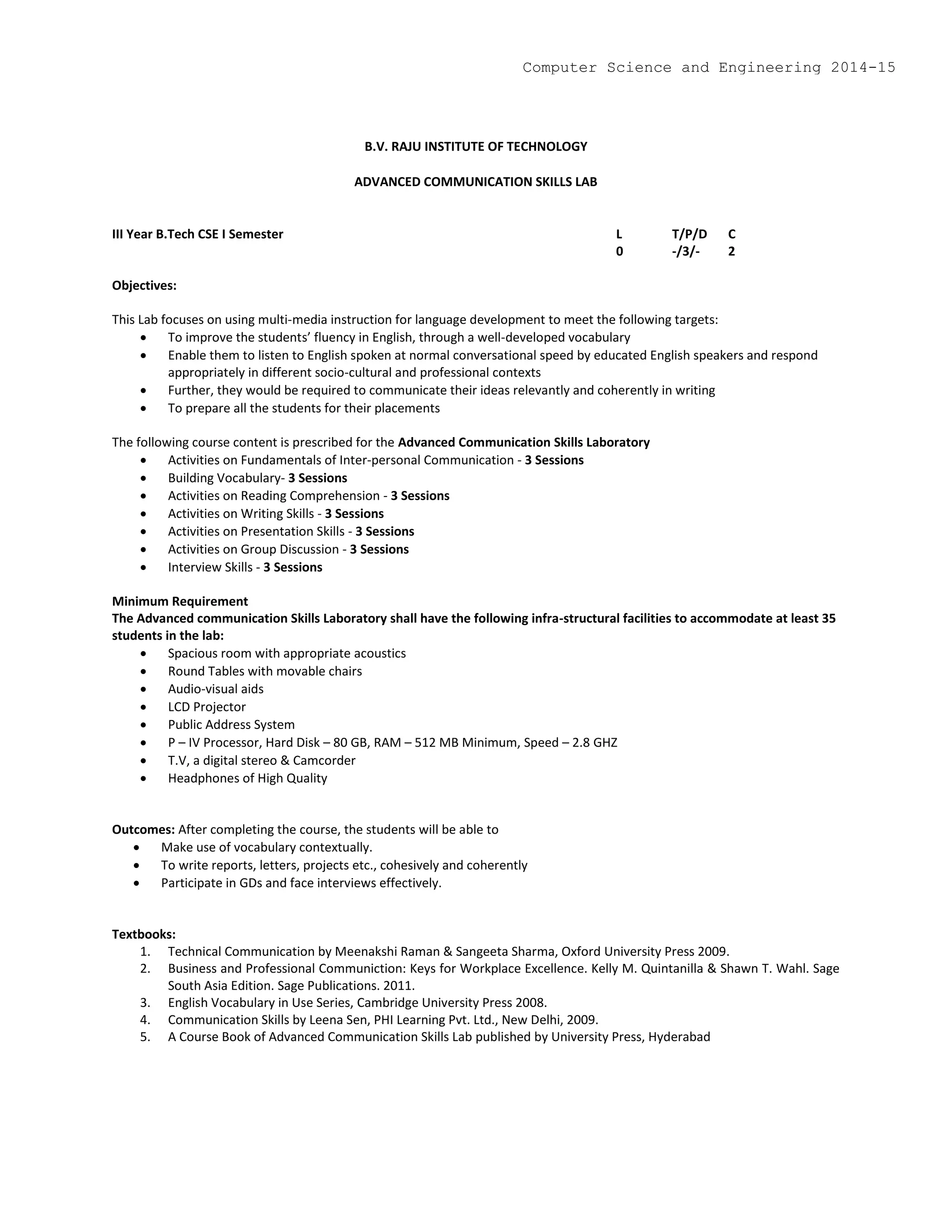
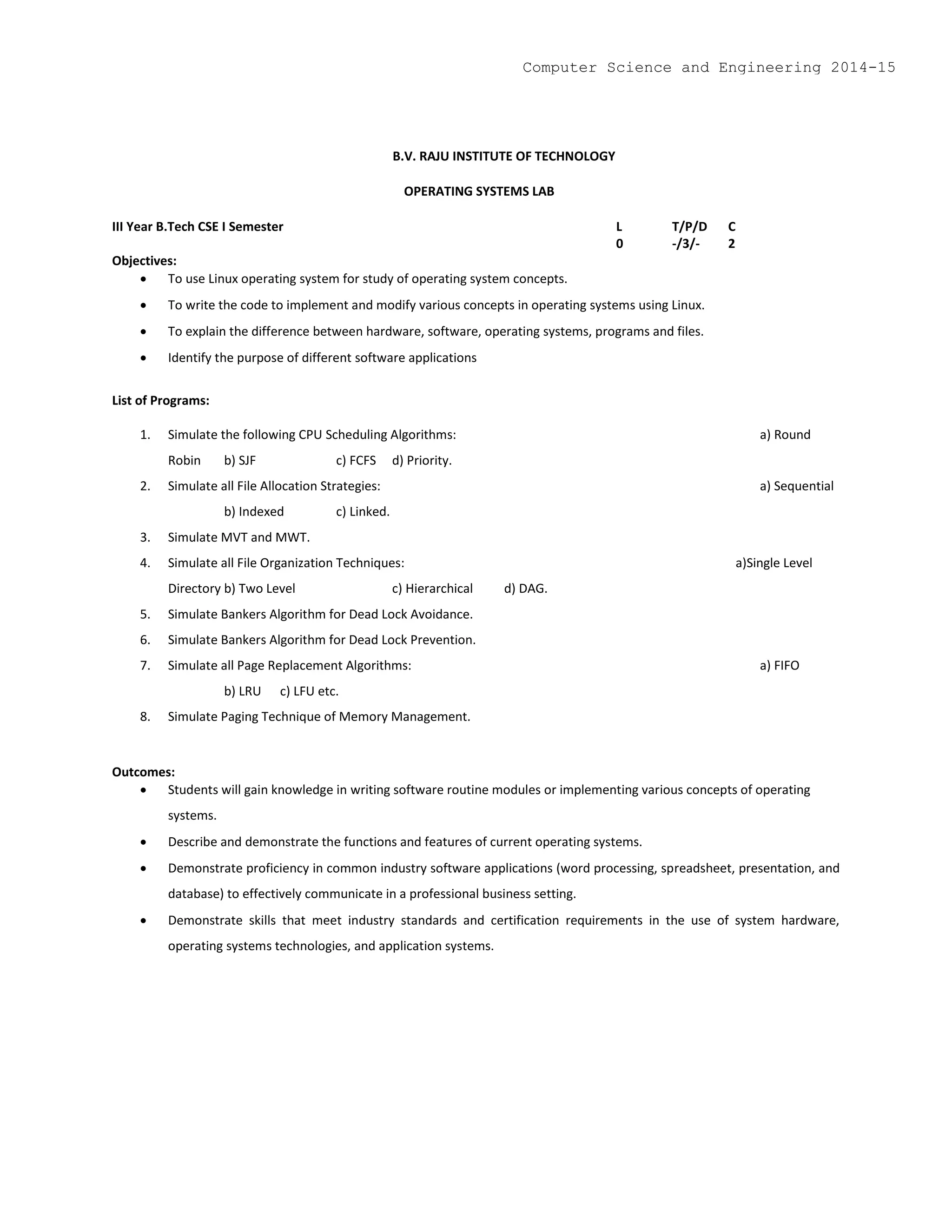
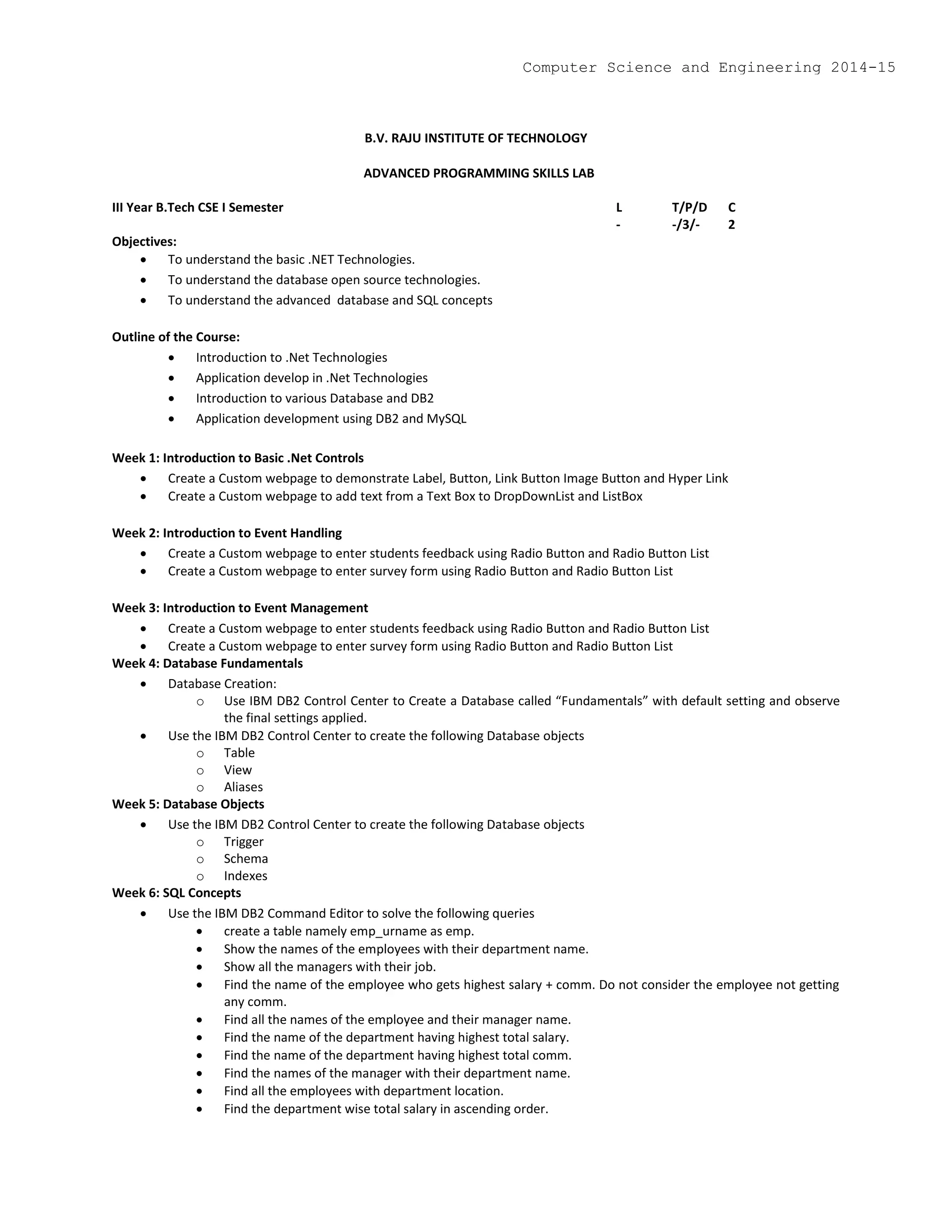
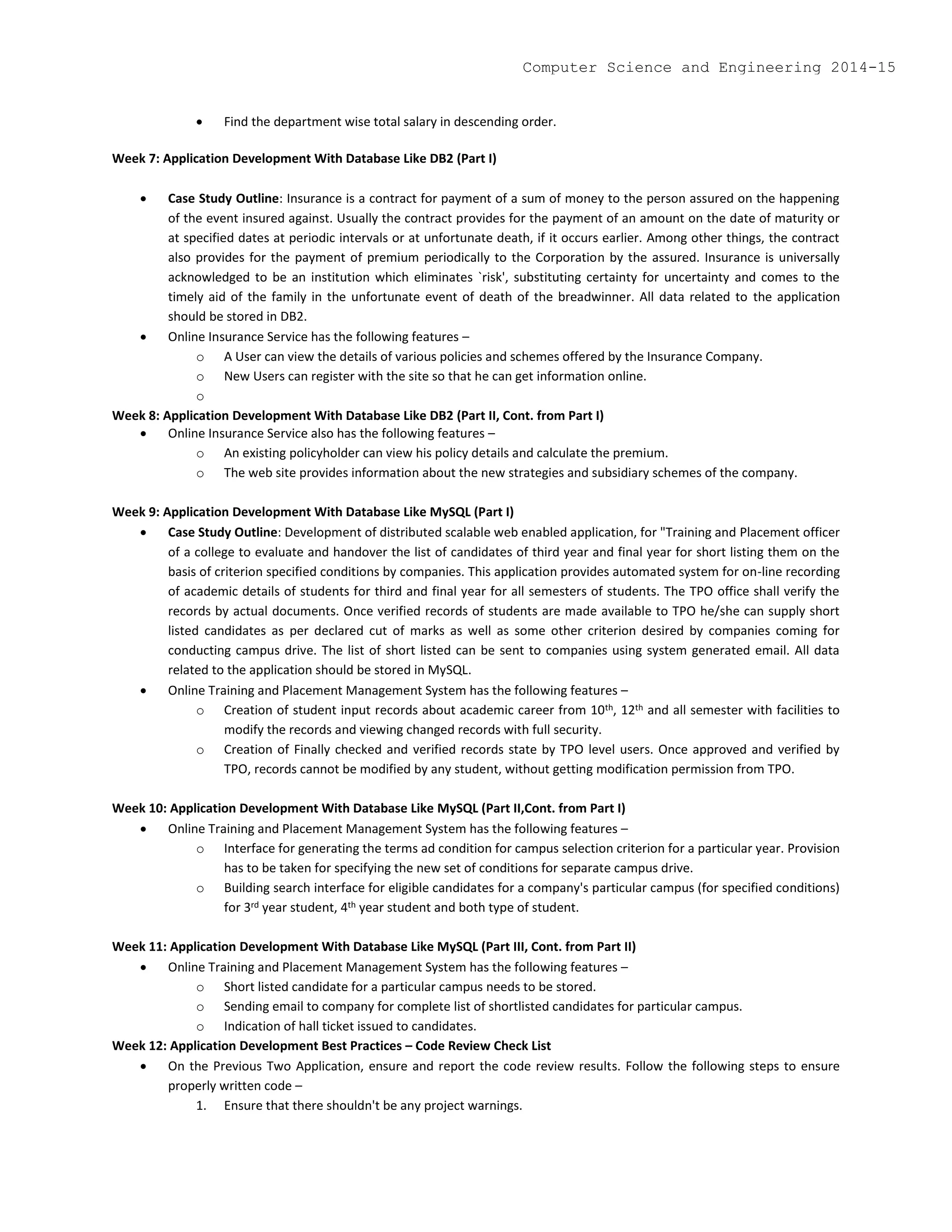
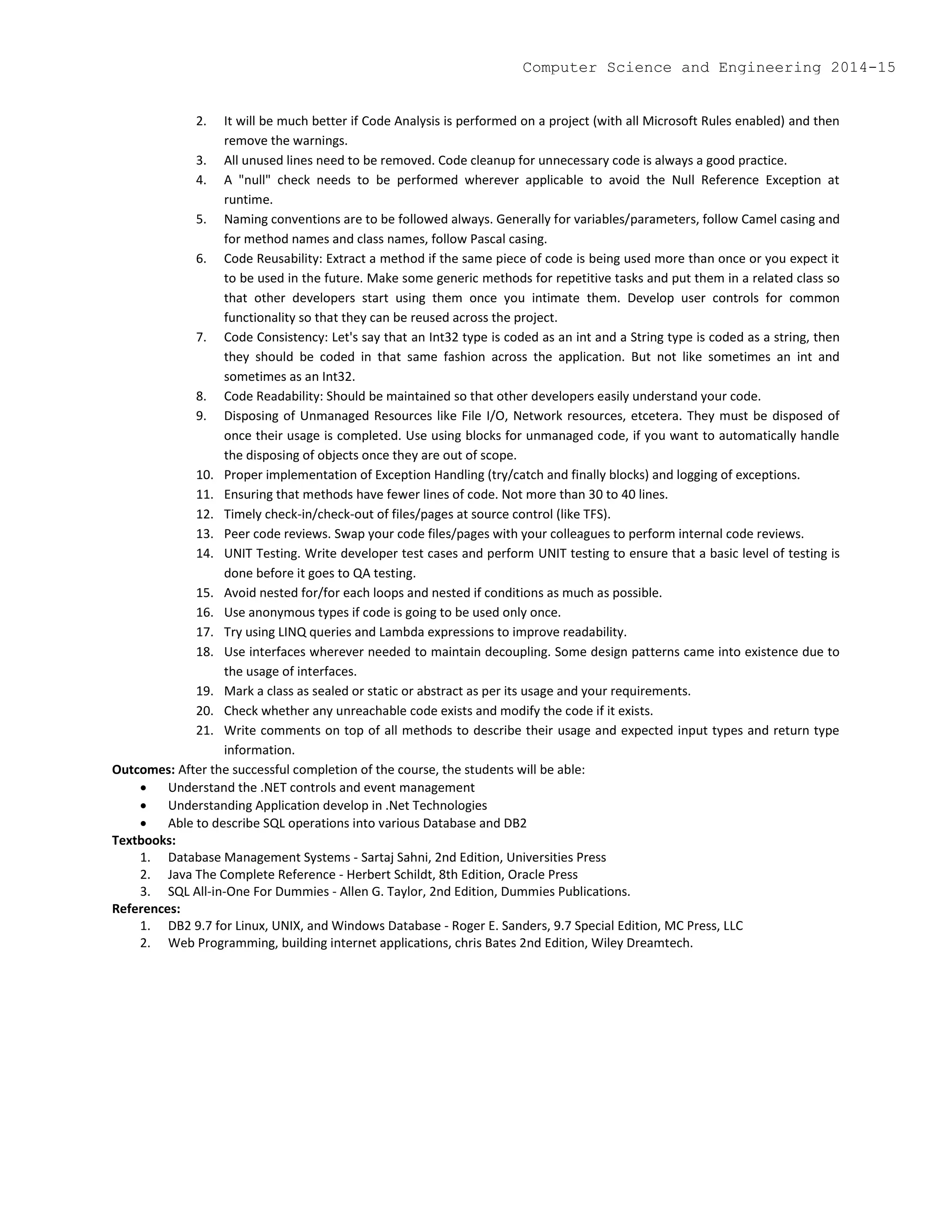
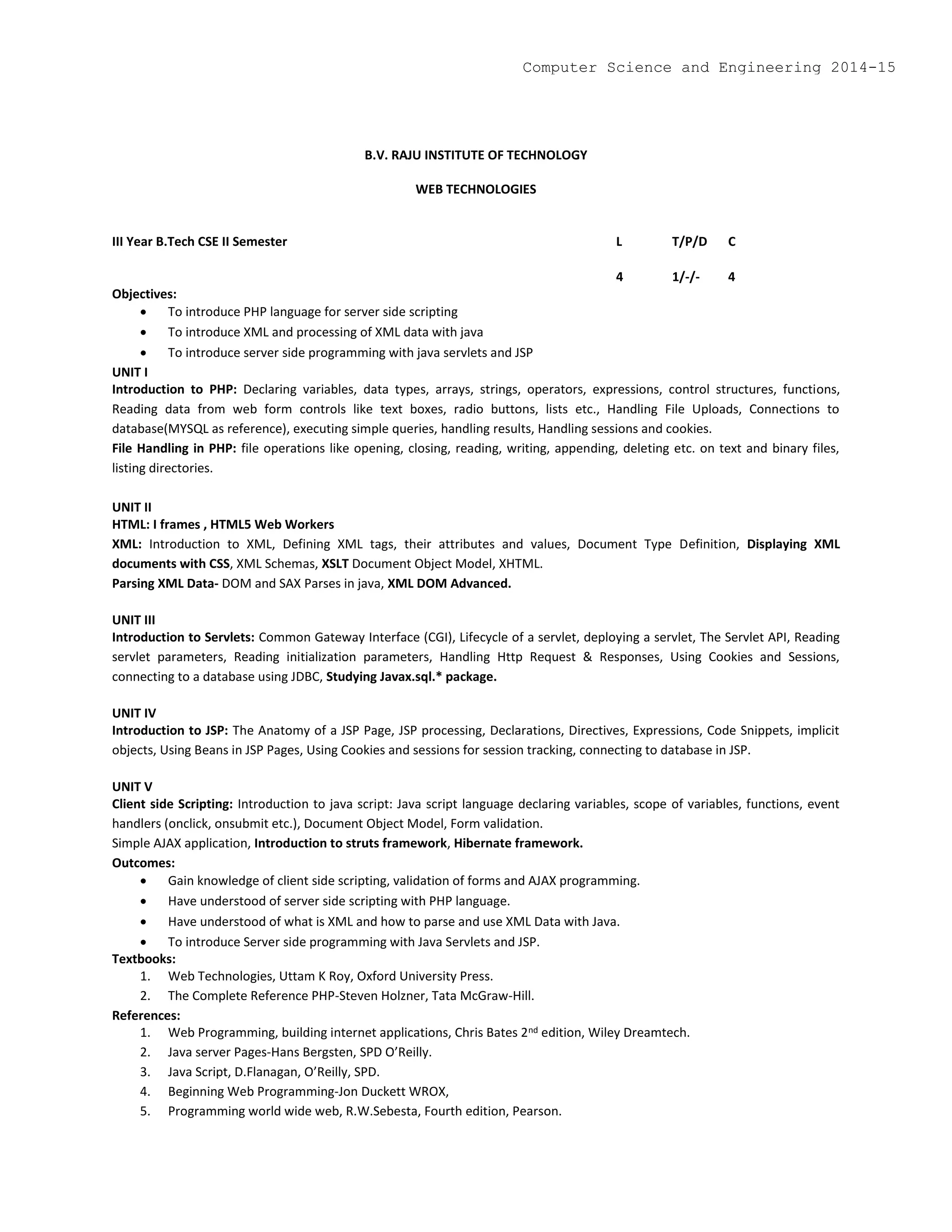

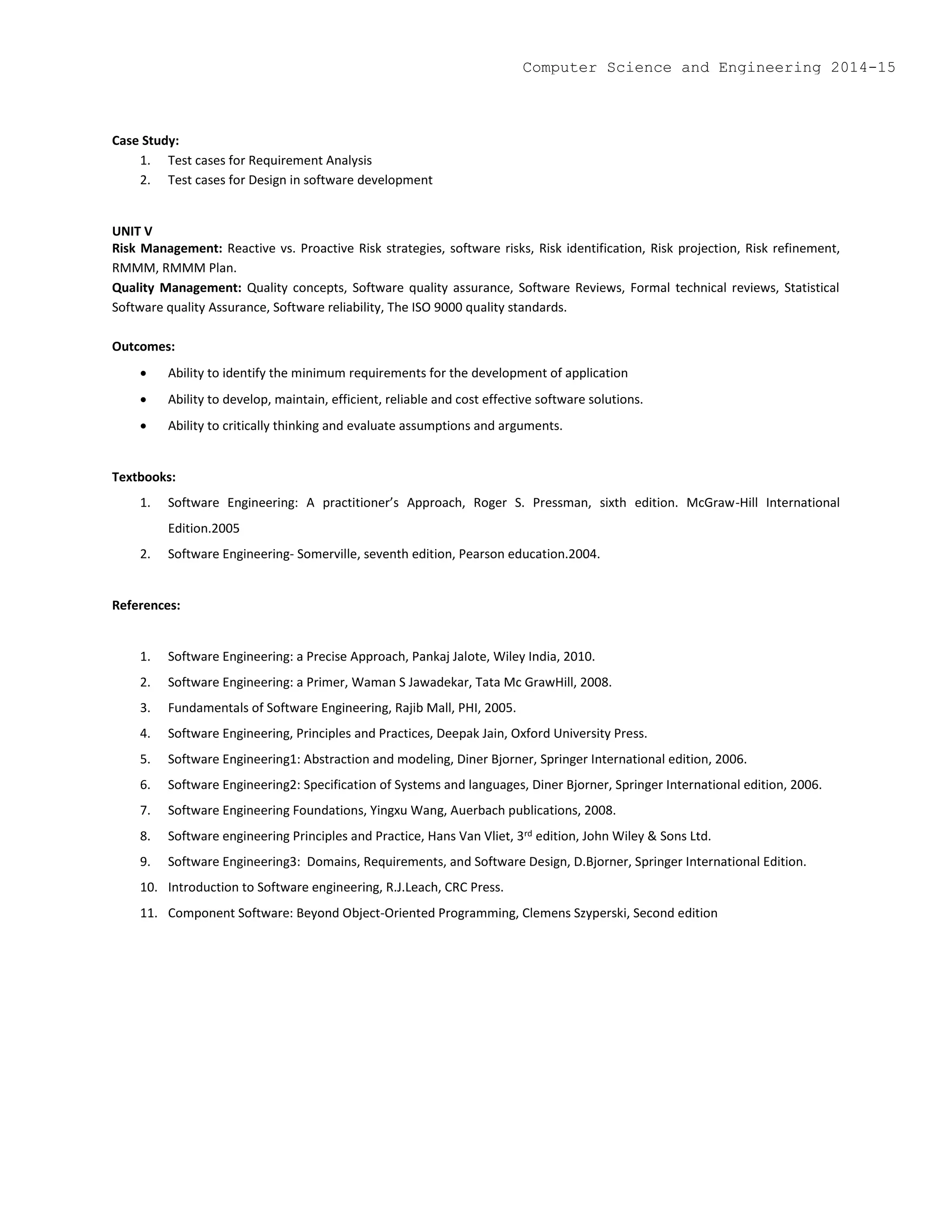
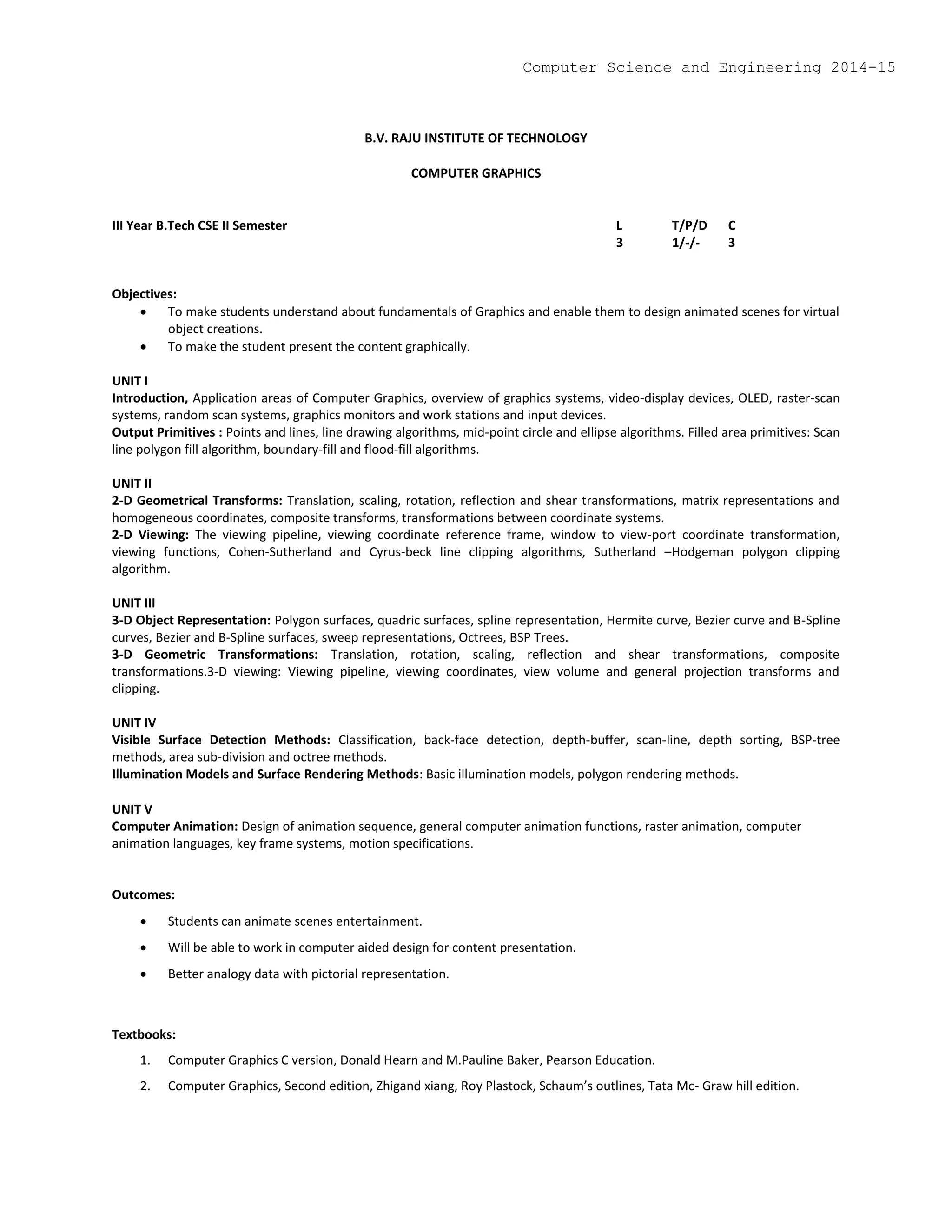
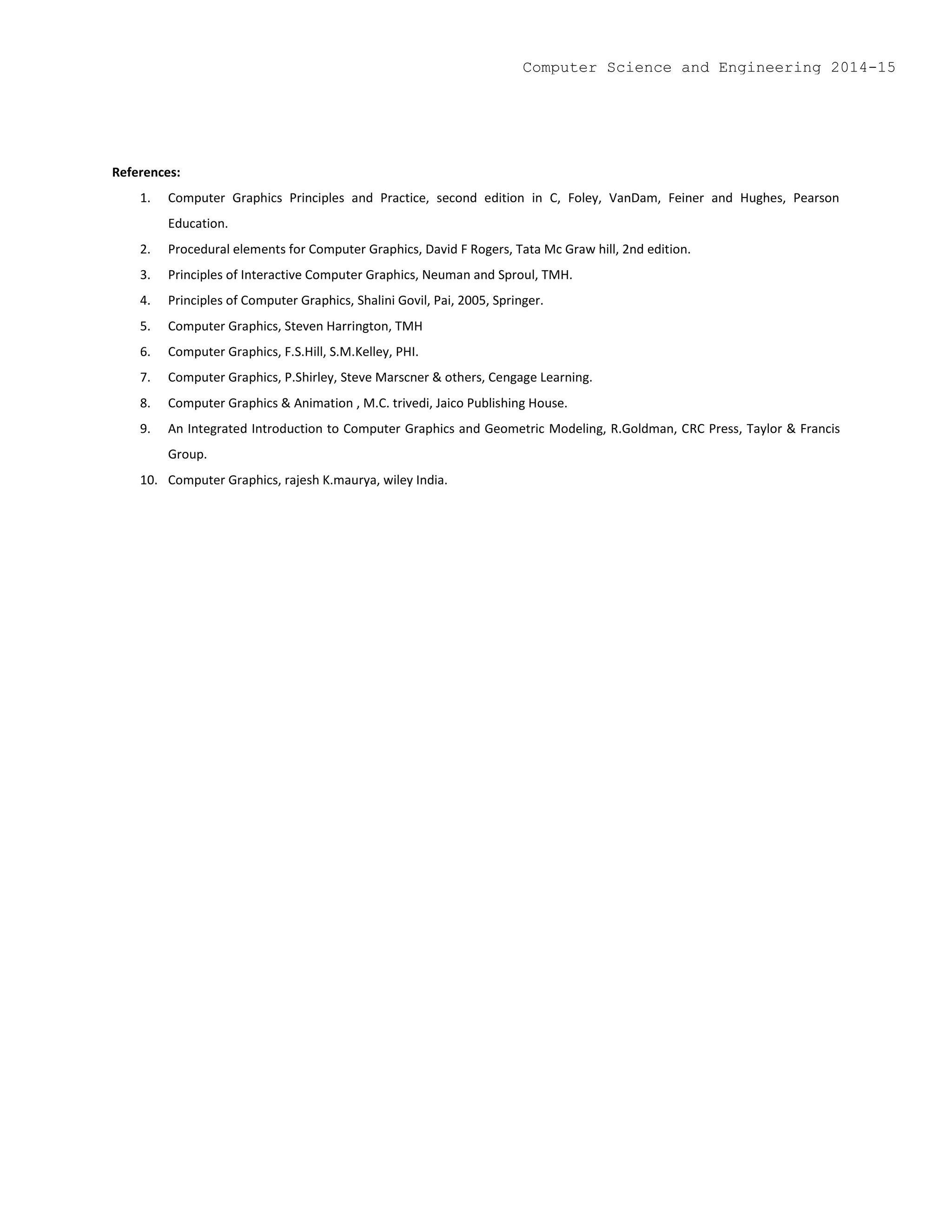
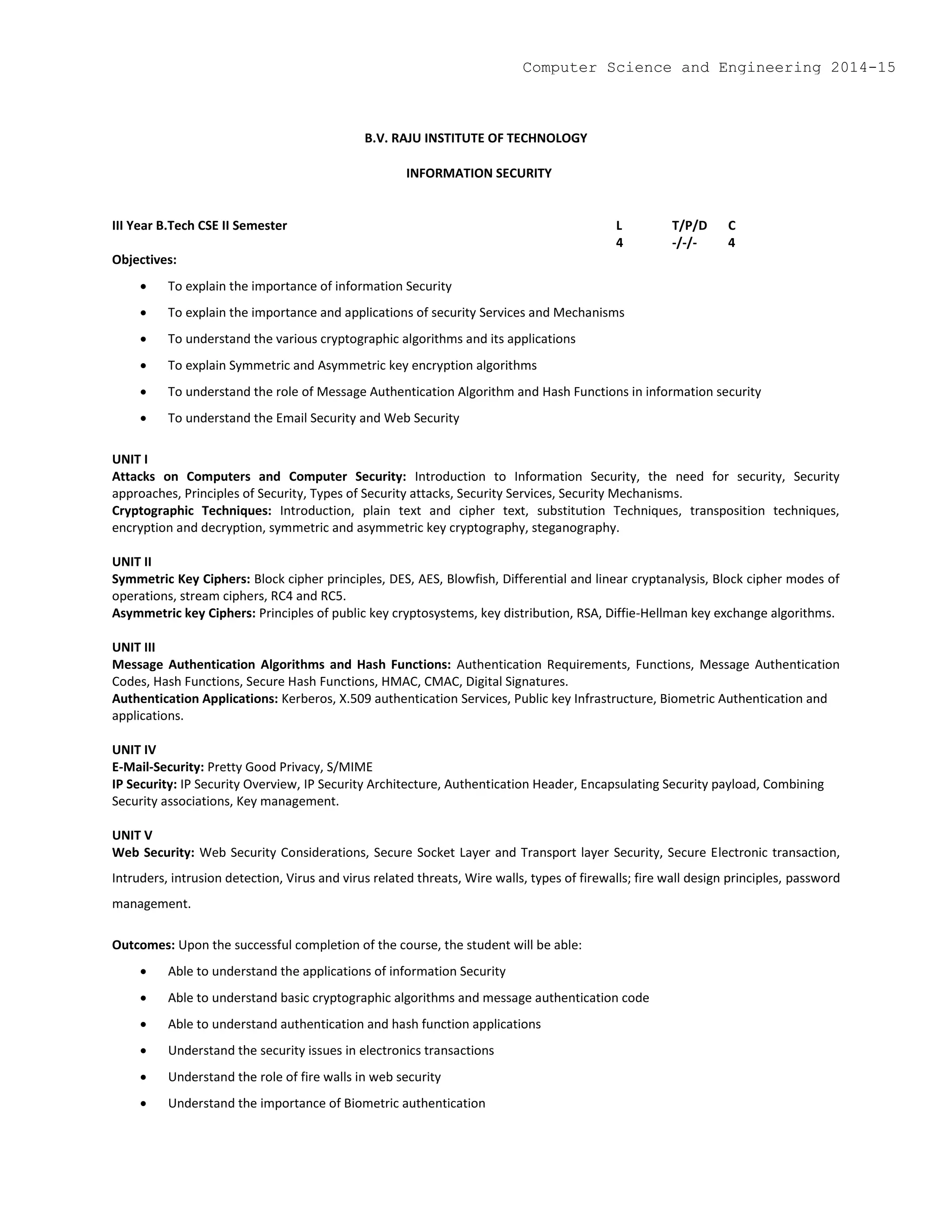
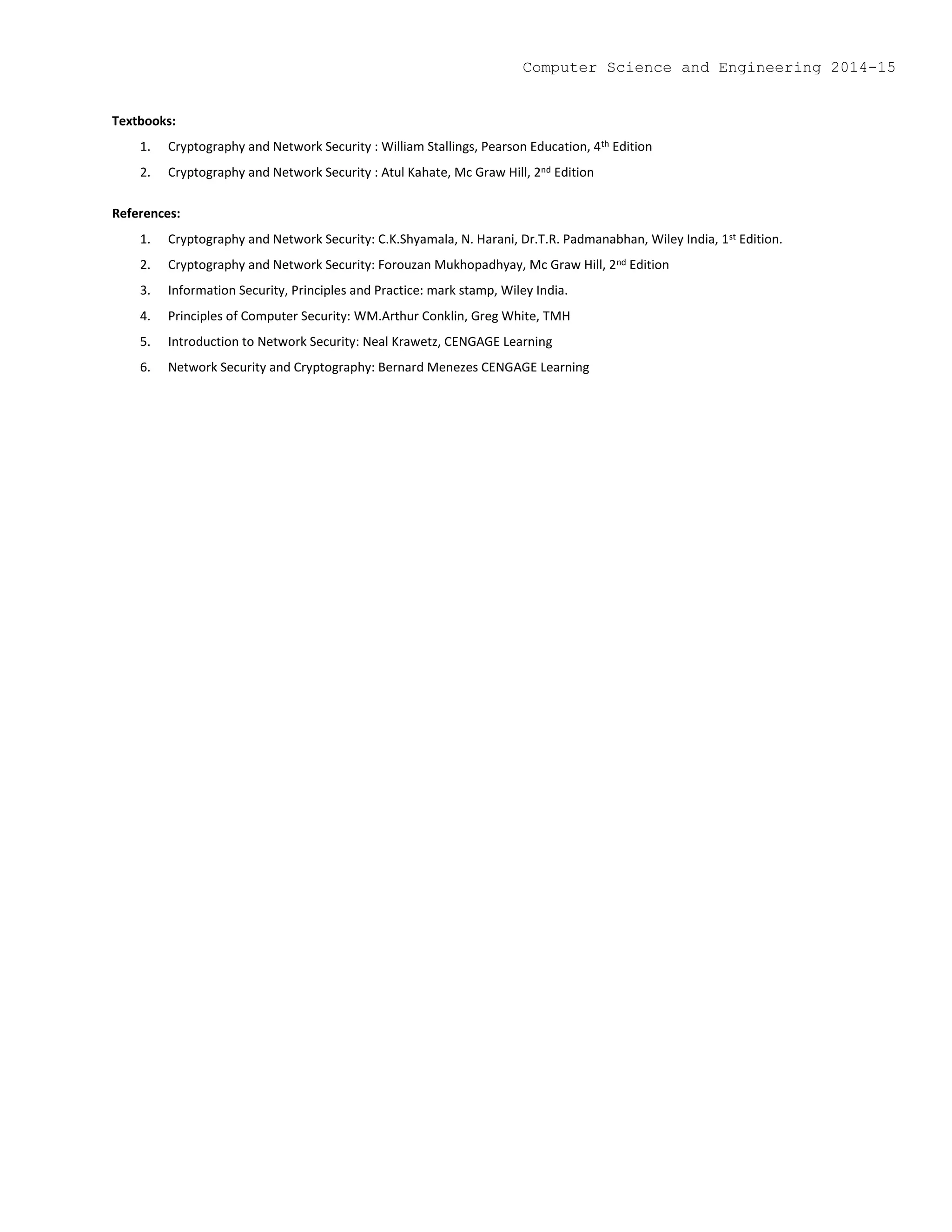
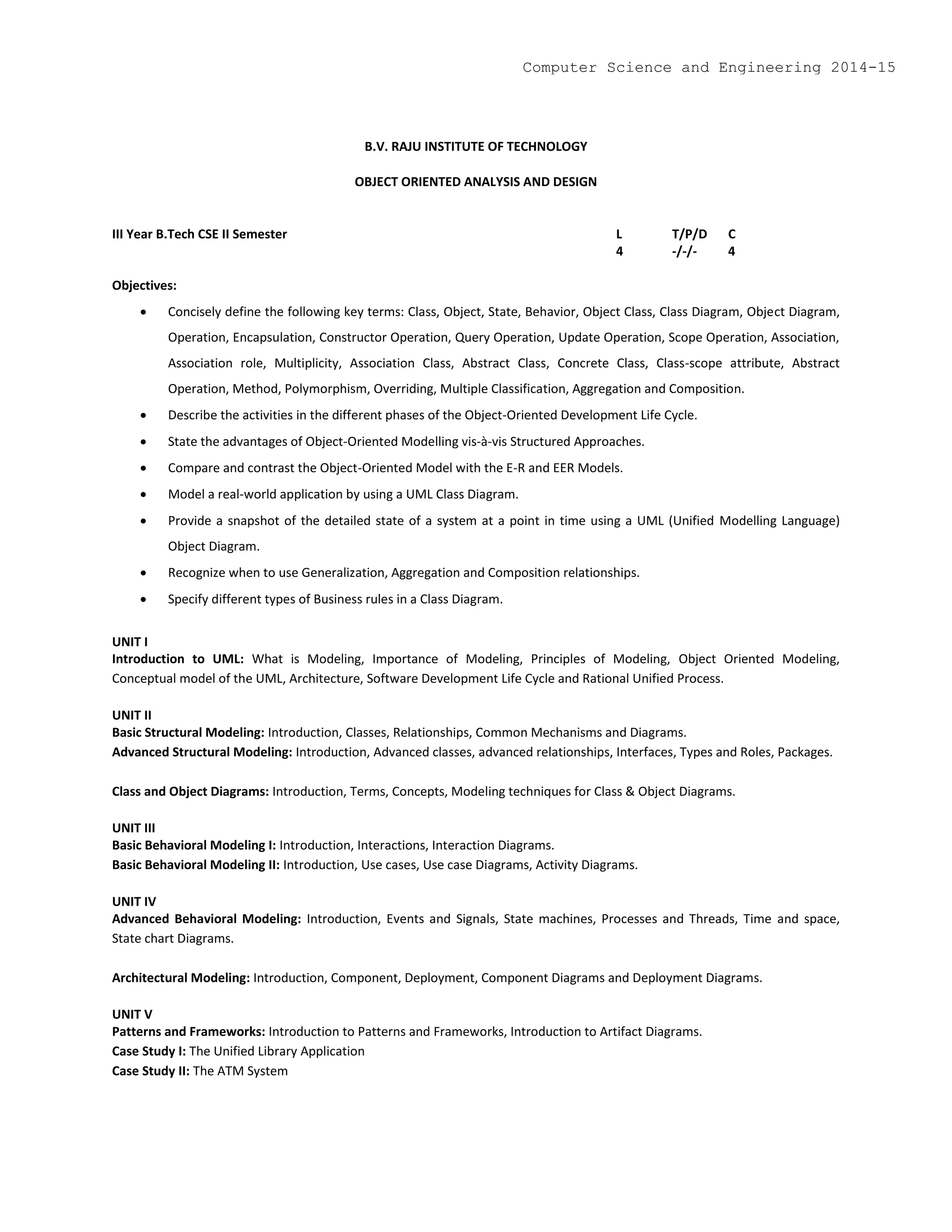

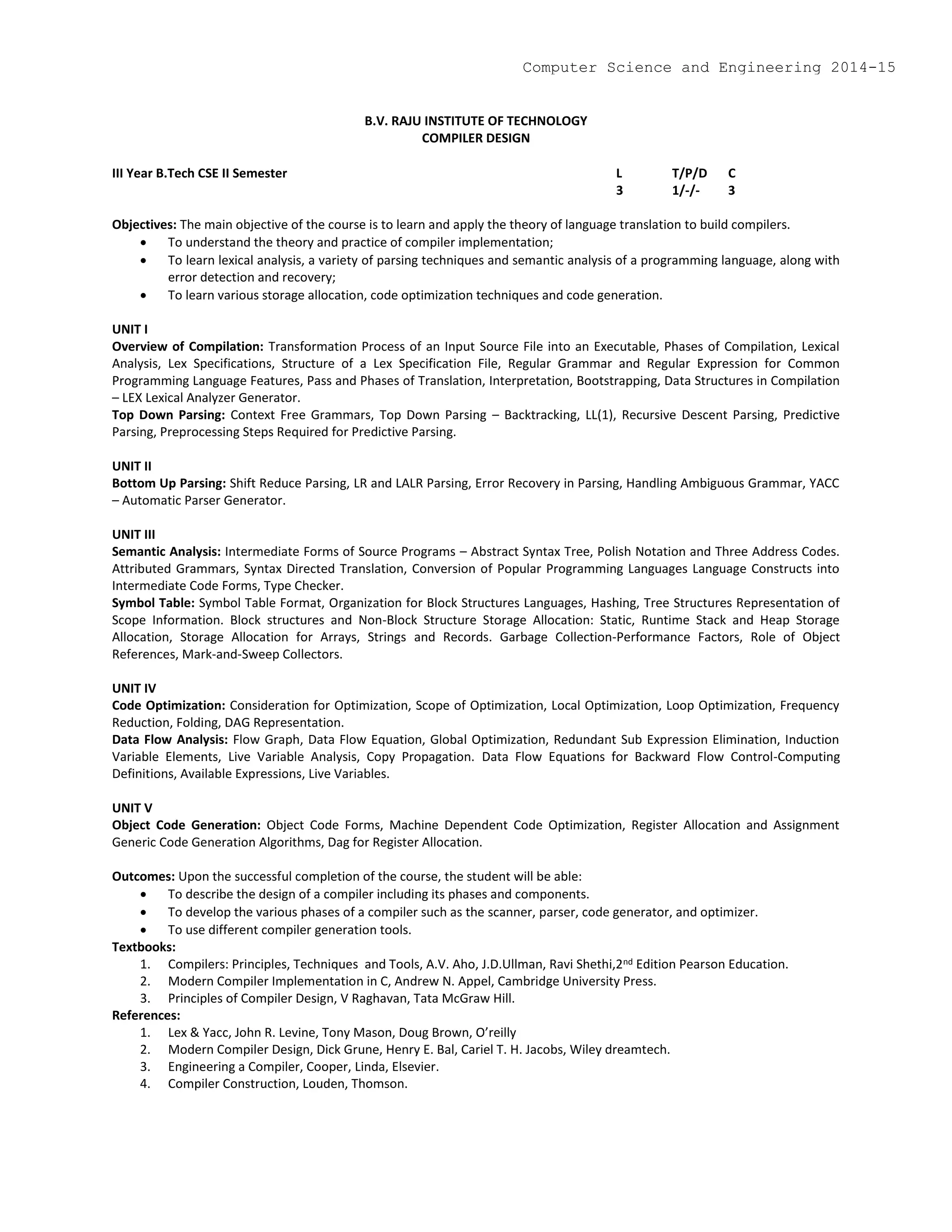
![B.V. RAJU INSTITUTE OF TECHNOLOGY
COMPILER DESIGN LAB
III Year B.Tech CSE II Semester L T/P/D C
0 -/3/- 2
Objectives:
To provide an understanding of the language translation peculiarities by designing a complete translator for a mini
language.
Recommended Systems/Software Requirements:
Intel based desktop PC with minimum of 166 MHZ or faster processor with atleast 64 MB RAM and 100 MB free disk
space.
C++ Compiler and JDK Kit.
Consider the following mini Language, a simple procedural high-level language, only operating on integer data, with a syntax
looking vaguely like a simple C crossed with Pascal. The syntax of the language is defined by the following BNF grammar:
<program> ::= <block>
<block> ::= { <variabledefinition> <slist> }
| { <slist> }
<variabledefinition> ::= int <vardeflist> ;
<vardeflist> ::= <vardec> | <vardec> , <vardeflist>
<vardec> ::= <identifier> | <identifier> [ <constant> ]
<slist> ::= <statement> | <statement> ; <slist>
<statement> ::= <assignment> | <ifstatement> | <whilestatement>
| <block> | <printstatement> | <empty>
<assignment> ::= <identifier> = <expression>
| <identifier> [ <expression> ] = <expression>
<ifstatement> ::= if <bexpression> then <slist> else <slist> endif
| if <bexpression> then <slist> endif
<whilestatement> ::= while <bexpression> do <slist> enddo
<printstatement> ::= print ( <expression> )
<expression> ::= <expression> <addingop> <term> | <term> | <addingop> <term>
<bexpression> ::= <expression> <relop> <expression>
<relop> ::= < | <= | == | >= | > | !=
<addingop> ::= + | -
<term> ::= <term> <multop> <factor> | <factor>
<multop> ::= * | /
<factor> ::= <constant> | <identifier> | <identifier> [ <expression>]
| ( <expression> )
Computer Science and Engineering 2014-15](https://image.slidesharecdn.com/pomvpdostmwxqolkezm2-signature-7b245c2e8b68e293f5ceb40da121ac2c5900225890272f0483201224b34d24c7-poli-160912120149/75/Computer-science-and-engineering-117-2048.jpg)
![<constant> ::= <digit> | <digit> <constant>
<identifier> ::= <identifier> <letterordigit> | <letter>
<letterordigit> ::= <letter> | <digit>
<letter> ::= a|b|c|d|e|f|g|h|i|j|k|l|m|n|o|p|q|r|s|t|u|v|w|x|y|z
<digit> ::= 0|1|2|3|4|5|6|7|8|9
<empty> has the obvious meaning
Comments (zero or more characters enclosed between the standard C/Java-style comment brackets / *...*/) can be inserted.
The language has rudimentary support for 1-dimensional arrays. The declaration int a[3] declares an array of three elements,
referenced as a[0], a[1] and a[2]. Note also that you should worry about the scoping of names.
A simple program written in this language is:
{
int a[3],t1,t2;
t1=2;
a[0]=1; a[1]=2; a[t1]=3;
t2=-(a[2]+t1*6)/(a[2]-t1);
if t2>5 then
print(t2);
else
{
int t3;
t3=99;
t2=-25;
print(-t1+t2*t3); /* this is a comment on 2 lines */
}
endif
}
1. Design a Lexical analyzer for the above language. The lexical analyzer should ignore redundant spaces, tabs and
newlines. It should also ignore comments. Although the syntax specification states that identifiers can be arbitrarily
long, you may restrict the length to some reasonable value.
2. Implement the lexical analyzer using JLex, flex or lex or other lexical analyzer generating tools.
3. Design Predictive parser for the given language
4. Design LALR bottom up parser for the above language.
5. Convert the BNF rules into Yacc form and write code to generate abstract syntax tree.
6. Write program to generate machine code from the abstract syntax tree generated by the parser. The following
instruction set may be considered as target code.
7. Design an Operator Precedence Parser for any Operator Grammar considering the Operator Precedence Relations
The following is a simple register-based machine, supporting a total of 17 instructions. It has three distinct internal storage
areas. The first is the set of 8 registers, used by the individual instructions as detailed below, the second is an area used for the
storage of variables and the third is an area used for the storage of program. The instructions can be preceded by a label. This
Computer Science and Engineering 2014-15](https://image.slidesharecdn.com/pomvpdostmwxqolkezm2-signature-7b245c2e8b68e293f5ceb40da121ac2c5900225890272f0483201224b34d24c7-poli-160912120149/75/Computer-science-and-engineering-118-2048.jpg)
